

Kedarnath Trek

Description
Reviews (4), things to take, available dates, include / exclude, kedarnath temple trek the india’s most popular destination in uttarakhand himalayas, complete information 2024 yatra trek .
Kedarnath Trek is a remote but highly celebrated pilgrimage site of the famous ‘Char Dham’ in the Rudraprayag district of Uttarakhand. At an astounding location of 3583m Kedarnath lies near Chorabari Glacier, the birthplace of Mandakini River and is surrounded by various snow-capped peaks. The famous Kedarnath Mountain also lies in the vicinity to the site of Kedarnath. The Hindu pilgrimage site is visited every year by thousands of devotees from all around India.
Many Peoples thinks the Kedarnath Trek and Kedarkantha Trek are the same but these both are different Treks and also located in different location. Kedarnath Trek located in Rudraprayag district and Kedarkantha Trek located in Uttarakashi district in Uttarkhand.
In local dialect ‘Kedarnath’ means ‘lord of fields’; according to a local legend it is believed that Lord shiva hid in an assumption of a bull trying to avoid the Pandavas. Bhima, one of the brothers from Pandavas, recognized lord Shiva and tried to capture the bull through its tail and hind legs. Just before Bhima could fully grasp the bull, it disappeared into the ground only to later appear in many forms across the region. The hump of this bull appeared in Kedarnath where it is believed that Pandavas built the temple and later worshipped it.
Kedarnath should not be mistaken as any easy trek, hikers not accustomed to long journeys and altitudes might face some problems, hence it is generally advisable that trekkers practice a reasonable amount of physical fitness.

Kedarnath Temple is a revered Hindu shrine located in the Rudraprayag district of Uttarakhand, India. Here are some of the highlights of the temple:
- Ancient Temple: Kedarnath Temple is one of the oldest temples in India, believed to have been built by the Pandavas during the Mahabharata era.
- Dedicated to Lord Shiva: The temple is dedicated to Lord Shiva, one of the most important deities in Hinduism.
- High Altitude: The temple is located at an altitude of 3,583 meters (11,755 feet) above sea level, making it one of the highest temples in India.
- Magnificent Architecture: The temple’s architecture is a beautiful blend of ancient and modern styles, featuring intricate carvings and a unique design.
- Unique Rituals: The temple has several unique rituals, including the Abhishekam ceremony, in which the idol of Lord Shiva is bathed with water, milk, and other offerings.
- Char Dham Yatra: Kedarnath Temple is one of the four shrines that make up the Char Dham Yatra, a pilgrimage tour that is considered one of the most sacred in Hinduism.
- Importance in Hindu Mythology: According to Hindu mythology, Kedarnath is one of the twelve Jyotirlingas, which are considered to be the most sacred abodes of Lord Shiva. It is also believed to be the place where Lord Shiva absolved Pandavas of the sin of killing their own brothers during the Mahabharata war.
Overall, Kedarnath Temple is a significant pilgrimage destination for devotees of Lord Shiva and Hinduism, and a beautiful site for tourists to visit and admire the ancient architecture and natural beauty of the surrounding region.
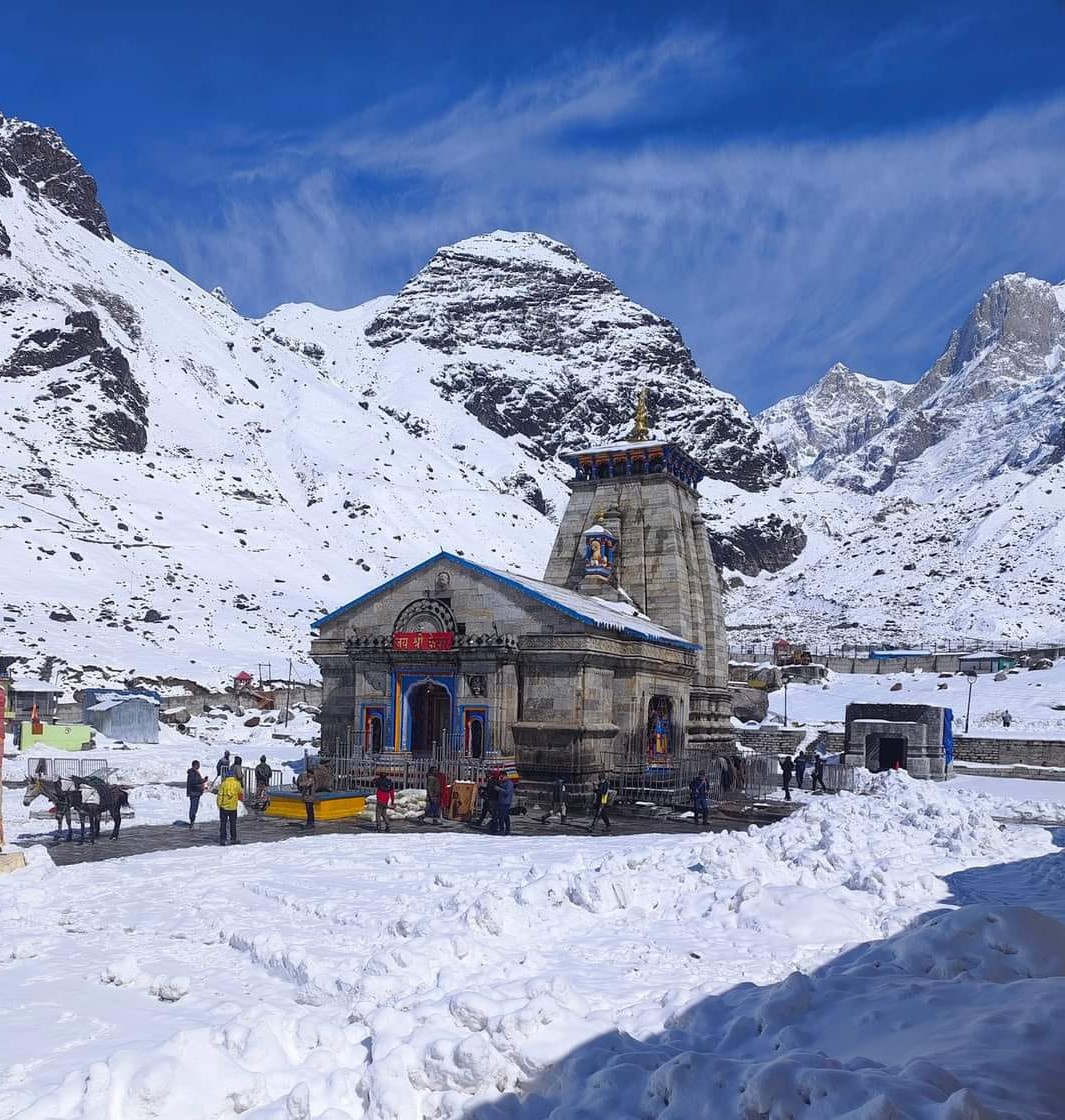
A special place of Lord Shiva in Himalayas of Uttarakhand
Kedarnath is a place where a special form of Lord Shiva is seen. Kedarnath Temple is one of the holy pilgrimage sites in the state of Uttarakhand, northern India, located on the banks of the Mandakini river and is a beautiful place in the lap of Himalayas, which is known as Kedarnath. The name of the historical heritage of this area is “Kedar Khand”. Kedarnath temple is a special part of Char Dham Yatra and Panch Kedar in Uttarakhand state and it is known among the 12 Jyotirlingas of Lord Shiva in India.
Kedarnath This is the most remote place among all the Char Dham sites where Shiva is the Taposthali, and is surrounded by snow-capped mountains that attract thieves and people to itself. Known for its ancient Shiva temple, a visit to Kedarnath Dham is a beautiful and mind-blowing exhilarating experience. Like other places, Kedarnath temple closes on the first day of Hindu month Kartik October-November and every year Baba Kedarnath ji’s door opens again for his devotees in Vaishakh April-May
Where do worship Lord Kedarnath in Uttarakhand ?
When Lord Shiva is shifted from Kedarnath to Ukhimath Dham, this Shiva temple remains submerged in snow for almost half a year 6 months. Where sages dedicate themselves to the feet of Baba Kedar even in the winter season, they worship him and do meditation yoga. According to a legend, it is said that Lord Shiva is seen in various forms such as arms in Tungnath temple, face in Rudranath temple, stomach in Madmaheshwar temple and head in Kalpeshwar temple with his hair. give. Kedarnath and the above four temples are considered as Panch Kedar. Where Lord Shiva is worshiped in all the Dhams.

Key Points of Kedarnath Trek
Some of the trek highlights of kedarnath trek.
Even before the trek starts trekkers are introduced to many lavishing vistas of Rishikesh, Devprayag and Rudrapryag. The magical confluence of Alaknanda & Bhagirathi at Devprayag and Alaknanda with Mandakini at Rudraprayag is an inner outer experience. Beautiful temples at every few kilometers clearly stamps that yes trekkers are indeed at the Land of Gods ‘Uttarakhand”.
The trek officially commences from Gaurikund covering many campsites along the way. Jungle Chatti, Bheembali, and Linchauli are some of the camps we pass during the trek. The entirety of journey trekkers would find devotees chanting and celebrating the trail. Echo of “Har Har Mahadev” fills you with an exceptional spiritual embodiment.
The final reach of Kedarnath is enough to overwhelm devotees with the chants of “Mahadev”. Temple covered in long ribbons of marigold garlands, long happy queues of devotees and the calmness of the Kedarnath. Everything about this place will capture you in its essence.
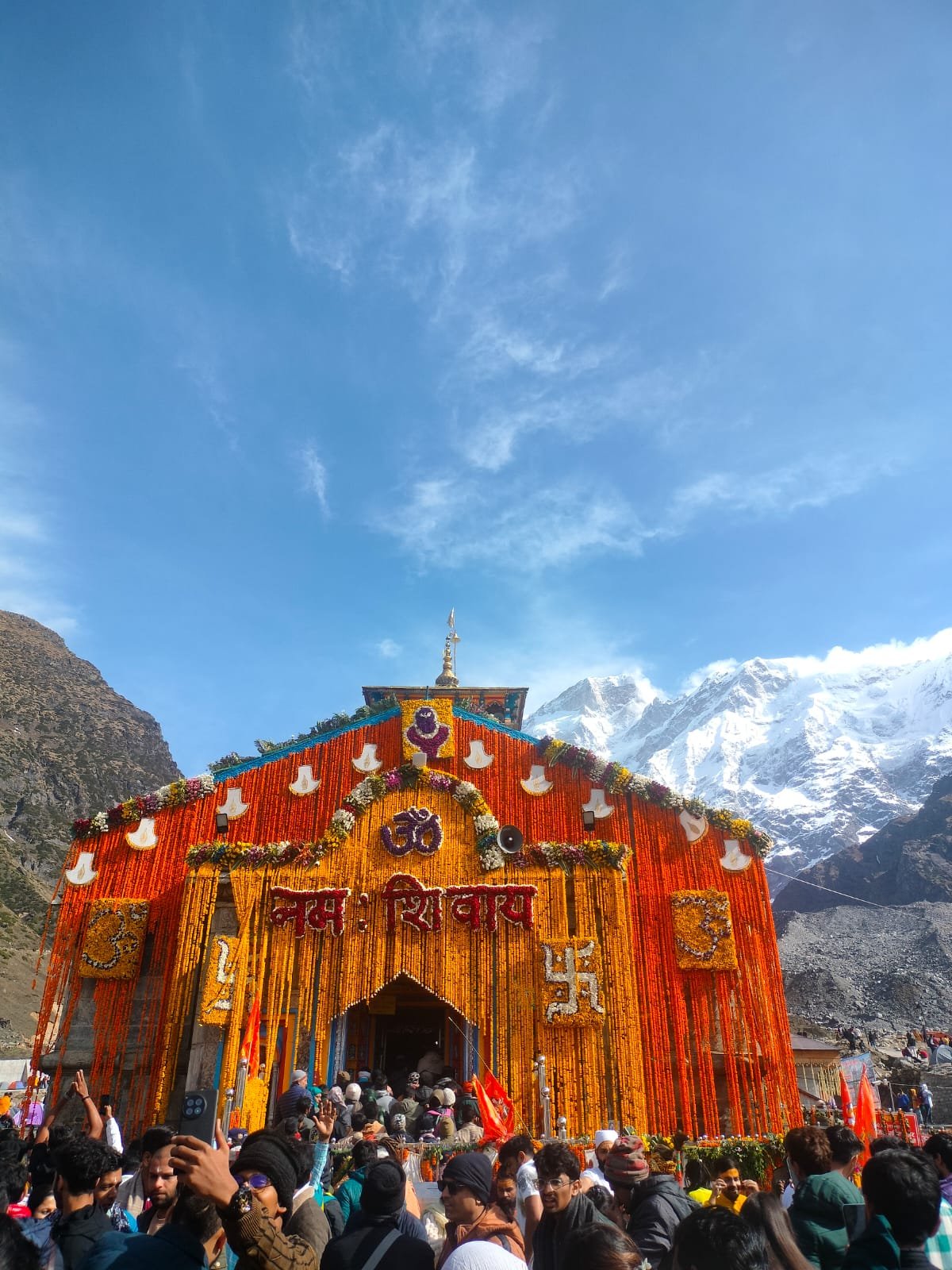
The trek to Kedarnath Temple offers several beautiful and scenic locations that you can visit along the way. Here are some of the most popular places to visit during the Kedarnath trek:
- Gaurikund: Gaurikund is the base camp for the Kedarnath trek and is located at an altitude of 1,982 meters (6,503 feet) above sea level. It is believed to be the place where Goddess Parvati meditated to win Lord Shiva’s heart.
- Rambara: Rambara is a picturesque location located around 7 kilometers from Gaurikund, and is an ideal place to take a break during the trek. It is situated at an altitude of 2,835 meters (9,301 feet) above sea level and is surrounded by beautiful valleys and waterfalls.
- Kedarnath Temple: Kedarnath Temple is the main attraction of the trek and is located at an altitude of 3,583 meters (11,755 feet) above sea level. It is one of the twelve Jyotirlingas in Hindu mythology and is considered to be one of the most sacred sites in India.
- Vasuki Tal: Vasuki Tal is a serene lake located around 6 kilometers from Kedarnath, and is surrounded by beautiful mountain peaks. It is situated at an altitude of 4,150 meters (13,615 feet) above sea level and is a popular spot for camping and trekking.
- Gandhi Sarovar: Gandhi Sarovar is a glacial lake located around 2 kilometers from Kedarnath, and is named after Mahatma Gandhi. It is situated at an altitude of 3,900 meters (12,795 feet) above sea level and offers stunning views of the surrounding mountain ranges.
Things to Look out for-
- Souvenirs from Rishikesh are great for memories.
- There are countless photogenic vistas, so we recommend that you prepare yourself for any aesthetic shoots. The best pictures are those taken under a blue sky with snow-covered peaks in the background.
- Explore the tranquility of this holy site and submerge yourself in “Baba Kedar’s” blessings.
The altitude covered in Kedarnath Trek
- Rishikesh-340 m
- Sonprayag-1829 m
- Gaurikund-1982 m
- Kedarnath-3583 m
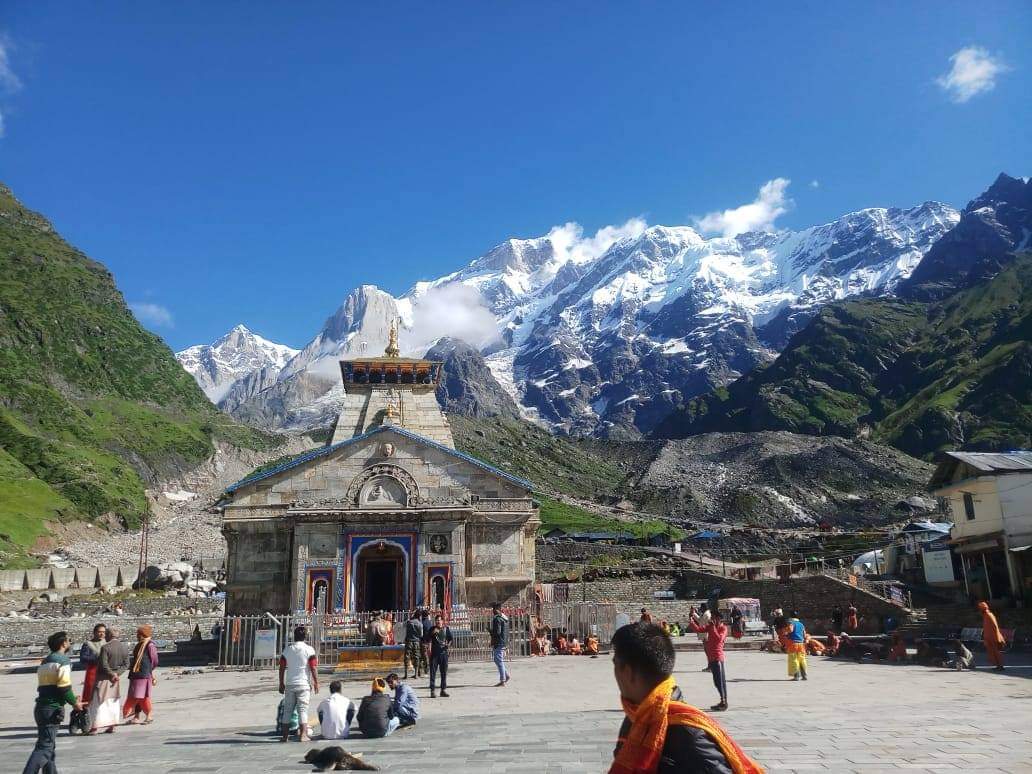
Best Time to Visit Kedarnath Trek & Opening or closing time every year
Kedarnath Temple, located in the Indian state of Uttarakhand, usually opens for visitors in late April or early May each year, and closes in the first week of November before winter sets in. The exact dates of opening and closing of the temple are determined by the Char Dham Devasthanam Board, which oversees the management of the temple. However, it’s important to note that the dates may vary slightly from year to year, depending on various factors such as weather conditions and other local considerations. If you are planning to visit the temple, it’s a good idea to check with the official website of the Char Dham Devasthanam Board or local authorities for the exact dates of opening and closing before making travel arrangements.
Kedarnath temple is best visited during the summer months of April to June. and September to Last October. Families and friends can enjoy the mild temperatures of these months. The unfavorable temperatures and precipitation make this trek a per and post monsoon season trek. Temperatures typically range from 15 to 20 degrees Celsius during the day, with substantially colder nights.
The most popular time to visit Kedarnath Temple is during the Char Dham Yatra season, which typically runs from April/May to October/November, depending on the weather conditions. During this time, the roads leading to Kedarnath are open, and the temple is easily accessible.
To reach Kedarnath from Haridwar, you can take a shared taxi or bus to Gaurikund, which is the base camp for the trek to Kedarnath. The trek is approximately 14 kilometers long and takes around 6-8 hours to complete, depending on your pace and physical fitness level. Along the way, you will pass through several scenic locations, including waterfalls, lush forests, and picturesque valleys.
During the Char Dham Yatra season, there are several facilities available for pilgrims, including accommodation options, medical facilities, and food stalls. It is advisable to carry warm clothing, sturdy trekking shoes, and basic first aid supplies when trekking to Kedarnath, as the weather can be unpredictable and the terrain can be challenging.
Overall, visiting Kedarnath during the Char Dham Yatra season can be a memorable and spiritually uplifting experience, as you will be part of a large community of devotees who are all journeying towards a common goal.
1) Is it safe?
2) Difficulty level
3) Weather conditions
4) Things to carry
5) Connectivity and transaction
6) How to reach
7) Short Itinerary
Is Kedarnath Trek is safe?
Set amidst the high altitude ranges, concerns regarding Kedarnath Trek safety are undeniably very valid questions. Yes the trek to Kedarnath is indeed very safe and reliable, new trails and much clearer safety protocols are sure to easy anyone’s concern.
Difficulty level in Kedarnath Trek
Because the top is relatively high in elevation for any beginner level trekkers we strongly recommend a reasonable level of physical fitness. We advise trekkers to physically and mentally prepare themselves prior to this trek.
Any medical assistance that is required will be provided at any point of the journey; however, trekkers must consult their professional care before beginning any trek. We also strongly advise trekkers to learn about altitude sickness and to notify our teams as soon as any symptoms appear.
Weather conditions
Weather conditions depend on the time of the year trekkers are travelling. In the months leading up to and following the monsoon season, the daytime temperatures are moderate, but the nighttime temperatures are significantly lower. Monsoons receive moderate to heavy rainfall.
Short itinerary of Kedarnath Trek
Day 1 Drive from Haridwar via Rishikesh to Guptkashi/ Sonprayag 202 km by taxi (1982 m overnight stay hotel
Day 2 Early Morning 3:00 am Drive from Guptkashi/ Sonprayag to Gaurikund same day trek to Kedarnath temple 15 km (8/9 hours) (3553 m) overnight stay Hotel/Dormantory
Day 3 After Arti Darshan trek from Kedarnath to Gaurikund same day drive to Sonprayag/Guptkashi over night stay Hotel
Day 4 Drive from Sonprayag to Haridwar via Rishikesh 202 km
Note: – Our service will remain from Rishikesh to Rishikesh – for more details please check includes or excludes
Things to carry in Kedarnath Trek
1) Because nights at elevations tend to be considerably colder, we suggest having well-graded, warm and comfortable clothing along with good quality shoes.
2) Despite the fact that we handle medical crises, we urge individuals to keep their emergency kits at hand in any case of personal underlying illnesses.
3) Since the journey provides you with a picturesque view of many peaks, don’t forget to bring your camera along with extra batteries.
4) Our staff will consult with fellow trekkers about their luggage and, if lacking, will assist trekkers in obtaining any necessary equipment. Only the relevant luggage should be brought, as a result.
Other trekking Essentials-
Connectivity and Transactions
1) Because connectivity along the route is unpredictable, we urge people to do all of their work ahead of time.
2) Last ATM transactions available will be at Gaurikund but we recommend travelers to collect cash beforehand or while in Rishikesh as ATMs available at other places might not dispense cash at times.
How to Reach Kedarnath Trek
If you are travelling from any metropolitan city in India or from outside India, getting to the capital city of Delhi may be the first and most important step. All major modes of transportation, such as air, road, and rail, can take you to Delhi.
Rishikesh is connected to most major cities in India via all chief modes of transportation. Trekkers could perhaps conduct extensive research for their direct mode of transportation to ensure a much smoother arrival.
By air – Jolly Grant Airport is the nearest airport to Rishikesh. It is well connected to Delhi and many chief cities with daily flights. How to reach Rishikesh from Delhi
By road -Delhi has direct road routes to Rishikesh. Trekkers will have to book either a bus or private cabs. Prior booking for cabs and buses are easily available at various sites.
Delhi> Rishikesh >Sonprayag>Gaurikund
By railway – Nearest Railway station to Rishikesh will be Rishikesh Railway station . Since Rishikesh is connected to all major railway routes, trekkers can opt for a direct route or via Delhi. They can also opt for direct trains to Dehradun or Haridwar and the take cab or bus to Rishikesh.
.Some important points to note-
- Please note that we don’t provide timings schedules for transportation before Rishikesh. Subjected to various conditions the scheduled timings and availability of particular rides may differ. We recommend trekkers to reach out to our teams for any queries. You can drop an email or call us for an initial guided session.
- Our teams will be collecting trekkers at fixed points of airports, railway stations and bus stands.
- It is recommended that unless any delay arrives, trekkers are advised to reach the destinations at least 2 hours prior.
Things Himalayan Hikers Recommend
As previously stated, a camera, as well as spare batteries and memory cards, are recommended. We can assure and guarantee that you will be stopping frequently along the trail to observe the grandeur of the trekking experience.
We strongly recommend trekkers to prepare beforehand for the journey ahead. Regular practicing physical fitness and mental endurance will surely assist trekkers in great time.
After the trek, we strongly encourage trekkers to tag us on social media when they post any memories from the trip; this will not only prove invaluable to us with our work, but will also serve as a motivational example for all of our experts.
Why you should choose us
We’re here to give you the greatest experience possible through the eyes of highly skilled and qualified specialists who have a passion for adventure sports. We are community members attempting to promote our favorite adventure sports while also supporting local businesses. We, at Himalayan hikers, dedicate ourselves to providing you with an unforgettable experience.
What we do during an emergency breakout in the Kedarnath Trek?
First of all, the safety of trekkers is much more for us, if you see in the trek, then there are all the risks, which I do not think about.
Himalayan Hikers worry more about you that no one should ever have any problem in the trek.
What should we and you keep more safety in the trek
- Whenever you are going for kedarnath trek, it is very important that you go completely fit and ready.
- Kedarnath trek is Moderate, if you make your feet and your mind calm and strong, you will find the trek very easy.
- While trekking, keep in mind that you are walking on the right route or not always with your guide.
- Most people look somewhere and where they are walking, this can cause twitching in your legs, which can ruin your entire trek.
- It is important to ask your doctor if you have any medical problems
- I should always keep my medical kit with me, it is very important.
- Himalayan Hikers always keep a medical kit with you, such as oxygen cylinders, medicine to be given in emergency on the kedarnath trek
- If any trekkers have any more problems, then they are brought back to the base camp by laying them in the stretcher.
- Our Hotels in Kedarnath trek is around the 6000 feet to 11,000 feet where you can not have any problem of oxygen, this is tree line area
- In case of any medical problem, the help of your guide or a well-informed trekkers should be taken
- If there is major health problems in Kedarnath trek , then Nearest Hospital is in Rudarparyag / Gaurikund / Karanparyag which is about 69 Kms away from Kedarnath trek last option in dehradun and Rishikesh the distance is 257 kms
- Along with the trek we keep getting acclimatization
Self-Certificate of Emergency Breakout
Trekking in the Himalayas is not a cup of tea but it is a rewarding experience. However, it’s important to keep things in mind when it comes to Safety. One must know about the weather conditions, the altitude gain, fitness and other factors that can wreck your experience. In such adverse conditions, you are solely responsible for your well being and act maturely.
Also Read About – Safety Tips For Safe Trekking.
Preparations before the Trek
You’ve to understand that treks are away from cities and medical help is not always easily available. So, if you are heading for an adventurous trekking trip, stick to certain trekking guidelines and tips. Following these simple tips will help make the trek more fun and experiential for you as well as your fellow trekkers.
These tips and guidelines cater to useful and requisite information about your fitness training, packing and health precautions to be taken before and during the trek.
- Firstly, when you start, target 5 km in 40 minutes
- Then gradually increase your pace by running at least 4 times a week. Then try to bring it down to 5 km in less than 37 minutes
- If you are a person who prefers cycling over running then your target must be 22 km means you should be able to cover 22 km in 60 minutes.
- Walking is a great exercise that gives great shape to your legs and your body. It helps in burning calories and cut down excess weight and strengthens the heart.
- Jogging is effective in increasing the human lifespan and makes your lungs stronger. It is an aerobic activity that requires a lot of oxygen. This is a great exercise for fighting obesity and staying healthy.
- Squats are the best form of functional exercises to improve stability. They also strengthen your legs, thighs, hips, and hamstring.
- Another great cardiovascular exercise is pushing your body upstairs after stairs. This is regarded as the best exercise for increasing strength and power
What to pack for Kedarnath Trek
Warm clothes, sleeves, wind shelter, comfortable clothing, and extra warm clothes so that you can enjoy trekking. A raincoat is the necessary
Footwear: A well-fitted trekking footwear shoes are highly recommended. If you wear an uncomfortable pair of shoes, your feet will be hurt.
Choosing to trek to Kedarnath with Himalayan Hikers can be a rewarding decision for several reasons:
Expertise and experience.
- Experienced Guides : Himalayan Hikers employs experienced guides who are well-versed with the terrain, weather conditions, and local culture. Their knowledge ensures a safe and informative journey.
- Reputation and Track Record : As a reputable trekking company, they have a strong track record of successfully organizing numerous treks in the Himalayan region.
Safety and Support
- Safety Measures : They prioritize safety with well-planned itineraries, proper acclimatization schedules, and emergency protocols.
- Support Staff : The presence of support staff like porters, cooks, and assistants ensures that trekkers are well taken care of throughout the journey.
Comprehensive Packages
- All-Inclusive Packages : Himalayan Hikers offers all-inclusive packages that cover permits, meals, accommodation, and transportation. This convenience allows trekkers to focus solely on the experience.
- Customized Itineraries : They offer flexible itineraries to cater to different fitness levels and preferences, ensuring a personalized trekking experience.
Local Knowledge and Cultural Insight
- Cultural Immersion : The company provides insights into the local culture, traditions, and history of the Kedarnath region, enriching the overall experience.
- Community Connections : Their strong connections with local communities can offer unique interactions and authentic experiences that independent trekkers might miss.
Eco-Friendly Practices
- Sustainable Trekking : Himalayan Hikers promotes eco-friendly practices such as responsible waste management and minimal environmental impact, contributing to the preservation of the pristine Himalayan environment.
Customer Testimonials and Reviews
- Positive Reviews : Many trekkers have shared positive reviews and testimonials about their experiences with Himalayan Hikers, highlighting the company’s professionalism, hospitality, and attention to detail.
By choosing Himalayan Hikers, you can ensure a well-organized, safe, and enriching trek to Kedarnath, allowing you to fully enjoy the spiritual and natural beauty of this sacred pilgrimage.
Day 1: Drive from Haridwar via Rishikesh to Guptkashi/ Sonprayag
Pickup to you Haridwar 07:00 am Drive to Guptkashi via Rishikash , to Guptkashi
The distance from Haridwar to Guptkashi via Rishikesh is approximately 210 kilometers (130 miles), and it usually takes around 10-11 hours to cover this route by car, depending on the traffic and road conditions.
Here’s a general itinerary for your journey:
- 07:00 am: Pickup from Haridwar 08:00 am Rishikesh pickup Time
- Drive to Rishikesh: Enjoy the scenic views along the way. Rishikesh is around 20 kilometers from Haridwar and should take about 30-45 minutes to reach, depending on traffic.
- Short stop in Rishikesh: You might want to take a break here to visit some of the famous temples, such as the Triveni Ghat or the Beatles Ashram.
- Continue the journey to Guptkashi: After your brief stop in Rishikesh, continue your drive towards Guptkashi. The distance between Rishikesh and Guptkashi is around 180 kilometers (approximately 112 miles), and it usually takes around 6-7 hours to reach, again depending on traffic and road conditions.
- Enjoy the scenic beauty along the route: The drive from Rishikesh to Guptkashi offers breathtaking views of the Himalayas and the surrounding valleys.
- Arrival in Guptkashi: You should reach Guptkashi by late afternoon or early evening, depending on your pace and any additional stops you make along the way.
Day 2 : Trek from Gaurikund to Kedarnath temple
The trek from Guptkashi to Kedarnath via Gaurikund is one of the most popular pilgrimage routes in Uttarakhand, especially for those visiting the Kedarnath Temple. Here’s a brief outline of your journey:
- Early Morning Departure from Guptkashi to Gaurikund: Guptkashi to Gaurikund is approximately 30 kilometers (about 19 miles) by road and usually takes around 1-2 hours, depending on the road conditions and traffic.
- Gaurikund to Kedarnath Trek: From Gaurikund, you’ll start your trek to Kedarnath. The trekking distance is around 16 kilometers (approximately 10 miles), and it typically takes 6-8 hours to complete, depending on your pace and weather conditions.
- Scenic Views along the Trek: The trek offers stunning views of the surrounding Himalayan landscape, with snow-capped peaks, lush green valleys, and gushing rivers along the way. You’ll pass through picturesque villages, dense forests, and serene meadows as you ascend towards Kedarnath.
- Route Highlights: Some notable landmarks along the trek include Rambara, where you’ll find a bridge over the Mandakini River, and Linchauli, a beautiful meadow surrounded by rhododendron forests. As you approach Kedarnath, you’ll catch glimpses of the temple nestled amidst the mountains.
- Arrival in Kedarnath: You should reach Kedarnath by late afternoon or early evening, depending on your pace. Take some time to rest and rejuvenate before visiting the sacred Kedarnath Temple and exploring the surrounding area.
Day 3 : Kedarnath to Gaurikund same day Drive sonparyag/ Guptkashi
Early morning 2:30 am visit kedarnath temple join Arti pooja , then after breakfast then back to gaurikund same day to Guptkshi ?
Your plan to visit the Kedarnath Temple for the morning Aarti Pooja sounds divine! Here’s how you can structure your day:
- Wake up around 2:00 am to prepare for the visit.
- Start your trek to the Kedarnath Temple by 2:30 am. The trek from your accommodation in Kedarnath to the temple takes around 30 minutes to 1 hour, depending on your location.
- Arrive at the temple in time to participate in the morning Aarti Pooja, which typically starts around 4:00 am. Experience the spiritual atmosphere as you offer your prayers and witness the beautiful rituals.
- After the Aarti Pooja, take some time for personal prayers and meditation within the temple premises.
- Once you’ve completed your spiritual rituals at the temple, head back to your accommodation for breakfast. Enjoy a hearty meal to refuel after the early morning activities.
- After breakfast, you can explore the area around Kedarnath, taking in the majestic views of the surrounding Himalayan peaks and enjoying the serene atmosphere of this sacred pilgrimage site.
- Start your trek back to Gaurikund after breakfast. The descent usually takes less time than the ascent, so you should reach Gaurikund by late morning or early afternoon.
- From Gaurikund, take a vehicle back to Guptkashi. The journey from Gaurikund to Guptkashi by road takes around 1-2 hours.
- Arrive in Guptkashi by late afternoon or early evening, depending on the road conditions and traffic.
Day 4: Drive from Guptkashi -Sonprayag to Rishikesh Haridwar
, you’ll be traveling back from Guptkashi to Haridwar via Rishikesh. Here’s your itinerary for the day:
- After breakfast at your accommodation in Guptkashi, prepare for your journey back to Haridwar.
- Start your drive from Guptkashi to Rishikesh. The distance is approximately 180 kilometers (about 112 miles), and it usually takes around 6-7 hours to cover, depending on the road conditions and traffic.
- Enjoy the scenic beauty of the Himalayan foothills as you make your way towards Rishikesh. The route offers breathtaking views of the mountains, rivers, and valleys, providing ample opportunities for photography and relaxation.
- Make a brief stop in Rishikesh to stretch your legs, grab some refreshments, and explore the town if you have time.
- You might want to visit some of the famous landmarks in Rishikesh, such as the Laxman Jhula, Ram Jhula, or attend a Ganga Aarti ceremony by the banks of the river.
- After your stop in Rishikesh, continue your drive to Haridwar. The distance from Rishikesh to Haridwar is approximately 20 kilometers (about 12 miles), and it usually takes around 30-45 minutes to reach, depending on the traffic.
- Arrive in Haridwar by late afternoon or early evening, depending on your pace and any additional stops you make along the way.
- You can spend the evening exploring Haridwar, attending the Ganga Aarti at Har Ki Pauri, or simply relaxing by the sacred Ganges river.
Note- reaching Rishikesh on the date decided is trekkers’ sole responsibility. We can only offer assistance after their arrival in Rishikesh.
Mandatory Documents
Please carry the documents given below.
Original and photocopy of government photo identity card- (Aadhar Card, Driving License, Voters ID, etc, Passport and Visa important to foreigners Medical Certificate (First part should be filled by the Doctor and Second part by the Trekker) Declaration Certificates
Note: – Many trekkers commit the same mistake of carrying unnecessary items on a trek which only makes the backpack heavy. It is important to know the right items to carry. It differs from season to season if you are trekking in summers then carry less layers of warm clothing and if you are trekking in winters carry enough layers to protect yourself against chilly cold.
Necessary Items for trekkers

Backpack (50 to 60 liters) A strongly built backpack with good support is compulsory for a trek. (Rain cover is important)
Sturdy Trekking Shoes The shoes should be strong enough with good support. The people ask if sports shoes would be comfortable but it is good to bring the right trekking shoes.
The Clothes You Should Bring On a Trek Avoid keeping extra clothes because it only makes you backpack heavy.
Trek Pants – The jeans are never suitable for a trek so you need at least 2-3 trek pants for treks carry more for longer treks.
Jacket – Jackets are very important to carry on a trek it protects you against the chilly weather. So carry 2 jackets on a week long trek.
Layers of warm Clothing Carry warm woolen layers or fleece. Carry more layers during winter season (at least 2 to 3) and less during summer.
Thermals – The Temperature decreases at night so you might be need thermals for Night.
T- Shirts – Bring those t shirts which dry fast.
Poncho –They are needed if you are trekking on a Rainy day to keep you dry.
Hiking Pole
Water Bottle 2
Cap or Balaclava
Woolen and Waterproof Gloves
Socks (Woolen and Regular)
Torch head light
Personal Toiletry Items – (toothpaste, toothbrush, toilet paper, sanitizer etc.)
Carry Personal Medical Kit
Personal Medical Kit (Carry minimum 5 tablets and maximum 10)

Diamox – (Prevents altitude sickness)
Digene – (It cures discomfort in stomach, acidity)
Crocin Advance – (Cures fever and headache)
Aspirin/Combiflam – (Pain reliever)
Disprin – (Cures headache)
Avomine – (Prevents motion sickness)
Avil – (It treat allergies)
Norflox TZ & Lomofen – (Prevents Diarrhoea)
Ranitidine – (Reduces the amount of acid in stomach)
Volini/Moov spray – (For sprains)
Betadine/Savlon – (Antiseptic cream)
Stretchable/Elastic bandage
Note:- Use medicines only when prescribed by the doctor. In case you face any problem during your trek, discuss and take advice from the Professional guide.
16 June to 19 June 2024 (Full)
21 June to 24 June 2024 (Full)
22 June to 25 June 2024 (Full)
23 June to 26 June 2024 (Full)
28 June to 01 July 2024 (Full)
September-2024
October- 2024, november-2024, what is included in this trek.
Transport Facility from Rishikesh to Rishikesh
Forest Permit and entrance fee
Accommodation in Hotel on twin share basis
All meals: breakfast, packed lunch, tea, coffee, snacks, soup and Dinner
Radio Walkie Talkie for Communication
Good Experience Local Trek Leader guide and Technical guide
Medical Kit
Oxygen Cylinders
What is Not Include In This Trek?
Personal Insurance
Medical Certificate
Personal toiletry Items and Personal Medicine kit
4 reviews for Kedarnath Trek
Akshay shertate – May 7, 2024
Himalayan hikers team super ye team bhaut acchi hai or ekdam badhiya hai me yehi suggest karunga ki aap log program banao to Himalayn hikers ke saath hi banao aapko lag raha honga ki me inke team me se hu but asa nahi hai me Himalayan hikers team me 2020 se Trek kar rah hu mene kaafi saare Treak kiye team ke saath Mera to jaise Himalayn hikers ke saath ek family jaisa rishta ban Gaya hai inki total service super hai yaha solo person girls & boys dono safe hai dono me se koi bhi solo trip kar sakte hai ekdam secured so aap full trust kar sakte hai Himalayn hikers team pe or is saal me bhi Himalayan hikers team ke saath hi kedarnath trip bhi karunga
Arijeet Das – June 14, 2023
I want to visit kedarnath temple & tungnath temple in one trip, can I get a customised package for that?
Himalayan Hikers – June 15, 2023
Please contact or WhatsApp us at +91-9756197558
dilip varadharajan – May 11, 2023
HI i planned for kedarnath during 29 to 2nd june 2023 im travelling fron uae and will i be able to complete and travel back on 02nd june 2023
Himalayan Hikers – May 13, 2023
Please Email us at [email protected] and call or Whatsapp us at +91-9756197558.
Nishant prajapati – December 3, 2022
I want to go Kedarnath
Himalayan Hikers – December 4, 2022
Hi Namaste please feel free call us 9756197558
Your email address will not be published. Required fields are marked *
Name *
Email *
Save my name, email, and website in this browser for the next time I comment.
Related Tours
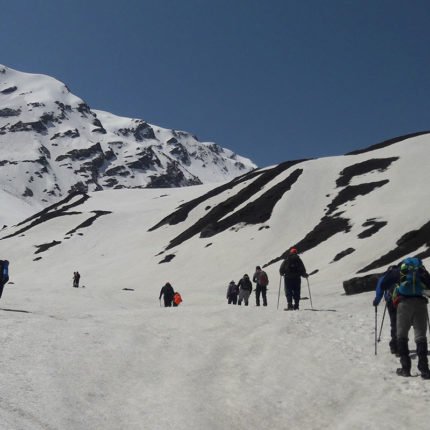
AUDEN’S COL TREK
Auden’s Col trek is a high altitude trek In Uttarakhand
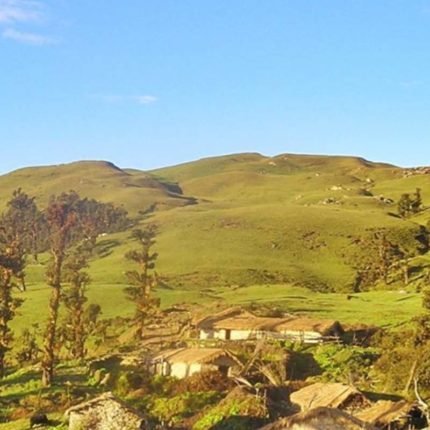
Panwali Kantha Trek
Panwali Kantha Should be done for its Meadows
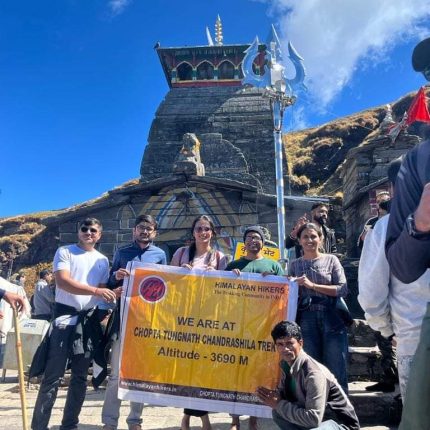
Tungnath Trek
Tungnath Mahadev trek is one of the most revered treks in the Indian state of Uttarakhand.
Price: ₹ 11,000.00
Book the tour
Send a quick enquiry.
- Overview Itinerary Dates Include/Exclude


Roamanch Travel Blog
Your Travel Wingman
The Ultimate Guide to the Kedarnath Trek
Nestled amidst the majestic peaks of the Garhwal Himalayas, the Kedarnath Trek stands as a testament to spiritual devotion and unparalleled natural beauty. Spanning across rugged terrains and breathtaking landscapes, this trek is not just a physical journey but a soul-stirring odyssey that connects pilgrims and adventurers alike with the divine essence of the Himalayan region. In this comprehensive guide, we delve deep into the intricacies of the Kedarnath Trek, providing a detailed roadmap, essential tips, and insights to ensure an enriching and fulfilling experience for all those who embark on this sacred pilgrimage.
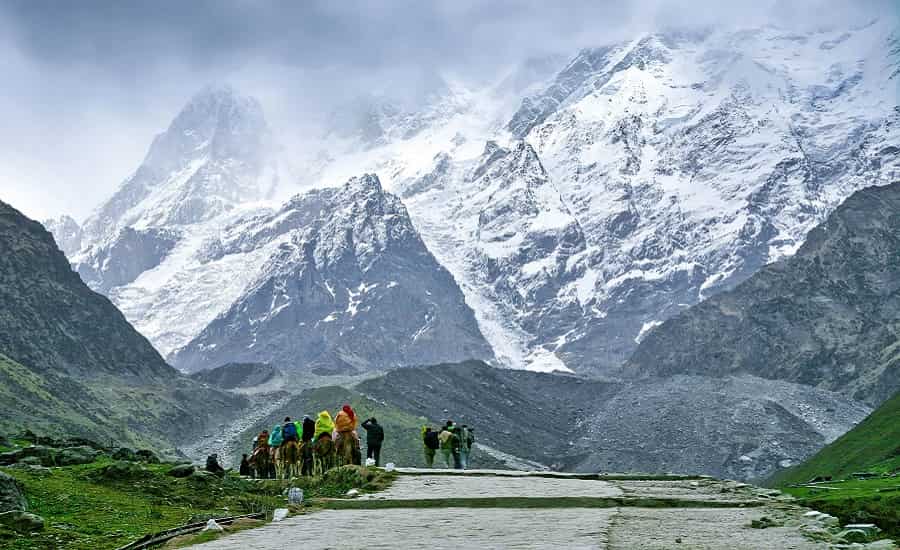
Table of Contents
How to Reach Kedarnath by Road
Reaching Kedarnath by road involves a journey through the picturesque landscapes of Uttarakhand, navigating winding mountain roads and scenic valleys. The nearest town to Kedarnath is Gaurikund, which serves as the base camp for the trek to the temple. Here are the steps to reach Kedarnath by road:
- From Delhi : The most common starting point for travelers is Delhi, the capital city of India. From Delhi, you can embark on a road trip to reach Kedarnath.
- Route: The route from Delhi to Kedarnath typically involves driving through the following cities and towns: Delhi – Haridwar – Rishikesh – Devprayag – Srinagar – Rudraprayag – Agastmuni – Guptkashi – Sonprayag – Gaurikund.
- Distance: The total distance from Delhi to Gaurikund is approximately 450 kilometers, which takes around 14-16 hours by road, depending on traffic and road conditions.
- Transportation Options: Travelers can choose between self-driving, hiring a taxi, or using public transport like buses. Private taxis are readily available from Delhi, Haridwar, and Rishikesh for the entire journey or up to Gaurikund.
- Road Conditions: While most of the route is well-maintained, some stretches may be narrow and winding, particularly after Devprayag. It’s advisable to travel during daylight hours and exercise caution while driving.
- Parking Facilities: At Gaurikund, parking facilities are available for vehicles, where travelers can leave their cars or hire ponies and porters for the trek ahead.
Kedarnath Route from Delhi
The route from Delhi to Kedarnath offers breathtaking views of the Himalayas and passes through several towns and landmarks of cultural and historical significance. Here’s a detailed overview of the route:
- Delhi to Haridwar : The journey begins from Delhi, heading towards Haridwar, a sacred city on the banks of the Ganges River, known for its ghats and temples.
- Haridwar to Rishikesh : From Haridwar, travelers proceed to Rishikesh, the “Yoga Capital of the World,” famous for its ashrams, suspension bridges, and river rafting activities.
- Rishikesh to Devprayag : Continuing the journey, the route takes travelers to Devprayag, where the Alaknanda and Bhagirathi rivers converge to form the holy Ganges.
- Devprayag to Srinagar : Traveling further, the route passes through Srinagar, a picturesque town on the banks of the Alaknanda River, known for its scenic beauty and educational institutions.
- Srinagar to Rudraprayag : The journey then proceeds to Rudraprayag, a confluence of the Alaknanda and Mandakini rivers, offering panoramic views of the surrounding mountains.
- Rudraprayag to Agastmuni to Guptkashi : From Rudraprayag, travelers continue towards Agastmuni and Guptkashi, important stopovers en route to Kedarnath, where they can rest and refresh.
- Guptkashi to Sonprayag to Gaurikund : Finally, the route leads to Sonprayag and Gaurikund, the last motorable point before the trek to Kedarnath Temple begins.
- Gaurikund to Kedarnath Temple : From Gaurikund, pilgrims and trekkers commence their journey on foot, covering a distance of approximately 16 kilometers to reach the sacred Kedarnath Temple.
Kedarnath Trekking Distance
The trekking distance from Gaurikund to Kedarnath Temple is approximately 16 kilometers (10 miles) one way. The trail winds its way through steep ascents, rocky paths, and scenic landscapes, offering pilgrims a challenging yet rewarding experience. Depending on one’s pace and physical condition, the trek can take anywhere between 6 to 9 hours to complete.
Facilities at Kedarnath Trek
Despite its remote location, the Kedarnath Trek offers basic facilities and amenities to ensure the comfort and safety of pilgrims and trekkers. Here are some of the facilities available along the trekking route:
- Accommodation : Along the trekking route, pilgrims can find various accommodation options, including guesthouses, dharamshalas (pilgrim shelters), and tents. These facilities provide basic amenities such as beds, blankets, and meals for travelers.
- Food and Water : There are several tea stalls and small eateries along the trekking route, offering snacks, tea, and meals to pilgrims. It’s advisable to carry sufficient water and energy snacks to stay hydrated and energized during the trek.
- Medical Facilities : Basic medical facilities are available at several points along the trekking route, including first aid kits, emergency medical assistance, and access to oxygen cylinders for altitude sickness.
- Ponies and Porters : For travelers who may find the trek challenging, ponies and porters are available for hire at Gaurikund to carry luggage and provide assistance during the journey.
- Toilets : Temporary toilet facilities are set up at regular intervals along the trekking route for the convenience of pilgrims. It’s essential to maintain cleanliness and hygiene while using these facilities.
- Mobile Connectivity : While mobile network coverage may be limited or non-existent in certain areas, there are designated spots along the route where pilgrims can find network connectivity to make calls or access the internet.
- Security : Security personnel are deployed along the trekking route to ensure the safety and well-being of pilgrims. Travelers are advised to follow instructions and guidelines provided by authorities for a smooth and secure trekking experience.
Kedarnath Distance Chart from Major Cities
Here’s a distance chart indicating the approximate distance from major cities to Kedarnath:
- Delhi to Kedarnath: Approximately 450 kilometers
- Haridwar to Kedarnath: Approximately 240 kilometers
- Rishikesh to Kedarnath: Approximately 220 kilometers
- Dehradun to Kedarnath: Approximately 290 kilometers
- Gaurikund to Kedarnath Temple: Approximately 16 kilometers (trekking distance)
Kedarnath Trek Itinerary
A typical itinerary for the Kedarnath Trek involves the following stages:
Day 1: Arrival in Gaurikund
- Travel from Delhi to Gaurikund by road
- Check-in at accommodation in Gaurikund
- Rest and acclimatize for the trek ahead
Day 2: Trek from Gaurikund to Kedarnath
- Start early morning trek to Kedarnath Temple
- En route visit Rambara Bridge and other landmarks
- Reach Kedarnath by afternoon/evening
- Darshan at Kedarnath Temple
- Overnight stay in Kedarnath
Day 3: Return Trek from Kedarnath to Gaurikund
- Early morning darshan at Kedarnath Temple
- Start trek back to Gaurikund
- Rest and relax upon reaching Gaurikund
- Optional: Visit nearby attractions or continue journey
New Trekking Route for Kedarnath Dham
In recent years, efforts have been made to develop a new trekking route for Kedarnath Dham to improve accessibility and enhance the trekking experience. The new route, known as the Chopta-Kedarnath Trek, offers an alternative approach to reaching the sacred temple. Here are some key features of the new trekking route:
- Scenic Beauty : The Chopta-Kedarnath Trek passes through breathtaking landscapes, including lush forests, alpine meadows, and panoramic viewpoints, providing travelers with a memorable journey amidst natural splendor.
- Less Crowded : Compared to the traditional trekking route from Gaurikund, the Chopta-Kedarnath Trek is relatively less crowded, offering pilgrims a more serene and peaceful trekking experience.
- Shorter Distance : The new route is shorter in distance compared to the Gaurikund-Kedarnath route, making it ideal for travelers seeking a quicker and less strenuous trek to the temple.
- Facilities : Basic facilities such as accommodation, food stalls, and medical aid are available along the Chopta-Kedarnath Trek route, ensuring the comfort and safety of pilgrims and trekkers.
Challenges Faced During the Trek
While the Kedarnath Trek offers a spiritually enriching experience, it also presents several challenges that pilgrims and trekkers need to be aware of:
- Altitude : The trek involves ascending to high altitudes, with Kedarnath Temple located at an elevation of approximately 3,583 meters (11,755 feet). Altitude sickness can occur, especially for those not acclimatized to high altitudes.
- Weather Conditions : Weather in the Himalayas can be unpredictable, with sudden changes in temperature, rainfall, and snowfall. Trekkers should be prepared for varying weather conditions and carry appropriate clothing and gear.
- Physical Exertion : The trek involves walking long distances over challenging terrain, including steep ascents and descents. Trekkers need to be physically fit and prepared for the strenuous nature of the journey.
- Limited Facilities : While basic facilities are available along the trekking route, amenities may be limited, particularly in remote areas. Pilgrims should carry essential supplies such as water, snacks, and medicines to sustain themselves during the trek.
- Environmental Impact : The fragile ecosystem of the Himalayas is susceptible to environmental degradation due to increased tourism and trekking activities. Pilgrims should follow eco-friendly practices and minimize their environmental impact while trekking.
Trekking Tips & Things to Carry
To ensure a safe and enjoyable trekking experience to Kedarnath, here are some essential tips and things to carry:
- Fitness Preparation : Engage in regular exercise and physical activity to build stamina and endurance for the trek. Practice hiking on inclines and uneven terrain to simulate trekking conditions.
- Acclimatization : Spend a day or two in Gaurikund or nearby towns to acclimatize to the high altitude before starting the trek to Kedarnath Temple. Take it slow and allow your body to adjust to the altitude.
- Appropriate Clothing : Dress in layers to adapt to changing weather conditions. Carry warm clothing, including jackets, thermals, gloves, and hats, as temperatures can drop significantly at higher altitudes.
- Footwear : Wear sturdy and comfortable trekking shoes with good grip to navigate rocky terrain and uneven paths. Avoid wearing new shoes and break them in before the trek to prevent blisters and discomfort.
- Hydration and Nutrition : Stay hydrated by drinking plenty of water throughout the trek. Carry energy snacks such as nuts, dried fruits, chocolates, and energy bars to replenish energy levels during the trek.
- First Aid Kit : Pack a basic first aid kit containing essential medications, bandages, antiseptic ointment, pain relievers, and any personal medications you may require.
- Trekking Gear : Carry trekking essentials such as a backpack, trekking poles, headlamp or flashlight, sunglasses, sunscreen, lip balm, and a multi-tool or Swiss army knife.
- Navigation Tools : Carry a map, compass, or GPS device to navigate the trekking route, especially in areas with limited visibility or trail markings.
- Emergency Contacts : Carry a list of emergency contacts, including local authorities, trekking guides, and medical facilities, in case of any unforeseen circumstances or emergencies.
- Leave No Trace : Practice Leave No Trace principles by disposing of waste properly, avoiding littering, and respecting the natural environment and wildlife.
Best Time for Kedarnath Yatra Trek
The best time to undertake the Kedarnath Yatra Trek is during the summer months from May to June and the autumn months from September to October. During these periods, the weather is relatively stable, with clear skies and mild temperatures, making it ideal for trekking and pilgrimage. However, it’s essential to avoid the monsoon season from July to August and the winter months from November to April due to heavy rainfall, landslides, and snowfall, which can make the trek challenging and dangerous.
- Also Read : Best Time to Visit Kedarnath Dham
Camping and Accommodation Options
Along the trekking route to Kedarnath, pilgrims and trekkers have various options for accommodation, including:
- Guesthouses and Dharamshalas : Several guesthouses and dharamshalas (pilgrim shelters) are available along the trekking route, offering basic accommodation with amenities such as beds, blankets, and meals.
- Campsites : Camping is a popular option for trekkers who prefer to immerse themselves in nature. There are designated campsites along the trekking route where travelers can pitch tents and spend the night under the stars.
- Temporary Shelters : During peak pilgrimage seasons, temporary shelters are set up at strategic locations along the route to accommodate the influx of pilgrims. These shelters provide basic facilities such as sleeping mats, blankets, and food services.
- Pilgrim Tents : At Kedarnath Temple, pilgrim tents are available for rent, offering a convenient accommodation option for travelers seeking proximity to the temple complex.
While booking accommodation, it’s advisable to make reservations in advance, especially during peak pilgrimage seasons, to ensure availability and avoid last-minute inconvenience.
Exploring Nearby Attractions
In addition to the pilgrimage to Kedarnath Temple, travelers have the opportunity to explore several nearby attractions and points of interest:
Badrinath Temple : Located approximately 223 kilometers from Kedarnath, Badrinath Temple is another prominent pilgrimage site dedicated to Lord Vishnu. Pilgrims can visit Badrinath Temple to complete the Char Dham Yatra circuit.
Rudraprayag : Situated at the confluence of the Alaknanda and Mandakini rivers, Rudraprayag is known for its scenic beauty and spiritual significance. Travelers can visit temples and ashrams in Rudraprayag to experience its cultural heritage.
Chopta : Often referred to as the “Mini Switzerland of India,” Chopta is a picturesque hill station located approximately 25 kilometers from Gaurikund. It offers stunning views of the Himalayan peaks and is a popular destination for trekking and camping.
Tungnath Temple : En route to Kedarnath, travelers can visit Tungnath Temple, the highest Shiva temple in the world, situated at an altitude of approximately 3,680 meters (12,073 feet). The temple holds great religious significance and offers panoramic views of the surrounding mountains.
Deoria Tal : Located near Chopta, Deoria Tal is a pristine lake surrounded by lush forests and snow-capped peaks. Trekkers can undertake a short hike to Deoria Tal from Sari Village and enjoy the tranquility of the lake amidst natural beauty.
Q-1 Is the Kedarnath Trek suitable for beginners? Ans: While the Kedarnath Trek is manageable for beginners with a moderate level of fitness, it does involve long distances and steep ascents. It’s essential to prepare physically and mentally for the trek and take adequate rest breaks along the way.
Q-2 Are there medical facilities available along the trekking route? Ans: Basic medical facilities are available at various points along the trekking route, including first aid stations and access to oxygen cylinders for altitude sickness. However, travelers with pre-existing medical conditions should consult their healthcare provider before embarking on the trek.
Q-3 What is the best time to visit Kedarnath Temple? Ans: The best time to visit Kedarnath Temple is during the summer months from May to June and the autumn months from September to October when the weather is favorable for trekking and pilgrimage. It’s advisable to avoid the monsoon season from July to August and the winter months from November to April due to inclement weather conditions.
Q-4 Is it safe to trek to Kedarnath Temple alone? Ans: While solo trekking is possible, it’s recommended to trek in a group or with experienced guides for safety and support, especially for first-time trekkers. Travelers should also inform their itinerary to family or friends and stay updated on weather forecasts and trail conditions.
Q-5 What should I do in case of an emergency during the trek? Ans: In case of an emergency, travelers should stay calm and seek assistance from fellow trekkers, guides, or local authorities. It’s essential to carry a list of emergency contacts and follow safety protocols to ensure a prompt and effective response to any unforeseen situation.
In conclusion, the Kedarnath Trek offers pilgrims and trekkers a unique opportunity to embark on a spiritual journey amidst the majestic Himalayas. With proper planning, preparation, and respect for nature, travelers can experience the beauty and serenity of this sacred pilgrimage route while paying homage to one of the holiest shrines in Hindu mythology. Whether seeking adventure, spiritual enlightenment, or communion with nature, the Kedarnath Trek beckons travelers from around the world to embark on a transformative quest to the abode of Lord Shiva.
Also Read:
- History of Kedarnath Dham
Best Time to Visit Kedarnath
More stories.
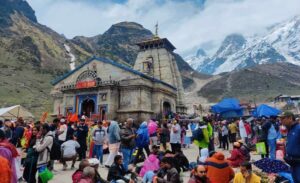
History of Kedarnath Temple
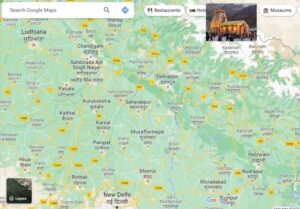
Kedarnath Yatra Route Map
Leave a reply cancel reply.
Your email address will not be published. Required fields are marked *
Save my name, email, and website in this browser for the next time I comment.
You may have missed
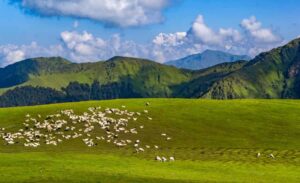
- Uncategorized
- Uttarakhand
Bugyal of Uttarakhand
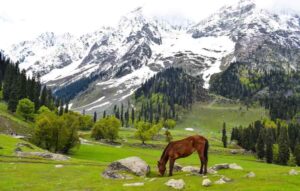
- Places to Visit
Best Places to Visit in North India

Must Try Street Food in Vadodara
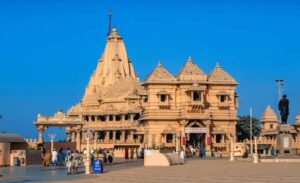
- Somnath Temple
Tourist Places To Visit in Somnath
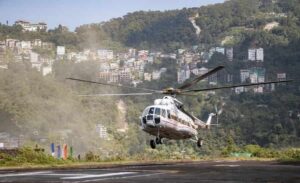
Helicopter Rides Destinations In India
Kedarnath Trek Guide: Exploring the Serene Beauty of the Himalayas
Are you an adventure enthusiast seeking a thrilling journey amidst the towering peaks of the Himalayas? Look no further than the Kedarnath Trek, an expedition that offers breathtaking landscapes, spiritual encounters, and a taste of nature’s grandeur. In this comprehensive guide, we’ll take you through the ins and outs of this incredible trekking experience.
Table of Contents
Introduction to the Kedarnath Trek
Nestled in the Garhwal region of Uttarakhand, India, the Kedarnath Trek is a revered pilgrimage and an adventure seeker’s paradise. The trek takes you to the sacred Kedarnath Temple, dedicated to Lord Shiva, situated at an elevation of 3,583 meters above sea level. The journey is not just about conquering heights; it’s a spiritual quest that connects you with nature’s raw beauty and ancient legends.
Preparation and Essentials for the Trek
Before embarking on this memorable journey, meticulous planning is key. Ensure you have sturdy trekking gear, including comfortable clothing, sturdy hiking shoes, a durable backpack, and other essentials such as water bottles, energy snacks, a first aid kit, and a map. Acclimatization is vital, so engage in light exercises a few weeks prior and stay hydrated.
Best Time to Visit
The ideal time for the Kedarnath Trek is during the months of May to June and September to October. The weather during these periods is relatively mild, offering clear skies and pleasant temperatures. Monsoon season is best avoided due to the risk of landslides and slippery trails.
How to Reach Kedarnath
To reach Kedarnath, one of the most revered pilgrimage sites in India located in the state of Uttarakhand, you can follow these steps:
- Reach Haridwar or Rishikesh : Most journeys to Kedarnath start from either Haridwar or Rishikesh. These towns are well-connected by road and rail to major cities in India.
- By Road : From Haridwar or Rishikesh, you can hire a taxi or take a bus to Gaurikund, the base camp for the Kedarnath trek. The distance is around 200-220 km and the journey takes about 8-10 hours.
- By Helicopter (Optional) : If you prefer a quicker and more convenient option, you can take a helicopter ride from Phata, Guptkashi, or Sersi to Kedarnath. This significantly reduces the travel time, but bookings need to be made in advance.
- Trek to Kedarnath : The main way to reach the temple is by trekking from Gaurikund. The trekking distance is around 16-18 km, and it usually takes about 6-8 hours to complete. The trek route is well-marked and passes through picturesque landscapes. You can also hire mules or ponies to carry your luggage or to assist you in the trek.
- Stay En Route : There are rest stops and accommodations available along the trekking route, such as Rambara and Kedarnath Base Camp. You can choose to stay overnight at these places if you find the trek challenging to complete in a single day.
- Reach Kedarnath : Once you reach Kedarnath, you can visit the famous Kedarnath Temple dedicated to Lord Shiva. The temple is nestled amidst the Himalayas and holds immense religious significance.
- Return Journey : After your visit to the temple, you can retrace your steps back to Gaurikund either by trekking or by availing helicopter services.
Kedarnath Trek Distance
The journey to Kedarnath spans 18 kilometers and commences from Gaurikund, extending all the way to the sacred destination of Kedarnath. This trek underwent modifications following the 2013 flood disaster in Uttarakhand, resulting in the expansion of the previous 14 km route to a new distance of 16 kilometers.
Route Map of the Kedarnath Trek:
- Rishikesh to Sonprayag: The journey usually starts from Rishikesh, where trekkers travel to Sonprayag by road. Sonprayag is the base camp for the Kedarnath Trek.
- Sonprayag to Gaurikund: From Sonprayag, trekkers proceed to Gaurikund, which is around 5 kilometers away. Gaurikund is named after Goddess Parvati and serves as the starting point of the actual trek.
- Gaurikund to Rambara: The trail from Gaurikund leads to Rambara, which is approximately 7 kilometers from Gaurikund. The path offers scenic views of the surrounding mountains and the Mandakini River.
- Rambara to Kedarnath: The journey continues from Rambara to Kedarnath, which is about 6 kilometers away. The route becomes steeper as trekkers ascend towards Kedarnath. The final stretch is known for its breathtaking views but can be challenging due to the altitude gain.
- Kedarnath Temple: At an altitude of around 3,583 meters (11,755 feet), the Kedarnath Temple is one of the holiest Hindu shrines dedicated to Lord Shiva. Pilgrims and trekkers visit the temple to offer prayers and seek blessings.
Route Map for Kedarnath Trek
Embarking on the Kedarnath trek, an 18 km journey, is a pilgrimage of both physical and spiritual significance. The expedition commences from Gaurikund, presenting trekkers with an enriching experience in the heart of the Himalayas. The route itself has undergone modifications, a response to the 2013 disaster that wiped away the original path. The new route, outlined below, serves as your comprehensive travel guide for the Kedarnath trek.
1. Gaurikund: To commence this memorable journey, one must first reach Gaurikund. This preliminary step involves a shared taxi ride of approximately 6 km from Sonprayag.
2. Gaurikund to Jungle Chatti: Begin the trek by moving from Gaurikund to Jungle Chatti, a distance of 6 km. This segment involves traversing the Rambara Bridge and immersing oneself in the scenic surroundings.
3. Jungle Chatti to Bheembali: Progress further along the path, covering a distance of 4 km to reach Bheembali. The natural beauty of the region accompanies your trekking endeavor.
4. Bheembali to Linchauli: Continue your journey through the mountainscape, venturing 3 km to arrive at Linchauli. Each step embraces the serenity of the environment.
5. Linchauli to Kedarnath Base Camp: Traverse a distance of 4 km as you approach the Kedarnath Base Camp. The gradual transition in landscape offers trekkers a sense of the grandeur that lies ahead.
6. Kedarnath Base Camp to Kedarnath Temple: The final stretch, spanning 1 km, leads from the Kedarnath Base Camp to the revered Kedarnath Temple. This sacred site, nestled amidst the heights, marks the culmination of your trek and the beginning of a spiritual sojourn.
Facilities at the Kedarnath Trek
Trail highlights and scenic views.
The Kedarnath Trail boasts an array of captivating highlights and breathtaking scenic views. Trekking through dense forests, tranquil meadows, and challenging terrains, adventurers are treated to glimpses of the Mandakini River’s sparkling beauty. The trail’s crescendo is the Chandrashila summit, offering panoramic vistas of snow-clad peaks that leave an indelible mark on the heart. Additionally, the Vasuki Tal glacial lake enchants trekkers with its serene turquoise waters against the backdrop of towering mountains.
Camping and Accommodation Options
Kedarnath holds a distinguished position among the revered shrines dedicated to Lord Shiva and is an integral part of Uttarakhand’s Char Dham Yatra . Once teeming with hotels, lodges, and ashrams in locations like Kedarnath, Gaurikund, and Rambara, providing budget-friendly lodging for pilgrims, the landscape underwent a transformation due to the devastating flash floods in 2013, resulting in the obliteration of all accommodations.
Please note that in response to this, entities like NIM and other aiding authorities have constructed a limited number of budget camps and tents within the Kedarnath region. These endeavors aim to expand the range of accommodation choices for tourists. At present, tourists and pilgrims can exclusively avail lodging at GMVN Tents & Camps, offering a secure and reliable place to stay.
Cultural and Spiritual Significance
Apart from its natural beauty, the Kedarnath Trek holds deep spiritual significance. According to Hindu mythology, this region is believed to be the abode of Lord Shiva, making it an essential pilgrimage for devotees. The journey itself becomes a spiritual cleansing, fostering a deep connection with the divine.
Challenges Faced During the Trek
While the Kedarnath Trek is a rewarding adventure, it comes with its share of challenges. The steep ascents and descents on rocky terrains demand physical stamina and mental determination. Acclimatizing to the high altitudes is essential to avoid altitude sickness, which can cause discomfort. The weather can be unpredictable, ranging from sunny skies to sudden rain or snowfall. Navigating through varying landscapes, such as narrow trails and river crossings, requires careful attention. Additionally, the lack of basic amenities along the route and limited mobile network coverage might test your self-sufficiency. Despite these obstacles, conquering the challenges of the Kedarnath Trek yields a sense of accomplishment and an unparalleled connection with nature.
Safety Measures and Health Considerations
Prioritizing safety and health considerations is paramount when embarking on the Kedarnath Trek. Begin by trekking with a certified guide who knows the trail and can navigate challenges. Stay informed about weather forecasts to prepare for changing conditions. Acclimatize gradually to prevent altitude sickness – stay hydrated, avoid alcohol, and ascend slowly. Carry essential medications and a well-stocked first aid kit. Respect the environment by following the “Leave No Trace” principle, ensuring the trail remains pristine for future trekkers. Finally, communicate your itinerary to someone and stay connected, as mobile network coverage can be limited in certain areas. By adhering to these safety measures, you can enjoy a secure and fulfilling trekking experience.
Packing Tips for the Trek
When preparing for the Kedarnath Trek, strategic packing can make your journey smoother and more enjoyable. Prioritize essentials like sturdy hiking boots for rocky terrains, moisture-wicking clothing to handle varying weather, and a waterproof jacket to combat unexpected rain. Don’t forget to pack a reliable backpack with adjustable straps for comfortable carrying, along with essentials like a first aid kit, energy-packed snacks, a reusable water bottle, and a compact sleeping bag. Trekking poles can provide stability, especially on steep ascents and descents. Lastly, a fully charged camera, sun protection, and a hat are crucial for capturing memories and shielding yourself from the elements.
Exploring Nearby Attractions
While embarking on the Kedarnath Trek, the adventure extends beyond the trail itself, offering the opportunity to explore nearby attractions that add depth to your journey. After paying homage at the revered Kedarnath Temple, consider extending your exploration to destinations like Badrinath, a significant pilgrimage site renowned for its temple dedicated to Lord Vishnu. Rudraprayag, where the Alaknanda and Mandakini rivers confluence, offers a serene atmosphere and a chance to connect with nature. Chopta, known as the “Mini Switzerland of India,” beckons with its captivating meadows and breathtaking views of the Himalayan peaks. These nearby attractions enhance your overall experience, painting a richer picture of the region’s cultural and natural diversity.
Capturing Memories: Photography Tips
As you embark on the Kedarnath Trek, don’t miss the chance to capture the awe-inspiring landscapes through your lens. To truly encapsulate the beauty of the journey, embrace natural lighting – early mornings and golden hours before sunset offer magical illumination. Experiment with different angles to showcase the vastness of the Himalayas, the serenity of the meadows, and the intricacies of the trails. Focus on details like vibrant wildflowers, flowing streams, and rugged terrains to convey the trek’s diversity. Additionally, consider using people in your shots to provide a sense of scale and perspective. Lastly, let the breathtaking views inspire you; tell a story through your photos and immortalize the memories created during this remarkable expedition.
Trekking Solo vs. Group Trek
When considering the Kedarnath Trek, the choice between embarking solo or joining a group trek comes down to personal preferences and desired experiences. Trekking solo offers introspection and a unique connection with nature, allowing you to set your own pace and relish the solitude. It’s a chance for self-discovery and embracing the trail at your own rhythm. On the other hand, a group trek infuses camaraderie and shared memories. It’s an avenue for forming bonds with fellow trekkers, exchanging stories, and enjoying collective triumphs. Group treks often offer organized logistics, easing the burden of planning and navigation. Ultimately, whether solo or in a group, the Kedarnath Trek promises transformative moments and breathtaking vistas, tailored to your chosen path.
Important Points to Keep in Mind Before Going Kedarnath Trek
Embarking on the Kedarnath Trek is an exciting adventure, but thorough preparation is key to ensure a safe and enjoyable experience. Here are important considerations before you begin your journey:
- Physical Readiness: The Kedarnath Trek involves challenging terrain and high altitudes. Make sure you’re physically fit and ready for the demands of the journey. Regular exercise and cardiovascular training can help build stamina.
- Weather Readiness: Weather conditions can change rapidly in the mountains. Pack clothing suitable for both warm and cold weather. Don’t forget rain gear to stay dry during unexpected rain showers.
- Footwear Selection: Invest in sturdy, comfortable trekking shoes with proper grip. Well-fitting footwear prevents discomfort and minimizes the risk of injuries.
- Appropriate Clothing: Layer your clothing to adapt to varying temperatures. Bring warm clothing like jackets, gloves, and hats, as temperatures can drop significantly at higher elevations.
- Important Documents: Safeguard your identification, permits, and relevant documents in a waterproof pouch. These might be necessary at different checkpoints during the trek.
- Hydration and Nutrition: Carry an ample supply of water to stay hydrated throughout the trek. Pack energy-rich snacks such as nuts, trail mix, and energy bars to sustain your energy levels.
- Basic First Aid Kit: Prepare a basic first aid kit containing essentials like bandages, antiseptic cream, pain relievers, and any personal medications you require.
- Communication Plans: Although mobile network coverage might be limited, carrying a fully charged power bank is useful. Inform a trusted person about your trekking plans and expected return date.
- Respect for Local Customs: The Kedarnath region holds deep religious significance. Respect local customs, traditions, and sacred sites. Dress modestly and avoid littering.
- Trekking Permits: Check whether you need permits to access the trekking route. Obtain these permits beforehand to prevent any delays.
- Guided Trek or Solo: Decide whether you’ll undertake the trek with a guided group or as a solo traveler. Guided treks offer expertise and logistical support.
- Altitude Adjustment: Allow your body time to acclimatize to higher altitudes. Take breaks, avoid rapid ascents, and pay attention to your body’s signals.
- Environmental Responsibility: Adhere to the Leave No Trace principles. Carry all your waste back with you and help preserve the natural beauty of the environment.
- Emergency Contacts: Keep emergency contact numbers readily accessible. Be aware of nearby medical facilities and rescue services.
- Travel Insurance: Consider obtaining travel insurance that covers potential medical emergencies and trip cancellations.
Conclusion: A Transformative Experience
The Kedarnath Trek transcends the ordinary, offering an unforgettable blend of adventure, spirituality, and natural beauty. As you trek through the breathtaking Himalayan terrain, you’ll find solace, courage, and a renewed sense of wonder. So, gear up for this life-changing expedition and embrace the journey of a lifetime.
FAQs (Frequently Asked Questions)
- Is prior trekking experience necessary for the Kedarnath Trek? While prior experience is beneficial, beginners with reasonable fitness levels can undertake the trek with proper preparation.
- Are there any age restrictions for the trek? The trek is suitable for individuals in good health. It’s recommended to consult a physician before embarking, especially for senior citizens.
- What’s the significance of Kedarnath Temple? Kedarnath Temple holds immense religious importance for Hindus and is one of the twelve Jyotirlingas of Lord Shiva .
- Are there any wildlife concerns during the trek? While encounters are rare, the region is home to various wildlife species. Trek in groups, make noise, and avoid venturing into dense forests.
- Can I undertake the trek during winter? The trek is not recommended during winter due to heavy snowfall and extreme cold temperatures.
Leave a Reply Cancel reply
Your email address will not be published. Required fields are marked *
Plan Your Trip Our expert will get in touch with you shortly
Mobile No *
.png?w=auto&h=400)
Kedarnath Trek
Kedarnath trek overview.
Kedarnath trek is a remote trek that starts at Gaurikund, which is the base camp of the trek. It is a moderate-level trek and can be embarked on by even novice trekkers without any prior experience. The Kedarnath trek distance is 16 km and you will need to trek for 5 to 6 hours to reach the Kedarnath base camp at an altitude of 3583 m. Trekkers who are not accustomed to long journeys and high altitudes may find it difficult to complete the trek. Hence reasonably good physical fitness is required for this trek.
Experience the incredible natural beauty as you journey from Rishikesh to Sonpragyag. The first base camp of the Kedarnath trekking is at Gaurikund, which offers a magnificent range of himalayan range which can be explored by a jeep or shuttle feeling spellbound looking at the surroundings.
The trek from Gaurikund will start the next day and for 5 to 6 hours you will be captivated with the beauty of the surrounding mountains, running streams and greenery. See the tips of the snow covered mountains which will become more and more visible with your ascend. Witness the peaceful energy as you get to see the famous Kedar Nath Temple as your top destination. Get blessings from one of the temples of the Chota Char Dham of Uttarakhand which is dedicated to Lord Shiva. There will be several points on the way where you will be able to make a stop including Jungle Chatti, Bheem Bali, Linchauli and finally Kedarnath Base camp.
Book Kedarnath Trek Package
You may also book.
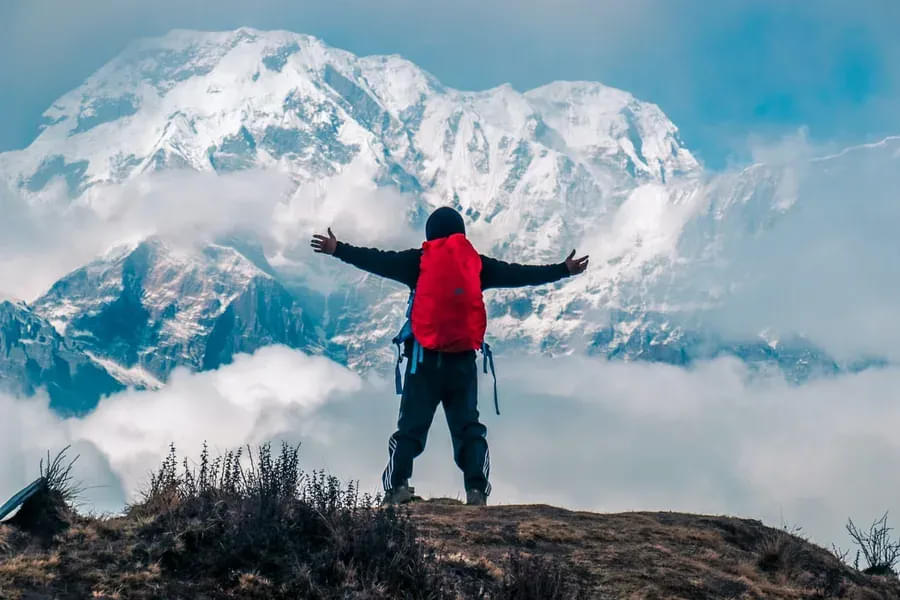
Quick Facts of Kedarnath Trek

Kedarnath Trek Maximum Altitude: 3583 m
Grade: Moderate
Kedarnath Trek Duration: From Gaurikund to Kedarnath: 7 to 8 hours
Trekking distance: From Gaurikund to Kedarnath: 16 km
Trail type: Medium to steep
Railhead: Nearest Railway station is Rishikesh Railway station, 221 km from Kedarnath
Airport: Jolly Grant Airport, near Dehradun, about 239 km from Kedarnath.
Snow Season: November to April
Service from: Delhi
Base camp: Gaurikund
Best season: Summer (April to June)
Region: Garhwal Himalayan range near the Mandakini river, in the state of Uttarakhand, India.
Who can participate: Anyone who is physically fit can participate as there is no prior experience that is required for this trek.
Short Itinerary for Kedarnath Trek
Day 1: Arrival in Delhi
Day 2: Travel from Delhi to Haridwar (By Train - 217.6 km)
Day 3: Drive from Haridwar to Guptkashi (Altitude 1,319 m) (By Road - 203.5 km)
Day 4: Travel from Guptkashi (Altitude 1,319 m) to Gaurikund (Altitude 1982 m) and then Trek to Kedarnath (Altitude 3583 m) (By Road - 15.3 km & Trek - 14 km)
Day 5: Trek to Vasukital( Altitude 4,135 m) (Trek - 8 km) and Back to Kedarnath(Altitude 3583 m) (Trek - 8 km)
Day 6: Trek to Gaurikund (Altitude 3583 m) (Trek - 14 km) - Drive to Rudraprayag (Altitude 690 m) (Drive - 41.2 km)
Day 7: Drive back to Rishikesh (By Road - 141.7 km)
Day 8: Travel back to Delhi
Kedarnath Trek Detailed Itinerary
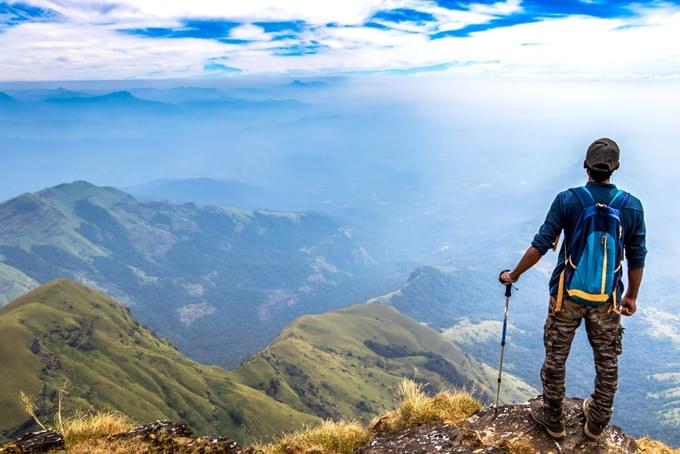
Arrival in Delhi
Your Kedarnath trek will start as soon as you arrive at Indira Gandhi International Airport in Delhi.
You will be transferred to your hotel in a spacious and comfortable vehicle.
Check in for the night and take a rest in the hotel after enjoying a delicious dinner.
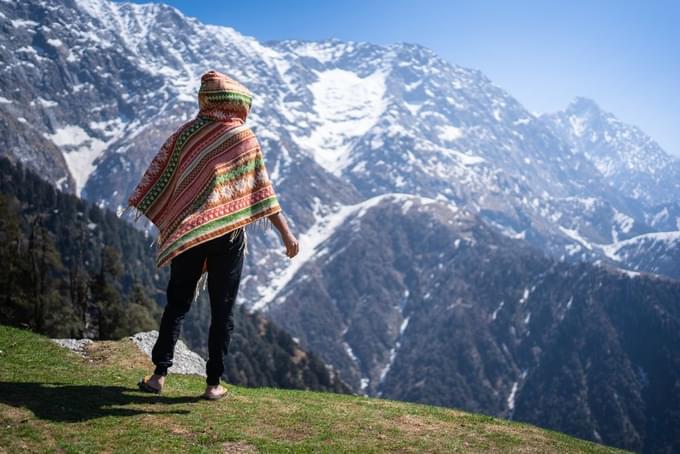
Travel from Delhi to Haridwar by train
Distance: 217.6 km
Duration: 6 hours and 20 minutes
On the second day of your Kedarnath trekking trip, you will need to wake up early in the morning and check out of your Delhi hotel after having a sumptuous breakfast.
You will be taken to the railway station in a comfortable vehicle and board the train for Haridwar.
Enjoy the journey to Haridwar for 6.5 hours and arrive at the Haridwar railway station.
You will find yourself heading towards your place of accommodation in a spacious and comfortable car.
Spend the evening exploring the local attractions of the town at a leisure pace on your own.
Return to the hotel to have a delicious dinner in the night.
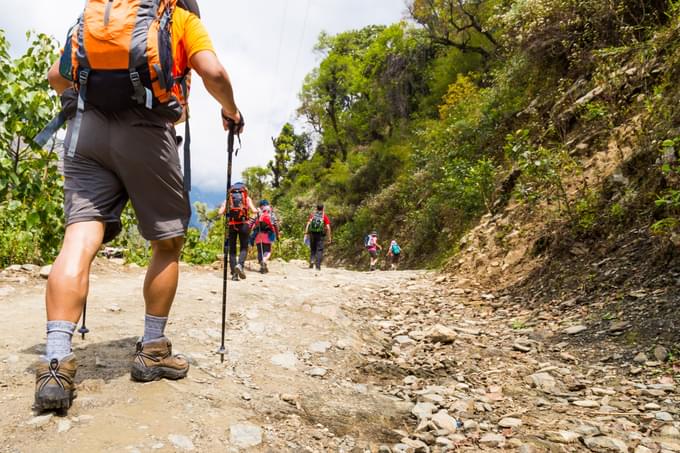
Drive from Haridwar to Guptkashi
Altitude: 1,319 m
Distance: 203.5 km
Start your day 3 with a hearty breakfast and then check out of your Haridwar hotel.
You will be proceeding towards Guptkashi by road. You will be traveling 203.5 km via National Highway 7.
Reach Guptkashi after 6 hours and 20 minutes and check-in your hotel.
Freshen up, spend some time exploring the city and then enjoy a scrumptious dinner, and rest overnight at your hotel.
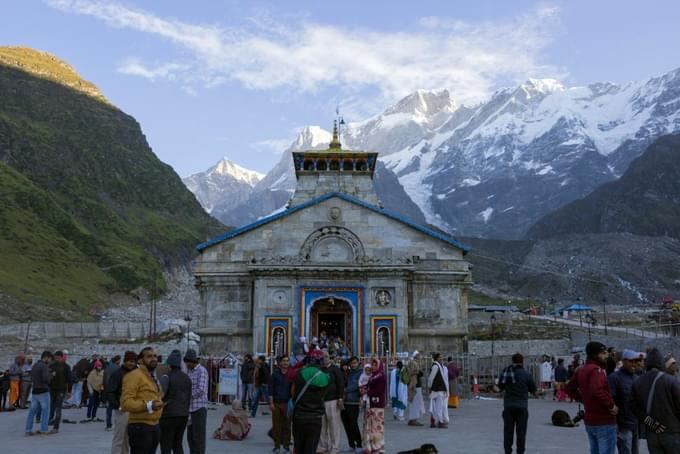
Travel from Guptkashi (Altitude 1,319 m) to Gaurikund (Altitude 1982 m) and then Trek to Kedarnath (Altitude 3583 m)
Altitude: 1,319 m to 1982 m to 3583 m
Distance: By Road - 15.3 km & Trek - 14 km
Duration: By Road - 1 hr 12 min & Trek - 6 hours
Start your morning with a delicious breakfast and feel energized to start the most important day of your trekking tour when you will finally trek to Kedarnath dham.
Check out of your hotel and proceed on your journey to the base camp of the Kedarnath trek, Gaurikund from where you will proceed to Kedarnath temple located at an altitude of 3583 m.
Ensure you start on time to reach there on time as trekkers are only allowed between 4:00 AM to 1:30 PM.
The Kedarnath trek distance is 16 km and will take you 5 to 6 hours to reach.
Carry your packed lunch and start your trek.
Your 1st stop will be Jungle Chatti at 4 km from Gaurikund which you will reach after trekking through the Rambara Bridge.
Take a break to enjoy the stunning view before you continue for another 3 km to reach Bheembali.
Your scenic journey to Bheembali will include a magnificent view of snow-covered mountains and temple walls.
Continue on Kedarnath trekking for 4 km more to reach Linchauli and take a break and enjoy the stunning mountain view.
Next, proceed towards Kedarnath base camp which is at a distance of 4 km from Linchauli and located at an altitude of 3583 m.
From this location, you will be able to watch the panoramic view of the valley, where you can enjoy the tranquil ambience of the place and explore the lush surroundings.
Reach Kedarnath and stay overnight at the hotel after a mouthwatering dinner.
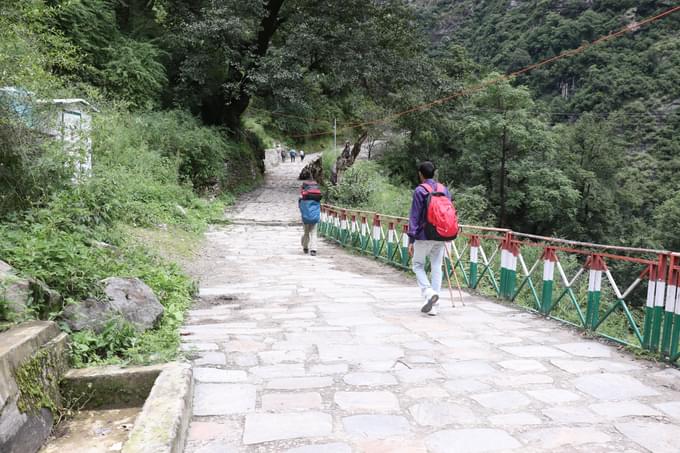
Trek to Vasukital( Altitude 4,135 m) (Trek - 8 km) and Back to Kedarnath(Altitude 3583 m) (Trek - 8 km)
Altitude: 3583 m to 4,135 m
Distance: 8 km
Duration: 5 -6 hours one way
Start your morning with the breathtaking view of the surrounding mountains and get ready for visiting one of the famous temples of India. Visit the temple to offer your prayers and receive Lord Kedarnath’s blessings.
Carry your packed lunch and start your picturesque trek to Vasuki Tal.
Reach Vasuki Tal and feel enchanted looking at the beauty of the pristine and explore the area to enjoy the natural splendors for a while.
Start your descent to Kedarnath in the evening and reach your hotel to enjoy a piping hot dinner and retire for the night.
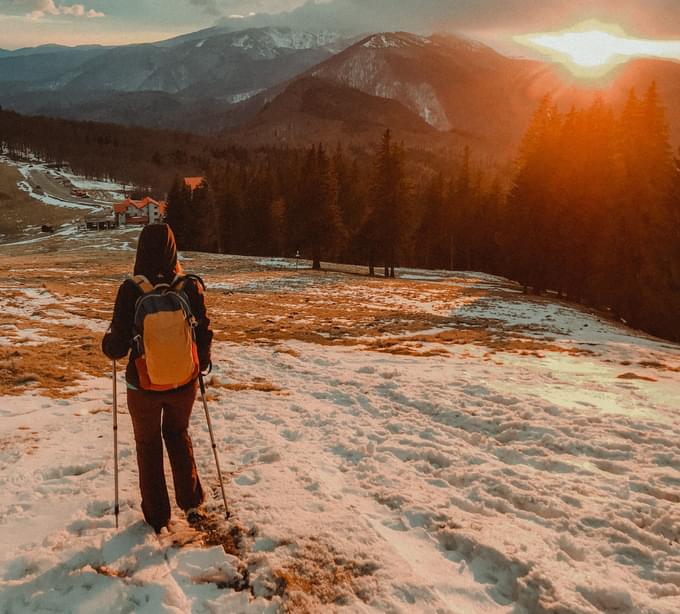
Trek to Gaurikund (Altitude 3583 m) (Trek - 14 km) - Drive to Rudraprayag (Altitude 690 m) (Drive - 41.2 km)
Altitude: 3583 m to 690 m
Distance: Trek - 14 km & By Road 41.2 km
Duration: Trek - 6 hours, Drive - 2 hr 46 min
Wake up to the scenic beauty and tranquil ambience of Kedarnath and enjoy a healthy breakfast at your hotel.
Start your descending trek to Gaurikund and carry a packed lunch with you.
Trekking for 6 hours to cover the distance of 14 kms down to reach Gaurikund.
Once you reach Gaurikund, you will start your journey to Rudrapayag by road. Reach Rudraprayag after travelling for 2 hr 46 minutes.
Reach your hotel, have a mouthwatering dinner and rest overnight.
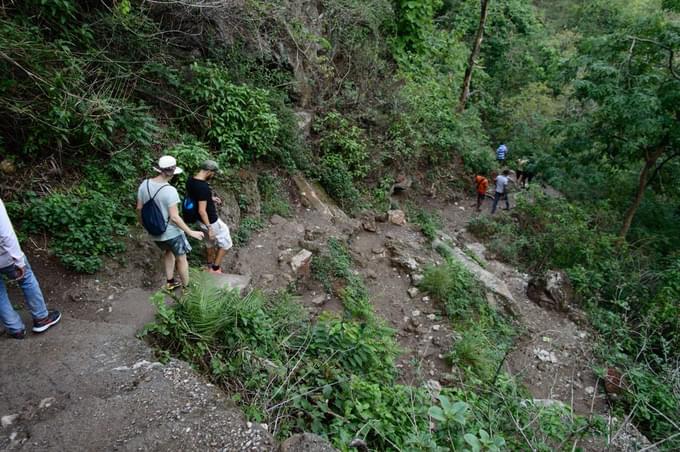
Drive back to Rishikesh (By Road - 141.7 km)
Distance: 141.7 km
Duration: 4 hr 10 min
Wake up in the morning and enjoy a flavourful breakfast at your hotel.Check out of your hotel and proceed on your journey to Rishikesh by road.
Reach the city of Rishikesh in about 4 hours and 10 minutes, travelling a distance of 141.7 km.
Reach Rishikesh, check-in your hotel and freshen up.
Enjoy a delicious hot dinner before you retire to rest overnight at your hotel.
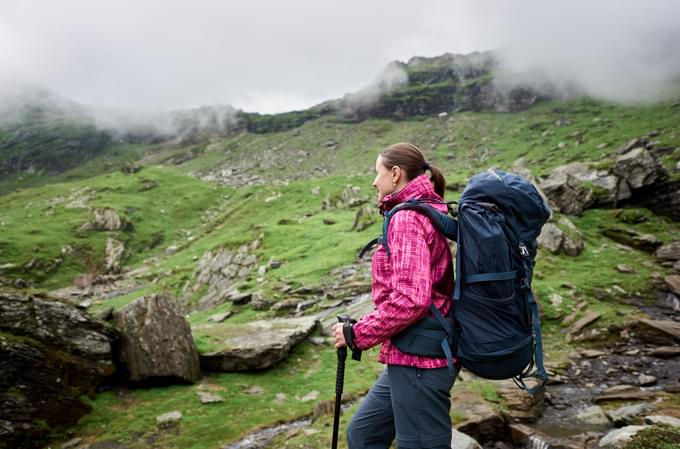
Travel back to Delhi
Distance: 268.1 km
Duration: 5 hr 7 min
Wake up on the last morning of your Kedarnath trek to the serene atmosphere of Rishikesh and enjoy a hearty breakfast at your hotel.
Check out of your hotel and proceed for a sightseeing tour of the Yoga Capital of India.
Complete sightseeing by evening and proceed towards the Haridwar railway station in a comfortable and spacious vehicle and leave for Delhi.
Your trekking trip comes to an end at Delhi railway station from where you will proceed on your onward journey back home with wonderful memories of the amazing places you have visited.
Things to Carry for Kedarnath Trek

Mandatory Documents:
- Original as well as photocopy of any government photo identity card such as Driving License, Aadhar Card, Voters ID, etc.
- Passport and Visa need to be provided by International Travelers
- Medical Certificate (the first part needs to be filled by a registered Doctor and you will need to fill up the second part)
- Certificate of Declaration
- Trek Pants will be more comfortable during the trek than jeans or trousers.
- Jackets to protect you against chilly weather.
- Warm clothing such as fleece or woollen layers for nights.
- Thermals to keep you warm at night.
- T-shirts which are more comfortable than shirts and dry fast.
- Raincoat to keep you dry in case there is rain.
- Head cover such as a cap or balaclava to protect your head during the trek.
- Socks (woolen and regular)
- Do not carry too many clothes as you have to carry them during your trek.
Get yourself sturdy well-fitted trekking footwear so that your feet do not hurt during the trek.
Other Essentials:
- A strongly built 50 to 60 liters backpack with a good support is an absolute must for a trek. Ensure there is a rain cover as well.
- Personal toiletry items such as toothpaste, toothbrush, toilet paper, sanitiser etc. and must carry sunscreen to protect your skin.
- Personal medical kit with items such as prescribed medicines and common ones for altitude sickness, pain relief, headache, fever, stomach problem, motion sickness, allergies, diarrhea, etc. Also an antiseptic cream, a pain relief spray, bandage and cotton for cuts.
- Hiking pole for support during the trek.
- Water bottle to refill with water to hydrate yourself during the trek.
- Sunglasses for protecting the eyes.
- Woolen and waterproof gloves to protect your hands.
- Torch to use at night.
- Camera with rechargeable batteries to capture the scenic beauty.
Know Before You Go for Kedarnath Trek
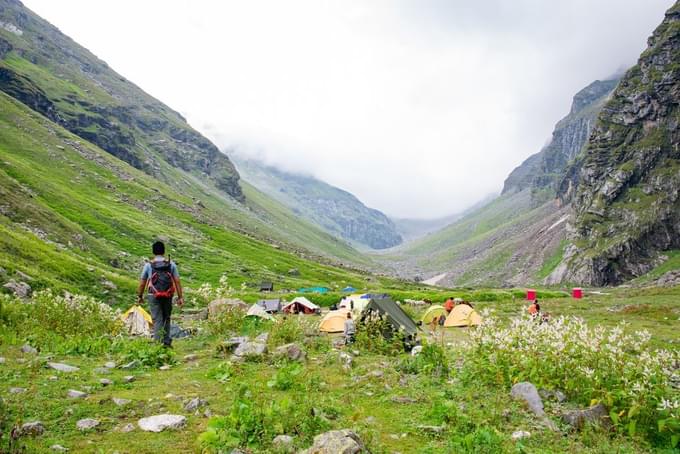
Get your medical checkup done to ensure fitness before you go on a trek.
People with heart, respiratory and blood pressure problems should not go trekking without a doctor’s advice. The trek is also not recommended for pregnant ladies.
You will need to abide by government rules and complete the trek within the stipulated time frame of 4 am to 1.30 pm.
Pay attention to your trek instructor and follow the traditional Kedarnath trek route.
If you are unable to complete the trek in a day, there are several places in between where accommodations are available.
Carry some light snacks such as dry fruits to keep you energized. You can also stop at the several food stalls and eateries on the way to get some food.
Wear clothes and shoes that are comfortable for trekking.
Carry a medical kit which may come in handy for sprains, cuts etc.
Be careful as you walk. Do not get distracted while walking, which might result in losing your foothold and spraining your legs.
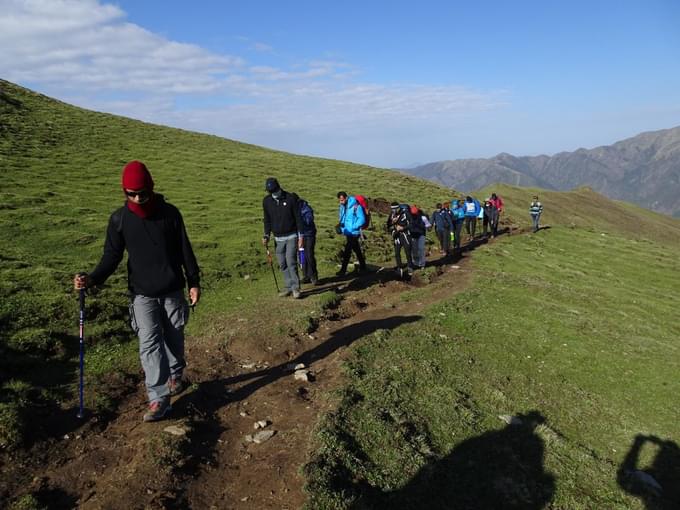
There is only one route which you will be taking when you go on your Kedarnath trek.
Base Camp: Gaurikund: You will be starting at the base camp at Gaurikund which is located 5 km from Sonprayag. Your vehicle will take you to Sonprayag and from there you have to travel by shuttle or jeep to reach Gaurikund.
First Stop: Jungle Chatti: Once you start from Gaurikund, you will need to trek through the Rambara Bridge for 4 km to reach Jungle Chatti.
Second Stop: Bheem Bali: The trek from Jungle Chatti to Bheem Bali is 3 kilometers and has a spectacular view of snow-capped mountains and temple walls. There are accommodations available here for those who want to take a break or stay the night.
Third Stop: Linchauli: Next is the 4 km trek from Bheem Bali to Linchauli. The trail has a stunning mountain view for you to enjoy. Linchauli also has accommodations for those who wish to stop and stay the night.
Fourth Stop: Kedarnath Base Camp: You will need to travel for 4 km from Linchauli to reach the base camp. You can opt to stop here for the night or proceed to reach the temple.
Final Destination: Kedarnath Temple: You will only need to travel for 1 km to reach the Kedarnath Temple, your final destination.
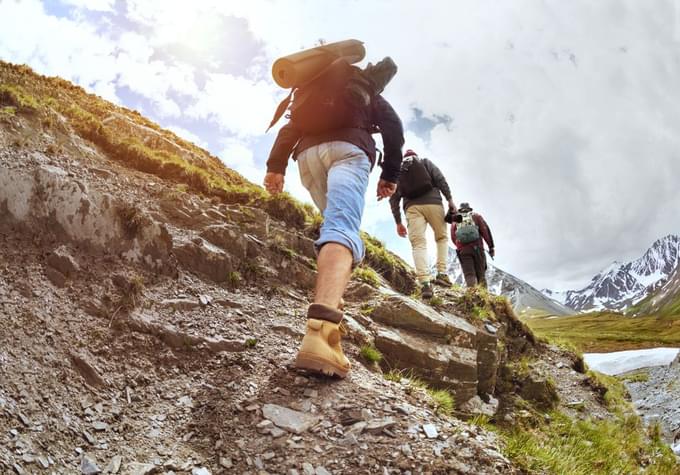
Summer (April to June): During this time, the weather is comparatively warm and there is no rain and snowfall. You will be able to enjoy trekking during these months as the temperature will be mild. Also, the weather is ideal for visiting the temple, sightseeing and indulging in activities. The temperature is around 17 degrees during these months.
Autumn (September to October): The weather during these months is favourable, making it ideal for trekking. You will be able to enjoy the scenic beauty of the surroundings with the clear sky while travelling during these months.
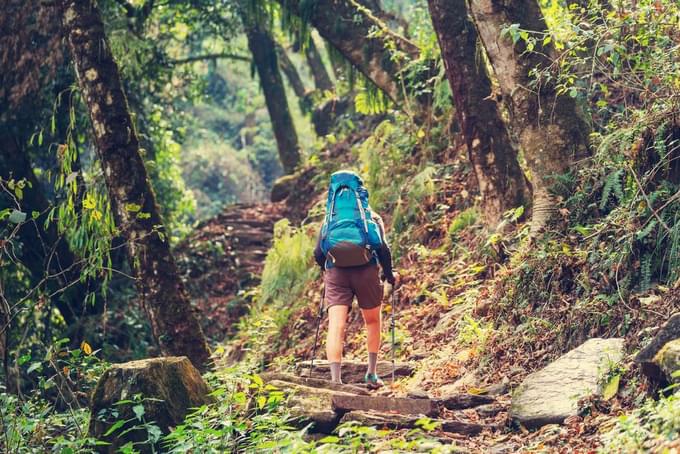
By Air: Rishikesh does not have an airport of its own but you can fly to its nearest airport, Jolly Grant Airport in Dehradun. The airport received daily flights from several major cities in India. You will need to travel for 35 km to reach Rishikesh from Dehradun. You can opt for a taxi or go for bus services available from Dehradun. The other alternative is to reach Delhi by flight and take a bus to reach Rishikesh.
By Road: Rishikesh is well connected with several cities and states by road by National Highway 58. You can get buses from Delhi, Haridwar, Dehradun and other places and reach one of the two bus stands of Rishikesh - the Main Bus Stand and the Yatra Bus Stand. Alternatively, you can also take a rented vehicle and travel by road. If you are traveling from Delhi, you can reach in 6 to 7 hours via Modinagar and Roorkee. Those traveling from Dehradun can also opt for a shared jeep.
By Train: Rishikesh has its own railway station but only few trains which run on a daily basis. Hence, it might be better to travel by train to Haridwar which is well connected with major cities of India. Once you reach Haridwar, you will need to travel for 25 km to reach Rishikesh by a bus or a taxi.
General Trivia About Kedarnath

Kedarnath in local dialect means ‘lord of fields’, named after Kedar, the deity who is an incarnation of Lord Shiva who is considered to be the embodiment of all passions - love, fear, hatred, death and mysticism, expressed through his various forms.
Legend has it that Lord Shiva hid in a form of bull to avoid the Pandavas. One of the Pandavas, Bhima recognised him and tried to capture the bull from behind. But before Bhima could catch the bull, it disappeared, and later the hump of the bull appeared in Kedarnath and is worshiped since then.
Why to Go for Kedarnath Trek?
Going for the Kedarnath trek is one of the most popular and scenic treks in India, where you find beauty, peace, and amazing memories. It is a highly celebrated pilgrimage site and is one of the Chota Char Dham or Char Dham of Uttarakhand. The temple is located at an astonishing height of 3583 m and is very near to Chorabari Glacier, the birthplace of the Mandakini River. The whole area is covered with snow-capped mountains and is spectacular to look at. Once you start your journey from Rishikesh, you will be mesmerized by the stunning scenic view, first of the Ganges flowing along with you and then by the beauty of the famous Kedarnath Mountain. The trail is not too difficult, hence if you enjoy a good health condition, you can go for this trek, even if you are a novice.
FAQs of Kedarnath Trek
How difficult is the kedarnath trek.
Being at an elevation of 3583 m, Kedarnath trek may prove to be a moderate-level trek, which is strenuous for those trekkers who are beginners. Hence, it is strongly advised that they go for a medical fitness test to ensure that they are physically fit. They should also learn about altitude sickness and inform their trekking guides as soon as any symptom is noticed. People with heart, respiratory and blood pressure problems should not go trekking without a doctor’s advice. The trek is also not recommended for pregnant ladies. Those who feel that they will not be able to continue the trek for 5-6 hours may take a break at Bheembali or Linchauli and stay overnight and continue the journey the next day.
Is the Kedarnath trek safe?
Yes, the Kedarnath trek is very safe and reliable, in spite of being located at a high altitude. The government has taken initiative to build new trails and better safety protocols to ensure safety for all trekkers.
Can the Kedarnath trek be completed in one day?
Yes, it is possible to complete the trekking in one day. The trekking trail from Gaurikund to Kedarnath camp is 16 km and it takes 5 to 6 hours to reach there. If you start early in the day, it is possible to complete the trek in a single day. However, the Kedarnath trek is also adventurous and strenuous, so you will need to plan the trip as per your ability.
Can we do the Kedarnath trek at night?
No, as per Government norms, you can only do the Kedarnath Trek between 4 am till 1:30 pm. This timing has been set keeping in mind the safety of the travelers. So if you start late and cannot complete the trek by 1:30, you can make a stopover at Jungle Chatti, Bheem Bali or Linchauli and start your journey the next morning.
What clothing should I wear for the Kedarnath trek?
It is preferable to wear clothes which are comfortable. The best is to wear trek pants, t-shirts and a jacket. You must carry woolens as it will be chilly once you reach the top. Wear a head cover such as a cap to cover your head. Wear a sunglass for eye protection and wear sturdy well-fitted trekking footwear so that your feet do not hurt during the trek.
Where should I stay while trekking in Kedarnath?
There are several hotels and guest houses at Sonprayag as well as Gaurikund where you can stay before or after your trek. Guest Houses and cottages are also available at Kedarnath Base Camp for you to stay in once you reach the final destination. You can also stay at guest houses and dormitories near the temple as well. If you need to stop during your journey from Gaurikund to Kedarnath Base Camp, you can stay at accommodations available at Jungle Chatti, Bheem Bali or Linchauli.
What are the common mistakes that you need to avoid while trekking?
Do not carry too much weight.
Do not hike too fast or slow.
Do not wear clothes which can make you uncomfortable.
Do not go on the trek without consulting a doctor to ensure fitness.
Do I need to register with the Uttarakhand Government before going for the Kedarnath trek?
Yes, you will need to register with the Uttarakhand Government before going for the Kedarnath trek. You can either register online beforehand or register at Sonprayag before your trek.
Treks in Himachal
Treks in uttarakhand, weekend treks in india, treks in ladakh & kashmir, treks in nepal, treks in sikkim.
.png?w=auto&h=400)
The content and images used on this site are copyright protected and copyrights vests with the respective owners.
© 2024 www.heyhimalayas.com All rights reserved.

Wildcraft App
Easy Checkout & Free Shipping in App

- CORPORATE GIFTING
Use code APP10 during checkout for additional 10% OFF (Applicable only for app transactions). Use code SAVE10 for additional 10% OFF on min cart of 1999 (Applicable only for the first-time purchaser) and SAVE15 for additional 15% OFF on min cart of 2999 (Not applicable on Backpacks and Luggage)

TOP SEARCHES
- RAIN CHEATER
- HIKING SHOES
- TRAVELCASES
- Jackets & Cheaters
- Sweatshirts & Pullovers
- Joggers & Trackpants
- Pants & Cargos
- Shorts & Cargo Shorts
- Shirts & Tshirts
- Rain Jackets
- Rain Suits & Ponchos
- Thermal Tops
- Thermal Bottoms
- Caps & Hats
- Mufflers & Gaiters
- Travel Cases
- Soft Trolleys
- Hard Trolleys
- Hybrid Trolleys
- Travel Gear
- Duffle Bags
- Duffle Trolleys
- Belts & Wallets
- Travel Accessories
- Technical Gear
- Sleeping Bags & Tents
- Laptop Backpacks
- Messengers & Portfolios
- Trousers & Trackpants
- Capris & Leggings
- WiKi Essentials
- WiKi Rainwear
- Campus Backpacks
- WiKi Boy Backpacks
- WiKi Girl Backpacks
- WiKi Junior Backpacks
- WiKi Slings & Messengers
- Wiki Disney Collection
- WiKi Accessories
- WiKi Lunch Bags
- WiKi Pencil Pouches
- WiKi String Bags
- Wiki Disney Accessories
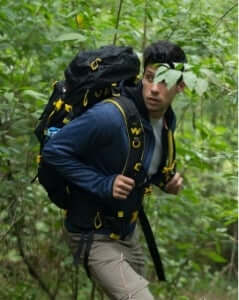
- Luggage Sizes
- Check-in Bags
- Teen's Packs
- Teen's Accessories
- Men's Clothing
- Men's Jackets & Cheaters
- Men's Sweatshirts & Pullovers
- Men's Tracksuits
- Men's Joggers & Trackpants
- Men's Pants & Cargos
- Men's Shorts & Cargo Shorts
- Men's Shirts & Tshirts
- Men's Rain Jackets
- Men's Raincoats
- Men's Rain Pants
- Men's Rain Suits & Ponchos
- Men's Essentials
- Men's Briefs
- Men's Trunks
- Men's Vests
- Men's Socks
- Men's Caps & Hats
- Men's Mufflers & Gaiters
- Men's Gloves
- Men's Thermal Tops
- Men's Thermal Bottoms
- Men's Supermasks
- Women's Clothing
- Women's Jackets & Cheaters
- Women's Sweatshirts & Pullover
- Women's Shirts & Tshirts
- Women's Trousers & Trackpants
- Women's Capris & Leggings
- Women's Rain Jackets
- Women's Raincoats
- Women's Rain Pants
- Women's Rain suits & Ponchos
- Women's Essentials
- Women's Socks
- Women's Caps & Hats
- Women's Mufflers & Gaiters
- Women's Gloves
- Women's Supermasks
- Teen's Clothing
- Teen's Essentials
- Men's Shoes
- Hiking & Trekking
- Even Terrain Running
- Travel Sandals
- Women's Shoes
Kedarnath Trek - A Complete Travel Guide & Tips

Introduction
The best time to visit, the trek itinerary, highlights of the journey, things to keep in mind, things to carry, frequently asked questions (faqs), what is required for kedarnath trekking.
The Kedarnath trek is of moderate difficulty and would require you to carry: A 20-30L capacity rucksack, warm clothes ( jackets , windcheater, and thermal wear), accessories like head gear, gloves, and muffler, personal medical kit and rain cover.
How difficult is the Kedarnath trek?
It is quite easy to cover the Kedarnath Trek, especially since there are multiple transport options available there to make it smoother.
How long is Kedarnath trek?
The Kedarnath Trek covers a distance of 16km and takes almost 6 hours to complete.
Which month is best for Kedarnath?
April-June is the best month to undertake the Kedarnath Trek as the days are quite pleasant, with temperatures ranging between 15 and 25°C with cool breezes.


Kedarnath Trek and Yatra – Where, What & How? All the information you need
Treks & hikes , Uttarakhand
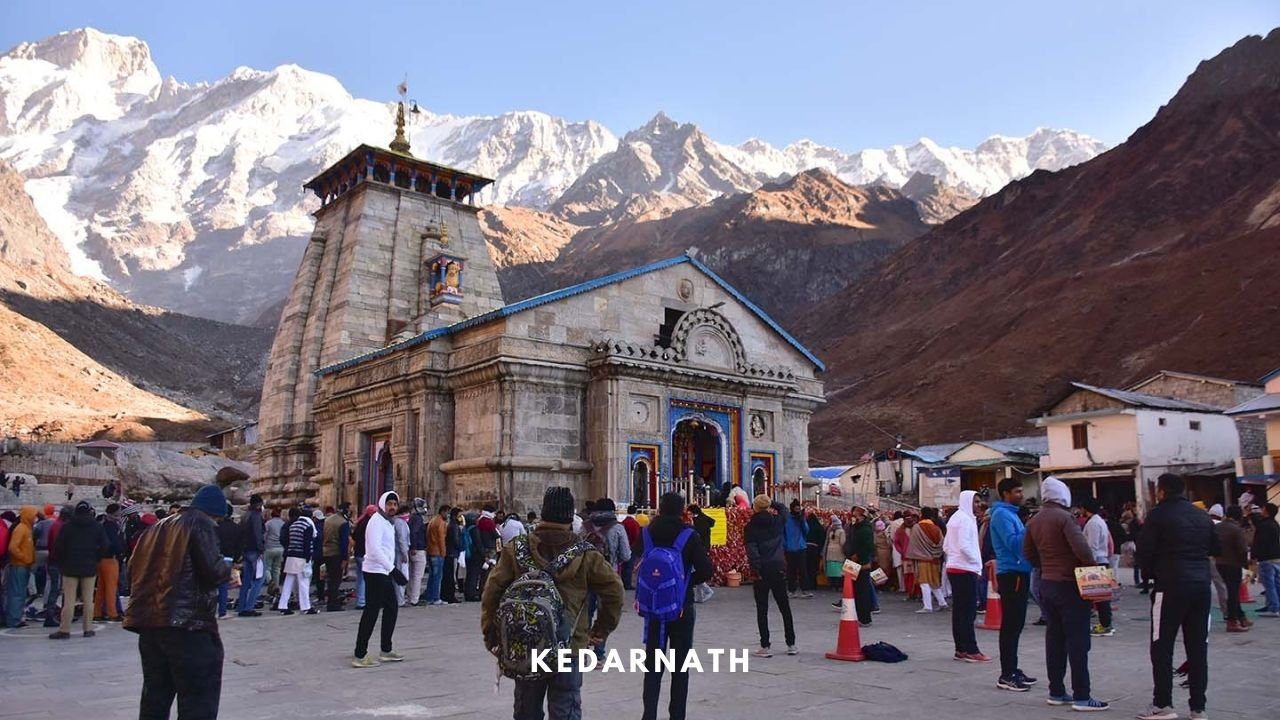
Last Updated on: May 16, 2024
About this Blog: Kedarnath Yatra is one of the most spiritual pilgrimages in India. Kedarnath, the abode of Lord Shiva attracts thousands of devotees within a span of 6 months when the shrine remains open. Kedarnath is a part of the sacred Char Dhams (4 pilgrimages) as well as a part of the Panch Kedars . This blog is about our experience of the Kedarnath Trek done in the month of October. Read on to know more about Kedarnath Yatra, how to reach and where to stay and other related information.
Kedarnath is not just a place of pilgrimage for me. The place has much more significance. It was the first place that I had ever travelled with my family. I do hear every now and then that I had been a very difficult 2-year-old during that time who gave a tough time to my parents. Well, what else to expect from a toddler! Now after almost three decades, I was again ready for Kedarnath Yatra again with Agni in tow. Only this time, we decided to go on foot from Gaurikund and I was quite excited about the Kedarnath trek.
This trip was going to be a special one, not for a singular reason. To be honest, I was way too excited to visit a place that has such nostalgic memories for me. The moment we told our families about this trip, my father started telling me stories about “that” Kedarnath Yatra that happened almost 30 years ago. By stories, he meant all the embarrassing episodes of a two and a half-year-old on a trip with the family. It seemed he divulged all my idiotic secrets to my husband, who of course, did not forget to tease me later.
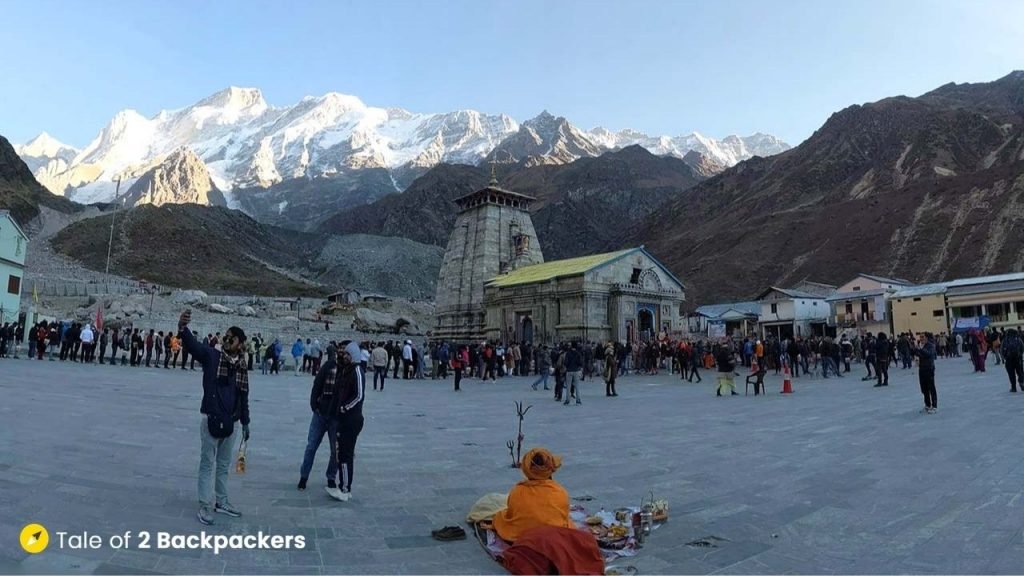
My uncle was quite excited to know we were visiting Kedarnath and Badrinath. He recalled all the special places and even told me to take pictures in the same pose as we had done previously. So much for changes! Overall, going to Kedarnath was exciting not only for us, but also for my family.
For Agni and me, Kedarnath trek was important because we were again trekking the Himalayan trails after almost 2 years. All these years, we had done a few short treks in the Western Ghats and the David Scott Trail in Meghalaya. We thought Kedarnath trek might be the catalyst that would overcome the drought in our trekking trips. After all, it was after Amarnath Yatra that we had fallen for trekking! So enough of my ramblings, let us start with all the information you wanted to know about Kedarnath Yatra, Kedarnath Temple and of course our amazing experience there.
Table of Contents
Where is Kedarnath located?
Kedarnath Dham is a part of the Char Dhams Yatra (4 religious places) that also includes Gangotri, Yamunotri and Badrinath. Located in the Rudraprayag district of Garhwal region in Uttarakhand, the Kedarnath temple is located in the Kedar valley below the Chorabari glacier, which is the source of the river Mandakini.
Kedarnath – History, Legend and Stories
It is usually an obsession with me to find out about the past of any place that we visit, especially if the place happens to be a historical and religious place. For temples in India have numerous stories hidden in them. I did the same for Kedarnath.
It is believed that the Kedarnath shrine was buried under the snow for almost 400 years!
Like others, Kedarnath also has its fair share of mythologies and legends. There are various versions on the origin of the Kedarnath Temple. While there are claims that the temple was resurrected and built by the great Hindu seer Adi Shankaracharya in the 8th century while others claim that it was built by the Hindu King Raja Bhoj of Malwa in the 2nd century AD. Well, as I said before, there are numerous versions.
Kedarnath finds mention in the great Hindu epic Mahabharata and this is where the legend of Panch kedar comes in. Did I mention before that Kedarnath is also one of the five (Panch) Kedars, the five holy places of Lord Shiva.
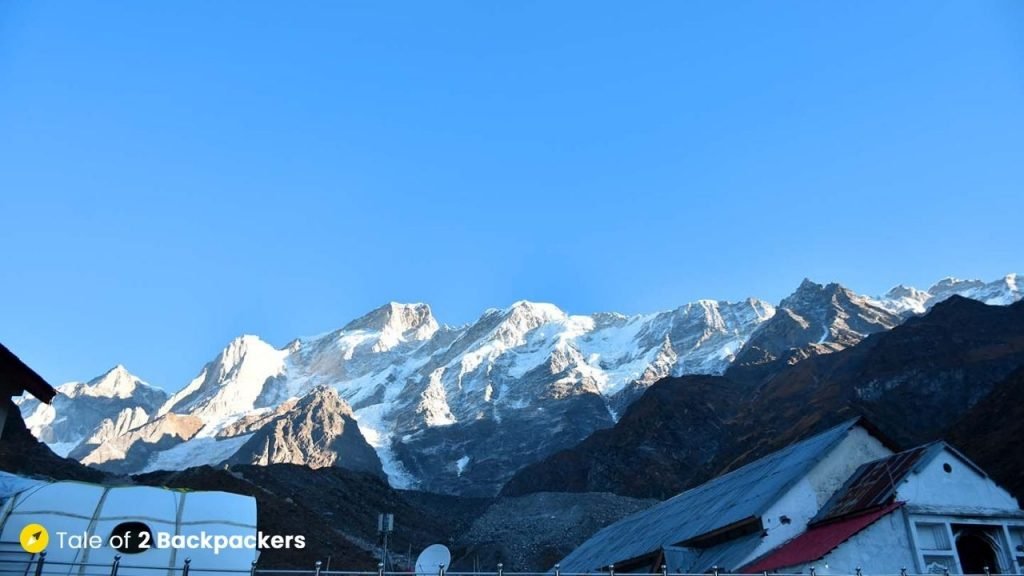
In the epic battle of Kurukshetra where the brothers fought against each other, the Pandavas defeated and killed their cousin brothers Kauravas. The Pandavas killed their own in the battle and were inflicted by self-remorse and guilt. They decided to ask for forgiveness from Lord Shiva, the master of the Universe. With this thought in mind, the Pandavas decided to go to Kashi to ask for forgiveness from God. Lord Shiva, on the other hand, was not too keen on forgiving the Pandavas for their carnage. He left his abode at Kashi and hid as a bull at Guptkashi. Bhima, the strongest of the Pandavas, however, was able to find Lord Shiva in the form of a bull. The bull again escaped and later rematerialized at five places and these 5 places came to be known as the Panch (five) Kedars.
Different parts of the bull materialized at different locations – the hump at Kedarnath, the arms at Tungnath , the navel and stomach at Madmaheshwar, the face at Rudranath and the hairs at Kalpeshwar. It is believed that the Pandavas had built temples at all the five locations and were freed of their sins. It is also believed that the front portion of the bull fell at Pashupatinath in Nepal. The Pandavas built temples at all five locations. It is believed that the Pandavas performed Yagna at Kedarnath before they left for Mahaprasthana (renouncing the world to attain salvation). Incidentally, the Mahaprasthana started from Mana village near Badrinath. That story is for some other time.
There is another story where Nara-Narayan, a Hindu deity worshipped Lord Shiva and Goddess Parvati. He prayed to the Lord and asked him to stay at Kedarnath for the wellbeing of the human beings. Lord Shiva granted him his request and thus Kedarnath became the abode of Lord Shiva.
The Floods of 2013
Kedarnath is also now known for the devastating floods that occurred in the Garhwal region of Uttarakhand in 2013. Surprisingly the Kedarnath Temple was one of the few structures that remained unscathed during the floods.
If the mythology is to be believed, then the temple was perhaps built almost 3000 years ago. However, there are inscriptions of the wall of the temple that dates towards a period in between 650 – 850 AD. How the temple withstood the ravages of the flood has been an area of interest for researchers. The reason is apparently related to the glaciers of the region and the lichens grown there.
Ravinder Kumar Chaujar, a retired professor from Wadia Institute of Himalayan Geology, Dehradun, studied lichens growing on the rocks of Chorabari’s moraines to determine the geological history of the place. Professor Chaujar found that the temple had remained submerged in ice or in the glacier for at least 400 years. This was perhaps one of the reasons for the resilience of the temple. It remained unharmed in the 2013 floods and will perhaps survive further such episodes of flooding.
Kedarnath Trek – Our Experience
As I have mentioned before that we decided to go on foot all the way to Kedarnath from the base point at Gaurikund. The journey started from Haridwar. Local buses from Haridwar to Guptkashi were very few because of the post-pandemic situation. So we rented a car for 5 days for a trip to Kedarnath and Badrinath.
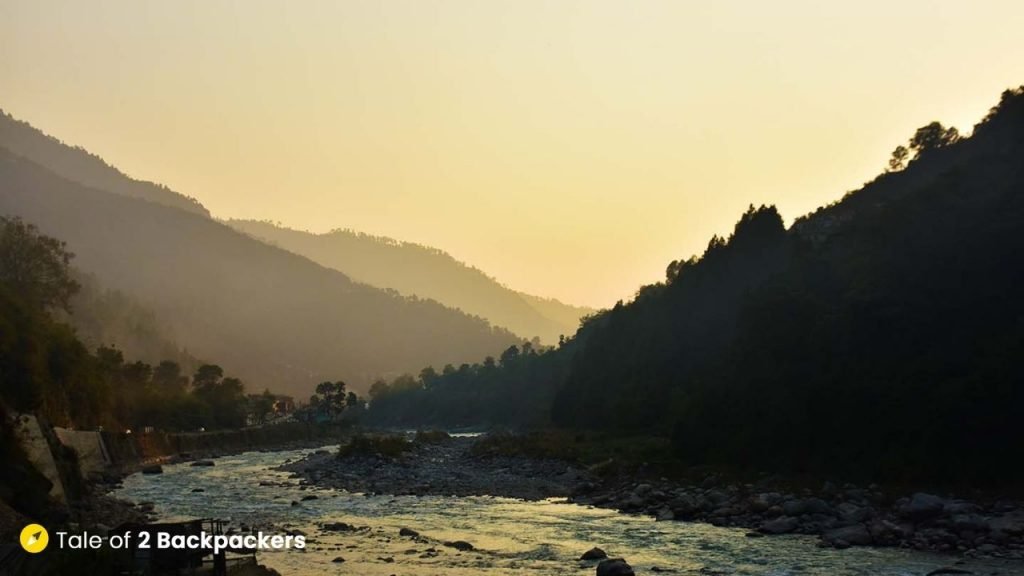
We started early in the morning from Kedarnath and passed through the winding mountain roads. We had been to these parts a few times, but the scenery never failed to enchant me. The meeting of Mandakini and Alaknanda Rivers at Rudraprayag still makes us wistful of the unadulterated beauty of the mountain rivers.
The Mandakini River was our constant companion throughout the road to Kedarnath. We reached Guptkashi at around 3 PM and then decided to travel to Sonprayag. There are a number of hotels at Guptkashi and is one of the places to stay for the night if you reach late.
We reached Sonprayag soon and found a hotel to stay for the night. We found a number of hotels at Sonprayag well but the majority of them were closed. It seemed this season the number of pilgrims were lesser than previous years, the reason being obvious.
Earlier, Sonprayag was the starting point of Kedarnath Yatra. But now, a motorable road upto Gaurikund has been built and the 5 km distance from Sonprayag to Gaurikund can be travelled by a shared jeep.
We started quite early in the morning. Once we were at Sonprayag, we headed towards the Yatra Registration Counter. To conduct the Chardham Yatra in a controlled manner after the flash floods of 2013, the number of Yatris (pilgrims) visiting the Kedarnath shrine is regulated. Yatra registration can be done online and you get an e-pass. You can do it yourself or ask your agent to do it for you. There is also a counter for getting the Yatra e-pass at Sonprayag. A man was sitting with a laptop and was making the Yatra e-pass for a fee of Rs.50/-.
We had our Yatra e-pass with us and went to the Registration Counter directly. They recorded the e-pass number, did thermal screening and we were given the permission to start our Yatra. Every year, the pilgrims get a physical pass as well. We did not get it this year, perhaps because of the lesser number of pilgrims.
Sonprayag – Gaurikund
As soon as we got ourselves registered for Kedarnath Yatra, we walked towards the jeeps standing for taking the yatris to Gaurikund. We got our seats in the jeep and were soon at Gaurikund. The jeep fare was Rs30 per head.
The Kedarnath trek route starts from Gaurikund and concludes at Kedarnath covering a distance of 16km. The trekking route had changed and rebuilt after the flash floods of 2013. The old trekking route has now given way to a better and wider trekking trail.
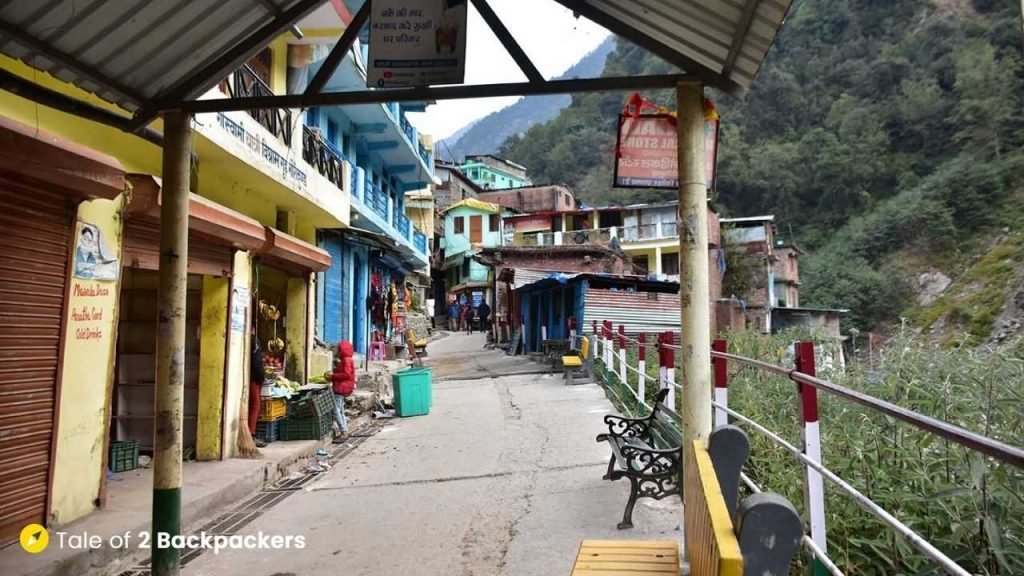
Kedarnath Trek Starts
The trek starts at Gaurikund. “Kund” literally means a reservoir and Gaurikund has a hot water spring where the pilgrims usually have a bath before embarking on the Yatra. The hot spring no longer exists after the floods of 2013. Now, there is a huge enclosure where pilgrims can take a bath.
Gaurikund is also known for the Gauri Temple dedicated to Goddess Parvati. Close to the Gauri Temple is the Uma Maheswar Temple where Lord Shiva is worshipped in the form of a rock.
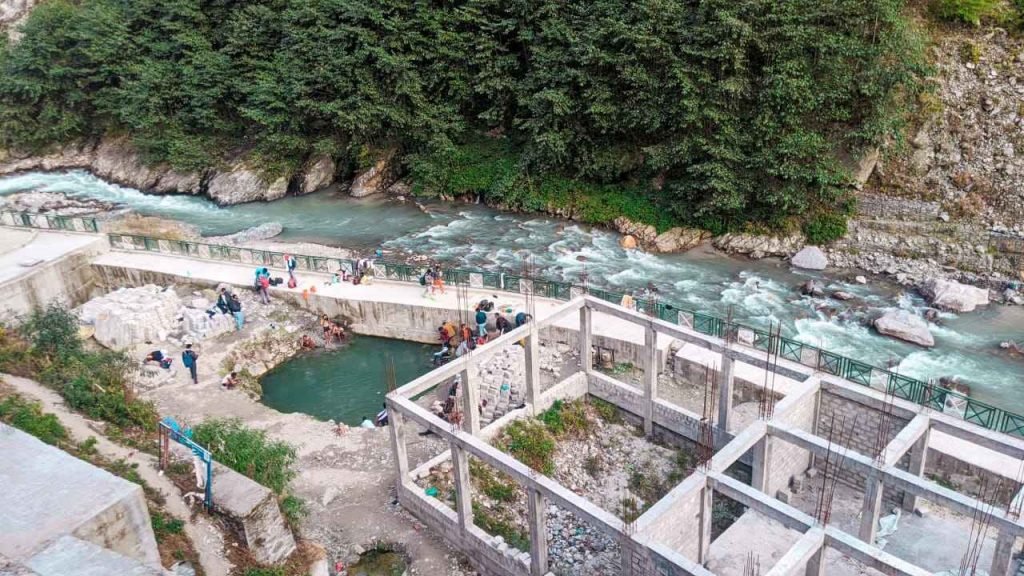
Gaurikund is congested and there are a number of shops catering to all the needs of the travellers. There are a number of accommodation facilities as well at Gaurikund.
We started from Gaurikund at around 8 AM. The Mandakini River was gushing down with beauty and spirit. As much as I wanted to stay there and admire the sprightly river, we had to start our trek towards Kedarnath Temple.
About half a kilometer from the starting gate, is a booking office for horses, mules and palkis and Pitthus . Pitthus are basically men carrying the pilgrims on their back. Usually very old and young pilgrims take the service of Pitthus . There is a fixed rate for mules and Pitthus . You can book them from here. However, you will find mules almost entirely through the trail.
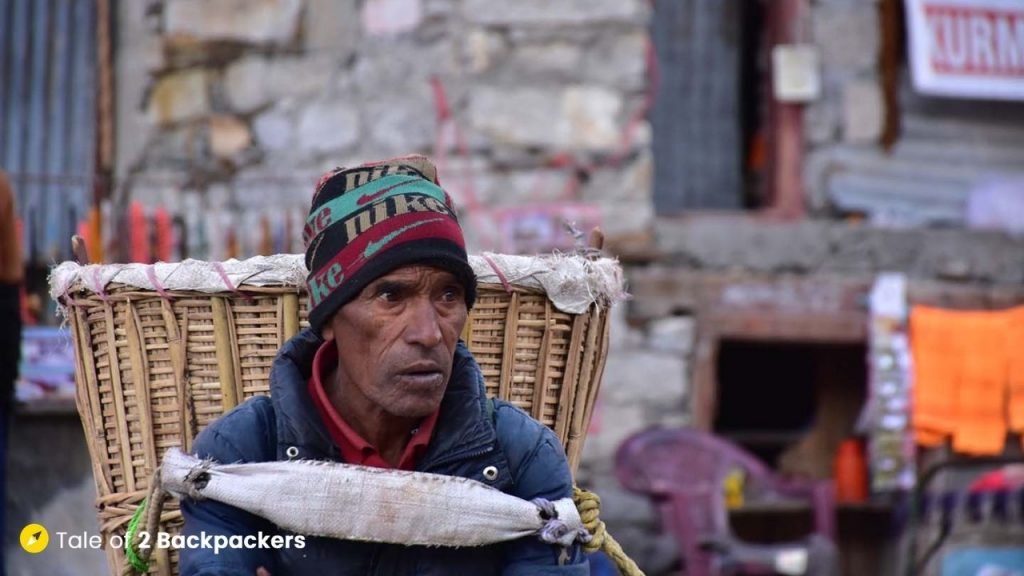
After a kilometer of trekking comes the Horse Point (Ghoda Pul) or the place from where you can get on your horses or mules to carry your journey. The horses are allowed from this point only. Upto this place, the trail is quite crowded with horses, mules and their owners. And don’t you forget, they will constantly ask you to get a mule for the journey! I had been told at least 15 times that I should take a horse to Kedarnath.
We trekked along the well-made trail. As usual, very soon we were quite tired and panting. Our legs were screaming for respite. Well, this is what happens if you are out of any fitness regime and had not trekked for almost a year! Nevertheless, we continued to trek. Though I must admit that there were a couple of moments when I felt that I should have hired a mule.

The next significant stop on the trail is the Bheembali. The trekking route bifurcates at Bheembali – one for the trekkers and the other specially designated for horses and mules. Both the trails finally meet after Rambara.
Rambara was once one of the biggest settlements in the Kedarnath trek route. The floods of 2013 had completely wiped off the settlement. What remains now is the debris of the old trekking route which was pointed to us by a local shopkeeper. It is also here that we see the Mandakini River flowing down with force through the gorges.
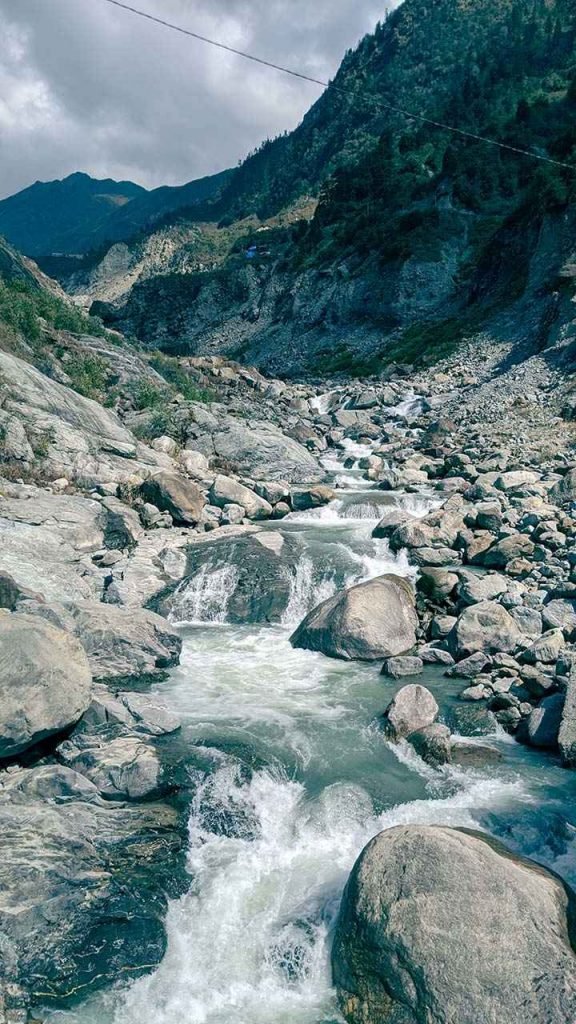
The older route to Kedarnath was through the left of Mandakini River and that route is now completely destroyed. The new route has now been constructed at the right side of the river. A few more minutes of trekking and we reached Chhoti Lincholi. It was almost 12.30 PM at that time and we decided to take a lunch break there. This place can be roughly said to be the midpoint of the trail.
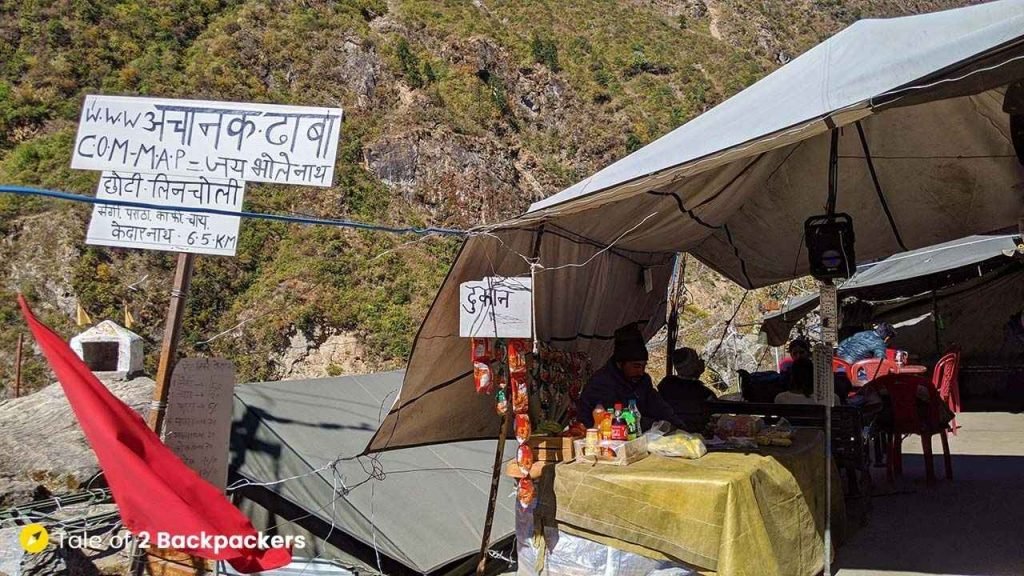
We had a good lunch of alu paratha at Chhoti Lincholi and were quite ready for our next stretch of the trek. And it was then, something sort of a miracle happened. It started snowing! Well, not exactly all the big snowfall, but we could see the snowflakes on the tents and on us.
To be honest, it was a bright and sunny day when we started. The snowfall made all the people quite happy and a group started singing a local song. We were told that it was the second snow of the season and all the locals were quite happy to see the snow. We enjoyed the snowfall for almost half an hour after which it stopped.
The snowfall might have had us gushing like diehard romantics, but it definitely made the trail a bit difficult for us. We were already late for more than an hour and the weather became chilly. It was a lazy start after lunch and snowfall and gradually we trekked our way towards Kedarnath.
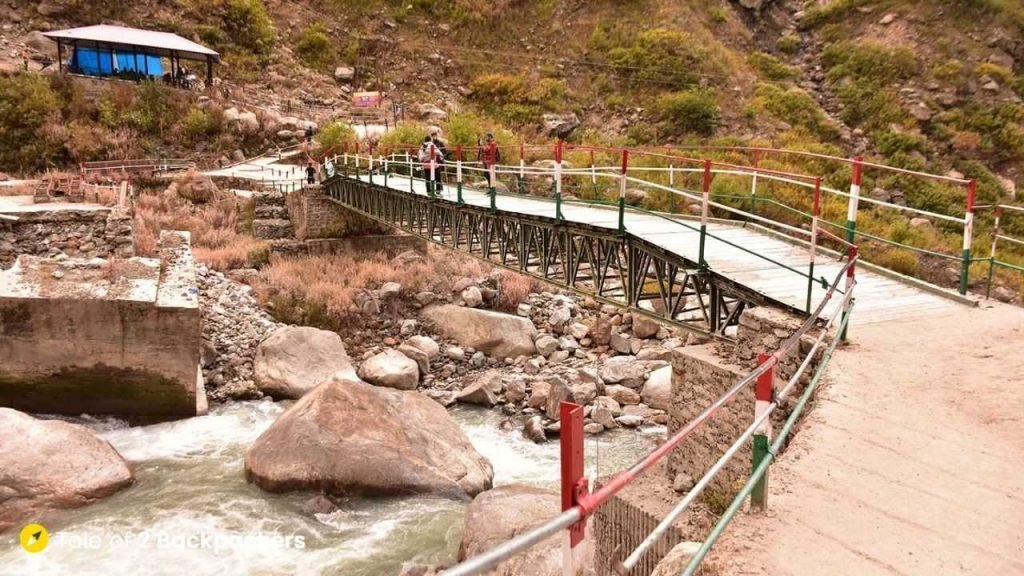
Finally, we reached Lincholi. There are a few accommodation options at Lincholi. You can stay here for the night. Kedarnath is about 6 km from Lincholi. As much as we were tempted to stop at Lincholi, we decided to trek all the way to Kedarnath. After trekking for another hour, we reached Kedarnath Base Camp.
There is a GMVN Guest house and cottages at Kedarnath base Camp. Kedarnath shrine is another 500 m from here. There is also a check post here where they check the registration slips. They only ask for the e-pass numbers and really do not check any slips. We trekked towards the shrine and finally we reached there at around 4PM. Once we reached Kedarnath, we tried to look for a place to stay. There are a number of places to stay near the shrine, mostly dormitories. We finally chose to stay at Bikaner House just behind the Kedarnath Temple.
We were quite in time for the evening Aarti at the Kedarnath Temple. The Aarti starts at 5.30 PM. After watching the Aarti, we went to our guest house, had our dinner and simply snuggled into our sleeping bags.
Kedarnath Temple – the end of the trek
We awoke early the next morning and went to visit the Kedarnath Temple. This time we saw the temple in all its glory. The main temple of the Kedarnath remained unscathed in the floods of 2013.
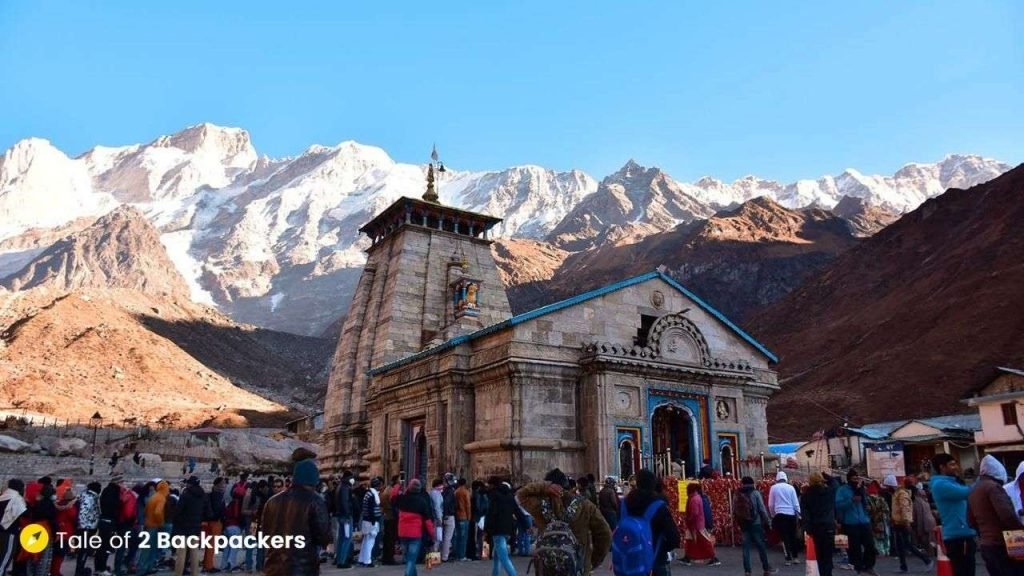
The interior of the temple is a bit dark. There are statues of the five Pandava brothers and Draupadi, their consort. Inside the main hall, there is a conical shaped stone that is said to be the hump of the bull that Lord Shiva transformed into (remember the story I mentioned before). There are statues of Lord Shiva and a few other deities inside the main hall as well.
We offered our prayers in the temple and then roamed around the place for some time. I had a few old pictures when I had visited Kedarnath Temple almost 3 decades back. I tried to connect the places with that of those pictures. Obviously, the place had changed, but the temple had remained intact.
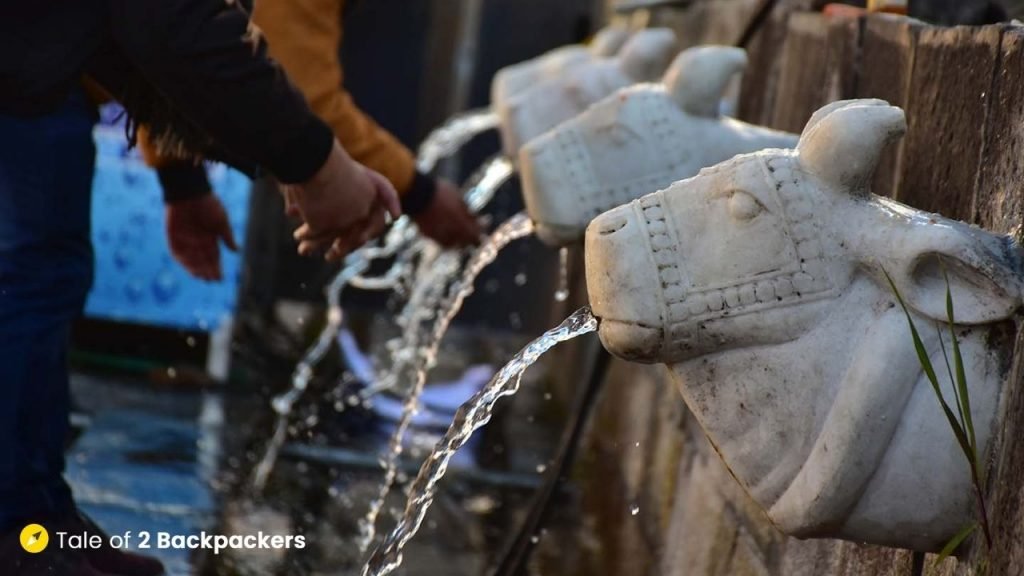
Outside the temple, there is a statue of Nandi, the bull facing the temple. The entire place looks quite beautiful with the snow-covered Kedarnath peak (6940 m or 22,769 ft), the Kedar Dome (6,831 m 22,411 ft) and other peaks surrounding the temple on three sides.
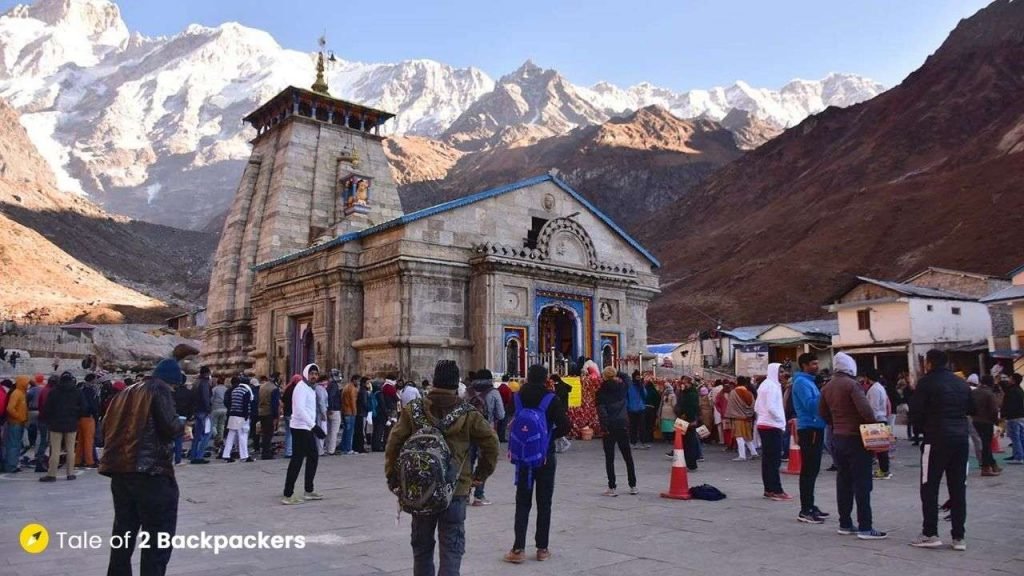
Just behind the temple is a huge rock known as the Shri Divya Bheem Shila. It is believed that this stone had protected the temple from the waters of the flood in 2013. When the waters of Gandhi Sarovar carried large chunks of moraines and stones, this huge stone boulder tumbled down and anchored just behind the temple. This rock then diverted the flow of water to the sides and the temple remained intact.
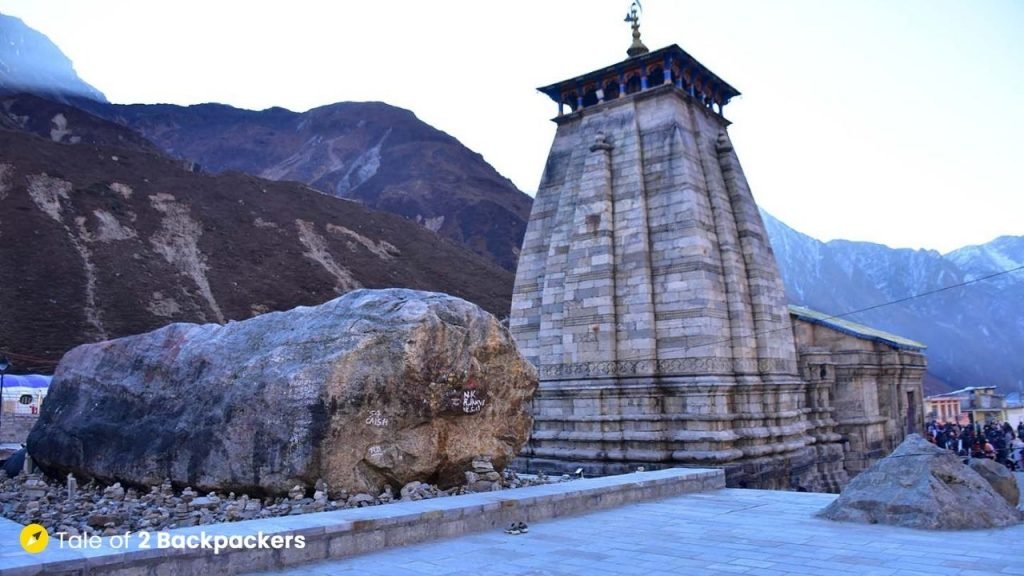
You will invariably feel calmness at this place. All around the temple, you will see many ash-smeared saints and sadhus sitting with a trident (Trishul). They seem to be in a world of their own. It is quite interesting to see these sadhus all around the temple, sometimes singing while at other times having a pot of marijuana.
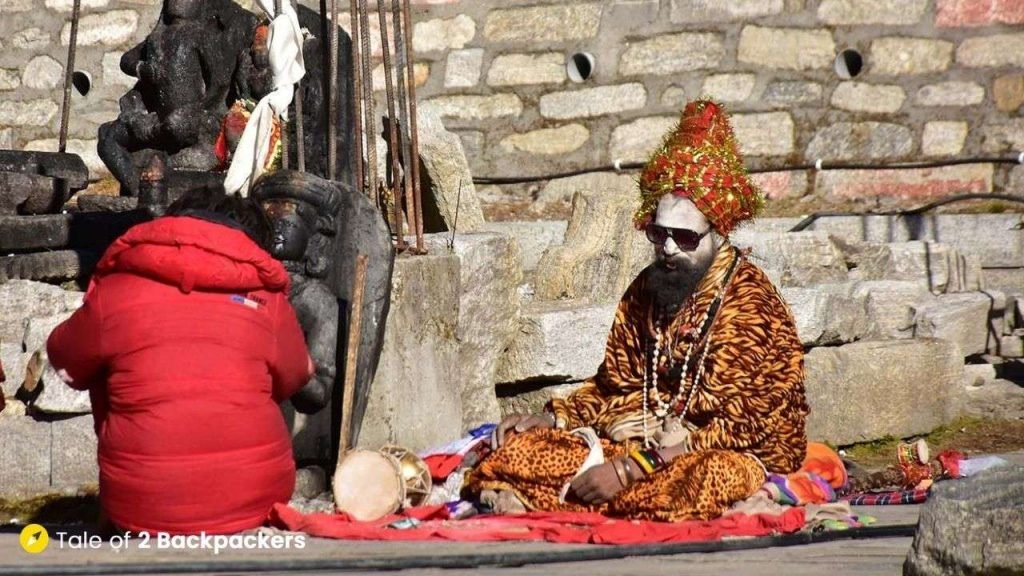
After spending some time around the Kedarnath Temple, we started our return journey towards Gaurikund at around 8.30 AM. We descended to Gaurikund after taking occasional breaks and reached there by 2 PM. Our car had been waiting for us at Gaurikund. We continued our journey towards Guptkashi and decided to stop there for the night before continuing our journey towards Badrinath. Our visit to Badrinath remains for the next story.
Kedarnath Temple Timings:
The temple remains open from 4 AM to 9 PM everyday.
All that you need to know about Kedarnath Trek and Yatra
How to Reach Kedarnath?
Jolly Grant Airport near Dehradun is the nearest airport and is located about 235 km from Kedarnath. Taxis are available from the airport to Sonprayag.
The nearest railway station to Kedarnath is Haridwar or Rishikesh. From Haridwar and rishikesh, you will get direct buses to Guptkashi and Sonprayag. But these buses are few in number. You can check online bus sites to see the time of the buses. Buses to Guptkashi, Karnaprayag, Gopeshwar are now available from Delhi (ISBT) as well.
You can also hire a car to reach Guptkashi or Sonprayag. However, it is better to book a car for both Kedarnath and Badrinath or the entire Char Dham Package. The cars charge a lot more if you only ask them to drop at Sonprayag.
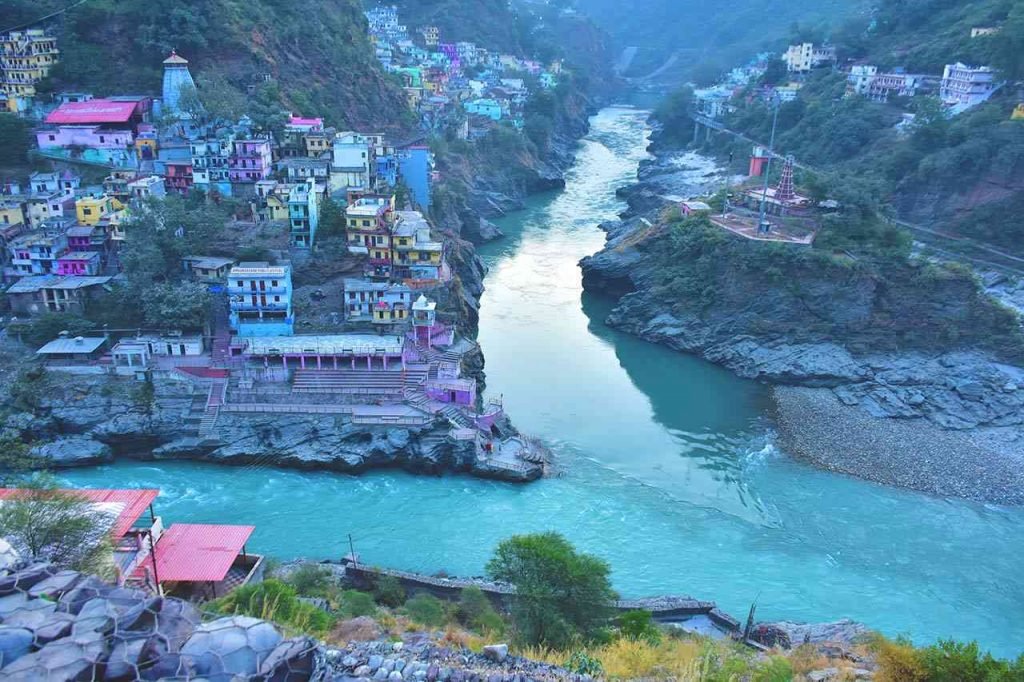
We had hired a car for 5 days to visit Kedarnath and Badrinath and it cost us about INR 11,000 for the 5 days (which I do consider to be cheap). We also stopped at Tungnath and Chopta on the way from Kedarnath to Badrinath.
If you are driving by your own car, you can follow the route:
Haridwar – Rishikesh – Pipalkoti – Devprayag – Srinagar – Rudraprayag – Agastamuni – Guptkashi – Phata – Sonprayag
Sonprayag has a huge parking space where you can keep your car for the night. The Registration centre for the yatra is just a few metres ahead of the parking space.
The distance between Sonprayag and Gaurikund is about 5 km. You can start the trek from Sonprayag or else take the shared jeeps to Gaurikund. The jeep fare is INR 30 per head. The stretch of road from Sonprayag to Gaurikund is quite bumpy and rough.
Gaurikund serves as the base camp for the Kedarnath trek.
From Gaurikund, you can either trek or ride horses/mules to Kedarnath.
Kedarnath on foot (Kedarnath Trek)
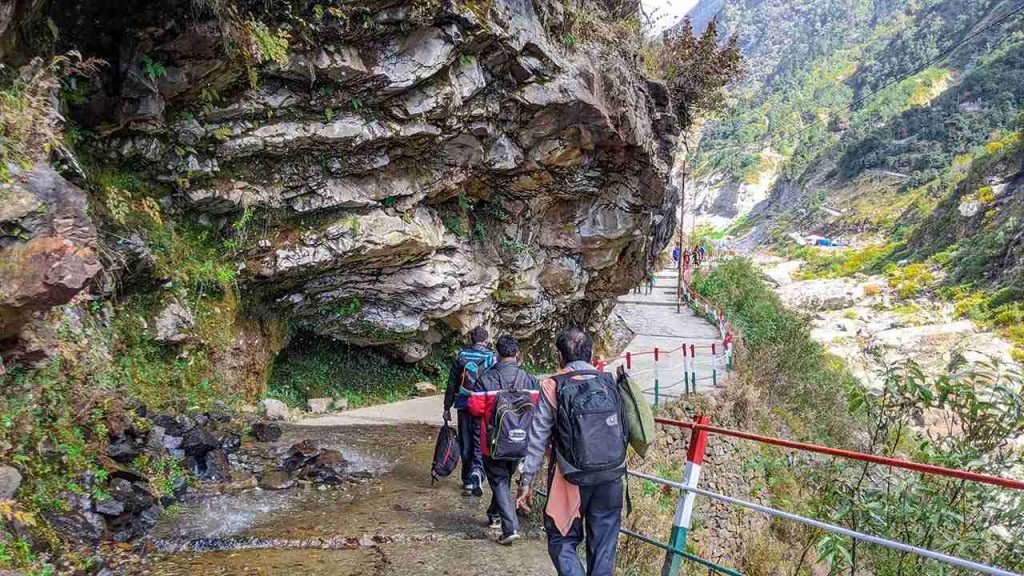
The total trekking distance from Gaurikund to Kedarnath Temple is about 16-17 km.
Kedarnath Trek Route
- Gaurikund – Jungle Chatti (4 km)
- Jungle Chatti – Bheembali (3 km)
- Bheembali – Lincholi (4 km)
- Lincholi – Kedarnath base camp (4 km)
- Kedarnath base camp – Kedarnath temple (1 km)
The entire trail can be covered in a single day on foot. There are a few accommodation facilities in the middle.
Kedarnath by Horses/ Mules and Pitthus
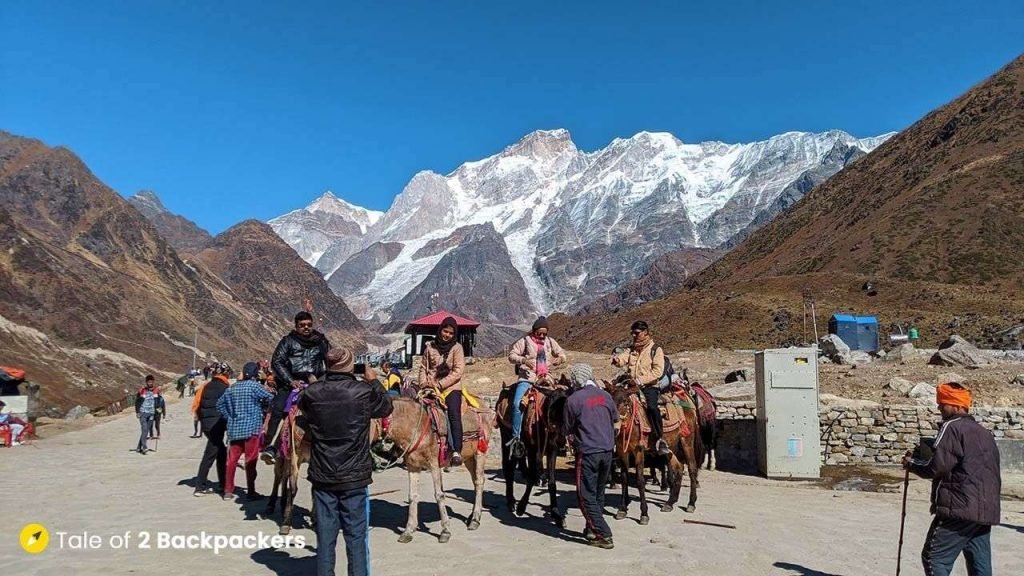
Horses, palkis , kandis and Pitthus are available from Gaurikund to Kedarnath. There is a booking office just before the starting point of the trek from where you can get them. There is a fixed rate for horses and mules. The rate for pitthus and kandis vary with weight. While you will get them easily at Gaurikund, you will also get them on the way.
Tip on riding horses/mules: Bend forward while climbing upward and bend backward while climbing down and hold the saddle tightly.
Kedarnath by Helicopter
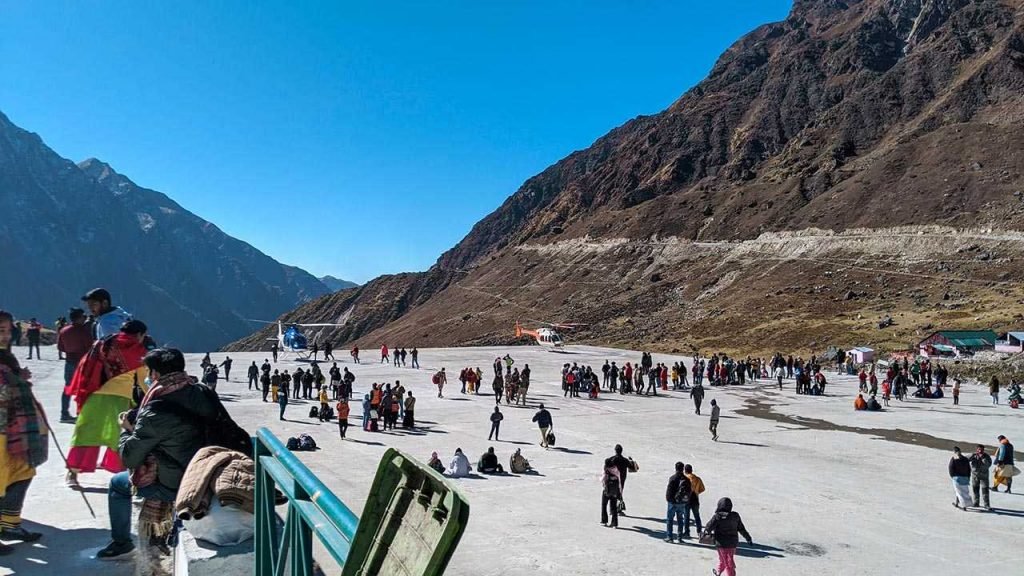
These days many people travel to Kedarnath by helicopter as well. The helipad is at Phata located between Guptkashi and Sonprayag. We found a couple of different operators providing helicopter services to Kedarnath. While Phata is the main place from where you can get helicopter rides, other helipads are found at Sersi and Sitapur. The helicopter would take you to Kedarnath Base Camp, about 1 km from the Kedarnath Temple. This distance has to be covered by foot. Even horses are not allowed beyond a certain point.
Things to remember for Helicopter ride to Kedarnath
- The helipads are at Phata, Sersi and Sitapur.
- Only 2 kg of luggage is allowed per person.
- Additional charges are levied if you weigh more than 80 kg and above 120 kg, 2 seats need to be booked.
- The price of the tickets depends on the helipad you are flying from. Usually a round trip cost somewhere between INR 5000 to 7000.
- If you get the round trip ticket for the same day, then they usually allot 2 hours to visit the temple and come back to the helipad.
- It takes roughly around 10 minutes to fly to Kedarnath Base Helipad and from there it is an easy trek of 15-20 minutes to the Kedarnath Temple.
- Helicopter services might stop at any time due to bad weather conditions.
Where to stay at Kedarnath?
There are plenty of hotels and guest houses at Sonprayag as well as Gaurikund. GMVN Guest Houses are also available and you can book them online.
GMVN Guest House and cottages are also available at Kedarnath Base Camp. There are a number of guest houses and dormitories available near the temple as well. We stayed at Bikaner Bhawan just behind the temple.
Accommodation options are also available on the way to Kedarnath. GMVN Guest Houses are available at Jungle Chatti, Bheemabali and Lincholi. Online booking is available at these guest houses and I would recommend you to book them beforehand if you opt to stay in between.
We stayed at Bikaner Bhawan in a double-bed room which cost INR 2000. Hot water is also available and a bucket would cost you around INR 60 – 70.
The rates of the guesthouses and hotels near the Kedarnath temple can change randomly. We would recommend you to book your stay beforehand if you are visiting with family.
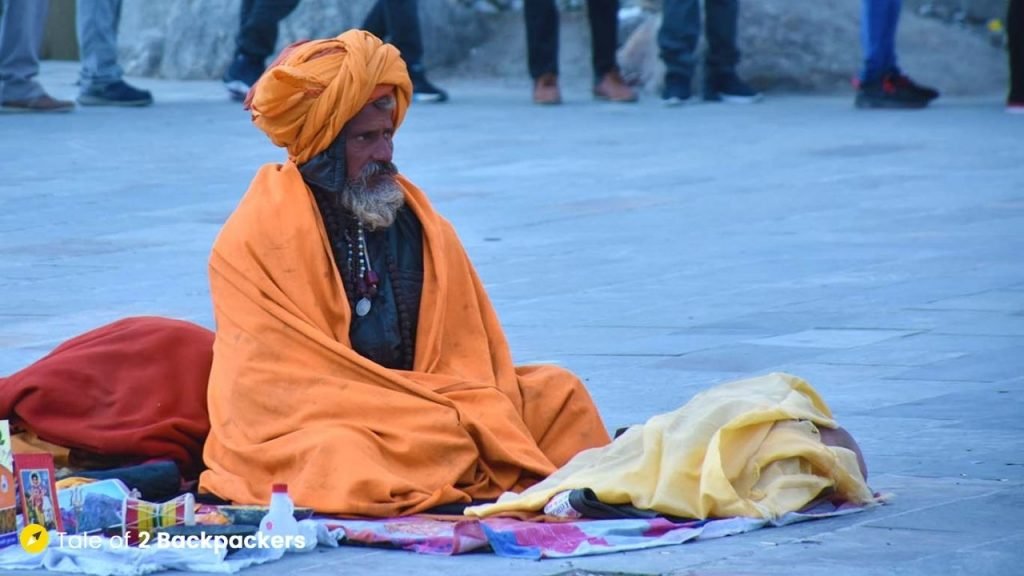
Medical facilities on Kedarnath Trek
Medical centres and facilities are available throughout the way. You can find them in between Jungle Chatti, Bheemabali and Lincholi.
Food, Drinks, Shops and Restaurants on Kedarnath Trek
Most of the hotels, guest houses and GMVN Guest Houses provide food at reasonable prices. The food available is vegetarian and quite tasty. There are many shops available all through the trek route selling Maggi, parathas, snacks and hot beverages. You will definitely not go hungry on your trek to Kedarnath.
Toilet Facilities on Kedarnath Trek
Make-shift toilet tents are available on the way at various places in the trekking route.
Is there Mobile and Internet Service at Kedarnath?
Mobile services are available at Gaurikund till Lincholi. However, it is a bit rough at Kedarnath. We found Jio and Airtel services at Kedarnath while there was no mobile service for Vodafone.
Free wifi is available at the main areas like Jungle Chatti, Bheemabali, Lincholi and Kedarnath. However, do not rely much on the free wifi services. We did not get any during our stay at Kedarnath.
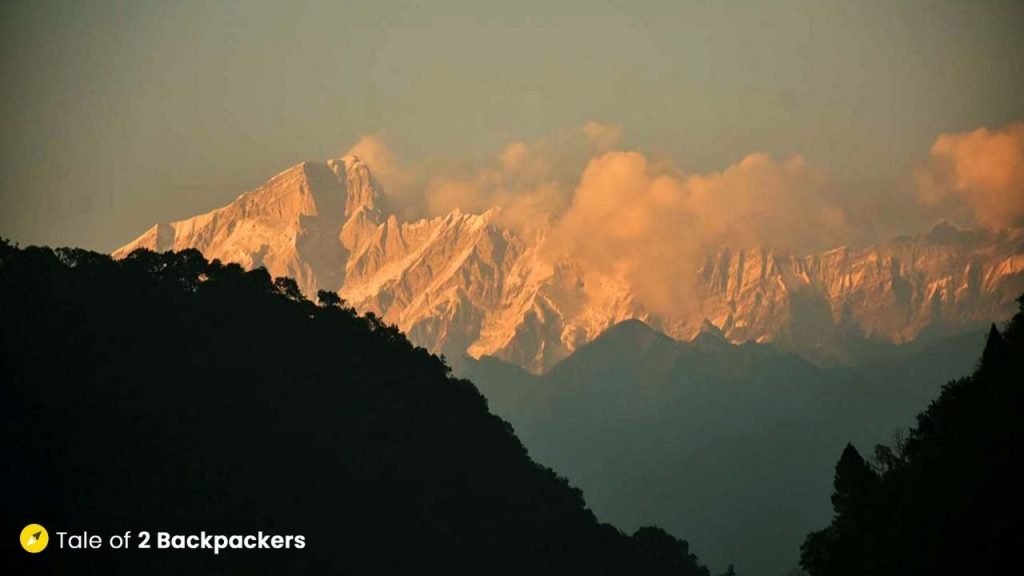
When is the best time to visit Kedarnath Temple ?
Kedarnath is a part of the Char Dham Yatra. The temple opens on the auspicious day of Akshay Tritiya (usually falls in April or May) and closes on the day of Bhai Dooj (falls in October or November). Kedarnath Dham can only be visited during this time.
Kedarnath is located at an altitude of 3553 m and remains cold most of the time. The weather is quite unpredictable in the mountains. Usually May to June and October to November is a good time for Kedarnath Trek. July to September are the monsoon months and there are chances for landslides during this time.
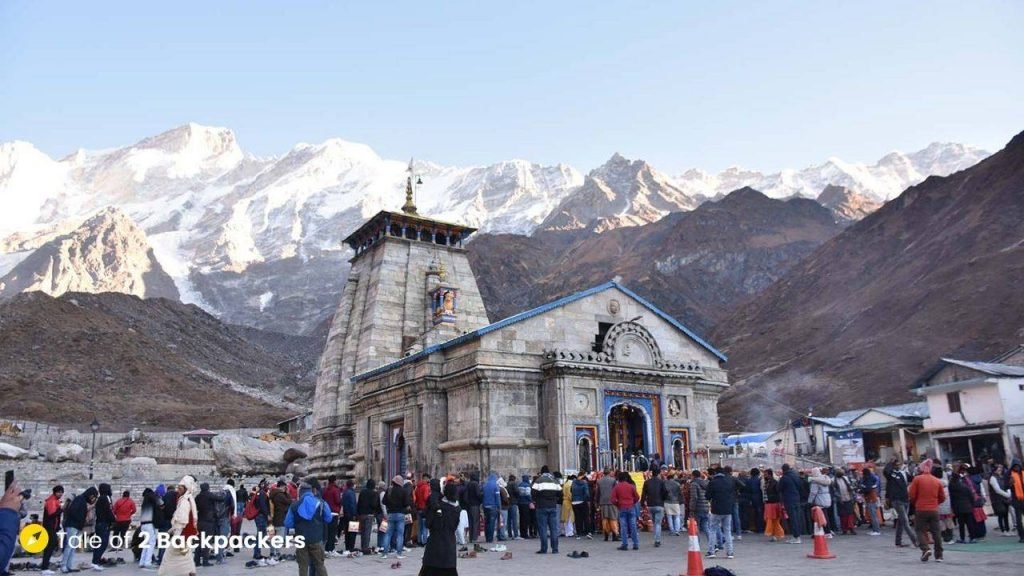
Places around the Kedarnath Temple
Bhaironath Temple
This temple is located at a very short distance from the Kedarnath Temple. It is believed that Bhaironath guards the Kedarnath Temple by keeping the evil at bay.
Shankaracharya Samadhi
This is the resting place of Adi Shankaracharya and is located near the Kedarnath Temple.
Gandhi Sarovar
About 3 km from Kedarnath Temple lies the Gandhi Sarovar that is fed by the Chorabari Glacier. If you wish to trek there, start early in the morning. The weather can change quite abruptly.
Vasuki Tal is located about 8 km from Kedarnath Temple. The trekking trail is quite steep and should be done with the help of guides. The Vasuki Taal offers a great view of the Chaukhamba ranges.
Rudra Meditation Cave
This is an interesting place. Located about 1.5 km from the temple, there is an underground cave available for meditation and isolation. The caves have a window that provides a direct view of the Kedarnath Temple. You can book the cave for yourself for the purpose of meditation for a maximum of 3 days. Obviously, only one person can stay inside the cave. The cave has all living facilities like water, electricity, heater, attached toilet and a phone to call the authorities in case of emergency.
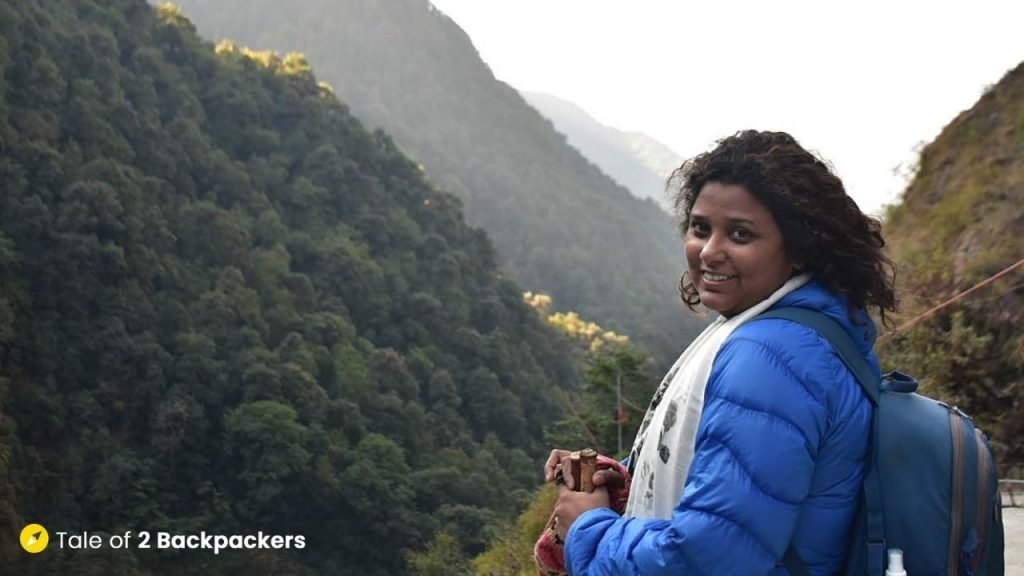
Some interesting Facts about the Kedarnath Temple
- It is believed that the Kedarnath Temple is eternally protected and cannot be harmed.
- Bhaironath Ji is the protector of the Kedarnath Temple and is known as the Kshetrapal. He is the fiery avatar of Lord Shiva and is known for devastation and destruction.
- Kedarnath is one of the 12 Jyotirlings of Lord Shiva. It is infact, the highest of all the Jyotirlings in India.
- After Bhai Dooj, when the temple is closed, the main deity is brought down to Ukhimath.
- The head priest of the Kedarnath Temple belongs to the Veerashaiva community of Karnataka and is known as Rawal. However, the head priest or Rawal does not conduct the ritual inside the temple. He only gives instructions to his assistants. The deity is transferred to Ukhimath during the winter. The puja is performed in Kannada language.
- The temple is said to have been buried under ice for almost 400 years.
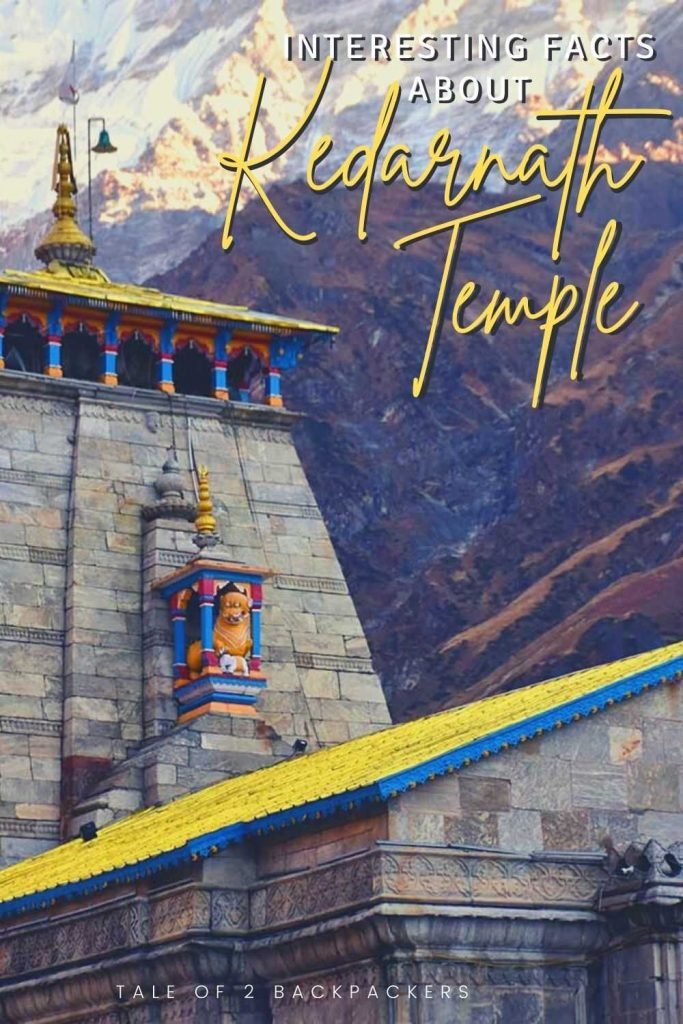
Have you visited Kedarnath? Please let us know your thoughts on this famous pilgrimage. If you liked this post and found it helpful, please share it with your family, friends and neighbours!
Pin it for a later read!
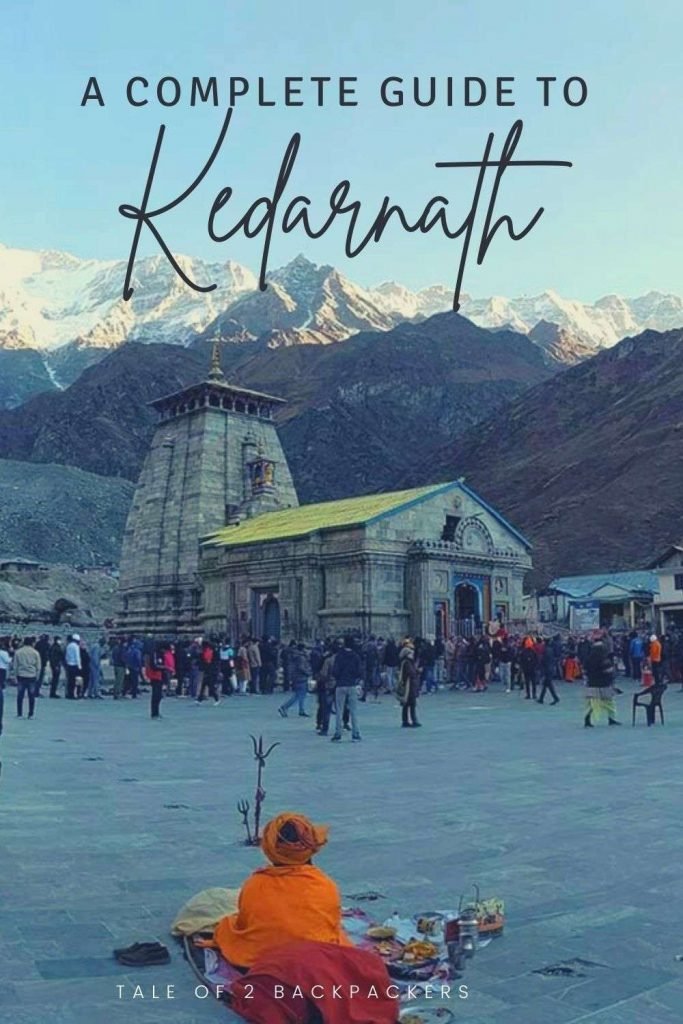
Reproduction of the content, including the photographs without prior consent/permission of the writer and photographer, is not encouraged at all and a violation of the same will attract legal action. If you need anything, Contact Us .

Hey! we’re Agni & Amrita.
We have been travelling together since the last 15 years and writing independent and personal travel content since 2014. Travel is one of the best teachers and through this blog, we aim to share our experiences and travel tips. We encourage you to travel more and see the world through your eyes and not through filtered templates.
Find more about us.
RELATED POSTS
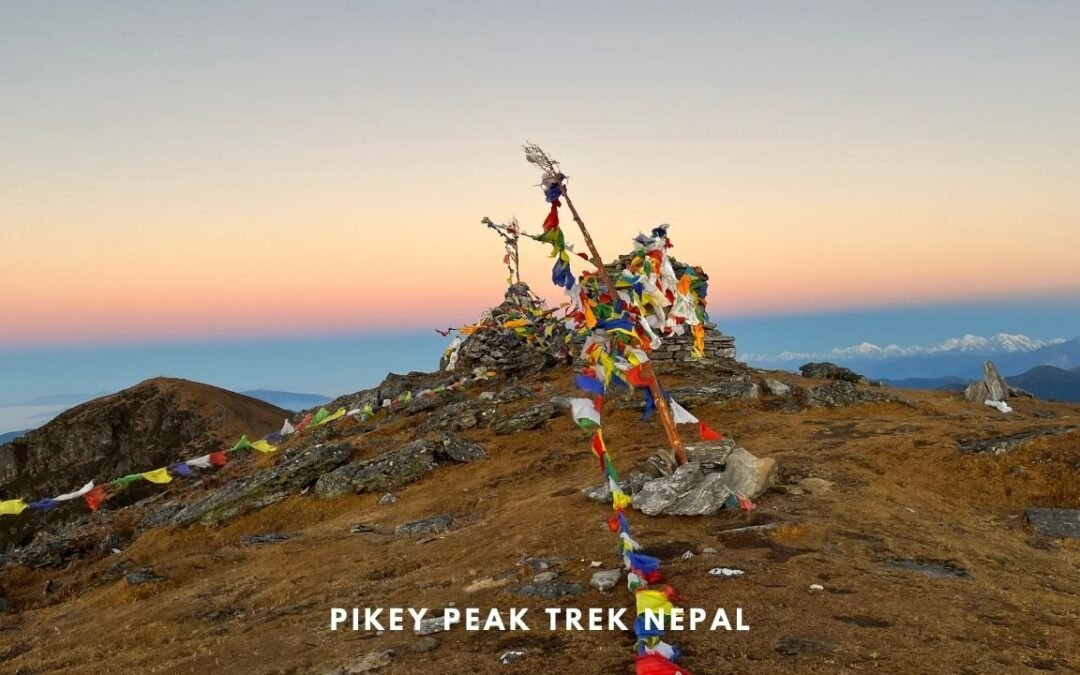
Ultimate Guide to the Offbeat Pikey Peak Trek in Nepal
Located near the classic jiri to Everest Base Camp, Pikey Peak Trek is a new trekking route in the Solukhumbu region with an off the beaten path experience. When you stand on top of Pikey Peak, you cannot agree more with Sir Edmund. He had said that it was the most...
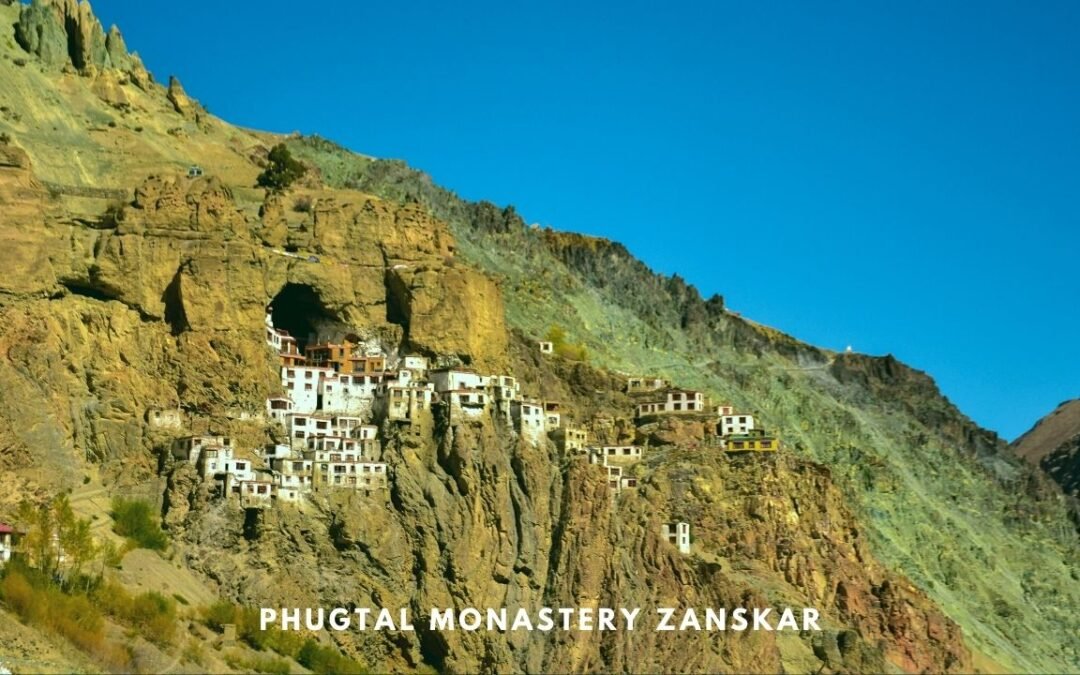
Phugtal Monastery Trek – Guide to the Cave Monastery of Zanskar
About this Blog: There are some places that you simply want to visit. Phugtal Monastery was one such place. Also known as the cave monastery, Phugtal Monastery, also known as Phuktal Monastery and Phuktar Gompa is located in a remote part of Zanskar Valley in Ladakh...
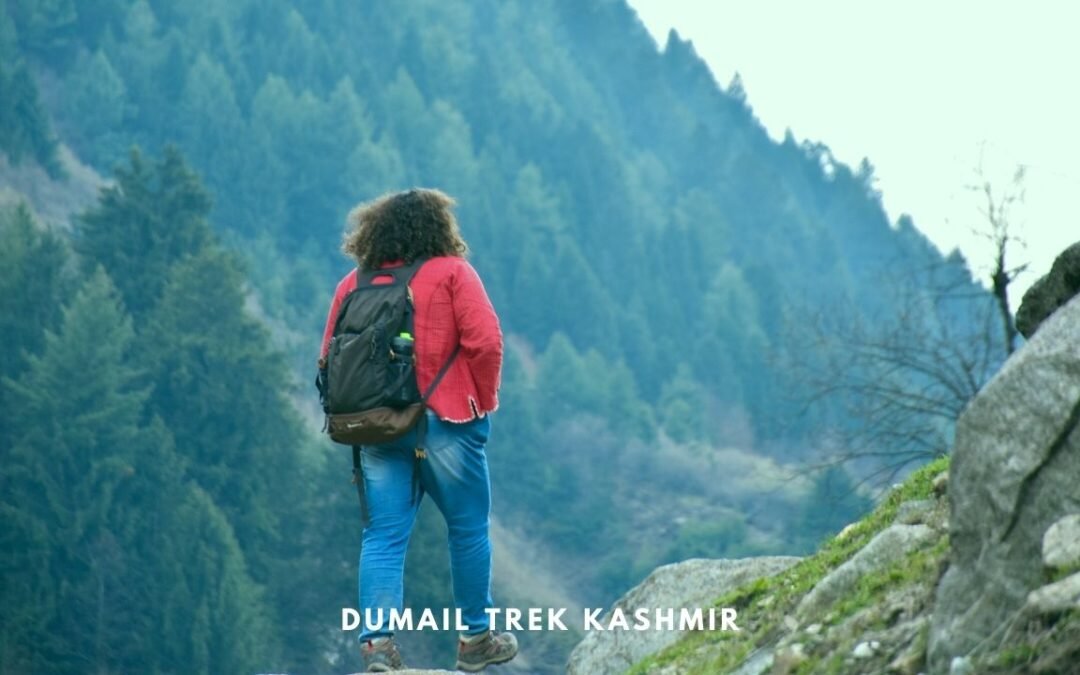
DUMAIL TREK KASHMIR – An easy hike from Naranag
About this blog: Naranag is mainly known for the ancient Shiva Temple complex and the basecamp of a number of treks in Kashmir. Our experience at Naranag was much more. Not only did we experience the pristine beauty of the valley, but was also completely amazed by the...
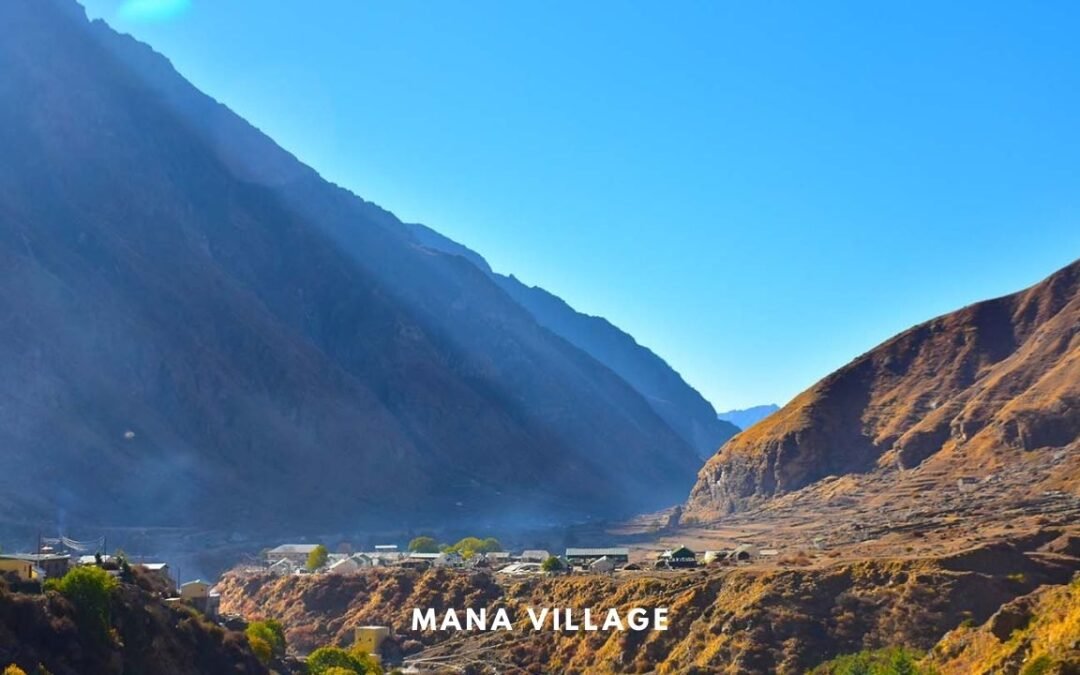
Trip to Mana Village – the Last Village of India
About this blog: This blog is about our visit to Mana village, the last village of India. This small and picturesque village located near the India-China border is steeped with mythology. Mana is also known as the gateway to heaven as it is believed that the Pandavas...
Mawryngkhang Trek (Bamboo Trail) Meghalaya – Guide to The Scariest Trek
Have you ever walked on a bamboo skywalk with the cliff on one side and the gorge on the other? You look down and can see the endless abyss beneath. This is said to be one of the scariest treks in Meghalaya. Scariest or not, I do not know, but the experience of the...
Trekking in Nepal: 15 Best Treks and all that you want to know
There are only a few places in the world where you can trek for days through the incredible mountain scenery and rustic rural villages. We believe that Nepal is the Holy Grail for trekkers and mountaineers. The country is the home to eight of the world’s highest...
Tungnath Deoriatal Chandrashila Trek Itinerary and details (FAQs answered)
About this blog: We always wanted to visit the Panch Kedars and Tungnath was the first one we explored. Along with it, we also did Deoriatal Chandrashila trek. This blog will give you all the details about the trek, how to reach and other important tips and guides....
Overtrekking in Himalayas – Facts that you should know
Overtrekking in Himalayas - it has been told umpteenth time. Of late, rules and regulations are also in place. But are they really effective? Can they really help in preserving the already fragile ecosystem of the Himalayas from the impact of over-trekking? We love to...
56 Comments
Descriptive blog about Kedarnath, valuable info shared for first-time travelers. Trekking in Kedarnath is an exciting and adventurous journey where you can avail all the accommodation as well as camping facilities with an awestruck top view from hills. Worth visiting along the trails to experience the local life.
This is by far the most amazing blog I found on Kedarnath yatra. All the information is quite helpful. I almost felt that I am right there with you on the trek.Thanks for writing.
Thank you so much, for your kind words.
I never heard of the Kedarnath and after this in-depth description and experience, I would love to do a trek here. I love a hike with beautiful mountains and culture combined and this has it. The backdrop to the temple is truly amazing and I would just go to the temple just to see that. A lot of information here to consider as well, so I have bookmarked this page as I hope to do some hiking in India once Covid clears off. This part of the world has been on my list for a long time.
Thank you Danik! Kedarnath is one of the spiritual places in India and is absolutely gorgeous.
Wow just look at those mountains. I would love to do this hike and when I visit India I need a long time to see the beautiful places in this country. This looks like a great 2 day and worth it and the views must be amazing during the whole trek. I hope I get to visit one day as it looks amazing.
That I totally agree to. You will need a lot of time to explore India! Thank you for the lovely comment!
This is a great comprehensive guide! We have never heard of Kedarnath Yatra, but it looks like an interesting place to discover. Spiritual, historic and hiking all in one trip? That sounds like our kind of thing. We’ll definitely include this in our India itinerary when it’s safe to travel.
Thank you so much!
What a fantastic experience! You provided so much information about Kedarnath, I feel like I could go and have a good idea of what to expect. I think the Kedarnath Trek sounds fascinating, although it must have been tiring the cultural experience and natural views must have been worth it.
Thank you Chloe! Kedarnath trek is quite an experience.
So interesting to read about the Kedarnath Yatra pilgrimage. And great to return to a trek that brings back special family memories. I can certainly see why the scenery along the river way to the start of your trek intrigued you. It looks like an interesting trek up to the Kedarnath Temple. Even if there was snow along the way. I might want to visit by helicopter and see those amazing views from above.
Helicopter ride is a good way to reach the place for those who cannot hike. Thank you Linda for the lovely comment!
What a great travel story and also a guide for those who want to do this trek. The views are absolutely breathtaking! And I love all those hidden little stories you mentioned. This trip also get a very personal feeling as other family members told you all those stories. The temples are all beautiful.
Thank you so much, Paula!
Oh my God! I am bookmarking this post. Kedarnath has been on the top of my list. I want to hike and visit this amazing place, especially to hike. And also take my mother as she loves these kinds of religious places even though I would send her to the temple by other means and not by hiking. Thanks for this post, I will try to visit it as soon as the pandemic is over.
Thank you, Raksha! I am sure you will love Kedarnath.
I’m hoping to go on Kedarnath Yatra after a couple of years. Good to know that they trek is about 16-17km and can be done in a day and there are also some accommodations on the way. Hahaha, it is funny and awesome that you visited Kedarnath as a kid and now your dad managed to give all the embarassing details to Agni. Now that I travel with my toddler, I have quite a bit of such funny and embarassing moments. Hoping to pass it on to her partner in future… Am I evil? Hahaha..
I bet you are! Just imagine my embarrassment when my dad gave all my secrets to my hubby. And he teases me with those till date!
I felt as if I were doing the trek with you as I read this. Beautifully covered with useful tips within. I have been meaning to get here and now am even more tempted. Loved your pics of the Sonprayag and the various trekking spots. The history and legends around this place really make it special. I knew the bit about Mahabharat and Shankracharya but did not know about how it was discovered
Thank you so much, Ami!
Amazing Blog, Thank for sharing this wonderful website with us.
this is a great read, very engaging and informative. I have a quick question regarding the stay at Kedarnath, you mentioned your stay at Bikaner house, is there any way to pre-book it?
Thank you so much for the comment. I think the stay at Bikaner House can be pre-booked. Please try calling +91-8191900012.
Hi, How can we book hotels near the temple in Kedarnath? You mentioned that it’s better if done ahead of the travel?
Can it be done online?
There are a few websites from where you can find out the contact numbers of the hotels near Kedarnath Temple. But I doubt whether it can be done online. There are also a number of travel agents in Haridwar and Rishikesh from where you can get your stay. Thank you for stopping by our blog. Keep reading!
One of my biggest dreams is to go to Kedarnath and in this blog, I got all the information for my next trip. And all the images are extremely beautiful. Thank you so much for sharing all this wonderful info with us.
Thank you so much Shivani! We are so glad you liked our blog.
Good Luck for the upcoming update.This article is really very interesting.
Amazing Blog… many things to learn. thanks for sharing.
It’s amazing blog and very informative about Kedarnath trek….. This blog will very helpfull for newbies.
Nice Blog…. This is really amazing. Great information about Kedarnath trek.
Woooow so nicely explain every minute details. This will help us a lot for sure for our planning.
Thank you for a very informative write up. One question, how long did it take you to trek back to Gaurikund? You mentioned you reached at 12.30, but not state the start time. Did you have time to look around in the morning before starting the trek back?
Hello Sharmila! Thank you for reading our blog! And thank you also for pointing out the time. We had reached Gaurikund by 2PM and not 12PM. It was typo error. Now we have corrected it. We had started around 8.30AM after attending the morning aarti and just roaming around the place.
Hi… felt like a movie … scenes passes thru my imaginative mind! Clear cut, lively explanation. I am visiting kedar, badri and tungnath this June. Plz help me with a trustable travel agency or travel agents number. We are from bangalore and will come thru flight. Thanks a lot I. Advance. I am inspired to write a page later.. ( in my son’s notebook.. not here 😉 ) ha ha. Will be waiting for the reply
Wonderfully done article..Pretty complete. I am planning to do the Kedar trek with kids 7&12 and planning to rent a car.
You have mentioned you rented a car for 5 days. Does it come with a driver or you drive on your own. Any preferred rental companies for Car?
We had rented a car with driver. We got the car from a rental service at Haridwar. It was near Haridwar Railway Station. Have a wonderful trip to Kedarnath.
Thankyou for the amazing informative content on kedarnath yatra. Everybody needs this informative content keep sharing.
thank you for such a nice, elaborate and interesting blog!! while we have been aspiring to visit Kedarnath and badrinath much in recent times, i was actually looking for a visitor’s experience and just came across yours… thank you once again.
Thank you poorna for the kind words.
Hi. Its very interesting to hear from you. Congratulation for the trek. Now I booked at gourikund . Can you provide any information the proceedings before start trek from Gourikund. Thanks again.
Thank you so much for your comment. Have a great trip and let us know how it went.
A captivating tale of the Kedarnath trek! The personal experiences you share make it feel like we’re trekking right alongside you. The spiritual and natural beauty of the region shines through your words. Thanks for taking us on this unforgettable adventure through your storytelling – it’s both inspiring and informative
Thank you so much for your kind words.
Very comprehensive and informative! I think these tips and advice are much helpful. Good you explained everything in detail it has been a great help.
Hi, beautiful article, wish had come across your article before, just couple of days back we trekked to kedarnath, myself 55 yrs old and my husband 58 yrs. It was dream come true for me at this age, can you with your rich experience share how to treat aching legs after trek. We use coconut oil, is there any other thing which can be of help. Thankyou. God bless both of you
Hello Ma’am! We are so glad to hear that you had trekked to Kedarnath. Time and again it os proved that age is just a number! As for treating aching legs, we recommend to apply ice pack on the aching area. It will help a lot. Also keep your legs elevated for few minutes every day. Hope this helps!
Beautiful content and very informative 🙂 Har har mahadev 🙏🏼
Submit a Comment Cancel reply
Your email address will not be published. Required fields are marked *
Save my name, email, and website in this browser for the next time I comment.
Submit Comment
This site uses Akismet to reduce spam. Learn how your comment data is processed .
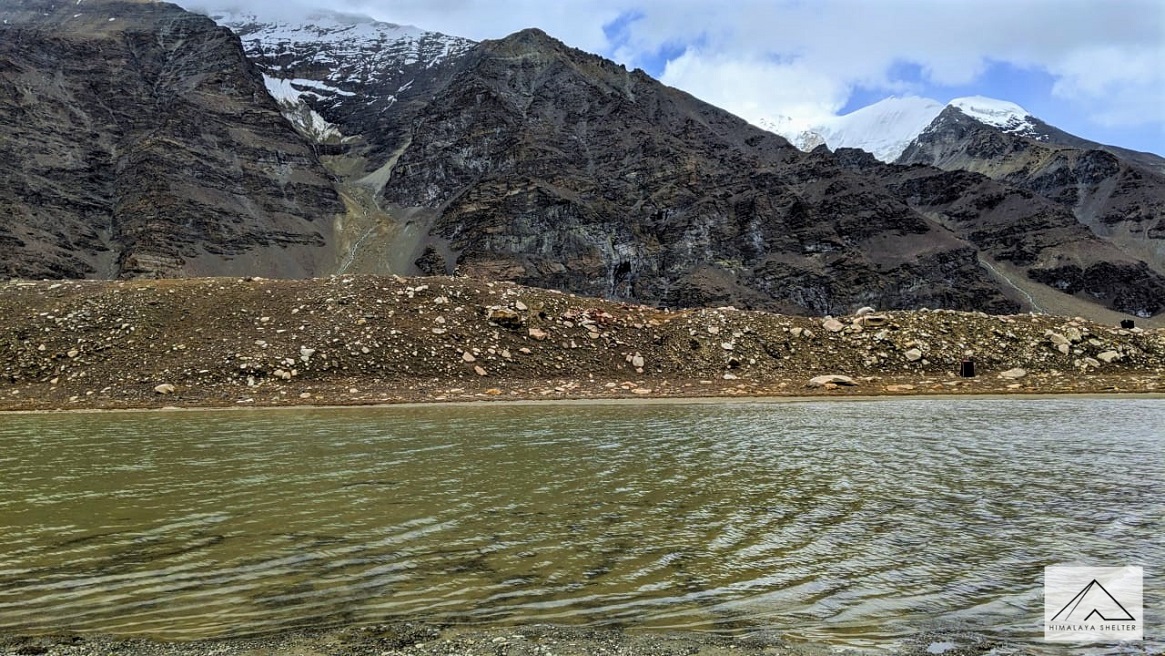
Vasuki Tal – Kedarnath Trek
Vasuki tal with kedarnath yatra, best spiritual treks in uttarakhand, vasuki tal – kedarnath trek via mayali pass, masar tal – painya tal and khatling glacier, day 1 drive from dehradun to ghuttu.
Drive: 188 km, 8-9 hrs
Accommodation: Guest House/Hotel
Meals: Dinner
We all embark on this adventure to attempt Vasuki Tal Trek as soon as everyone has reported. Today’s drive takes you across the tributaries like Rispana River, Song River, Chandrabhaga, Bhagirathi, and Bhilagna Rivers. Each of these rivers offers surreal sights of the valleys carved by them. However, Tehri Dam, located on the Bhagirathi River, is usually the star of this route. The green, calm waters of the dam would accompany you for almost about 5-6 kilometers on your left. After Crossing the Zero Bridge, we would leave Bhagirathi behind and follow the course of the Bhilagna River all the way to Ghuttu Village.
Small towns and villages like Talai, Bagar, Chamba, Tehri, and Ghansali are perched along the mountain roads. You may choose to withdraw cash or complete any last-minute shopping during the small breaks on this journey.
Our destination is a rural site in Ghuttu Village which is located across the Bhilagna River. This would be our base camp from where we shall start Vasuki Tal Trek. Relieve all the tiredness of the journey by soaking in the serenity of this village.
Day 2 Trek from Ghuttu to Dhu Panda
Trek: 13 km, 7-9 hrs
Accommodation: Camping (Alpine Tents)
Meals: Breakfast + Lunch + Evening Snacks + Dinner
The cacophony of the chirping birds in the village would announce the morning in this village. It is a long yet easy leisure trek to Dhu Panda. You shall be crossing remote Garhwali villages and some hillside plantations. The mild ascent on this day prepares you for the more strenuous climbs ahead. It is of utmost importance to start mildly for longer trekking journeys like this. Almost throughout the trek, you may relish the view of Rhododendron forests till your eyes can see.
Day 3 Trek from Dhupanda to Panwali Bugyal
Trek: 6 km, 3-5 hrs
Bugyals are the unique beauties that Uttarakhand is blessed with. Panwali Bugyal is one of such less-explored gems of the Northern Garhwal Himalayas. It offers much more than just a trekking experience. It is a high-altitude landscape of rolling meadows at 3963 metres. The trek till here is moderately difficult but the view compensates for every single effort of reaching here. It is not even an exaggeration to call Panwali Kantha an amphitheater. Many people opt for the Panwali Kantha Trek for mesmerizing views.
It offers a 360-degree view of the major ranges like Kedar, Gangotri, Yamnotri, and Badri. The prominent peaks that you can spot are Kedar Dome, Thalaysagar, Kirti Stambh, Chaukhambha, Meru, and Nilkanth. The spring season covers the meadows with colorful flowers like poppies, daisies, primulas, anemones, and of course, rhododendrons of all varieties. It feels nothing less than a green canvas of grass painted with purple, pink, red, and yellow dancing flowers. Many of these flowers, bushes, and plants have herbal cures. Don’t be surprised to find local Vaidyas and saints plucking some of these plants to survive the tough year ahead. Most trekkers often choose Panwali Bugyal for the spectacular sunset that makes everything sparkle bright-golden.
On the other hand, winters paint all the peaks and meadows snowy white. If you love wildlife, prepare yourself to spot some rare musk dears and wild animals like Bharal, bears, weasels, and Ghoral.
Day 4 Trek from Panwali Bugyal to Talli
Trek: 8 km, 4-6 hrs
For today’s trek, we shall descend towards Gangi village. The trail is well carved. You may want to be extra careful if it has rained. We shall be crossing open trails that offer a view of the widening valley down below. Some stretches also pass through dense vegetation and tall pine trees. This is an apt trail to hear and spot the local birds of the region. Gurgling waters of small streams running down the hills add to the music of the forest. Talli would be our campsite for today amidst the abundance of nature.
Day 5 Trek from Talli to Gangi
Trek: 8 km, 6-7 hrs
This day involves a reasonable amount of ascent to reach Gangi Village located at an altitude of 2,465 metres. You will initially trek through a stretch of a dense forest crossing small streams. After about 3-4 hours, the plantations and the remote Garhwali villages start to appear. Walking along the village canals and water channels amidst the swaying fields of potatoes, rajma, and other grains is exhilarating. During the early summers, these fields are full of fragrant flowers. Finally, after a short climb, we reach a village where time stands still. Gangi Village shall be our rest point for 2 nights.
Day 6 Gangi (Day for rest and leisure)
After the challenging treks of the past few days, it is extremely important to rejuvenate your body. It is crucial to restore energy for more challenging trekking in the coming days. Gangi is a village untouched by modernization. It is a sleepy hamlet with a mere population of around 300+ humans. Age-old tiny wooden temples, overlooked by giant mountains sprinkled with snow, are the main attractions here. Terraced fields and the wafting fragrance of flowers become your leisure-time buddies. Enjoy this village while chatting with the elderly of the village. They have hundreds of tales to tell you about Devbhoomi Uttarakhand. Alternatively, you may chase the hopping sunbirds and squeaking magpies on the outskirts of the village.
Day 7 Trek from Gangi to Kharsali via Biroda
Trek: 11 km, 6-7 hrs
After a rest day at Gangi, we shall descend down to their winter settlement, Deokhri Channi. Further ahead, the path passes through a dense forest. The mix of mild ascents and descents enables you to enjoy the calls of Himalayan birds. To your delight, you may be able to spot Himalayan Monal, Warbler, Coppersmith Barbet, Blue Magpie, and a variety of Parakeet species.
The gurgling sound of the beautiful Kalyani stream would suggest the vicinity of today’s destination. Refill the bottle here or relax for a while in its refreshing waters. After crossing the stream, we reach the diversion. From here, the left trail stretches to Sahastra tal. It is an idyllic location that hides this isolated lake of Uttarakhand. If time permits, we may pay a quick visit to this lake. Otherwise, we must follow the right trail. The dense forest opens on your way to vast meandering meadows. This is Biroda Bugyal. Enjoy the stunning paradise created by wavy hills and evergreen conifers. 3-4 kilometres ahead of this bugyal lies our campsite for the day. Soak in the immaculate charm of mother nature here. In the evening, savour the spectacular colours of sunset. Prepare for the next morning and sleep cozily while listening to the music of the rustling leaves.
Day 8 Trek from Kharsali to TambaKund
Trek: 8 km, 7-9 hrs
After a scrumptious breakfast, we start hiking along the trail carved beyond the village. The trail is relatively flat till the river bank. It passes through the rolling meadows in the beginning. After that, we start the ascent to a barren mountain patch devoid of vegetation. The view of the snow-capped mountains would accompany you throughout the day. Small snow-fed streams keep crossing your path. Don’t forget to spot the distant waterfalls tumbling down the Bhilangana Range.
Finally, after 8 hours of moderately difficult climb, we reach a serene spot at Tambakund. Tambakund is a small pond that can be considered the source of Bhilangana River. Relax in the evening, relish a hot dinner and prepare for tomorrow’s trek. Khatling Glacier, that feeds the river, is just 3 kilometres from this campsite. We shall spend the night under the stars at Tambakund.
Day 9 Trek from Tamba Kund to Tambakund via Khatling
Trek: 3 km, 4-5 hrs
Today, we proceed for a mildly strenuous trek to Khatling glacier located at an altitude of 3415 metres. It is the birthplace of the Bhilangana River that nurtures the human settlements in almost half of the Northern Garhwal Region. Khatling Glacier is one of the largest glaciers in the Himalayas. From Tambakunda, the trail starts over the wooden bridge across the river. The trail traverses through the grassy meadows of Chowki. It is frequented by shepherds who come here to feed their herds of sheep. The valley is dotted by flowering plants including that of Brahma Kamal during its blooming season. You might spot certain wild moths and butterflies along this route. It may take around 2 or more days to explore the glacier entirely. We shall aim for the ‘Zero Point’ at this glacier. It is an enchanting viewpoint in the lap of this giant icy glacier. After having enjoyed the beauty of this place for some time, we shall proceed to trace the path back to Tambakund.
Note: You shall not carry all your luggage today and have a relaxed climb by just carrying the essentials.
Day 10 Trek from Tambakund to Masar Tal
Trek: 7 km, 8-10 hrs
We start today’s trek early. Eat well to energize yourself for the steep ascent of the day. From Tamabakund, via Chowki, we keep climbing throughout the day. Post-lunch, you would see the Khatling glacier and milky-white waters of the Doodhganga River below you. The shining waters of Bhimtal Lake can also be seen down below.
Masar Lake is a small pond tucked amidst the painting-like backdrop of the lofty mountains of the Kedar Range. The picturesque woodlands and carpeted green meadows enhance the beauty of this lake. The cherry on the top is the wild flower blooming in this bugyal during monsoon. If luck favors, this campsite near the lake is perfect for star-trail photography or Milky Way spotting on a clear night.
Day 11 Trek from Masar Tal to Painya Tal
Trek: 8 km, 8-12 hrs
Usually, trekkers opt for a long tiring trail from Masar Tal to directly Vasuki Tal. However, our itinerary of Vasuki Tal – Kedarnath Trek allows you to enjoy the best of this trail at your pace. Today, the strenuous climb continues amidst snow-clad and brown mountains. You may want to capture this unusual shading of the mountains giving them an appearance of Vanilla-chocolate ice-cream. The trail is flanked by huge boulders and rare vegetation. After a few hours of trekking, we reach the windy Mayali Pass across Mayali glacier. Painya Tal and Teental can be reached only after this tricky climb. The soul-captivating scenery at Painya Tal would make all the mind-numbing efforts worth it. Relieve all your tiredness and re-energise yourself by resting at the bank of Painya Tal. Alternatively, you may take a short hike to Teen tal. The whole trek to Painya Tal passes through Kedar Wildlife Sanctuary. You may be able to spot bears, snow-leopards, jackals, wild boar and other high-altitude reptiles.
Day 12 Trek from Painya Tal to Vasuki Tal
Trek: 6 km, 5-6 hrs
The most-awaited day is here. Today, we shall aim to reach the legendary Vasuki Tal perched in the lap of Mt. Vasuki. The peak gets its name from its serpentine shape and the folklore. According to the legends, Vasuki Nag would often sit here and let the Devtas use its tail to churn out the elixir of immortality from the oceans. This lake is the source of the River Vasuki Ganga which further merges with Mandakini at Sonprayag.
Tre trek is no cakewalk though the distance is just 6 kilometers. The ascents and descents on this day may tire you but the unraveling vistas fuel your soul with divine energy. Merely after 5-6 hours, the ultimate destination is unveiled in front of you.
Take a hot cup of tea, walk to the lake, and sit there for the entire evening. The musical movement of the lake creates a shaky reflection of the snowy mountains. The clear sights of the holy peaks of Sumeru, Meru, Manda, and Chaukhambha from the base of Vasuki Tal is sheerly soul-stirring. At night, don’t forget to be flabbergasted at the lake reflecting the magical sky crammed with twinkling stars.
Day 13 Trek from Vasuki Tal to Kedarnath
Trek: 6 km, 4-6 hrs
Accommodation: Camping (Alpine Tents) / Guest House
The route from Vasuki Tal to Kedarnath is a complete descent. Nonetheless, there is no dearth of adventure on this route. Once you bid adieu to the pristine sight of Vasuki Lake, the real challenge begins. It is the time to hold your breath to cross the two glaciers namely, Chaturangi Glacier and Vasuki Glacier. The precarious narrow trail requires the trekkers to take every step vigilantly. Apart from this little adventure, the rest of the trail demands careful descent. It is crucial to not hurt your ankles or knees owing to immense pressure. Thus, the trekkers are advised to follow the guides’ instructions.
Post this thrilling day, a divine sight of the Kedarnath Jyotirlinga awaits you. After reaching the lodge, freshen up to visit the temple. The black-stone structure sings the glory of devotion and art of ancient India. Kedarnath Temple, located at an altitude of 3,583 metres, is believed to have been built by Pandavas. The legend of the Temple is closely related to the Panch Kedar Legend. During the repentance period, post-Mahabharat, Pandavas were seeking Lord Shiva. After hiding for days at Guptkashi, Shiva was finally spotted by Bhima in the form of a bull. However, before they could reach the Bull, it disappeared. It then reappeared at different places in the valley which are now known as Panch Kedars. Kedarnath is the first of these five temples. The hump of the bull appeared here and the lord is worshipped here in the same form.
Do not miss the sunset at this divine site. The Kedar Dome is tinted with the hues of saffron and then pink as the Sun God prepares to set. This holy view accompanied by the vibrating sound of temple bells creates meditative vibes in the atmosphere.
Day 14 Trek from Kedarnath to Rudraprayag via Gaurikund
Trek: 14 km, 6-7 hrs
Get up early in the morning and devour the beauty that surrounds you. The awe-inspiring sight of Sumeru, Kedarnath Peak, and Kedar Dome is the most divine thing in the Himalayas. Experience the morning vibes of this most-visited pilgrim of Uttarakhand.
Post-breakfast, trace down the path, along the course of river Mandakini that flows on your right. After many days, you would finally hear the chirping of birds, tinkling bells of the ponies, and chanting of the pilgrims heading for Kedarnath temple. This narrow valley created by Mandakini is fed by a number of waterfalls along the route. The flock of birds bathing in the waterfalls can be seen only on this trail. Crossing the rainbows on your way is also a unique phenomenon on this trek.
By noon we reach the base at Gaurikund and board the vehicle for the return journey. A motorable road from Gaurikund via Guptkashi takes us to Rudraprayag. One of the holy Panch Prayags, Rudraprayag, has numerous legends to tell. The name of this Prayag is attributed to the Rudra form of Shiva. He is said to have performed tandav at this Prayag. Apart from the mythological mentions, Rudraprayag was widely popular among wildlife lovers. The town has now modernized way too much with the ever-expanding construction sites. However, once upon a time, the wild tigers from the Kedar and Tungnath Forest range roamed till Rudraprayag. One such man-eating wild tiger mentioned by Jim Corbett resided right here at Rudraprayag.
Day 15 Drive from Rudraprayag to Dehradun via Rishikesh
Meals: Breakfast
Post-breakfast board the vehicle and reach back to Dehradun/Rishikesh/Haridwar by evening and depart with the fond memories of the Vasuki Tal – Kedarnath trek etched in your heart.
Day 2 How difficult is the trek & what are the challenges?
What is the best time to do the trek and how is the weather, what are the top highlights of the trek.
- Transport support from Dehradun to Dehradun
- Pick-up location: Prince Chowk, near Dehradun Railway Station Pick-up Time: Around 7:30 am
- All vegetarian meals starting from dinner on day 1 to breakfast on the last day
- Professional Guide, Cook and Support staff
- First-Aid kit with Oximeter and Portable Oxygen Cylinder
- Kitchen tents, common tents, toilet tents with portable toilet seats
- Rent for camping equipment like Clean sleeping bags and foam mattresses, Good quality ‘A’ shaped or dome tents, Camping stools, Table and Crampons and gaiters if required
- Forest entry charges for Indian nationals (Additional charges will be applicable for international tourists)
- Porter and mule support to carry camping equipment and personal luggage
- Accommodation throughout the trek on a triple-sharing basis
- Guesthouse accommodation on the first and second last day on a triple-sharing basis
- All applicable taxes
- Your designated hotels may not reopen by the time you reach there. While we are making alternate arrangements, do understand that things may not be as “tip-top” as our designated hotels.
- The gurudwara, Hemkund Sahib may not be open. While we are trying to take permission to go to Hemkund Sahib, if it does not happen, then do understand that the pandemic has put restrictions beyond our control.
- Personal expenses like tips, personal medicines, phone calls etc.
- Any transport support during the trek apart from what is included above
- Any cost or services not mentioned in the Inclusions
- Accommodation in Dehradun
- Adventure Insurance
- Cost arising due to unforeseen incidents like bad weather, medical evacuation, roadblocks etc
- Porter and mule support to carry personal Luggage can be arranged at an additional cost of INR 350 per bag per day (weighing up to 12 kg)
- Please carry a lunch box for packed lunch/breakfast to avoid using polythenes and Aluminium foils. Keeping the Himalayas clean is our own responsibility. Reduce the use of Plastic when you are in the abode of the Sacred Himalaya. 🌱
Upcoming Treks
- 17-07-2021 to 23-07-2021 open
- 17-07-2021 to 23-07-2021 close
Send Request
Your query has been successfully registered. we will contact you within 24 hours., something went wrong.try after sometime..
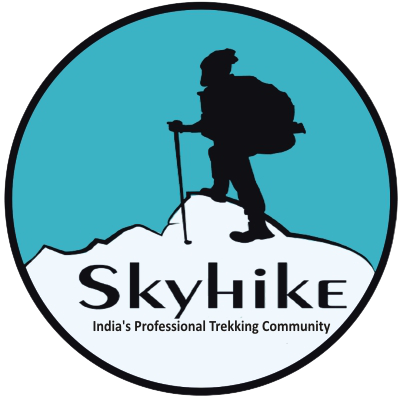
- Destination
Kedarnath Trek
- Description
- More Details
Working with Skyhike can be rewarding as well as tough at times. At Skyhike, we are dedicated to lead as the best trekking company in Uttarakhand. With us, your work is committed and responsibilities are high, surely a thrilling experience it is. Connect with us for more details!
Yes, indeed you can. On going on a solo trek with Skyhike, it is important to be fit. It is because, while on a solo trek, you are walking distances and setting your camps, carrying water & food, cleaning and cooking sometimes. Therefore, we suggest you take friends or otherwise make friends on the trek.
While going on a trek, you should carry essential items like a rucksack bag with a rain cover, a day bag pack, a torch, spare batteries, and UV protection sunglasses. Furthermore, you can keep a pair of slippers and high-ankle trekking shoes. In addition to this, track pants, woollen socks, full sleeves t-shirts are also suggested.
Skyhike serves vegetarian food that is healthy as well as hygienic. Such as nuts, fruits, dry fruits, energy bars and many more. You can be worry-free in terms of food quality that you will enjoy on the trek. For any queries regarding what to carry for a trek, you can contact us directly. We will be glad to help you.
Yes, certain factors affect the charges. Like you may be asked to pay for extra bag offload, couple sharing as well as additional food requirements. Moreover, you have to pay GST above the stated fee. Connect with us for more details.
Have Any Question?
Please feel free to contact me if you need any further information. Please let me know if you have any questions. I hope the above is useful
If you have any questions or inquiries about our treks, feel free to reach out.

We assure the privacy of your contact data.
This data will only be used by our team to contact you and no other purpose.
- Places to Visit
- Tour Packages
- How to Reach
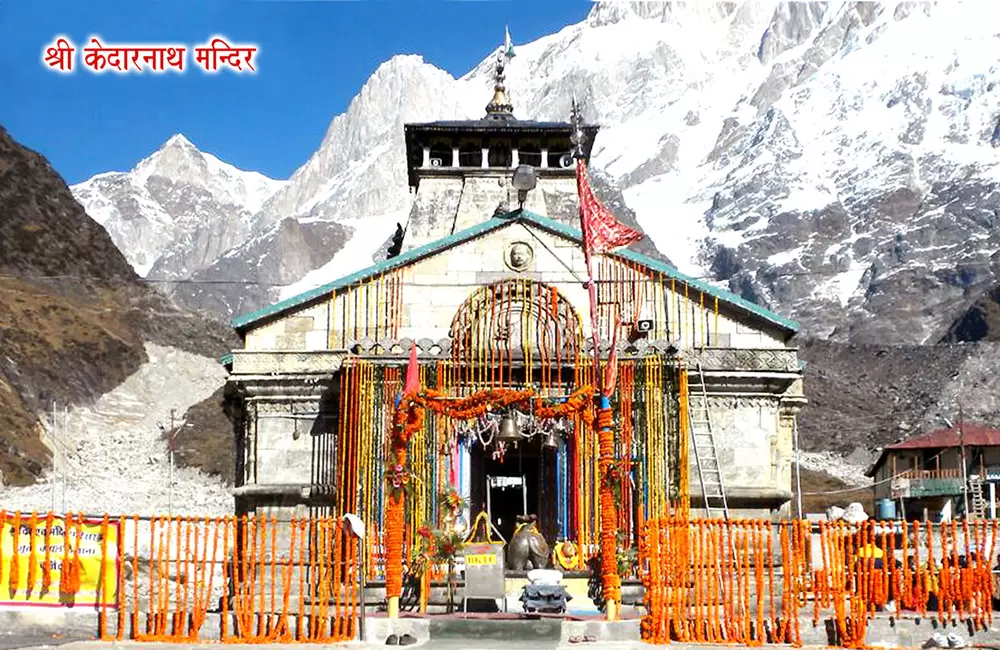
- 12 Places to See
- 25 Tour Packages
Kedarnath is a holy Hindu town located in Rudraprayag district of Uttarakhand in India . It is one of the Char Dhams located in the Himalayas. Kedarnath is situated at an astonishing height of 3584 meters above sea level near the head of Mandakini River.
The Kedarnath temple lies amidst the majestic snow-capped Garhwal Himalayan ranges and is thronged by thousands of tourists each year.
Get Kedarnath Travel Guide, Kedarnath Dham 2024 Tips
- Send Enquiry

Get Personalised Travel Quote
Contact us for a free travel quote and itinerary for your travel plans.
Kedarnath Dham Travel Guide
Kedarnath temple is a part of Char Dhams and Panch Kedar in Uttarakhand and one of the 12 Jyotirlingas of Lord Shiva in India . The historical name of this region is " K edar Khand ".
Visit to Kedarnath Dham is considered to be very auspicious and most important in the Char Dham Yatra circuit .
Kedarnath is flanked by breathtaking snow-capped peaks, making it the most remote site among all four Char Dham Shrines. The scenic beauty of Kedarnath town attracts lots of tourists from all over the world. You will find it quite crowded during the summer season (May and June).
The extreme weather condition of Kedarnath prompts the temple to remain open from the end of April to the beginning of November. 4G network is now available at Kedarnath by Jio, Airtel, and BSNL.
Kedarnath Temple Opening 2024
Kedarnath Dham Temple reopened for Char Dham Yatra on 10 May 2024 at 7 am. Since its opening, thousands of pilgrims have thronged to the temple for darshan.
The opening date of Kedarnath temple is announced on the occasion of Mahashivratri. The 'Badrinath - Kedarnath Samiti' announce the opening dates of Kedarnath Dham along with Badrinath , Gangotri Yamunotri dham .
Pilgrims coming to Char Dham need to register on the online portal of Uttarakhand Tourism Department.

Kedarnath Doli Yatra Program (Tentative)
- Day 1 : The Panchmukhi Doli of Kedarnath Ji will start its journey from Omkareshwar Temple of Ukhimath . It will reach Vishwanath Temple at Guptkashi and will have overnight stay there.
- Day 2: The Kedarnath Doli will reach Phata from Guptkashi. It will stay overnight at Phata.
- Day 3: The Kedarnath Doli will leave for Gaurikund from Phata. It will stay overnight at Gaurikund.
- Day 4 The Doli journey will start from Gaurikund to reach Kedarnath Dham via Junglechatti, Bhimbali, Rambada, Lincholi, and Rudra Point.
- Day 5 - Kedarnath Opening Day : The Kedarnath Temple Kapat will be opened for pilgrims in the early hours. The opening will take place amid vedic chants and rituals at 6.20 am.
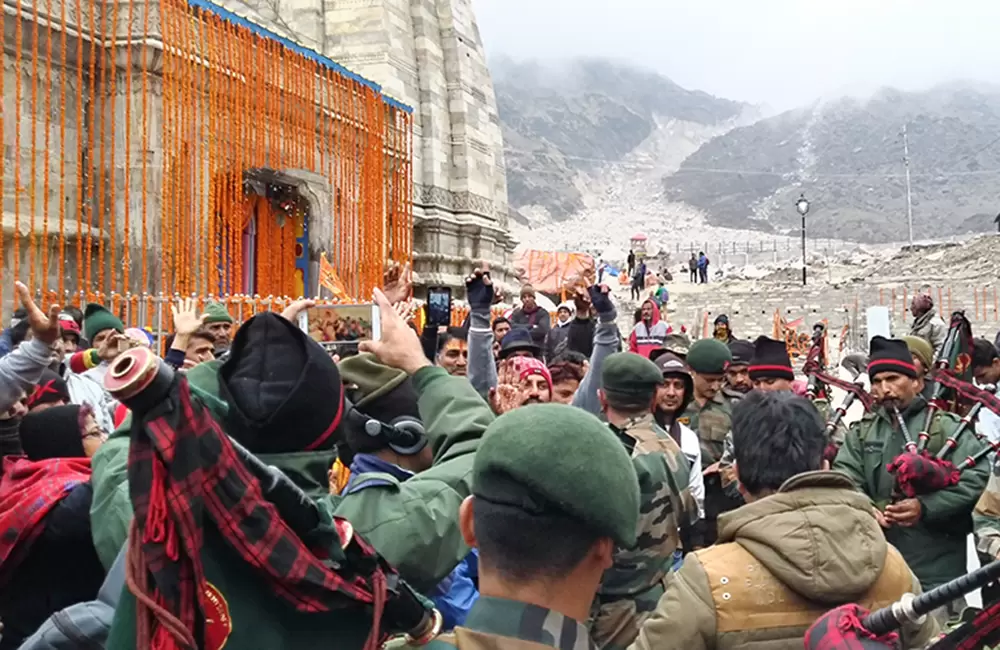
Kedarnath Temple Closing date for 2024: The closing date of Kedarnath Temple will be 03 Nov 2024 on the occassion of Bhai Dooj. Last year Kedarnath was closed for winters on 15 Nov 2023 amidst the vedic rituals.
- Places to See in Kedarnath
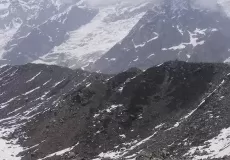
Kedarnath Travel News
Kedarnath Dham After the improvement in the weather, more than 11600 pilgrims were allowed to visit Kedarnath Dham on Saturday. Due to rain for two days, the pilgrims were stopped at Sonprayag.
The trek route to Kedarnath which was heavily damaged by landslides triggered by heavy rain on the night of 31 July has been repaired and reopened for pilgrims after a 15-day closure.
Following the arrival of the Thar vehicle, two golf carts have now also been brought to Kedarnath. These golf carts will provide significant assistance to elderly devotees visiting the shrine. The golf carts were transported to Kedarnath Dham this morning with the help of the Indian Air Force Chinook helicopter.
A new trekking route is discovered, which will start from Chaumasi, 25 km away from Kalimath; it has more grasslands and less climbing. This trekking route will be 2 kms shorter.
Activities in Kedarnath
Pilgrimage – Perched at an altitude of 3,500 meters, Kedarnath is one of the most revered Hindu shrines and thousands of pilgrims partake in arduous pilgrimage every year. The shrine sleeps under a thick blanket of snow during winters.
Trekking – Kedarnath temple is located 19 km from Gaurikund , the nearest town with road connectivity. Thus, one has to trek 16 kms to the Kedarnath shrine making it a wonderful trekking experience. You can also extend your treks to Chorabari Tal , Vasuki Tal and Bhairon mandir in Kedarnath
Camping in Kedarnath – Since there is only little accommodation at Kedarnath, tourists and pilgrims can also set up tents near the town and enjoy the natural beauty that envelops the town as well as the towering Kedarnath peak in the background.
Kedarnath Travel Tips
- One can also find mules and porters for hire; Check the official price chart before hiring.
- For safety, reason do check the ID Cards issued to Porters and Mule Owners.
- When traveling in monsoons, check with local authorities, tour guides or tour operators about the weather and road conditions before you actually start your journey.
- Photography is generally not allowed inside the temple due to religious reasons. It would be wise to abide by the rules set up by temple authorities.
- Weekends/Long weekends are so crowded, Weekdays are not so crowded. Also the temple closed on Mid-November.
- After mid-October the night temperature will drop into minus, so carry enough woollens, plus avoid going around DIwali, its the most crowded time. Go 10-15 days before Diwali.
- Sonprayag is the last stop till which other state vehicles are allowed. After that, its local taxi which will take you to Gauri Kund. And from Gauri Kund, either you trek or take Pony.
- If you are coming by car, leave early in the morning from Rishikesh, Haridwar or Tehri.
- Important part is arranging the stay. Prefer to take homestay and hotel in Sonprayag only.
- Avoid heavy meals before starting the trek; instead, opt for light, energy-boosting snacks to keep yourself energized without feeling sluggish.
- Minimize long breaks during the trek, and aim to maintain a slow but steady pace to conserve energy and ensure consistent progress.
- For convenience and cost-effectiveness, it's best to book your pony or palki at the Gaurikund counter, which guarantees fair pricing and reliable service.
- Before beginning the trek, take some time to acclimate to the altitude at Gaurikund.
Staying in Kedarnath
You will find a big Govt tented colony consisted of Tents, Cottage, and rooms just before Kedarnath is operated by GMVN , which are sufficient to accommodate more than a thousand pilgrims and tourists. There are many hotels and lodges around the temple since Kedarnath is a small place. You can find a room upon reaching there.
All the stays and food is extremely basic, the geyser is a big luxury, so don't expect running hot water or room service, you're getting to sleep on a bed at that height is enough in itself.
Nowadays, many tourists take Helicopters to Kedarnath for a day's visit and come back from Kedarnath the same day. They generally stay in these locations: Phata , Rampur, Gaurikund , Sitapur , Sonprayag , Guptkasthi , etc. For more details check hotels in Kedarnath.
How To Reach Kedarnath By Public Transport
Reach Rishikesh from wherever you are, From Rishikesh, you can take the direct shared cab/bus till Guptkashi, or do multiple shared cabs from Rishikesh to Rudraprayag then Rudraprayag to Guptkashi.
From Guptkashi, another shared cab or one of the less frequent buses till Sonprayag, spend the night at Sonprayag, then early morning leave for Gaurikund (roundhead) and start your 16 km trek from there.
Alternatively, you can also stay at Gaurikund overnight but stay options seem better in Sonprayag.
Also, if you are coming by your own vehicle, you can only take it till Sonprayag, there's a huge parking area available. Also, if you are coming from your own vehicle, Rishikesh to Rudraprayag main road is currently blocked, so take Rishikesh to Tehri to Srinagar to Rudraprayag route.
Kedarnath Food Guide
Apart from few roadside dhabas and tea stalls there are not many good eating options at Kedarnath. The local restaurants serve north Indian vegetarian food. Due to being a revered religious place, alcohol and non-vegetarian food is strictly prohibited at Kedarnath.
History of Kedarnath
According to Mahabharata, the Pandavas had built the Kedarnath Temple where they pleased Lord Shiva with their penance. The temple was revived by the great Hindu philosopher, Adi Shankaracharya in the 8 th century CE, when he visited the place with his four disciples. Sadly, the temple was hit by the catastrophic floods of 2013, which engulfed hundreds innocent lives.
Mythology about Kedarnath
There is a famous Hindu mythology related to the origin of Kedarnath temple, which states that after the Mahabharata war, the Pandavas went on an anonymous journey to beg mercy from Lord Shiva. After failing multiple times, Bhima was able to find Lord Shiva, who had incarnated as a bull to hide from the Pandavas.
Bhima tried to catch it and hit its hind part with his mace. The injured bull then immersed in the earth and its body parts appeared indifferent places. It is believed that the hind part of the bull appeared at Kedarnath, from which a ' Jyotirlinga ' or light flickered and Lord Shiva appeared in his divine avatar.
It is said that after taking the blessings of the cosmic light, the Pandavas were exempted of their sins and Lord Shiva told them, “from now onwards, I will be present here as a triangular shaped Jyotir Linga and by paying obeisance at Kedarnath, the devotees would attain piety". From then onwards, a triangular shaped rock is worshiped in the ' Garbhagriha ' or the sanctum sanctorum of the temple.
The other four parts of Lord Shiva fell at Tungnath , Rudranath , Madhmaheshwar and Kapleshwar . Kedarnath along with these four are also described as Panch Kedar.
Day To Day Travel Guide for your Journey To Kedarnath Dham
If you are a traveler/pilgrim who wants to visit Kedarnath and don't know much about how to do Kedarnath Dham then this travel guide is going to help you a lot to plan your Kedarnath Trip.
Day 0: Reach Rishikesh
Rishikesh is one of the famous cities of north India and Uttarakhand. The city is well connected with rail routes, inter-state & national bus routes. In case if you are coming via flight then Jollygrant airport is just 20km or 35 minutes route. Try to complete this Journey in the night only so you can reach to Rishikesh in the sharp morning to start your road route to Kedarnath.
Day 1: Rishikesh To Sonprayag or Gaurikund (211 km / 8 hours by road).
From Rishikesh Bus terminal, you can catch public transport like buses or Tata Sumos to Sonprayag . Direct buses to Sonprayag are hard to get but try for Guptkashi which is well settled in the last town before Kedarnath and daily bus service is also available from major cities of Uttarakhand to Guptkashi. However, you can also get a bus to Rudraprayag and then Rudraprayag to Guptkashi. From Guptkashi you can complete your further journey to Sonprayag via sharable Jeeps or Tata Sumo. Below is the road route from Rishikesh to Sonprayag: Rishikesh - Devprayag - Srinagar - Rudraprayag - Augustmuni - Guptkashi - Sonprayag
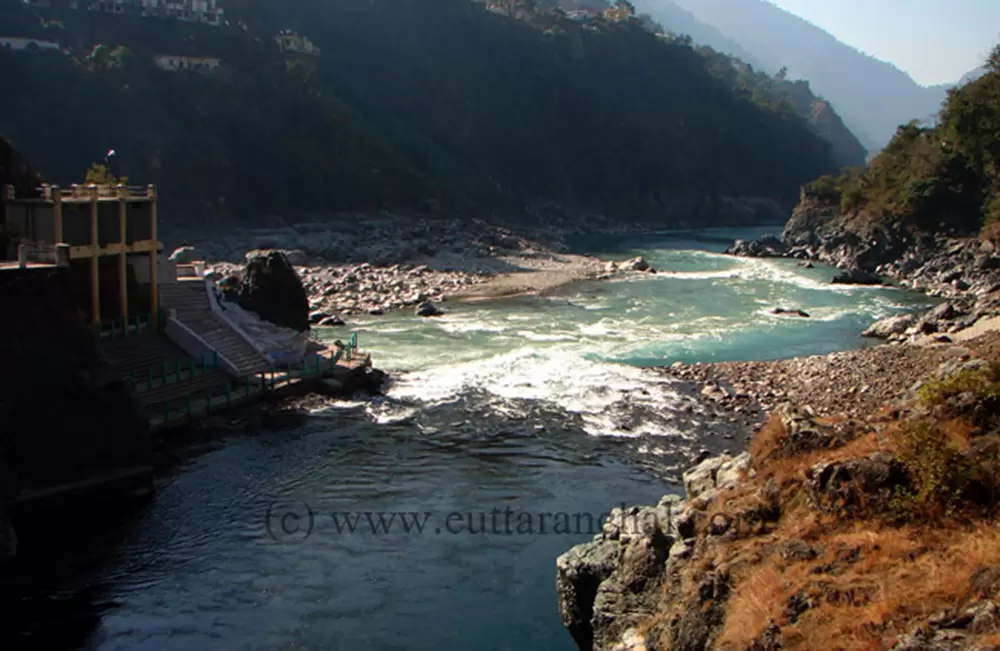
Bio-metric registration at Sonprayag
As instructed by the Uttarakhand government, it is necessary for every traveler to do bio-metric registration. This registration facility is also available online on the Uttarakhand tourism site or visit How to do Char dham bio-metric registration online . However, if you missed that you can complete this process by reaching Sonprayag. You have to carry your ADHAR CARD with yourself for this registration.
Below are the facilities you can found at Sonprayag :
- Bio-metric registrations of pilgrimage or travelers for Kedarnath Dham yatra or for Char Dham yatra .
- Accommodation facility is from budget to deluxe hotels are available in Sonprayag.
- Parking facility is also available in Sonprayag in case if you are coming from your personal vehicle.
- Shuttle service to Gauri Kund, which are actually sharable jeeps.
Sonprayag to Gaurikund shuttle service & night stay at Gaurikund :
Please keep this in mind that Sonprayag is the last point for all kinds of vehicle. You can't travel by using your personal vehicle or by public transport. A huge parking facility is available at Sonprayag for all kinds of Vehicle on the bank of Mandakini river. You have to complete the further 5km journey by using shuttle service or through jeeps between Sonprayag and Gaurikund. The charge of shuttle service is 20 rupees per person.
After reaching Gaurikund you can ask any hotel owner for a room. The charge of the room varies on the hotel to hotel or on season respectively. Least amount you can pay for a hotel room in the month of May and June is 500.
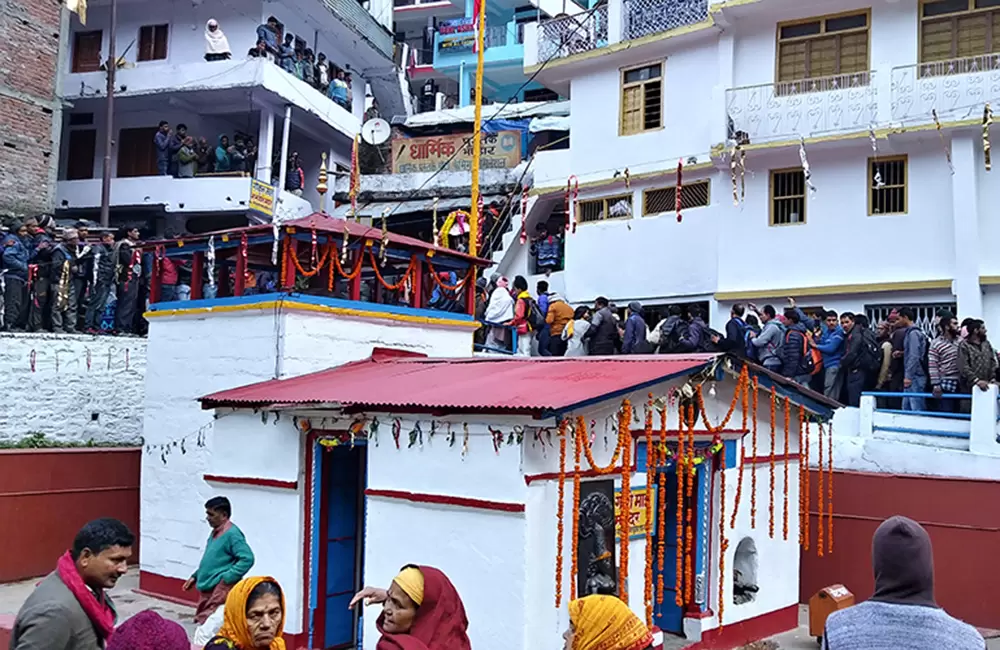
Day 2 : Gaurikund to Kedarnath (16 km trek / 5 - 6 hours).
You can reach Kedarnath only after a trek of 16 km through a paved road from Gaurikund. You can take a horse or ponies to climb up the steep path.
Below are few trekking tips for your journey to Kedarnath temple :
- Try to start your trek early in the morning to avoid harsh sunlight of noon.
- Don't try to walk empty stomach it can make your journey even harder.
- Carry umbrella/raincoat because the weather in the valley can be change dramatically.
- Walk with good grip shoes and try to carry only necessary things in your bag cause heavy bag can slower your speed in the trek and etc load can hurt your back.
- Carry water bottles but don't through it anywhere, respect nature.
- Keep your eyes on trekking route most of the time cause sometimes ponies coming back from the temple can hit you or can cause serious injury.
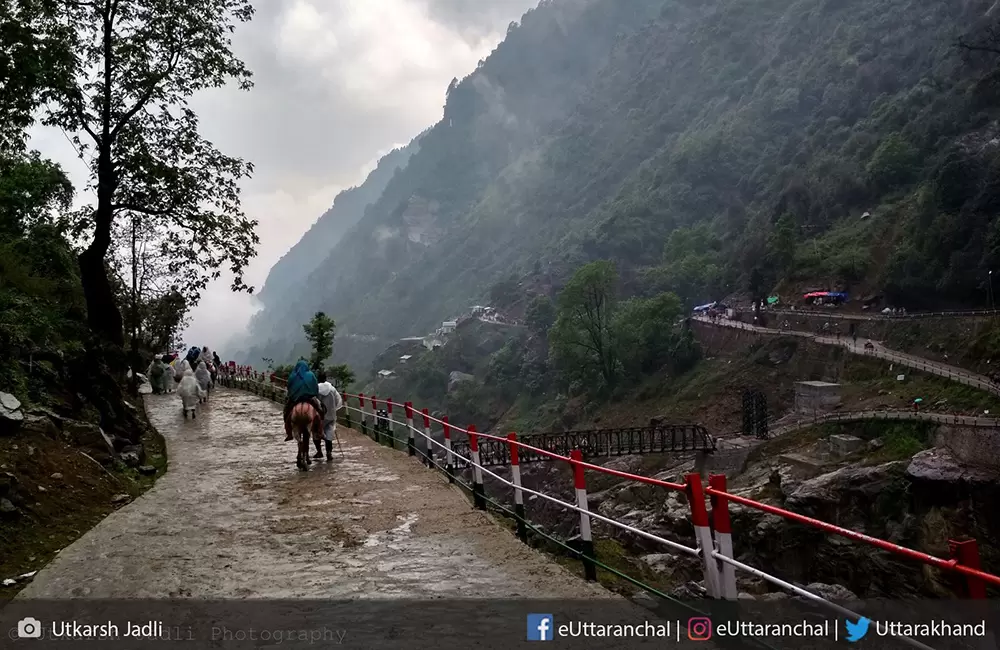
You will probably reach to Kedarnath valley post noon or around 3 pm if you have started your journey at 8 am int he morning. Search for a hotel room for your night stay. Maybe you have to share your room with others if you are traveling alone or if you have enough money then you can book the whole room for yourself or for your family. In the evening you can do photography in the valley and can enjoy the temple atmosphere.
You can talk with other travelers from where they have come and about their journey to give some relief to your mind from the tiredness of trek. Walking around the temple and savoring the view of snow-capped Himalayas will surely gonna help to make this day the best day of your life. Eat your dinner & go to bed on time to give rest your body or to get prepare for next day journey.
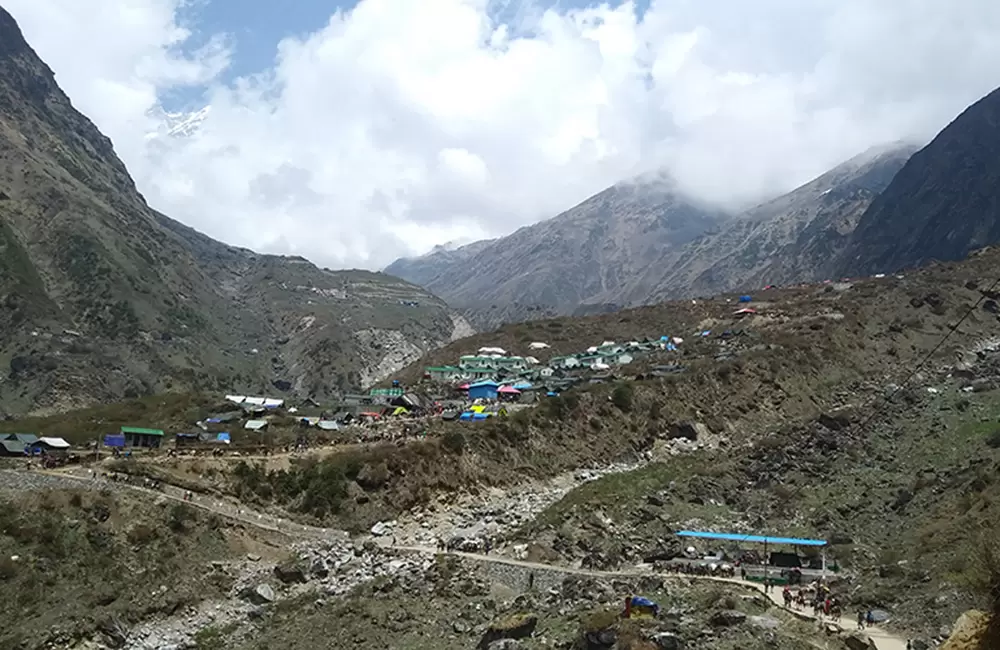
After the flash flood of 2013 which greatly affected the Kedarnath region, it has been restored and work is being done by the Nehru Institute of Mountaineering (NIM) to revive Kedarnath to its former glory. the new trekking path to Kedarnath is now from the right side of the valley which can be reached by crossing a bridge at Rambada, though Rambada is now completely destroyed. The NIM has set up sheds after every kilometer so that pilgrims can rest during the trek.
Day 3 : Kedarnath Temple to Sonprayag via Gaurikund (16 km trek / 5 - 6 hours).
Try to wake up early in the morning. Take a bath and pay your obeisance at Kedarnath temple . From standing in the temple row to darshan, it will hardly take your 3 hours to complete this process. Prashad shops are available around the Kedarnath temple. After this, you can also visit the Baba Bhairav temple , which is situated on a hilltop near Kedarnath. It is around 600 meters far from the temple.
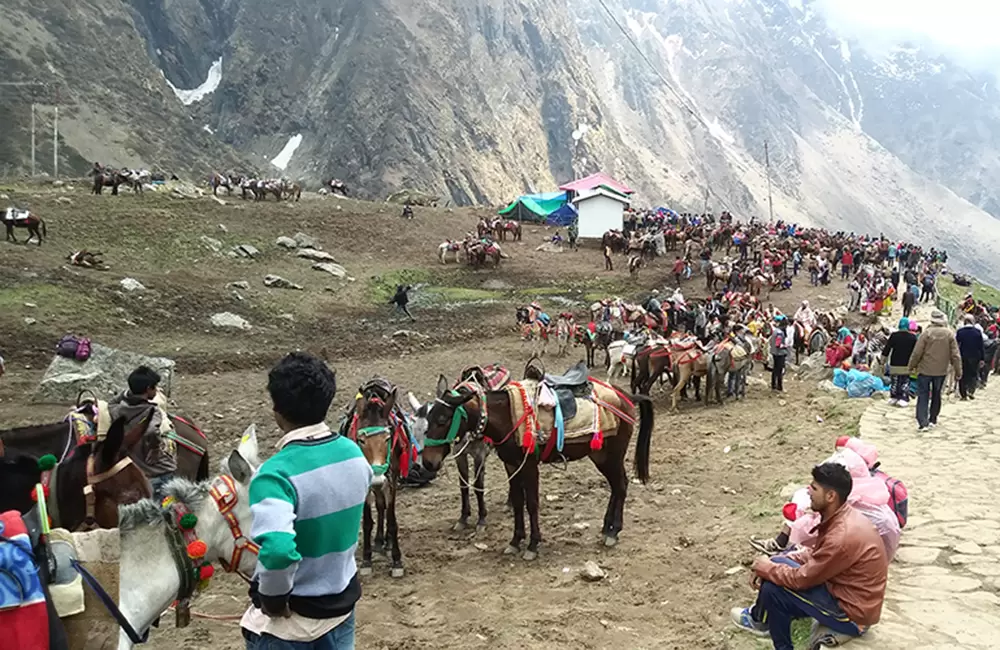
eUttaranchal Tip 1: If you want to visit Bhairavnath temple in Kedarnath then do this after checking out from your hotel room cause there is a small shortcut route from Bhairav temple to another side which will surely be going to save your time while coming back to Sonprayag/Gaurikund.
You can hire ponies/horse or Palki or can complete the further distance by simply trekking. It takes 5 to 6 hours to reach Gaurikund from where you have to take shuttle service to Sonprayag.
eUttaranchal Tip 2 : If you have reached at Sonprayag around 2 to 3 pm then do travel to Guptkashi (30 km by road / 1.5 hours). It will save your 2 hours for the next day trip and is going to save you from morning traffic too.
Day 4 : Guptkashi to Rishikesh ( 184 kms / 7 hours).
Say goodbye to this beautiful town of Uttarakhand. The journey will take 7 to 8 hours of your time. It is recommended to start your journey in the sharp morning so you can reach Rishikesh on time to catch night buses or trains.
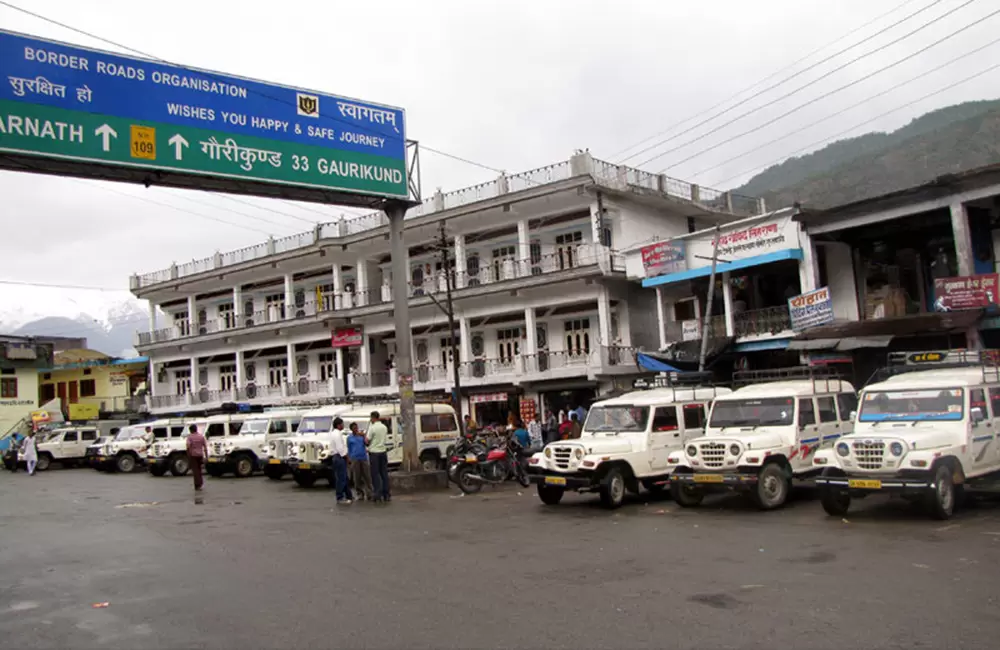
Easy way to visit Kedarnath Temple
If you are unable to do a hard trekking of more than 16 kms to reach Kedarnath temple then you have to take the help of a pony to reach there. They charge around 2500 to 3000 rs for one side but there is an easy way to reach Kedarnath temple here it is.
- Book your hotel to Phata which is close to Kedarnath
- Book a Helicopter service to Kedarnath from Phata which charge around 7000 Rs. of both side almost like the rate of pony but it will save your time and efforts to reach Kedarnath.
- Do the darshan and reach at Kedarnath Helipad to come back to Phata.
- In-case if you have low budget then book Helicopter from Sersi, it will cost you around 2500 for one side & come back through trekking route because walking to down is easier than climbing.
Char Dham Yatra Guide
- Char Dham Tour Packages - Char Dham Hotels - Char Dham Car Rentals
- Char Dham Yatra Guidelines - Char Dham Registration
- Char Dham Route - Char Dham Tour Tips - Char Dham News
- Importance of Char Dham Yatra
- Kedarnath Helicopter Booking Guide - Char Dham Yatra by Helicopter
- Do Dham Same Day Heli Tour
Char Dham Destinations
- Badrinath :: Badrinath Tours - Badrinath Hotels - Badrinath Taxi Fare
- Kedarnath :: Kedarnath Tours - Kedarnath Hotels - Kedarnath Taxi Hire
- Gangotri :: Gangotri Tours - Gangotri Hotels - Gangotri Taxi Cost
- Yamunotri :: Yamunotri Tours - Yamunotri Hotels - Yamunotri Taxi Fare
For more information Kedarnath Dham
Shri Badarinath Kedarnath Temple Committee : https://badrinath-kedarnath.gov.in/ Pilgrims Help Line :0135-2741600
Uttarakhand Tourism Kedarnath Guide : Details
IRCTC Kedarnath Helicopter Ticket Booking : https://heliyatra.irctc.co.in/
Kedarnath or Char Dham Registration website : https://registrationandtouristcare.uk.gov.in/
Rudraprayag District Kedarnath Helpline Numbers for 2024 Yatra Yatra control room number: 01364-297878 and 01364-297879 Kedarnath Heli Help Line : +91 98709 63731
Kedarnath Photo Gallery
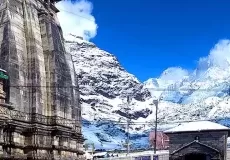
Kedarnath Questions
- Kedarnath Weather
Check out the Kedarnath weather report for September
Kedarnath Weather in September
The minimun and maximum temperature in September in Kedarnath is 3 ° C and 12 ° C respectively. The weather is generally pleasant and clear in September and you would feel pleasant throughout the day. Heavy Woolen clothes are recommended for Kedarnath in September.
- Kedarnath Travel Guide
- Kedarnath Hotels
- Kedarnath Tour Packages
- How to Reach Kedarnath
- Kedarnath Distance Chart
- Places near Kedarnath
- Kedarnath Blog, Articles, Travelogues
- Kedarnath News
- Kedarnath Bus Car Taxi Hire
- Kedarnath FAQs
- Kedarnath Photos
What is Kedarnath famous for?
Kedarnath is famous among tourist as Kedarnath Temple, Char Dham Yatra, Trekking, Himalayas, Pilgrimage, Panch Kedar, Religious.
Kedarnath is recommended destination for Family and Kids, Foreigners, Groups, Solo.
Kedarnath is popular destination for following activities/ interests - Char Dham Route , Char Dham Yatra , Helipads , Panch Kedar , Pilgrimage , Religious , Shiva Temples , Temples , Trekking .

Kedarnath Reviews
Visiting Kedarnath was a spiritual journey unlike any other. The trek to the temple is challenging but incredibly rewarding, with breathtaking views of the Himalayas along the way. Reaching the temple after the trek fills you with a sense of accomplishment and devotion. Despite the crowds, the temple's serene atmosphere is maintained, and the darshan was a deeply moving experience. I recommend starting the trek early to avoid the midday rush
My trip to Shri Kedarnath Ji was an incredible experience with breathtaking views. The place is peaceful and majestic, truly a sight to behold. We trekked for about 9-10 hours to reach the temple, and every step was worth it. The beauty of nature along the way is simply stunning. The temple itself is more beautiful than you can imagine. For those planning a visit, don't forget to pack the essentials: A large raincoat that can cover your bag (the weather is unpredictable), Warm clothing like sweaters, gloves, and socks (as snowfall can happen at any time).It was a memorable journey, and I highly recommend it to anyone seeking both adventure and spirituality.
The trip to Kedarnath Temple in the snow was truly enchanting. The snow-covered landscape created a serene and tranquil atmosphere, deepening the spiritual essence of the journey to this sacred site. The crisp, cold air added an element of adventure, making the pilgrimage even more exhilarating. Walking along snow-laden paths, surrounded by towering mountains, felt like a surreal experience that will remain etched in memory. The sight of the ancient temple emerging through the blanket of white was awe-inspiring, leaving a profound impression. Overall, the Kedarnath Temple visit in the snow was a unique and unforgettable experience, blending spirituality with the pristine beauty of nature.
The journey to Kedarnath is challenging, but the experience is truly divine. The trek is long, and the weather can be unpredictable, but the scenery is breathtaking. Upon reaching the temple, the sight of the majestic Kedarnath shrine against the backdrop of the mighty mountains is overwhelming.
Kedarnath is not just a pilgrimage, but an adventure. The trek can be strenuous, especially in the cold, but the stunning natural beauty makes it all worthwhile. The temple, surrounded by snow-capped peaks, is awe-inspiring. The facilities along the route are decent, with plenty of places to rest and eat. However, it's essential to be well-prepared with warm clothing and good trekking shoes. Overall, it was an unforgettable spiritual and physical journey.
Kedarnath is one of the most beautiful and powerful temples you'll ever visit, it requires a significant amount of time and energy to reach, but the journey is well worth it. The nights are quite cold, so be sure to bring gloves and sweaters to stay warm.
Kedarnath Highlights
- Highest Jyotrirlinga of Lord Shiva
- One of the Panch Kedar Dhams
- One of the Char Dhams of Uttarakhand
Kedarnath overview
- Temperature in Sep 12 /3 °C
- Best time to visit Kedarnath May, Jun, Sep, Oct, Nov,
- Located in Rudraprayag , Garhwal
- Recommended stay 2 days
- Railway Station Rishikesh, 228 kms
- Nearest Airport Jolly Grant Airport Dehradun, 248 kms
- Famous for Kedarnath Temple, Char Dham Yatra, Trekking, Himalayas, Pilgrimage, Panch Kedar, Religious
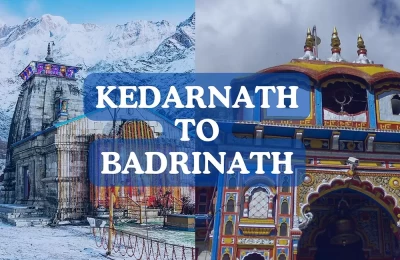
Get a Quote
- Places to See
- Distance Chart
- Blog, Articles
Travelling to Kedarnath in 2024?
Contact us for planning your Kedarnath tour with best travel packages of as per your requirements!
- Char Dham Yatra
- Char Dham Packages
- Chopta Tourism
eUttaranchal
- Uttarakhand
- Uttarakhand Tourism
- Uttarakhand Tour Packages
- Uttarakhand Hotels
Customer Service
- Return, Cancellation & Refund
- Privacy Policy
- Terms of Use
Business Connect
- List your Package
- List your Hotel
- Send Feedback
A Complete Guide to Trekking Tours in India
India Tours
International tours, destination wedding, medical tourism, plan your trip.
- Trekking in India
Kedarnath Trek
- Accommodation
- Sightseeing
- Trip Highlights
- Best Time to Visit
Kedarnath Trekking Tour
Celebrated in Hindu mythology and religion, the Garhwal Himalayas are said to be the “Abode of the Gods”. The river Ganges takes its source in this remote massif, at the sacred shrine of Gangotri, and rushes down to the plains in a torrential fury. Very few trekkers follow this itinerary which will lead to one of the most important spots of Hindu spirituality, where you will experience a strange atmosphere of religious fervour.
From Kedarnath, where hundreds of pilgrims arrive from all regions of India, the path proceeds at first along the sacred Bhagirathi river, then through dense forests and grassy areas as far as Lata. From there it is a 5-hour drive to Gangotri, where the second part of the trek starts. Near Gaumukh, close to the Source of the Ganges, you will experience the strange view of half-naked sadhus in the lotus position, meditating on the bank of the bubbling stream pouring out the glacier. Further up, Tapovan is a grassy area with numerous brooks, surrounded by snowy peaks.
It is a round-trip itinerary starting in Kedarnath, along the sacred Bhagirathi River, then heading west, through dense forests and grassy areas. The northern part of the itinerary will offer magnificent views of several high altitude lakes.
Kedarnath Trek (Detailed Itinerary)
Delhi - rishikesh (225 kms/6 hrs), other benfits (on arrival).
- Stay Included
In the morning board AC Volvo from Delhi Kashmiri Gate Bus Terminal to Rishikesh at 07:30 hrs. Arrival at Rishikesh by 13:00 hrs and check in to pre booked hotel at Rishikesh. Relax and later visit Laxman Jhoola, Parmarth Niketan, also witness the famous Aarti ceremony at Holy River Ganges. Later back to hotel for Dinner and overnight stay.
Rishikesh - Guptkashi (180 kms/8 hrs)
In the morning after breakfast meet our driver and hotel and drive to Guptkashi via Devprayag (Confluence of Baghirathi and Alaknanda; the holy River Ganges Start from here) and Rudraprayag. Arrival at Guptkashi by evening and check in to hotel. Dinner and overnight stay at hotel in Guptkashi.
Guptkashi - Gaurikund - Kedarnath (3600m) 30 kms drive and 16 kms trek
In the morning after breakfast drive to Sonprayag and from here take a shuttle to Gaurikund. From here start your trek towards Kedarnath Dham. The trek is mix of zig zag and steep climb where we will walk with hundreds of pilgrims from all over India. The forest slowly gives way to splendid views of Mount Kedarnath (6940m). On arrival check in to hotel. Later visit the Temple for Aarti ceremony. Dinner and overnight stay at hotel in Kedarnath.
Kedarnath is one of the most important Indian pilgrimage places. The temple, built in the 8th century and dedicated to the goddess Shiva, is magnificently surrounded with snow-capped peaks.
The day is for relax, meditation and also visit the Bhairavnath Temple, Shankaracharya Samadhi, Rudra Cave Kedarnath etc. Dinner and overnight stay in hotel at Kedarnath.
Kedarnath - Gaurikund - Rudraprayag
In the morning visit the temple for Darshan and later after breakfast trek down towards Gaurikund and from here take a shuttle for Sonprayag. Here meet our driver and drive to Rudraprayag. On arrival check in to hotel. Dinner and overnight stay at hotel.
Rudraprayag - Kanakchauri (40 kms/1.5 hrs) - Kartik Swami Temple (3 kms Trek) - Rudraprayag
In the morning after breakfast drive to Kanakchauri (Starting point of Kartik Swami Temple Trek). From here start a 3 kms trek towards Kartik Swami via a thick forest of Rhododendron, Oak, Birch etc. The temple is located on the top of Kronch Parvat in a narrow ridge at an Altitude of 3050 mts from sea level, the temple is dedicated to Lord Shiva’s Son Lord Kartik. One can see the mighty high Himalayan peaks from Kartik Swami Temple like Chowkhamba peak, Kedarnath peak, Nilkantha peak, Mandani peak, Balakun Peak, Bandarpunch peak etc. Visit the temple and later trek down to Kanakchauri, from here drive to Rudraprayag for dinner and overnight stay.
Rudraprayag - Rishikesh - Delhi
In the morning after breakfast drive to Rishikesh and from here catch AC Volvo bus for Delhi at 13:00 hrs. Arrival at Delhi by 19:00 hrs.
Fill Enquiry Form Below
Why tmi for trekking holidays, experienced.
An experienced trekking tour operator, with a team of an experienced adventure enthusiast ensure to give our clients well-designed trekking tour packages.
We are certified by major tour and travel associations in India and world like IATA, IATO, TAAI, IMF & MOT (Ministry of Tourism, Govt of India).
Happy Customers
TMI has received numerous accolades from its happy customers for its excellent services and best adventure holidays.
Local Offices
We have local office in Ladakh, Uttarakhand, Sikkim, Jammu & Kashmir, & Himachal Pradesh for our customers to find assistance anytime and anywhere.
Related Tour Packages
08 Nights - 09 Days
Adi Kailash Trek
17 Nights - 18 Days
Auden’s Col Trek
6 Nights - 7 Days
Auli Gorson Bugyal Trek
Auli snow view trek.
8 Nights - 9 Days
Bagini Glacier Trek
12 Nights - 13 Days
Bali Pass Trek
5 Nights - 6 Days
Brahmatal Trek
Chenap valley trek.
4 Nights - 5 Days
Chopta Chandrashila Trek
11 Nights - 12 Days
Darma Valley Trek
Dayara bugyal dodital trek, dayara bugyal trek.
14 Nights - 15 Days
Dhumdhar Kandi Pass Trek
Dodital lake trek.
7 Nights - 8 Days
Dodital Yamunotri Trek
Gangotri kedarnath trek.
9 Nights - 10 Days
Gangotri Nandanvan Trek
Gangotri tapovan trek, gulabi kantha trek.
10 Nights - 11 Days
Har Ki Dun Ruinsara Tal Trek
Har ki dun trek, hemkund sahib trek, kafni glacier trek, kalindikhal trek, kanari khal trek, kedar kantha trek, kedarnath vasuki tal trek, kedartal trek.
15 Nights - 16 Days
Khatling Sahasratal Trek
Kuari pass tapovan trek, kuari pass trek, lamkhaga pass trek, masar tal lake trek via khatling glacier, mayali pass trek, milam glacier trek, nag tibba trek.
16 Nights - 17 Days
Nanda Devi East Base Camp
20 Nights - 21 Days
Nanda Devi Inner Sanctuary Trek
Nanda devi trek, nandi kund trek, panch kedar trek, panchachuli bc trek, pangarchulla peak climb trek.
13 Nights - 14 Days
Panpatia Col Trek
Panwali kantha trek, pindari glacier trek, pithoragarh sin la pass trek, pithoragarh to lipulalekh trek, roopkund trek, rupin pass trek, satopanth lake trek, shivling base camp trek, sunderdhunga bc trek, valley of flowers trek, more about trekking in garhwal, our latest informative travel blogs, explore the hidden natural treasure of himalayas with these unexplored treks in uttarakhand, india trekking guide: best informative blogs on india himalayas trekking tour, where to visit in uttarakhand and himachal for adventure, chilling, and finding peace for a post-lockdown holiday, india trekking information at a glance, trekking destinations.
- Uttarakhand
Special Interests Treks
- Wildlife Treks
- Spiritual Treks
- Weekend Treks
- Cultural Treks
- Family Treks

Best Time for Trekking in India
- Best Time to Do Ladakh Trek
- Best Time to Do Uttarakhand Trek
- Best Time to Do Sikkim Trek
- Best Time to Do Himachal Trek
- Best Time to Do Kashmir Trek
- Best Time to Do Garhwal Trek
Fixed Departure Tours
- Fixed Departure for Ladakh
- Fixed Departure for Uttarakhand
- Fixed Departure for Sikkim
- Fixed Departure for Himachal
- Fixed Departure for Kashmir
Seasonal Treks
- Spring Season Treks
- Summer Season Treks
- Monsoon Season Treks
- Autumn Season Treks
- Winter Season Treks
Essential Links
- Things to Carry
- Terms & Condition
- Trekking Equipment
- Trekking Permit
How It Works
- Tell us details of your holiday plan.
- After you submit the form, one of our travel experts will get back to you with customised holiday package based on your requirement, within 24 hours.
- Grab the deal and start packing your bags for an indelible holiday with Tour My India.
Call Us for details
+91-9212553106
Request a quote.

Kedarnath Dham Yatra Trek Guide
Sitting amongst the mighty and majestic Garhwal Himalayan ranges of Devbhoomi Uttarakhand, Kedarnath Dham Yatra is one of the most picturesque as well as perilous journey anyone can undertake. There have been several instances of the pilgrimage going wrong all due to bad planning and execution. One needs to plan ahead of time in order to avoid unpredictable inaccuracies which may prove to be fatal. This travel guide for the Kedarnath trek will definitely come in handy while planning your divine journey.
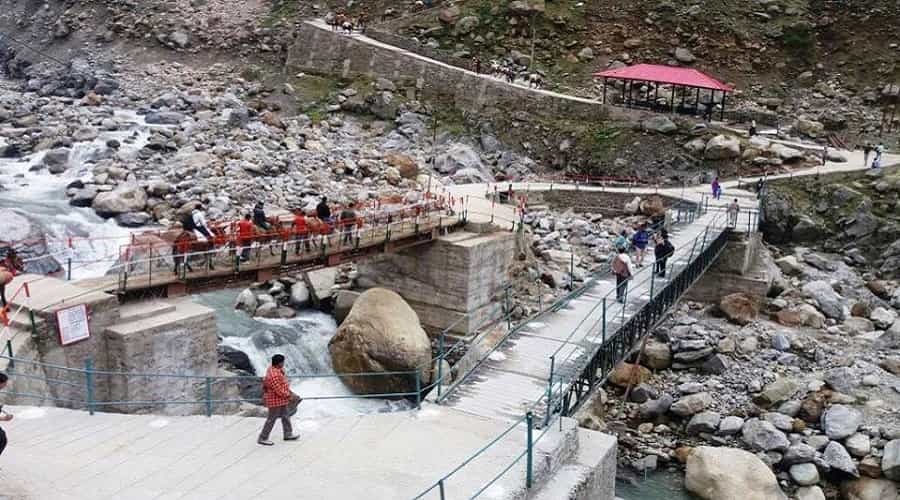
How to Reach Kedarnath Dham:
By Road – If you are planning on visiting Kedarnath Dham by road by hiring a cab or taxi then one can hail it from Delhi to Dehradun. Upon reaching Dehradun you will be transferred to Haridwar – which usually serves as the base for the Chota Char Dham Yatra of Uttarakhand. Here is a brief representation of the map which you will be following:
Haridwar – Rishikesh (24 km) – Devprayag (74 km) – Srinagar (34 km) – Rudraprayag (33 km) – Gaurikund via Tilwara, Agastyamuni, Chandrapuri – Kund – Guptkashi – Phata (in case you are opting for Kedarnath Dham Yatra by helicopter ) – Sitapur – Sonprayag (74 km)
In case you are planning on trekking then you will be covering a distance of 14 to 16 kms which takes 5 – 6 hours to complete. On a side note, be sure to wake up extremely early in the morning in order to make it back to your accommodation site on time.
By Air – you have the option of booking a helicopter ride to all the char dham yatras. You also have the option of choosing from 2 different sites in case you want to go for a Kedarnath yatra by helicopter.
From Dehradun – you will be boarding a helicopter from the Sahastradhara helipad. The helicopter which takes off from here will drop you off at your destination within 40 minutes.
From Haridwar / Rishikesh – if your plans are of travelling to Kedarnath from Rishikesh or Haridwar then from here you will be transferred to Phata which is the helipad created for the service of receiving helicopter for Kedarnath Dham Yatra.
By Trekking – once you reach Sonprayag you will have the option of travelling in a shared cab. The per person charge for travelling in this cab is rupees 20/- and this cab will drop you off till Gaurikund. You will be trekking further from Gaurikund to Kedarnath which is an uphill trek of 14 – 16 kms and takes 6 – 7 hours to cover. A new Kedarnath Dham trekking route has been constructed after the 2013 Kedarnath cloudburst flooding disaster.
Kedarnath Trek Route Map
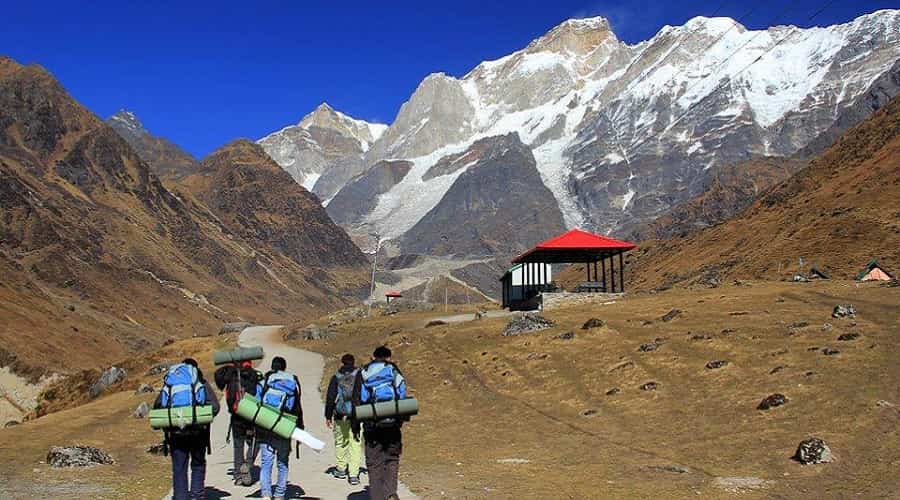
Prior to the flooding disaster of Kedarnath Dham the trekking route included Rambara which was well fenced, well developed and was a designated trekking route. A brand new trekking route has been developed by the government post the devastating flood disaster of 2013. Given below is the newly developed trekking route:
- Arrival at Gaurikund via shared cab/taxi from Sonprayag which is situated at a distance of 6 km.
- Gaurikund to Jungle Chatti via Rambara Bridge which is situated at a distance of 4 km.
- From Jungle Chatti you will make your way to Bheembali.
- From Bheembali you will head on to Linchauli
- Kedarnath base camp will be your next destination which is situated at a distance of 4 kms.
- The main Kedarnath Dham Mandir is located at a mere distance of 1 km from the Kedarnath base camp.
Weather Guide:
- The best time for you to choose trekking to Kedarnath will be during the summer months when the weather is clear, predictable and it’s the peak season for pilgrimage. May to early July is the best time to go trekking and maybe even beyond the temple for adventurous expeditions.
- The months of monsoon should best be avoided due to the sudden and unpredictable weather conditions. July to September are the time when trekking to Kedarnath is at an all time low.
- Winter months marks the shut down of the entire trekking route due to a heavy snow cover. The visit here impossible and even the idol of the presiding deity is shifted to its winter abode in Ukhimath for the winter char dham yatra circuit.
Kedarnath Trek Features
The overall trekking route for Kedarnath Dham pans over a distance of 16 kms and covering this requires the person to be extremely fit and maintain a good physical fitness level. It is advised for the pilgrims to get themselves medically checked at least 1 or 2 months prior to the commencement of the trek. It is important for the Yatris to know their level of physical fitness and stamina before going on this perilous trekking journey. The timings for the Kedarnath trek from Gaurikund kick starts from 4 am early in the morning and lasts till 1:30 pm in the afternoon. These timings are rigid and never changes since the trekking route goes through the Kedarnath wildlife sanctuary and these timings are decided keeping in mind the sanctuary’s timings. No visitor is given permission to leave after the said specific timings. These high altitude treks are not recommended for people suffering from respiratory or breathing problems.

Facilities Available at Kedarnath Trek
There are several alternative methods of covering the pilgrimage distance like mules and dolis / palkis. People have the option of booking these services from the booking counter which is set up at Gaurikund or Sonprayag. The rates are set as per the distance you will be covering. The entire length of the trek is dotted with numerous tented accommodations, small shops, eateries and drinking water services. The helicopter service for Kedarnath Dham commences from Phata.
Kedarnath Trek Essentials to Carry:
- A bottle of water which you can carry anywhere and fill up once you are finished. Remember to keep yourself hydrated throughout the trek.
- A bottle of sunscreen is a must since you will be subjected to high altitude sun conditions which may damage your skin or at the most cause a tan. A good SPF quality of sunscreen lotion should be kept with you at all times.
- A must-have is a raincoat. Since Kedarnath is situated at a very high altitude the weather conditions here are extremely unpredictable and random. Sometimes during the trek, you may even experience heavy rain showers which may prove to be a huge hinderance during your trekking.
- Mobile connectivity in Kedar valley is weak and may be lost in some places. You can carry BSNL sim card if you want to stay in touch with your family and friends. Before going to kedarnath remember to inform all your family members to ensure safety.
- In case of food, you must carry snacks and other such eatables which are high in glucose and will give you a surge of energy when you are starting to get lethargic. Food items like energy bars, chocolates, sweets etc is advised.
- The wind is persistent in these regions even if you go there during the most favourable time. The nights here get very cold and chilly. One must carry a wind cheater jacket or an extra shawl to deal with the situation. This will definitely be a very good decision from your end.
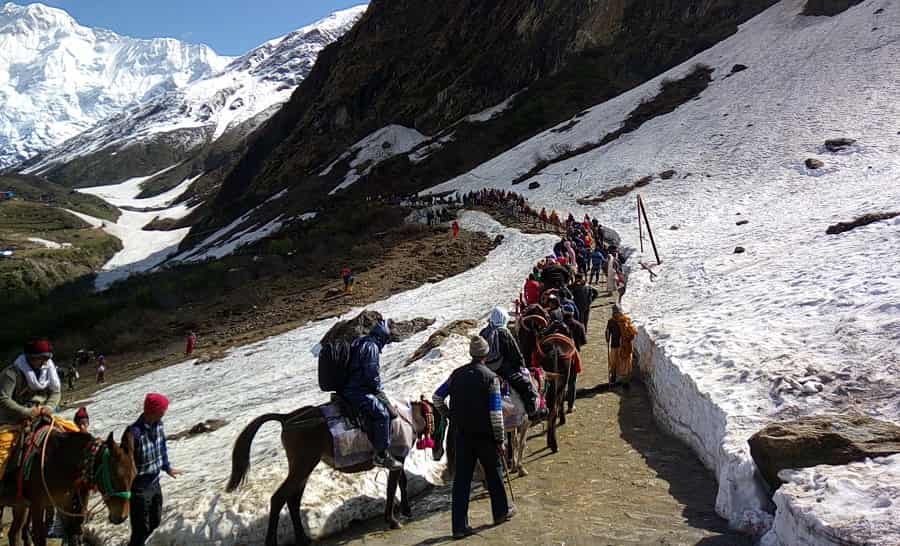
Things to Keep in Mind Prior to the Kedarnath trek
- Make sure you get a full body checkup done before going on this Kedarnath trek.
- People suffering from respiratory disorders and high blood pressures are advised not to stress themselves out by going on this trek.
- In case you opt for travelling through Kandi, ponies or Palki ensure that your bookings have been completed at the booking counter available at Gaurikund / Sonprayag.
- The trekking timings are extremely strict which is of 4 am to 1:30 pm.
- In case you are unable to complete the entire trek in the given time then you have the option of staying in camps which are available at Jungle Chatti, Bheembali and Linchauli.
Frequently Asked Questions:
What is the terrain of Kedarnath trek?
The trekking for Kedarnath will take you through a very varied hilly landscape here which comprises of steep ascents, plains and gradual descents. However being situated on a high altitude the travel here is very difficult and challenging which should be taken seriously and one should definitely prepare well before going there.
Is the Trekking Journey Safe?
After the disaster in Kedarnath the trekking routes have been newly set up which are safer than the last routes. People still hold a lot of apprehension regarding the journey which should not be the case since all the new development plans have worked towards making trekking journey to the temple capable and better through the government’s sustainable solutions.
Can I stay anywhere en route the Kedarnath trek?
There are Kedarnath camps available at a distance of around 5 minutes from the temple entrance. It is the perfect option for people who either get late for getting back to Sonprayag or wish to seek darshan early in the morning. The tented accommodation here can accommodate a number of people if you do your booking beforehand and it will be easier for you as well.
Can people with blood pressure and heart problems walk up to the temple?
This is a high-altitude trek and the air here is low on oxygen content. People suffering from heart and blood pressure-related issues are advised not to do this trek. If you really want to then consult your doctor beforehand for some expert advice. Be sure not to tire yourself out even if you get to go for the trekking. The moment you feel like you are gasping then give yourself a break for 5 minutes and get your breath back before continuing the journey.
What is the food availability through the trek?
There are several Dhabas offering Chinese food, tea and snacks here which are located all along the trek route. This is also a good option for you to stop and get something to eat before heading on for the trek.
We hope that this comprehensive guide for Kedarnath Dham Yatra will be of some use and help you in planning your holy journey accordingly.
Suggested Tour:
- Chardham Yatra from Delhi
- Chardham Yatra Package
- Chardham Yatra by Helicopter
- Do Dham Yatra by Helicopter
- Badrinath Yatra by Helicopter
Leave a Reply Cancel reply
Your email address will not be published. Required fields are marked *

Plan Your Trip Our expert will get in touch with you shortly
Mobile No *
We never share your Information.
Kedarnath Trek Guide
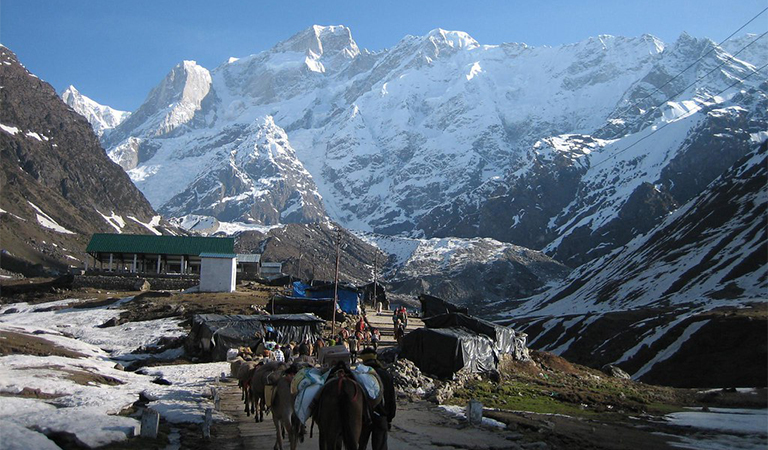
Kedarnath, holding at an altitude of 3,553 meters from the sea level, is located in the Rudraprayag district of Uttarakhand. Of all the Chardham Yatra , Kedarnath Yatra holds greater importance because of its religious significance and also because of the level of difficulty it involves to reach the shrine of Lord Shiva. The journey to this holy shrine includes a trek from Gaurikund . Though Kedarnath trek is known to be very difficult, however, with a well-planned Kedarnath Travel Guide , you can complete it at ease. Shrine Yatra offers you the opportunity to avail a specially curated trek guide to Kedarnath only for you.
Route to Reach Kedarnath by Trek
The devotees need to reach Gaurikund first because the 16 kilometres Trek to Kedarnath begins from there. You can reach Sonprayag from Haridwar, Rishikesh by Taxi or Bus via Guptkashi. You may also avail air route to Guptakashi/Phata/Sitapur via Dehradun or can also do Kedarnath helicopter yatra . You may also reach Kedarnath by Road from Delhi by buses or Taxi. Follow the Route- Delhi >> Haridwar >> Rishikesh >> Devprayag >> Rudraprayag >> Guptakashi >> Sonprayag >> Gaurikund >> Kedarnath . According to the New Trek Route to Kedarnath after the flood, follow the trek route given below:
- Reach Gaurikund from Sonprayag approx 6 Kms by sharing taxi.
- Trek again to Jungle Chatti approx 4 Kms via Rambara Bridge.
- Bheembali Linchauli, approx 4 Kms.
- Reach Kedarnath Base Camp from Linchauli, Approx 4 Kms.
- Visit Kedarnath Temple from Kedarnath Base Camp, 1 km.
Kedarnath Trekking Time
The trek to Kedarnath begins from 4 AM, early in the morning and continues till 1:30 PM in the afternoon. No treks can be commenced after that because Kedarnath is located in the Kedarnath Wildlife Sanctuary so a specific time shall be maintained. Those pilgrims who want to return same day, leave before 5 PM from Kedarnath.
Facilities to Avail During Trekking to Kedarnath
While doing the Kedarnath trek, you can go on foot or you can also avail Palki Dandi, Kandi, Mule or Ponies. Helicopter services to Phata Helipad and others are also available from Kedarnath Helipad. En-route, there are many lodges, guest houses, ashramas and camps where you can find cheap accommodations and good food. There are plenty of refreshment options available throughout the trek route. Tented accommodations, drinking water facilities and some shops and restaurants are available in the route. You can also find several medical and first aid facilities near Lancholi and Base Camp. There are several police check posts and also a government hospital located only 200 metres from the Kedarnath Temple for some medical emergencies.
Things to Remember Before Going for Kedarnath Trek
- Make sure you have medical fitness and you are physically fit to climb the steep slopes. Especially, individuals with respiratory problems and high blood pressure should avoid the trek.
- If you want to avail Palki or Pony services for the trek, then bookings are required either from Gaurikund or Sonprayag.
- Remember not to carry heavy baggage during the trek because it may slow down your trekking pace.
Follow the complete trek guide to Kedarnath to avail a smooth and flexible Kedarnath trek with Shrine Yatra.
Get Free Quotes from Our Tour Expert!
- write for us
- testimonial
- term & condition
- privacy & policy
- we are hiring
- share your travel experience
- nepal tour packages
- himachal trekk packages
- uttrakhand trekk packages
- Sikkim Trek Packages
- flight ticket booking
- hotel booking
- www.shrinetaxi.com
- www.thekumbhyatra.com
pay securely now
- Jammu & Kashmir
- Himachal Pradesh
- Uttarakhand
- West Bengal
- Switzerland
- Cortina d'Ampezzo
- Dharamshala
- Grindelwald
- Motorbiking
- Mountain Biking
- Mountaineering
- Paragliding
- Rock Climbing
- Scuba Diving
- Snowboarding
- Snowshoeing
- Via Ferrata
- --> Sign Up / Sign In -->
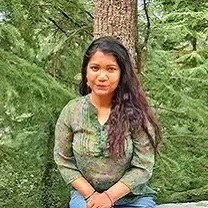
Rishikesh, Immerse in the spiritual aura amidst t…
5 July, 2021
Frequently Asked Questions
Why should i go kedarnath trek.
Kedarnath Trek is undoubtedly a sacred trip to visit the Lord in His glorious form. The 1200 years-old Kedarnath temple, renowned as the holy pilgrimage site for the Hindus, offers peace amidst the moraine Chorabari glacier in the mighty Garhwal Himalayas. It climaxes in the spiritual sight of one of the 12 Jyotirlingas of Lord Shiva. It is a must-visit to immerse in the divinity of the Kedarnath temple painted with the efflorescent marigold garlands, splendid architecture, and a touch of spirituality. Throughout the trek, one can hear nothing but the chanting of the Lord, which creates a sense of pure bliss and tranquility. Kedarnath Yatra is the last stop in the Haridwar and Rishikesh visits due to the less Haridwar to Kedarnath distance while creating an exhilarating experience with the mythological anecdotes of Mahabharatha. You cannot but wonder at the Lord's ways of residing in a remote place, away from the city's hustle amidst the calm mountains and the rich flora and fauna! It fills you with a spectrum of emotions while hiking along with thousands of devotees donned in saffron and Rudraksha. From the top, one can spot the glorious Kedarnath peak with the beautiful backdrop of the blue skies engulfed by the misty clouds. The trail offers some innate beauty of the several mountain peaks nestled in the bounty of nature and keeps one's eyes hooked to the photogenic vistas. One of the prominent tourist attractions among the four holy sites (Char Dham Yatra), the Kedarnath trek commences from Gaurikund with the temperature dropping to 5°C as you advance through the camping sites of Jungle Chatti, Bheem Bali, and Linchauli that takes you to one of the five abodes of Lord Shiva. The breathtaking views of mountains from Linchauli will nudge you to live in the mountains in quietness. One glance at Kedarnath images in their full glory during the winter is a once-in-lifetime experience you don't want to miss. The view of Mount Kedarnath (6940 m) from the dense forests is heavenly. The total ascent rolls from easy to moderate level, most of the trail engulfed in snow, and the visual delight of the celestial aura eclipse the fatigue from the hike. The changing weather and the color palettes of nature in a jiffy make the trail worth exploring with a contrasting backdrop of the pristine white snow and the fresh patch of green meadows. The Kedarnath trek distance is 18 km, but it feels like a second when surrendering at the lotus feet of Lord Shiva and singing hymns at the early morning prayers and the temple Aarti.
What are the important considerations for Kedarnath Trek?
The Kedarnath trek is often an eight-day tour, depending on the itinerary you choose. If one decides to start from Haridwar, you can cover the scenic landscapes in Haridwar, Guptakashi in the Kedarnath Yatra. The actual trek begins from Gaurikund (1982 m) with various camping sites amidst nature's manifestation of beauty. The trek from Gaurikund is allowed only between 4:00 AM till 1:30 PM every day, and hence ensure you plan well before enjoying a fulfilling trip. The Gaurikund to Kedarnath trail is steep and requires high physical and mental strength before starting the trek. Kedarnath Trek difficulty level ranges from easy to moderate, and hence anyone between the age of 7 to 65 years with good physical fitness can make it to the top. Don't miss your daily workouts as a head start before four months of the trek. If you are an amateur in trekking, you can practice breathing exercises such as Anulom Vilom to sustain high-altitude climatic conditions. However, there are alternative facilities like Palki, Doli, mules, and ponies for completing the Yatra. Pregnant women, people with hip and knee injuries, and heart problems must avoid this trek to prevent fatalities. The Kedarnath trek package ranges between USD 160 to 175 (INR 12000 to 13500) per person for eight days with accommodation and food. However, most tourists prefer Do Dham and Char Dham Yatra often. Since the Kedarnath to Badrinath distance is around 243 km, the Do Dham yatra package is between USD 450- 470 ( INR 34,000- 36,000). While googling the Kedarnath Trek best time, people suggest that Summer (April-June) and Winter (September-October) is the most recommended time of the year. Since the weather is moderate, you can enjoy the awe-inspiring views of the Himalayan peaks and the tiny rivulets, creating a celestial view from the top. In the monsoon season, the weather becomes unpredictable, and the incessant rainfall creates landslides and flash floods that wreak havoc in the region. However, the winter season holds a natural liking in the hearts of hikers. The surreal landscapes in the dipping Kedarnath temperature is a dream-come-true scenario. Welcoming winter at the top of the mountains tests your endurance to cold temperature and flags off for an adventurous trek. While embarking on this trek, you need proper travel gear such as hiking shoes, a pair of thick woolen socks, gloves, and thermal wear. Carry warm clothes and thick scarfs/towels to sustain the beating weather. Women must avoid wearing sarees to this trek, as it can cause discomfort with the gusting wind from all directions. In addition to that, you must equip yourself with daily essentials like a backpack (50-60 lt), caps, earplugs, cotton, raincoats, masks, umbrella, water bottle, jackets, a poncho, and gumboots. Your toiletries must include moisturizers, sunscreen, lip salve, toilet papers, wet tissues, sanitary napkins/menstrual cups for women, toothbrushes, toothpaste, hair shampoo, soap, and plastic covers to avoid disposing of waste outside. The trek manifests itself as the epitome of changing colors of the sky and nature, and your backpack is incomplete without electronic items like spare batteries, a camera, tiny gimbal, power banks, and chargers. Carry essential medical kits like first aid tablets for vomit/fever/cold/menstrual cramps/ sprains.
How difficult is the Kedarnath trek?
Kedarnath trek is easy to moderate, and beginners with high fitness can make the trek.
How much does the Kedarnath Trek cost?
Kedarnath trek package starts from USD 160 to 175 (INR 12000 to 13500) per person for an eight-day trip.
Which time is best for the Kedarnath Trek?
The best time to embark on the Kedarnath trek is between May-June and September-October since the sun is comparatively less harsh and the weather is calm.

The Reccy Advantage
- We know Adventure
- Discover the best operators
- Ensure Health, Safety & Hygiene
- we're here to help your trip go smoothly
- Keep in mind the need to protect the environment
- Always carry out what I bring in
- Respect the culture and way of life of the residents of the region
- Act responsibly and follow the laws of the regions I visit
- Help others in need, wherever practical
- Respect guides, staff and fellow travellers
Explore more adventures from Rishikesh

Valley of Flowers Trek
Rishikesh | India

Brahmatal Trek

Deoriatal Chandrashila Trek

Ali Bedni Bugyal Trek

Satopanth Tal Trek

If you are tired of the humdrum and bustle of your city life and want to embark on an enriching, meditative yet adventurous journey in the lap of the Himalayas, the Kedarnath trek will be the best bet for you. Despite being devastated by the unannounced cloudburst of 2013, the saga of the Kedarnath Dham has not stopped there.
As of 2022, the general footfall at Kedarnath has been steadily increasing for the past seven years, slowly approaching its past glory. Now, the trek may be slightly more challenging than before, but make a firm resolution not to be defeated in the increased difficulty.
Surrounded by the steadfast Kedarnath Dome (6,831 m) and Mt Kedarnath (6,940 m), the Kedarnath temple is a melting pot of spirituality and the raw beauty of Rudraprayag, emboldened by a lush forest area on the path. Read on to know the story of Kedarnath Yatra and how you can be a part of it.
An elevated island of spirituality and mythology
Situated in the Rudraprayag district at an elevation of 3,584 m above sea level and surrounded by the picturesque Garhwal Himalayas on all fronts, the Kedarnath temple feels like a sheltered haven for all who come to rediscover themselves.
Another exciting thing to know before booking your Kedarnath tour package is the rich history. The Kedarnath Dham is inexplicably associated with one of the 'Char Dhams' or four holy Dhams dedicated to Lord Vishnu, Badrinath (3,100 m). A lot of people don't stop at Kedarnath or return from there. They continue up to Badrinath as it is the nearest Dham. The Kedarnath to Badrinath distance is 243 km by road.
Kedarnath is believed to be a homogenous form of Lord Shiva, the 'Lord of Kedar Khand,' the region's historical name. Believed to have been constructed about thousands of years ago by the Pandavas, the Kedarnath temple was refurbished and renewed by Adi Shankaracharya. Its precise architecture accurately manages to capture the zeitgeist of ancient India.
With many placing the Kedarnath trek difficulty at easy to normal, it is a trek that aims to not challenge but awe. The trek is officially closed during winter, but daredevil locals often attempt the Kedarnath Yatra in winter, which becomes slightly more challenging to complete.
The magnificence of the Garhwal
Being surrounded by the mighty Mt Kedarnath and Kedarnath Dome, the rocky path of the Kedarnath trek is beautifully complemented by the lush Kedarnath wildlife sanctuary, home to reportedly one of the world's richest bio-reserves. Standing tall, the temple Kedarnath height amounts to 3,584 meters.
While selecting the perfect Kedarnath trek package , one must keep in mind to opt for the 16km trek from Gaurikund, as it offers the most scenic variety and beauty. The murmurs of the snaking Mandakini river and the snow-capped Himalayas make for apt companions in the quietude of the trek.
Overview of the Kedarnath Trek:
Basic locational insights
Situated in the rich natural heritage of the Rudraprayag district of Garhwal, the Kedarnath trek boasts a series of rapid changes in terrain and temperature. During the start of the trek, the temperatures in summer hover around the 25-26°C warm mark, and by the end, Kedarnath temperature stands at around 13-14°C. The main trek starts at Gaurikund (1,982 m).
One can reach Gaurikund from Haridwar via Guptkashi. Haridwar can be considered the hub for the Kedarnath trek, with the Haridwar to Kedarnath distance being 250 km, which includes the last lap of 16-17 km from Gaurikund to Kedarnath. But before reaching Gaurikund, it is often advised to take a day off at Guptkashi if you are not traveling at a very tight schedule. There are many hotels in Guptkashi, so a one-day stay at Guptkashi is recommended.
You should talk to your tour operator to see if your Kedarnath trek package contains at least one buffer day in Guptkashi to enable you to be in your best shape during the trek.
During this one day, you can also visit the local sights of Guptkashi, such as the Vishwanath temple and Narayan Koti temple, both situated at a mean height of 1350m above sea level.
After your brief halt at Guptkashi, you must leave for Gaurikund, where the real adventure will start. From Gaurikund, the total Kedarnath trek distance is 16 km.
Duration and budget
The round tour package from Delhi to Kedarnath, including halts at Rudraprayag, Guptkashi, and Kedarnath, a buffer day at Guptkashi to explore local attractions, is around 7-8 days long with a cost of about USD 160 to 175 (INR 12000 to 13500).
The budget fluctuates according to the accommodation, season, travel amenities provided, and any extra days demanded (if any).
Network connectivity
If you want to ensure a continued cell-phone reception service, your best bet is to opt for the services of Jio, which provides a good reception throughout the majority of the trek. Other companies had none or extremely shoddy coverage during the Kedarnath trek. With good network connectivity, you can share your clicked images of Kedarnath trek with no ado.
Before 2013, the Kedarnath trek difficulty was easily manageable. It was a straightforward route trodden over countless times over the years. After the devastating flood in 2013, when the government reopened the temple, it mandated a new route for the penultimate 4 kilometers from Linchauli to Kedarnath base camp.
Even if the Kedarnath trek distance remained the same, the difficulty slightly increased because the new route was not that well-known and was relatively remote.
With an average height of 3,584 m above sea level, there is no substantial threat in the Kedarnath trek, except the dangerous slippery slopes during the monsoon season(which should be avoided altogether). It is, therefore, a perfect opportunity for newbie trekkers to gain the proverbial feathers in their caps.
When is the best time for the Kedarnath trek?
Owing to the unpredictability of Kedarnath temperature and weather, most travel enthusiasts agree that the best time to visit Kedarnath is during the months of September-October.
The answer to why October becomes the all-time Kedarnath trek best time lies in the reason that the unpredictable Himalayan skies are primarily clear during this time, and the weather is very welcoming.
It is also the last time to visit the temple as the idol is moved to Ukhimath for 6 months from November to April to protect it from heavy snowfall and dangerously low temperatures like -6 to -10° C.
Summer (April-June) is optimal for travel, with the average temperature hovering around 14-18° C. However, the huge number of people queuing up to be the first visitors for the year makes visits to Kedarnath Temple too tedious during this time.
The monsoon season is also equally impractical and by far the most difficult time. The steep slopes during the trek become exceedingly slippery and give way easily to potential landslides.
Kedarnath trek best time is generally dependent on a number of situational changes too. There can be a year with an unusually extended winter or monsoon. The dates of the visit should be adjusted accordingly.
Gear guide and checklist for the Kedarnath trek:
As it will be a week-long tour with the hike covering two days, one might choose to extend the trekking part to a few more days or individual stops. If you belong to the group who want to complete this trek in one go, you may choose to pack your favorite t-shirts, jeans, hoodies, or sweatshirts as you please.
On the other hand, if you are part of the group who want to take their time exploring, remember to keep a travel-kit handy with you carrying all the necessary woolen clothes and extra accessories required to accommodate the drastic temperature change.
As your hands become more exposed to the cold, the risk of hypothermia rises during the nail-biting winter. Woolen gloves or mitts are ideal for this temperature. Woolen caps, beanies, and heavy fur caps are also recommended as they protect your vital organs from the clutches of frostbite.
You must also remember to wear pants or trousers containing many pockets to ensure maximum storage available to you, minimizing the load on your backpack if carried.
Footwear and other accessories
The foremost mantra for your footwear must be utmost comfort. In the various images of Kedarnath and its trek route, you might have noticed comfortable, breathable footwear on most visitors. Your footwear must also provide you with appropriate friction to combat the rocky terrain or occasional slips.
You will not need much if you travel in a more amenable climate. But if you are traveling during the winter, you will need specialized trekking boots with your footwear reinforced with hardy crampons to avoid losing your footing during the trek.
As you will have to traverse through a forest area, keeping your feet protected from unwanted insects, rocks, or boulders entering your shoes is crucial. To that end, a pair of soft yet thick cotton socks will protect your feet from harm and prevent unwanted feet odor.
Besides your footwear, you must also carry a walking stick regardless of your age to gain that extra support in trying slopes or steep ascents.
If you are an incessant power user and want to breathe easy knowing that your phone has enough juice to last the round-trip, you would need to bring a power bank with you, along with a USB Type C to Type C power adapter.
You must also carry a personal flashlight with a fresh set of batteries in case you are walking in the dark. Along with this, you must take a pair of sunglasses to protect your eyes from the glare of the sun. A set of personal utensils such as a metal dish, bowl, spoons, etc., a water bottle, or a rehydration pack will come in handy. Extra zip-lock pouches, some newspapers, etc., can come in handy at times.
Backpacks
As this is a short trek, you may or may not carry your backpack if you choose to trek during normal timings. If you decide to take a backpack, the capacity must not exceed 5 liters as the increased baggage might make your trip that much tiresome and difficult.
It is encouraged to opt for a trouser with increased pockets to complement a daypack allowing for overall comfort. You must also remember to carry essentials like water food to be consumed on the way.
However, during winter, you must carry a larger backpack of around 25-30 liters containing more rations and scarves to stave off the extreme cold. You must also have waterproof covers for your backpack at all times to avoid your consumables or essentials becoming damaged by sudden unannounced showers.
Toiletries and other essentials
If you choose to space out your trip by staying at each halt, you might want to pack a few more stuff than initially intended for a 2-day trip. However, you would need to pack in a few mandatory supplies regardless of your decision.
Toiletries such as toothbrushes, toothpaste, biodegradable soap papers, hand sanitizer, face masks must be invariably borne. You must also remember to carry an insect repellant with you, as well as a moisturizer to nourish your dry skin. To prevent chapped lips, carry a lip balm tube or container.
You must also carry toilet papers, tissues, or wet wipes. However, you must remember not to litter and only dispose of them in designated waste bins allotted throughout the path.
Women should also carry sanitary pads, tampons, and other essentials during the trek to maintain menstrual hygiene and sanitary health.
One should entirely avoid dotting the trek path with plastic and must use and reuse bottles to their maximum utility.
Medical kit containing first-aid essentials
One must never forget to carry within their backpack a small first-aid pack containing all essential ointments and medicines such as aspirins, paracetamols, antacids, crepe bandages, insect repellent cream, as well as a pain-relieving spray to ease the pain in the event of sprains or sudden injuries.
Along with this, you must always carry an emergency lighter to cauterize wounds in the event of major accidents or untoward happenings.
Documents required
It is a very elementary trek, so you would not need any special permissions for the trek. All you would mandatorily need are :
- Your aadhaar, driver's license, or any other identification certificate is to be perused by the forest guard before entering the wildlife protected zone.
- Chardham registration document is a necessary online or offline document to be carried while embarking on the trek. You need to log on to https://badrinath-kedarnath.gov.in/online-services/yatra-e-pass/ to get your Char Dham biometric registration.
Carry multiple photocopies of the same and a few copies of your passport-sized photograph.
Kedarnath trek itinerary:
- Day 1: Arrival in Delhi. Depending on your chosen travel method, you will arrive at Indira Gandhi International Airport or Delhi junction. You can take the entire day off to explore the city and its myriad attractions before leaving.
- Day 2: Arrival at Haridwar. You will then have to board a train from Delhi Junction to Haridwar Junction, which comes at a distance of 217.6 km. This journey will be about 6-7 hours long. After reaching Haridwar, you can have the rest of the day off in Haridwar. The main part of your journey will start the next day as you traverse the Haridwar to Kedarnath distance of 250 km.
- Day 3: Transfer from Haridwar to Guptkashi. This journey is about 203.5 km long and will take about 6-7 hours to complete. After arrival at Guptkashi, you could take the rest of the day off. However, it is possible only when you are not traveling on a tight schedule, and your package has provisions for the same. You might also want to check whether your tour operator allows a buffer day to explore the different sights of Guptkashi, such as the Vishwanath Temple, Manikarnika Kund, Ardhanarishwar temple, Ukhimath, to name a few.
- Day 4: Arrive at Gaurikund and begin the Kedarnath trek. This is the main attraction of your trip as this marks the beginning of the trekking path. The total distance between Guptkashi and Kedarnath is 46 km. You can avail a local cab from Guptkashi to reach Gaurikund, with the cab distance being 29km. For the rest, you have to trek from Gaurikund to Kedarnath temple, which is a distance of 16-17 km. You must remember to leave your luggage at your hotel in Gaurikund. After this point, bring only your trekking bag with your essentials. You can explore the Gaurikund temple and Gaurikund lake before beginning your trek. After you begin your trek, your first stop will be 'Jungle Chatti,' 4 km away from Gaurikund. You will need to trek through the Rambara bridge to reach this point. You will come across the forested area of 2-3 km past this point. Your second stop will be Bheembali, which lies at a distance of 3kms from Jungle Chatti. There are accommodations available here, and you can choose to spend the night here or carry on. Your third stop will be Linchauli, another 4 km away from your last stoppage in Bheembali. From this point, you are only 4 km away from your final destination, and the surrounding beauty becomes increasingly pristine with each step. Your fourth stop will be the Kedarnath base camp which serves as a base camp for those brave enough to scale the rugged terrains and gigantic heights of Mount Kedarnath (6,940 m). The temple is extremely close as you have traversed a distance of 4 km from your last stop. After a quick but difficult final ascent of 1 km, you will reach your destination, i.e., the Kedarnath temple. This part of your trek will have to be sometimes traversed over the snow as it remains largely inundated by snow in early April. You can then explore the divine temple to your heart's content, but you must remember not to litter carelessly in the temple premises. Stay overnight in a cottage or guest house near the temple and return to offer your prayers the following day.
- Day 5: Trace your path back to Gaurikund. After your return trek of 16 km, you can either immediately leave for Rudraprayag or stay overnight in Gaurikund. Remember, your costs and budget will increase the more days you stay. Journey to Rudraprayag from Gaurikund. It is a journey of 79 km and will take about 6-7 hours, considering the steep and narrow roads newly reconstructed. Stay overnight in Rudraprayag. Again, If you are interested in going to the Badrinath temple, remember that Kedarnath to Badrinath distance is 243 km, which translates to a long journey through the winding ways of the Himalayas.
- Day 6: Drive to Rishikesh from Rudraprayag over a distance of 135 km. The distance between Rishikesh to Kedarnath is about 230 km and can be covered in a single day if you are up for that much travel.
- Day 7: You might want to have the next day off for sightseeing and rest.
- Day 8: This is the day to bid adieu to the mighty Garhwal mountains thanking them for the memorable experience. You will have to journey from Rishikesh to Delhi over a distance of 213kms, slightly less than the distance from Rishikesh to Kedarnath. After reaching Delhi, board your train or plane and leave with a head full of memories and spiritual vigor.
How to get fit for the Kedarnath trek:
The Kedarnath trek is elementary, requiring sound fitness and healthy normal breathing. If you are out of shape and want to get back in form for the Kedarnath trek, cycling, jogging, breathing exercises, aerobics, pilates, yoga would greatly help you in the process.
A few gym workout sessions will also not go amiss as all will count during the trek. It is a great idea to be in the best shape you can be before any trek, notwithstanding its difficulty. However, we must always prioritize our mental health and not forget to meditate or do restorative exercises like yoga before heading off for our Kedarnath Trek.
As we know, all good things inevitably come to an end some time or the other. Man's tryst with spirituality also comes to an end with the end of this trek. Even if many people come and go, the eternal Kedarnath temple will always stand like a silent guardian waiting for your next visit. Congratulations! With this, you are now part of the history of the divine Kedarnath temple.
Available Departures
Trip comparison ( 0 ) ×, trip comparison ( 0 ).
Kedarnath Trek distance, Time, Kilometer & Route
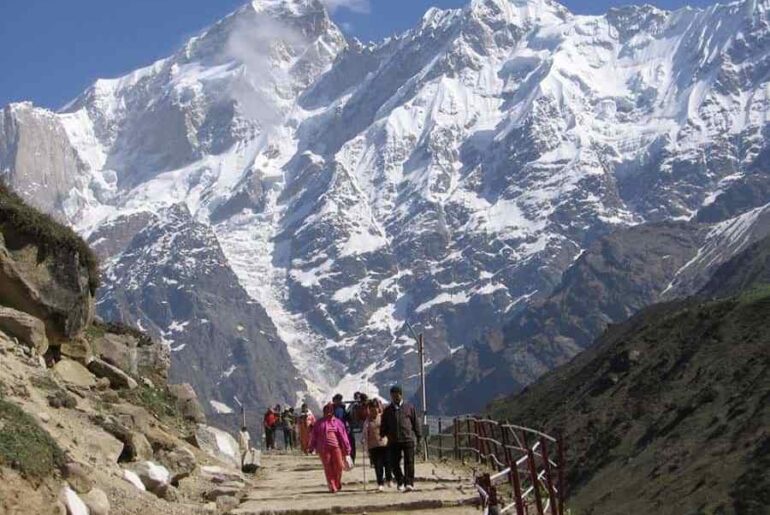
Kedarnath Trek distance, Time, Kilometer & Route
Are you ready for an exciting adventure? Kedarnath Trek distance is approx. 16 kilometers by foot (Kedarnath trekking distance), taking approximately 6-7 hours to complete from Gaurikund to Kedarnath Temple.
This journey is not just about walking; it’s about exploring stunning Himalayan views , lush forests, waterfalls, and the Mandakini River . A pilgrimage of great significance in Hinduism, the Kedarnath trek distance is both challenging and profoundly rewarding.
Kedarnath Trek distance from Sonprayag
The Kedarnath Trek distance from Sonprayag is 21 km ( 5 km road journey and + 16 km treking journey ). From Sonprayag to Gauri Kund by motorable road and then Gaurikund to Kedarnath temple by trek route.
Your Trekking Route: Step by Step
Kedarnath Trek starting at Gaurikund, you can reach it from Sonprayag b y shared taxi or your own hired private cab. From there, your journey begins:
- Gaurikund to Jungle Chatti: 4 kilometers via the Rambara Bridge.
- Jungle Chatti to Bheembali: 3 kilometers.
- Bheembali to Linchauli: 4 kilometers.
- Linchauli to Kedarnath Base Camp: 4 kilometers.
- Kedarnath Base Camp to Kedarnath Temple : 1 kilometer.
Trek Difficulty: A Challenge Worth Taking
- Trekking distance to Kedarnath is rated moderate to difficult. The 16-kilometer ascent from Gaurikund to the temple takes 6-7 hours and isn’t without its challenges.
- Expect rocky paths, steep sections, and uneven terrain. The trek reaches its highest point at the Kedarnath temple, sitting at 3,583 meters (11,755 feet/ ) above sea level.
- Altitude sickness is a concern, so acclimatization and medical advice are essential. It’s a trek for the physically fit and those up for a rewarding challenge.
Safety First: Your Health Matters
- Before you embark on Trekking to Kedarnath, prioritize your health. A checkup is wise, especially if you have heart, respiratory, or blood pressure issues.
- Consult your doctor before setting out. If you plan to use palkis, Kandis, or ponies, make your bookings in advance at Gaurikund or Sonprayag.
- Note that the Trekking to Kedarnath is permitted only between 4 am and 1.30 pm . After this time, the trek is closed for safety reasons.
- If you can’t complete it by evening, you can rest in camps at Jungle Chatti, Bheem Bali, or Linchauli, and continue fresh the next day.
Alternate Modes of Transportation
At Gaurikund, besides trekking, you have other options:
- Palki Service for Kedarnath Trek distance : A palanquin-like transport.
- Kandi and Mule/Ponies for Kedarnath Trek distance : Available
Kedarnath Height
- Kedarnath sits at an elevation of approximately 3,583 meters (11,755 feet) above sea level. This high altitude location makes it one of the most elevated and challenging pilgrimage sites in India.
Kedarnath Location:
- Kedarnath is located in the Garhwal region of the Himalayas in Uttarakhand, India. The temple of Kedarnath is stand for Lord Shiva. This temple is one of the twelve Jyotirlingas.
Kedarnath Accessibility:
- The Kedarnath trek distance of approximately 16 kilometers from Gaurikund , which is the base camp for the pilgrimage.
- Visitors have to trek through a rugged and scenic mountainous terrain to reach the temple. Alternatively, helicopters and mules are also available for those who may have difficulty trekking.
Kedarnath Climate:
- Due to its high altitude, Kedarnath experiences a cold and alpine climate. Summers are short, and the temple remains open to pilgrims from late April or early May until November.
- During the winter months, the region is covered in snow, and the temple is closed for the season.
Kedarnath Flood 2013:
- In June 2013, Kedarnath and the nearby area were hit hard by destructive floods and landslides. Since then, there have been ongoing efforts to repair and reconstruct the region, including the temple.
Char Dham Yatra:
- Kedarnath is one of the four sacred shrines that constitute the Char Dham Yatra in Uttarakhand. The other three shrines are Badrinath, Gangotri, and Yamunotri. Pilgrims often undertake this circuit to seek divine blessings.
- Kedarnath’s remote and elevated location, combined with its religious and natural significance, makes it a unique and revered destination for travelers and pilgrims alike.
In Conclusion:
Kedarnath trek distance is now 16 kilometers, changed from 20 kilometers due to a route alteration after the 2013 flood disaster. So, gear up for an incredible adventure and spiritual journey to Kedarnath. Enjoy the experience and the beauty as it unfolds. Safe travels and meaningful explorations await you!
Namaste! I am Om. I am a licensed Tourist Guide ( Approved by Ministry of Tourism, Government of India), I’m originally from Varanasi. Now, I am living in Rishikesh. I set up this blog to share my tips and experiences for traveling to inspire and help you to travel more. Hari Om
Related Posts
New delhi bahai temple: known as lotus temple.

The list of 20 best places for shopping in Jaipur India
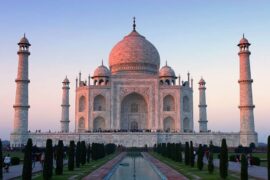
Taj Mahal Agra Uttar Pradesh India: Tips | Quick Facts
Comments are closed.
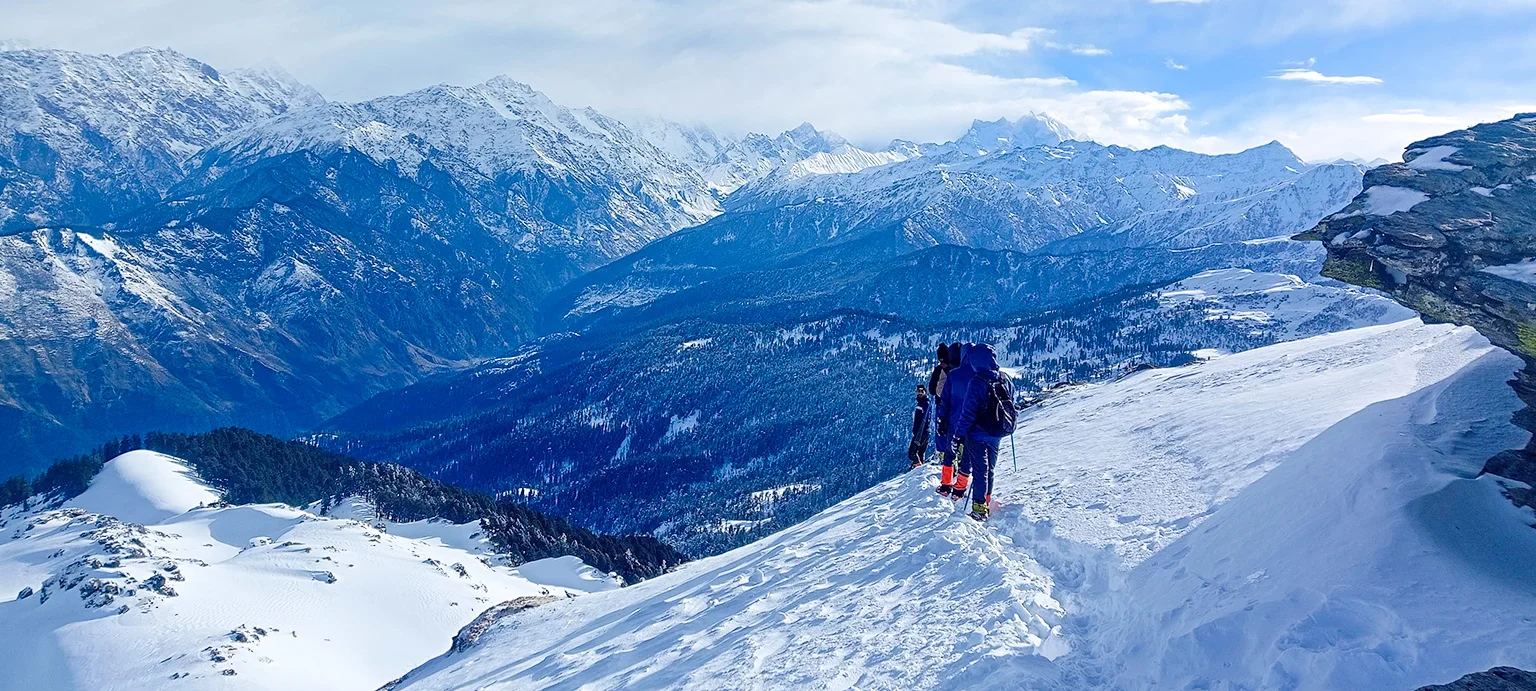
Kedarkantha Trek
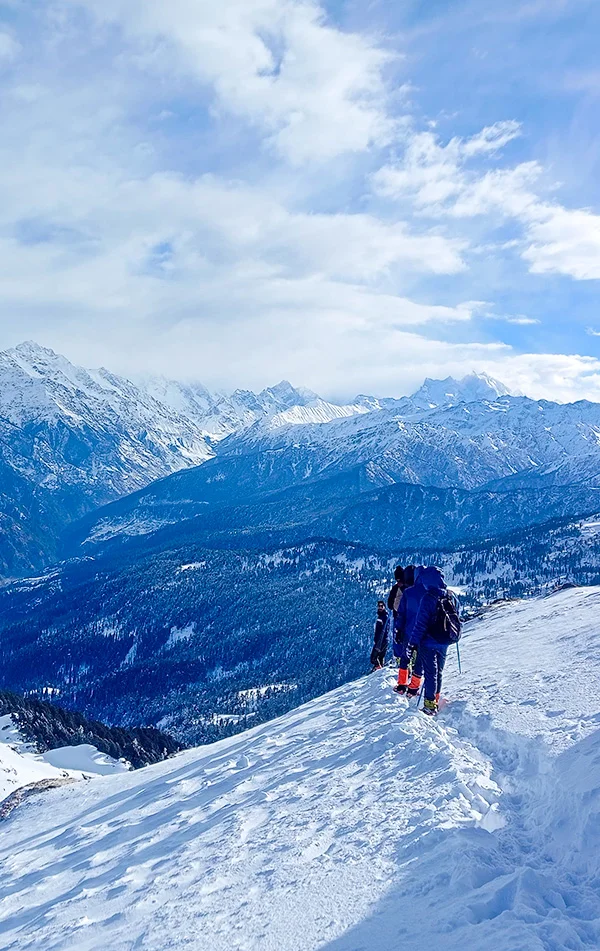
Uttarakhand |

Uttarakhand | India
Max Altitude
Trekking Km
Easy to Moderate
Get in Touch with Our Trek Expert
10200 /person $ /person.
- October-2024
- November-2024
- December-2024
- January-2025
- February-2025
- +5% GST (goods and services tax)
- Services Sankari to Sankari.
- Meeting Point ( Pickup/ Drop Point ): Prince Chowk , Dehradun
- Reporting Time : 6:00 am
- Drop Time :6:30 pm to 7:30 pm (Timings are subject to change based on weather and road conditions).
- Please reach Dehradun a day before to avoid any delays.
Insurance 210
- Insurance is mandatory.
- Non-Indian rates are slightly higher. Trek coordinator will provide balance payment link post-booking.
- Get insurance through us or elsewhere. If not through us, email for a refund after booking.
- Cancellation 4 or more days before the start of the trip results in a 100% cash refund.
- Cancellation less than 4 days from the start of the trip results in no refund.
Transport 1600
- Transportation Dehradun to Sankri & return is optional.
- Choose add-ons during booking. If missed, log in and add them later.
- Book transportation at least 10 days before the trek.
- Cancellation less than 4 days from the start of the trip results in a 50% cash refund.
- Cancellation after the trip date does not qualify for a refund.
Offload 1200
- Backpack offload is optional.
- Book off-load at least 10 days before the trek.
- For offline bookings at the base camp, a convenience fee of Rs. 1800 applies.
- Cancellations made before the trip date will receive a full refund.
5% GST will be applicable on Add-ons
For more information. Please complete this form.
Trek Name: Kedarkantha Trek
Adventure Type: Trekking
Base Camp: Sankri
Season: Spring | Winter |
Month: January | February | March | April | November | December |
Country: India
Altitude: 12500 Ft.
Grade: Easy to Moderate
Rail Head: Dehradun
Stay: Camping (Twin sharing) & Hotel/Guesthouse
Food: Meals while on trek & at Hotel/Guesthouse (Veg & Eggs)
Location: Uttarakhand
Distance: 20 Km.
Trail Type: Circle trail | Camping in various locations, starting and ending at the same point.
AirPort: Jolly Grant Airport, which is 28 km away from Dehradun
Kedarkantha - The Queen of Winter Treks
The Kedarkantha Trek is a quintessential high-altitude winter trek in the Indian state of Uttarakhand. Kedarkantha Trek offers a unique opportunity to explore the snow-covered landscapes of the Himalayas and a great experience of trekking in Uttarakhand. The easy endurance of the trail makes it one of the Best Treks for Beginners in Uttarakhand and also for seasoned trekkers. The spellbinding views from the summit make the 12,500 ft climb totally worth it.
The trek also consists of some of the most beautiful campsites, in the vicinity of pine covers and amidst the snow. You can witness stunning sunrises and sunsets from your campsites and bask in the tranquillity of nature. The view from the summit is unlike anything you've ever seen. You can view the majestic Yamunotri and Gangotri peaks along with the Black Peak, Bandarpoonch, and the Swargarohini group of peaks. The best time to do the Kedarkantha Peak Trek is during the months of December-January and March-April as you will find an abundance of snow during that time, making for a magical experience. An ideal trek for both adventure and nature lovers, this beauty of the trek makes it the best winter trek in the country.
The trek also showcases some of the best Himalayan flora. En route, you will cross stunning Rhododendron, Oak, Pine, Walnut, and Chestnut covers. The popular Red Rice is also homegrown in the Kedarkantha region. You also get to see the lives in remote villages which is a unique experience in itself. Experience the enchanting beauty of the Himalayas, its lush meadows, towering peaks, snow-covered trails, frozen lakes, and a kaleidoscopic sky, in this wonderful winter trek.
Why Kedarkantha Trek Is A Must-Do Trek?
The Kedarkantha Peak is one of those treks in India that has some mythology attached to it. The locals say that when Lord Shiva was hiding from the Pandavas and roaming around in his bull form at Kedarkantha, the village dwellers disturbed his peace and thus he fled to where Kedarnath is today. Villagers in Sankri will tell you that the trident of the Shiva, erected in the Kedarkantha Peak protects the people and also nourishes the Himalayan Rivers.
The entire trek is 20 km long and is a beginner-friendly trek . From the summit, you will get a 360-degree view of the Himalayan peaks. The change in terrains and the steady climb, which is not so difficult unlike many other treks, and the noteworthy views, make the trek overall very satisfactory. You get to experience the beauty of the Himalayas, its challenges, and close interaction with the local lives in such remote areas.
There will be no network coverage after Sankri and if you are carrying electronic devices like laptops, cameras, mobile phones, etc. the batteries will drain out quickly. All the campsites in the trek, including Juda Ka Talab, are pretty scenic and the trail remains covered in snow from December to April.
You will stay in tents and guesthouses along the journey and the meals during the trek will be provided by us. The trek has a steady ascent and becomes a little challenging during the summit, where it's a steep ascent accompanied by gushing winds.
Snow can be encountered in the winter months, a little after Sankri Village and depending on the thickness of the snow, you may need to wear microspikes or gaiters to navigate the treks properly. The temperature in the trek lingers between 10 degrees C to 3 degrees C so dress appropriately. The weather at Kedarkantha is usually very calm but once in a while the weather can be unpredictable so dress accordingly. We always monitor the weather conditions and in case of inclement weather, we take the necessary measures for the safety of everyone.
Kedarkantha Trek: The Most Popular Winter Trek in Uttarakhand
Kedarkantha is a special and highly popular winter trek in Uttarakhand. With a 6-day trek journey, the Kedarkantha trek is famous for its beautiful sunrise and the view of massive peaks from here, such as Swargarohini, Bandarpunch, Black Peak, etc. Along the way, you’ll pass by the famous Juda Ka Talab , a beautiful lake connected to Mahadev. The trek’s beauty is further enhanced by the local dhabas and tea spots. You might even catch the soothing sound of a local playing the flute at a small dhaba.
Why Kedarkantha Tops the List for Trekkers
Kedarkantha is often referred to as the "Queen of Winter Treks”. The journey begins from the village of Sankri, where you will start getting the views of forest trails. There are some water streams on the way and trails adorned with snow. Juda Ka Talab is one of the highlights of the Kedarkantha trekking . This serene lake is surrounded by vast fields on one side and a dense forest on the other. In winter the lake looks even more beautiful as the entire lake freezes over. There is a small story to be heard from the local people here which is related to this pond. It is said that here Lord Shiva once removed a lock of his hair and cast it into the area, creating the pond. In the winter, the entire lake freezes over. You can enjoy camping here while playing with fresh snow. Evenings at camp are cozy with hot food and soup served, making for a warm and comforting experience. Sipping on hot soup or tea while watching the sunset over the snowy landscape is a cherished moment that trekkers look forward to.
Far in the distance, layers of majestic mountains unfold, each one blending seamlessly into the horizon. As you reach the summit of Kedarkantha, you'll find a charming little temple that adds a touch of serenity to the panoramic view. From this vantage point, the grandeur of the massive peaks stretches out before you which draws trekkers from far and wide to witness this breathtaking spectacle. The final push to the summit of Kedarkantha is both challenging and exhilarating. As you make your way up, the views start to open up, revealing panoramic vistas of the Swargarohini, Bandarpoonch, and Black Peak ranges.
Must Know Highlights of the Kedarkantha Trek
Best time for kedarkantha trek.
The spring months of March to April are also ideal for those who prefer milder weather and want to see the forest trails come alive with the first signs of new growth. One of the most enchanting parts of the Kedarkantha Trek is the Juda Ka Talab, a serene, frozen lake surrounded by dense woods. It’s a sight to behold, especially as the morning light glistens off the icy surface, creating a mirror-like effect that reflects the surrounding trees and sky. Camping here feels like stepping into a winter postcard, complete with towering deodars and the soothing silence of the snow-covered wilderness. As you ascend further, the landscape opens up to the Kedarkantha Base Camp, offering mesmerizing views of towering peaks against a backdrop of clear blue skies. This campsite is a favourite among trekkers, not just for the views, but for the sense of peace and isolation it provides, a feeling of tranquillity amidst the vast expanse of white. Sitting by the campfire, with snowflakes gently falling around and peaks glowing in the moonlight, you’ll realize that this trek is filled with countless magical moments.
Perfect Trek for Beginners / Best Choice for Beginners
Kedarkantha stands out as an ideal best winter trek for beginners due to its perfect blend of accessibility and adventure. The trek features manageable difficulty with well-marked trails and a gradual ascent, making it an excellent introduction to winter trekking without being too demanding. Typically completed in just 6-7 days, it is a short and easy trek, enough to keep newcomers engaged and motivated. The stunning winter landscape, with snow-covered trails and panoramic views of the Himalayan peaks, adds a magical touch that’s both inspiring and achievable. The trek’s infrastructure, including established campsites and experienced local guides, ensures safety and support, further enhancing the experience for first-time trekkers. Additionally, the warm hospitality, traditional mountain culture, and friendly locals provide a supportive and welcoming environment. It is an excellent starting point for those new to trekking.
Kedarkantha Trek Difficulty Level
- Who can Participate
- Important Links
- How to Reach
- Trek Essential
Who Can Participate
- Age; 10 years +.
- First timers can apply; previous trekking experience is more appreciated.
- The climber must be fit and have sufficient stamina to cover 4 km of distance in 35 minutes without stress.
- The climber should be able to carry a 10-12 kg backpack.
Special Offer
- Make a single payment and trek the number of times you want.
- If you book a trek with Trek The Himalayas and cannot complete it, or if you've successfully completed the trek and wish to do it again, you can repeat it multiple times at no additional cost.
Terms and conditions
- This offer is non-transferable.
- This offer is valid for Trek The Himalayas limited fixed departures.
- This offer is valid for 5 years from the date of booking.
- This offer is not valid if the participant has received a cash refund or voucher at the time of cancellation.
- Participants don’t have to pay for the trek cost but have to pay for transportation and trek permit costs.
To reserve a spot for a trek or adventure program, you can either utilize our online booking form or call us at the provided number. For your confirmation, a deposit must be wired, including the initial payment.
Arrival at Sankri
- Altitude: 1,950m/ 6,400 feet.
- Drive Distance: 220 km |10 hr approx.
- Pickup: Dehradun at 6:00 AM.
- Type Of Vehicle: Tata Sumo/Tempo traveler or similar vehicle.
- Transportation Amount is not included in the trek cost.
- Network Available: JIO.
- Arrival at Sankri: 5:00 PM.
- Stay in a hotel with, an attached washroom with running water.
Our journey starts from Dehradun where we will pick you up in Tata Sumo or similar vehicles at 6:00 AM. You are requested to report at the pickup point by the time. From Dehradun, we will drive to Sankri, which is at a distance of 220 km from Dehradun. It may take about 10 hrs or more to reach Sankri as the mountain roads can be quite bumpy at times. However, the road to Sankri is quite scenic.
On your way, you will cross picturesque places like Mussoorie, Mori, and Naitwar, etc. You will drive along the beautiful Yamuna and Tons River with pine trees lining the road. The River is milky white in some places and clear green in others. The fragrance of pinewood and the beauty of nature will make up for the long ride to Sankri. The last stretch of the road, about 22 km from Sankri, is even more beautiful as you enter the Govind National Park, famous for being home to much exotic flora and fauna. On reaching Sankri, we will check in at our hotel. After freshening up, you can spend the evening at the quaint hamlet of Sankri at your leisure.
You can head out for a stroll through this charming village. Sankri is a trekkers’ hub as it is the base camp for not one or two but 11 Himalayan treks including popular treks like Har Ki Dun. At Sankri JIO network is available but it is very erratic. You can also watch a beautiful sunset at Sankri Village in the backdrop of the Himalayas, a great opportunity for shutterbugs to capture all the beauty around. At night, you can have dinner at your hotel or in the local village dhabas to get a taste of the local flavors. Stay overnight at Sankri and we will start our trek the following day.
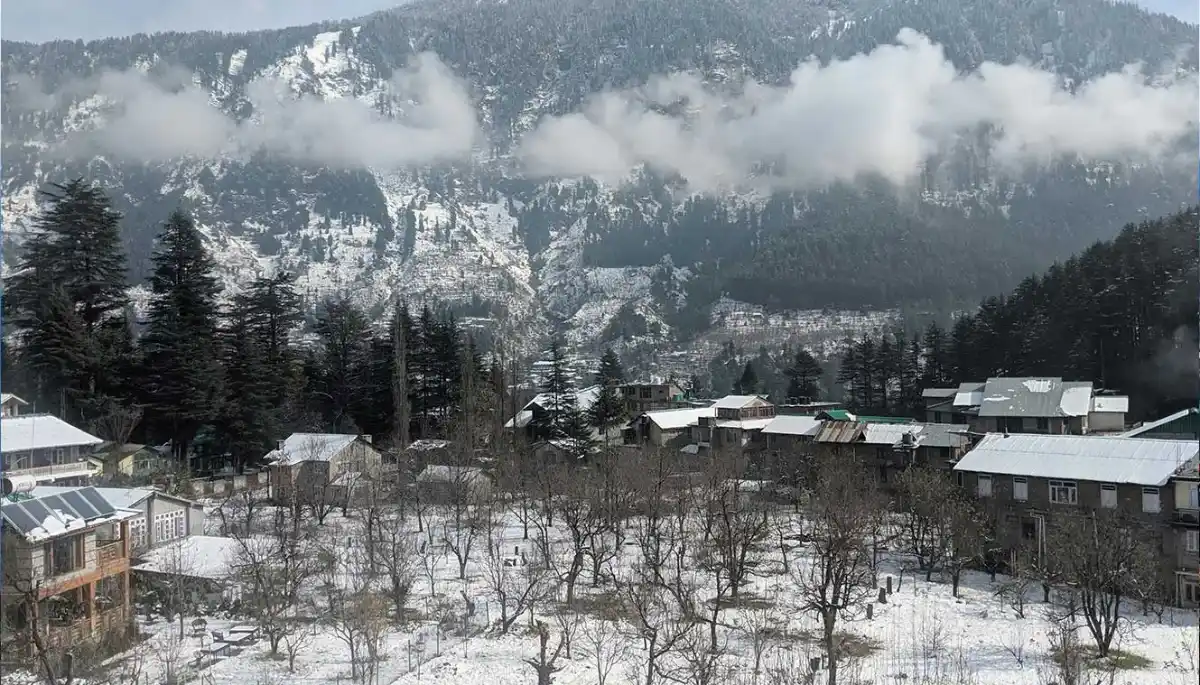
Sankri to Juda-ka-Talab
- Altitude: 2800 m/ 9100 ft.
- Trek Distance: 4-5 km | 5 hrs.
- Altitude Gain: 800 m/ 2,700ft.
- Trek through dense forests of maple and pine cross a few streams and beautiful meadows.
- Stay in tents, twin sharing.
Trekking for the Kedarkantha summit starts at Sankri, our base village for the trek, and today we will trek from here to Juda Ka Talab, a beautiful alpine lake. Start your day early, have your breakfast and head out straight towards Juda Ka Talab. The lake is situated at an altitude of 9100 ft and the trek distance is about 4-5 km. It will take approximately 5 hours to reach the Lake.
As you begin your trek out of Sankri village, you will venture into the village extension Saur, and from here you will walk along a stream, and then we will take a turn towards the forest of pine and maple, climbing sharply. We will cross many suspension bridges and small mountain villages on our way to Juda Ka Talab.
The trail today is quite broad and ascends gradually for about 2-3 hours. During summers, the trail is full of greenery and you will spot many wildflowers on your way. A carpet of maple and pine leaves covers the trail and opens up to lush green meadows. During winter, the trail is covered in snow, and depending on the snow conditions, you may need gaiters to navigate the path properly. As you trek uphill, you may also spot wildlife in the trail like the Himalayan Languors. While they are quite shy, they move pretty quickly, swinging from branch to branch, so its hard to catch a proper glimpse of them. Apart from this, you may also spot boars, hares, and martens.
The Juda Ka Talab campsite is extremely scenic with an alpine lake on one side and a pine forest on the other, it almost feels surreal here. In the lap of mountains and the middle of pine and snow, the surreal beauty of Juda Ka Talab is simply otherworldly. During peak winters, a sheet of ice forms on the lake, creating a picture-perfect view. The lake also has a natural tunnel that provides water to the villagers nearby. The locals consider the lake as sacred and believe that Lord Shiva meditated at Kedarkantha and droplets falling from his hair formed the lake.
We will camp here for the night. You can click some beautiful pictures here and also take nature walks in the area. At night, a bonfire is a great idea to relish your dinner and warm drinks, chatting up with your fellow trekkers. The night sky is simply breathtaking with an assortment of the brightest stars dazzling the sky. Sleep overnight in your tents.
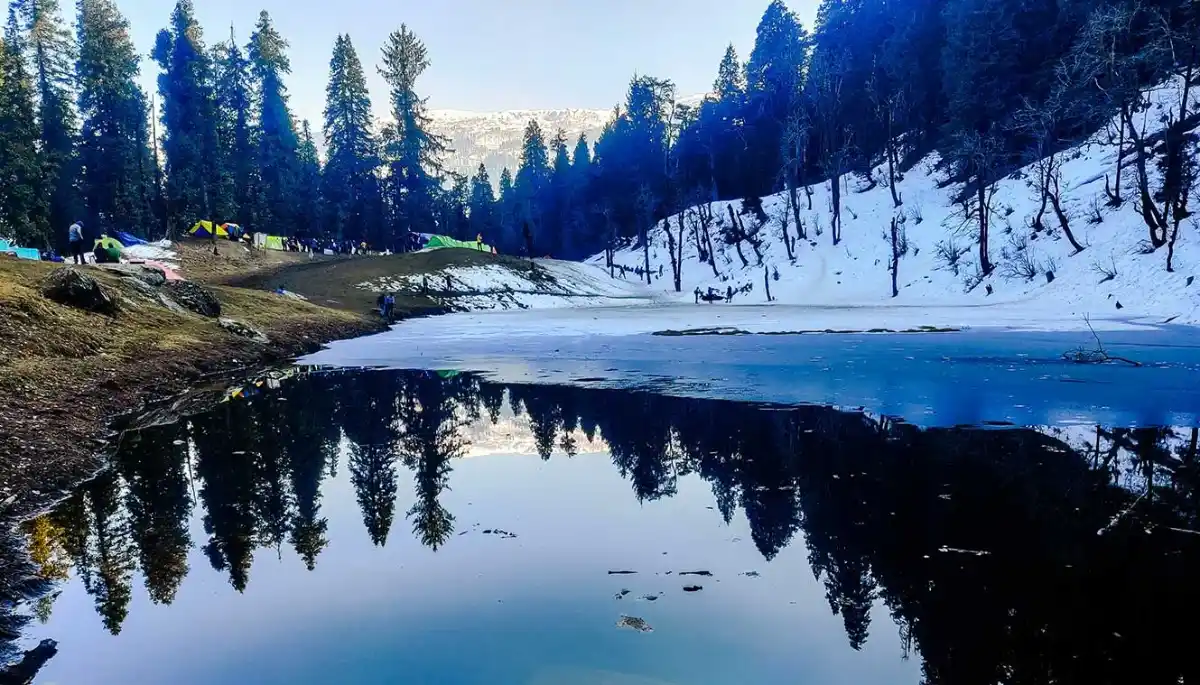
Juda-ka-Talab to Kedarkantha Base
- Altitude: 3100 m/ 10,100 ft.
- Trek Distance: 4 km (2.5 hr approx.).
- Altitude Gain:- 275 m/ 900 ft.
- The trail on the ridge under Oak cover and passes through some meadows.
- Peaks Spotted: Bandarpoonch, Swargrohini peaks, Ranglana, and Kala Nag.
Starting the day early, we will begin our day with a warm breakfast and a glorious sunrise view and begin the trek towards the Kedarkantha Base Camp. The base camp is located at an altitude of 10,100 ft and the distance from Juda Ka Talab to the base camp is 4 km. Walking moderately, you can reach the base camp in about 3 hrs. The trail is marked quite well so it is quite easy to navigate.
Walking through this trail, you will soon enter a forest Pine and Oak which soon opens into expansive meadows. The meadow is lined with shepherd huts and as you move forward you will catch the sight of towering Himalayan peaks Swargrohini peaks, Bandarpoonch, Ranglana, Kala Nag, etc. The splendid views are enough to render you speechless. The peaks appear as if natural jewels adorned by Mother Nature and the views will be forever imprinted in your memory.
The Kedarkantha trail is fairly easy and beginner-friendly and even in the peak winter, it isn’t as strenuous as other treks making it enjoyable for everyone. You can see the trail covered in snow here during the winter months, in summer it is luscious green. Once you reach the campsite, you can rest and refresh yourself and take small walks around the campsite. At night enjoy a nice and hot dinner and observe the beauty of the clear night sky with an abundance of twinkling stars, glowing brightly.
At such a high altitude, the cold waves can be pretty high, so it is recommended you layer appropriately for protection against cold. Retire in your tents early, to get proper rest for the summit trek the next day.
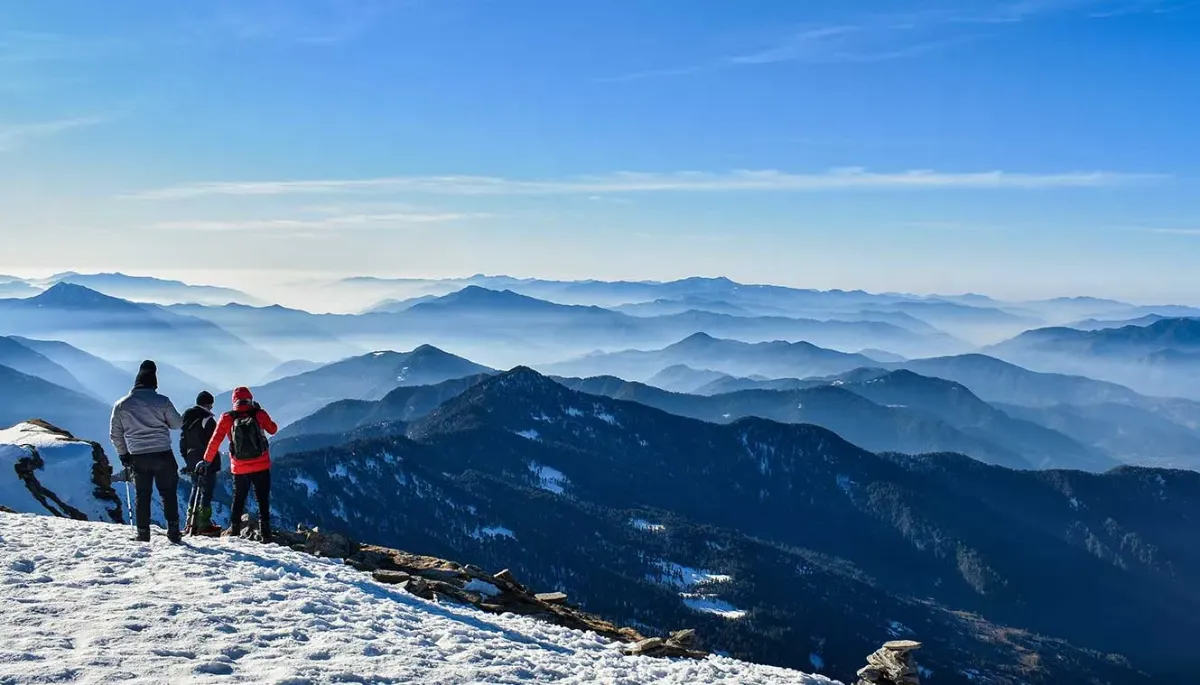
Kedarkantha base to Kedarkantha peak; descend to Hargaon camp
- Altitude: Peak - 3,800 m/ 12,500 ft. Hargon - 2,700 m/ 8,900 ft.
- Trek Distance: 6 km (7 hrs approx.).
- Altitude Loss: 1100 m/ 3,600ft.
- Spend some time at the summit and descend back to basecamp for lunch.
- Post lunch descend to Hargaon.
Today we will trek to the Kedarkantha summit reaching an elevation of 12,500 ft. Today’s trekking schedule involves trekking from the base camp to the Kedarkantha summit and descending to the Hargaon campsite. The journey to the summit and down to Hargaon is about 6 km and it takes about 7 hr.
After a pleasant breakfast in the morning, we will set out for the Kedarkantha summit. The trek is a gradual incline, however, it gets pretty steep in the end and might test your skills and fitness a little. Today also your trek will begin by crossing a forest of towering Oaks and Pines. The leaves strewn on the ground, scrunching your feet and you can also hear the faint sounds of streams gushing by.
Soon the forests open up and you are much closer to the peak now and from here the path will begin to get difficult as a sharp incline lies in front of you. But the struggle to reach the top is worth it once you make it to the summit and the marvelous views of the Himalayas await you. You will literally feel like you are on top of the world and filled with a sense of accomplishment and inner peace. The astounding views will rejuvenate you after the strenuous journey. There’s also a small temple of Lord Shiva, Goddess Parvati, and Lord Ganesha at the summit.
After enjoying the picturesque views and basking in nature’s abundance, we will start descending and trek downhill to the Kedarkantha base camp where we will have our lunch, and post-lunch we will begin descending downhill, all the way to Hargaon. The descent is quite easier and faster and soon you will reach the campsite at Hargaon, descending to an elevation of 8900 ft. Reaching the Hargaon campsite marks the end of our day, we will set up camps here, enjoy a nice dinner, and retire in our tents for the night.
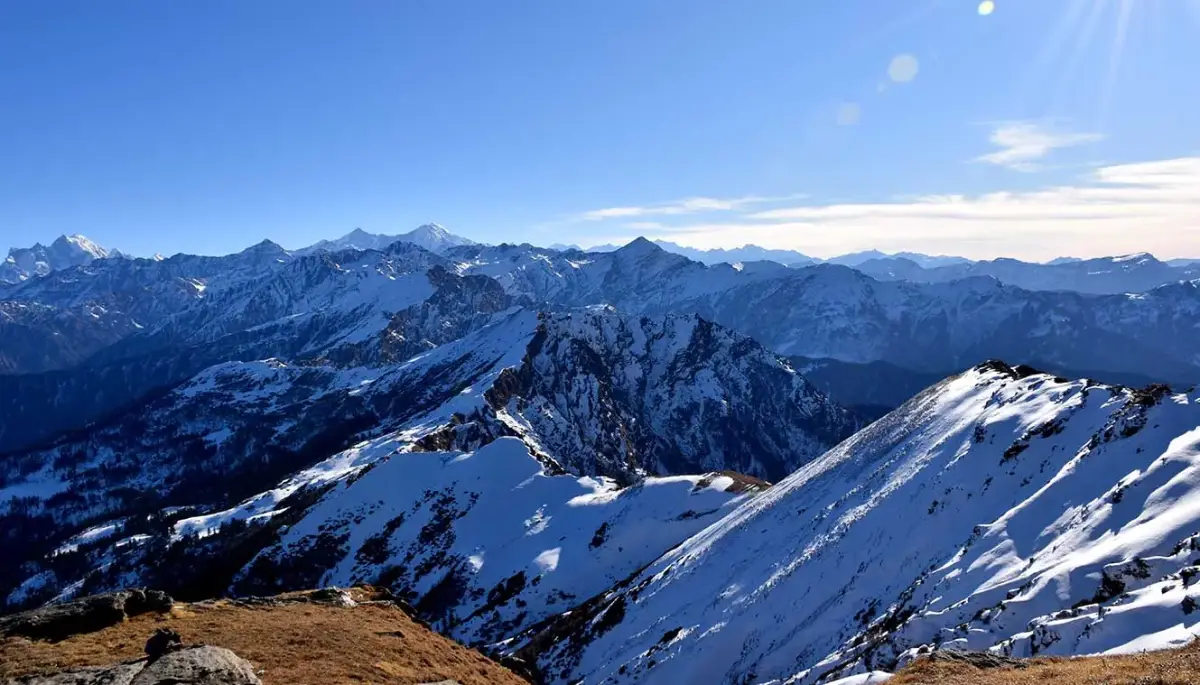
Hargaon camp to Sankri
- Altitude: 1950 m/ 6400 ft.
- Trek Distance: 6 km (7 hrs approx.)
- Altitude Loss:- 850 m/ 2,800ft.
- Descend through dense pine thickets.
- Stay in a hotel, with an attached washroom with running hot water.
The final leg of the trek involves descending from Hargaon to Sankri. We will descend from an altitude of 9200 ft to 6400 ft and the trek distance is about 6 km. It takes approx 3 to 4 hours to complete the descent.
Rise with the sun and enjoy a scrumptious breakfast. The sunrise in the Himalayas has a unique splendor, which is quite hypnotizing. After breakfast, we will begin our descent towards Sankri. You will trek through forests and gurgling streams. You can fill your water bottles in the streams. Soon the forest opens up to a ridge from where you get a bird's eye view of the Har ki Dun Valley.
The brilliance of the lush green slopes of the Valley is simply wonderful. Relishing the view, we will descend further as the forest grows denser once again and finally opens up at Sankri. At Sankri we will check in at the hotel once again. You can freshen up and in the evening, you can head out to explore the village.
Although there aren’t many shops at Sankri, you can still buy wooden handicraft items, toys, and home decor as souvenirs of your journey. Interact with the locals and get more ideas about the local lifestyle. Life at Sankri is pretty slow-paced and the religious belief is quite strong here. There are about 120 families in Sankri who live in wooden huts to protect themselves from the cold and the staples are potato rice and apples.
At Sankri they also hold regular fairs or melas where entertainment takes place in the form of singing and dancing to native folk songs. For dinner you can visit the dhabas, they serve some delicious cuisines or you can have dinner at the hotel premises as well. Stay overnight in the hotel after a tiring yet wonderful journey.
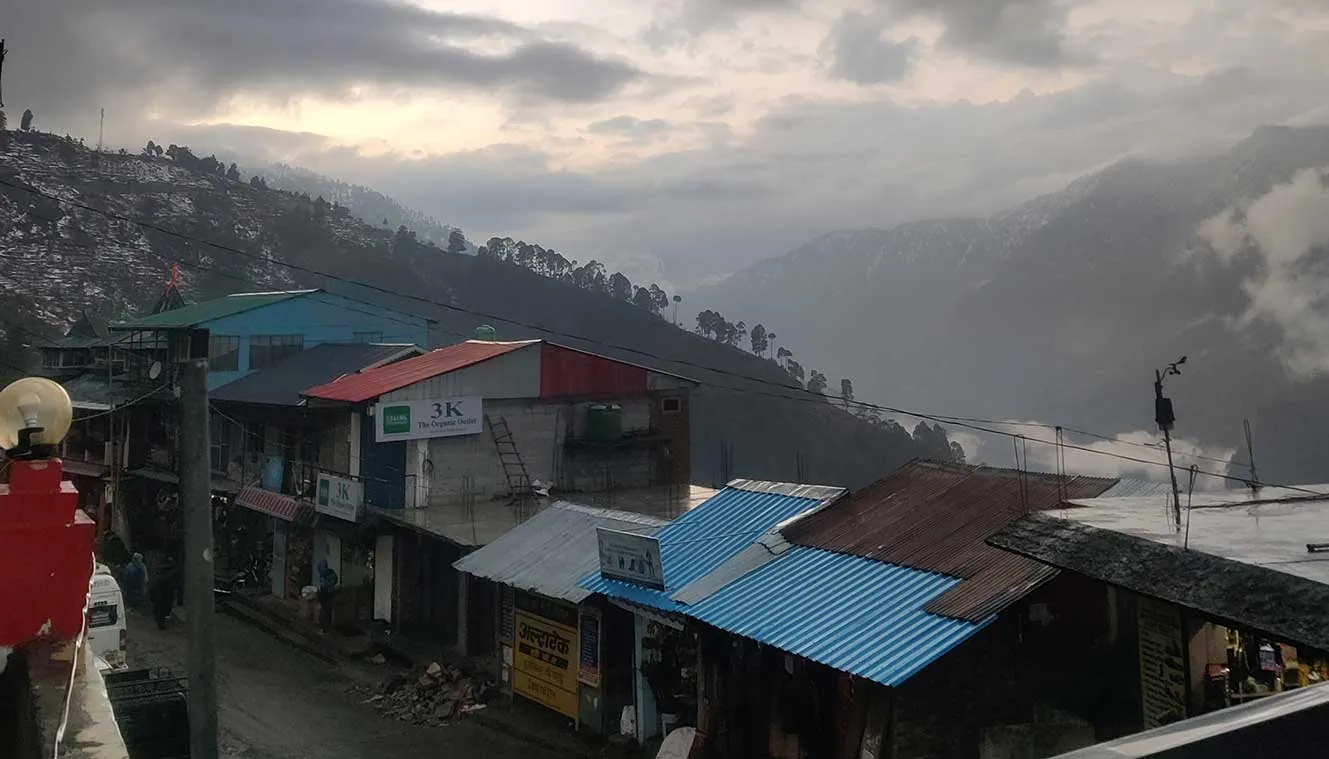
Departure day (Sankri to Dehradun)
- Drive Distance: 220 km | 10 hr approx.
- Drop at Dehradun Station in Tata Sumo or a similar vehicle.
- Breakfast and Lunch are not included in the trek cost.
- You will reach Dehradun by 6:30 - 7:30 pm.
Note: Distance, Altitude and Trekking hours are approximate and rounded off.
On the last day of our wonderful trip, today we will head back to Dehradun with so many beautiful memories. Tata Sumo or other similar vehicles will be arranged for you at Sankri to drive you back to Dehradun. Check out from the hotel by 7:00 AM so that we can begin the journey to Dehradun early. We have to cover a distance of 220 km and it will take about 10 hrs so the earlier we start the better.
We will again return through NH 123, enjoying the scenic beauty. Cherish nature around with picturesque vistas stretching far and wide. We will reach Dehradun by 6:30 - 7:30 pm so make your further bookings accordingly.
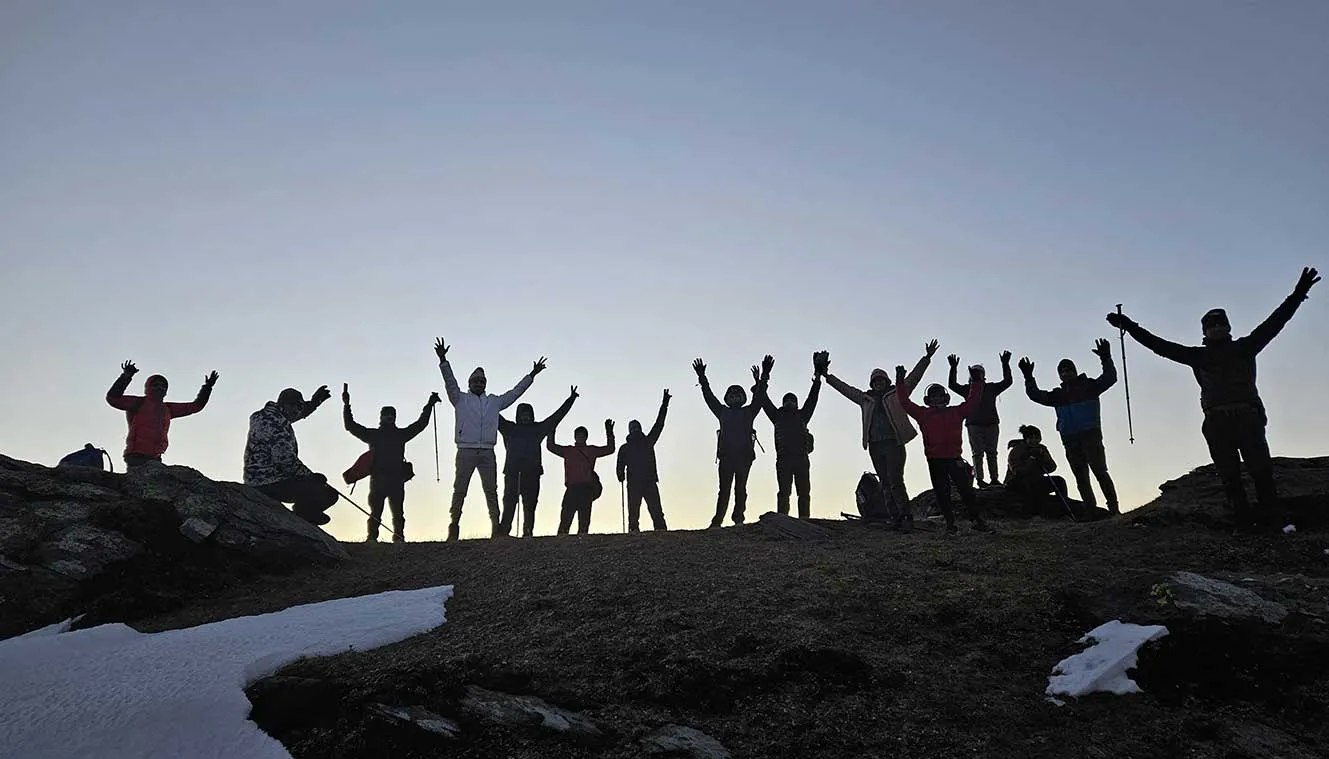
Day-1: Arrival at Sankri
Day-2: sankri to juda-ka-talab, day-3: juda-ka-talab to kedarkantha base.
- Altitude: 3100 m/ 10,100 ft.
- Trek Distance: 4 km (2.5 hr approx).
Day-4: Kedarkantha base to Kedarkantha peak; descend to Hargaon camp
- Trek Distance: 6 km (7 hrs approx).
Day-5: Hargaon camp to Sankri
- Trek Distance: 6 km | 7 hrs approx.
Day-6: Departure day (Sankri to Dehradun)
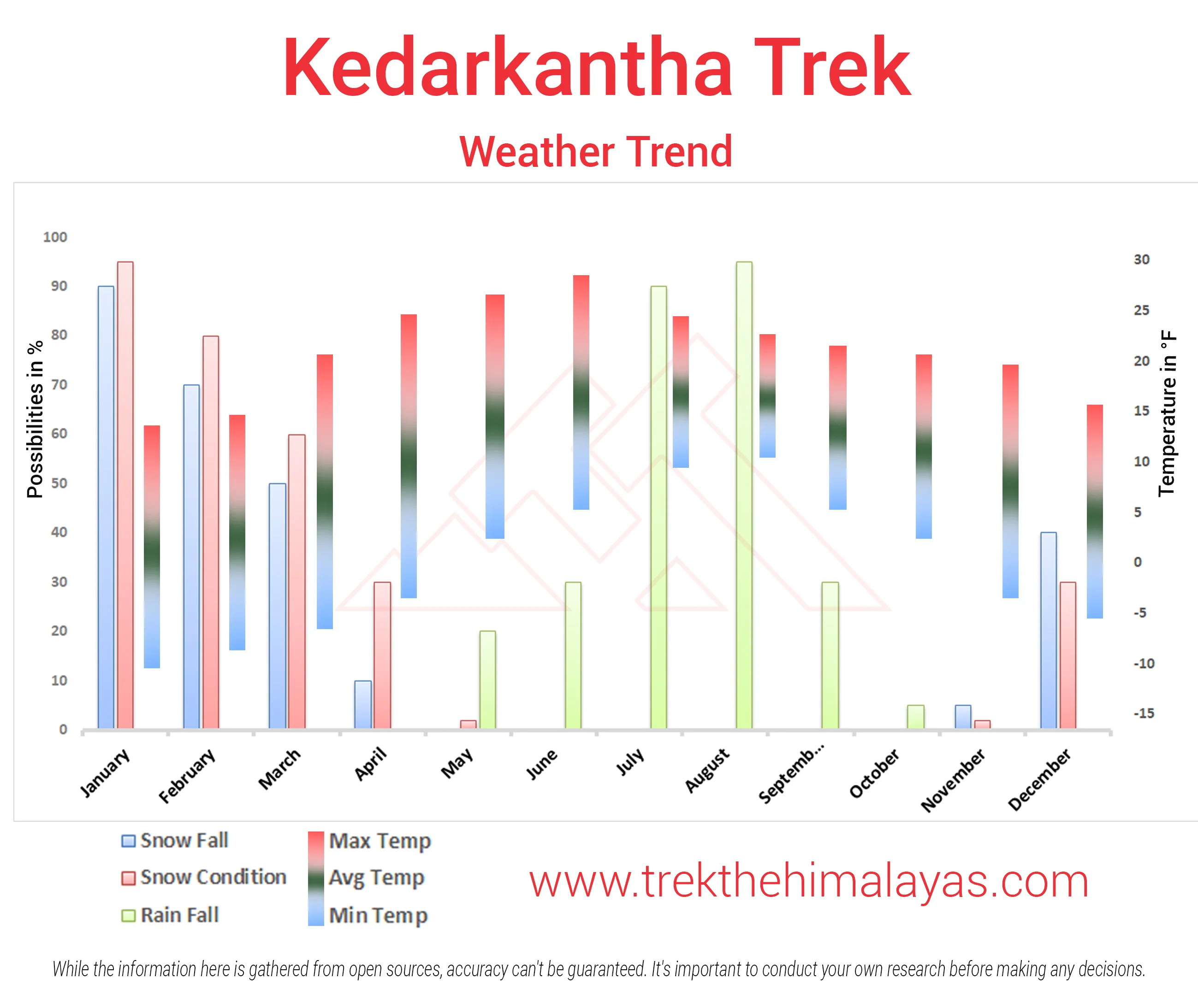
- Pulse rate at rest must be in between (60 to 90 beats per minute).
- Blood Pressure Reading must be in between (DIASTOLIC 70 – 90, SYSTOLIC 100 - 140 mm Hg).
- Respiratory rate at rest must be in between (12 to 20 breaths per minute).
- Should not have Liver and kidney issues.
- Should not have Diabetes Mellitus, Bronchial Asthma, Heart problems, Hypertension, etc.
- No pacemaker implant.
- People with Sinus issues, Epilepsy please contact to trek coordinator before booking the trek.
- If your BMI is not normal, Please contact our Trek coordinator before Trek booking.
Medical & Disclaimer Form (Mandatory Documents) Click here to download Medical & Disclaimer Form
- Government Employees can avail the benefit of Special Casual Leave (SCL) when they join us for a trekking expedition. As per the rules of the Pay Commission, Special Casual Leave can be availed for up to 30 days in a calendar year for trekking/mountaineering expeditions through a registered organization. Trek The Himalayas is a registered adventure tour operator by the Indian Mountaineering Foundation (IMF) and the Ministry Of Tourism (MOT).
- Trekkers have to apply for leave at least 20 days before the trek departure date.
- This service is exclusive to Indian government employees and is applicable only for treks within India.
- Do mail at info@trekthehimalayas to apply and mention your booked trek date and trek name.
- Junior trekkers (below 15 years) should have a company of parents/guardians.
- Trekkers between 15 to 18 years can come solo with the disclaimer form signed by parent/guardian.
- Medical & Disclaimer Form (Mandatory Documents) Click here to download Medical & Disclaimer Form
Exercise For Easy to Moderate
Fitness Regime For:
Calculate Your Bmi
Your BMI value is
Congratulations, your body is in good conditions!
Medical & Disclaimer Form (Mandatory Documents) Click Here.
How To Reach
Pick-up information.
- It is essential for everyone to arrive at Prince Chowk, Dehradun (06:00 am).
- Once you have reached Dehradun, TTH will manage the rest of your travel arrangements, if you have opted for TTH's pick-up service, you can select this option during the booking process by adding it as an add-on.
Options to Reach Dehradun
First, you can arrive at Delhi, Dehradun Airport or Chandigarh. The journey from these locations to Dehradun is explained below.
1. Take an overnight train from Delhi to Dehradun.
2. Take a bus to Dehradun ISBT from Delhi Kashmiri gate ISBT or Chandigarh Sector 17 Bus stand, and then take local transport to the pickup point (Prince Chowk).
Delhi to Dehradun - 250km | 6hr.
Chandigarh to Dehradun - 220km | 5hr
The distance from the Dehradun Bus Stand (ISBT) to the Railway Station is 6 km, without traffic, it will take 15 minutes.
( We always recommend to go for the govt. Buses over the private ones outside the bus station as based on the experience we have found that there are very high chances of delay involved with private buses. Also, govt. Buses are always more reliable. Whichever bus you choose, just make sure to reach Dehradun at least by 05:30 am positively. )
3. Take a flight to Dehradun airport (Jolly Grant Airport), then from the Airport to Prince Chowk, Dehradun Distance is 30km and it will take around 1 hr( if coming by flight then reach one day early).
Drop-Off Information
- The designated drop-off point is Prince Chowk, Dehradun.
- Arrive in Prince Chowk by 6:30 to 7:30 pm.
- Please consider planning your subsequent travel arrangements after 9:00 pm.
- The distance from the Railway Station to Dehradun Bus Stand (ISBT) is 6 km, it will take approx 25 minutes.
- The distance from Railway Station to Dehradun Airport is 30km, it will take approx 1hr.
- It's highly advisable to keep a buffer day in your travel plan. If the buffer day is not needed, it can be used to explore Dehradun/Mussoorie/Rishikesh.
( If you prefer to travel independently to Base camp and don't want to take TTH's pick-up service, you can either take a government bus or book a private cab from Rishikesh. Your trek coordinator will provide guidance on how to arrange for the bus or cab booking. )
TTH offers comfortable transportation through Tempo Traveler, Bolero, or equivalent vehicles. If you wish to upgrade your mode of transportation, please contact your trek coordinator for further assistance.
.webp)
1. Accommodation (as per the itinerary):
- Guest house - Triple/quad/pentasharing, Camping - twin sharing.
2. Meals (Veg + Egg):
- Day 1 Dinner to Day 5 Dinner as per the itinerary.
- Drinking water while on trek (Tape/Mountain water).
3. Support:
- 1 Versatile base camp manager handles communication and deploys extra manpower in emergencies.
- 1 Mountaineering & First aid qualified professional trek Leader.
- 1 Experienced high-altitude chef.
- Local experienced guides (Number of guides depending on the group size).
- Enough support staff.
4. Trek equipment:
- Sleeping bag, Sleeping liners (if required), mattresses, and Utensils.
- 3 men all season trekker tent (twin sharing), Kitchen & Dining tent, Toilet tent.
- Camping stool, Walkie talkie.
- Ropes, Helmet, Ice axe, Harness, Gaiters & crampons (if required).
5. First aid:
- Medical kit,Stretcher,Oxygen cylinder,Blood pressure monitor,Oximeter,Stethoscope.
6. Mules/porters to carry the central luggage. 7. Clock room facility available at the base camp for additional luggage. 8. All necessary permits and entry fees, Upto the amount charged for Indian.
9. Trek Completion Certificate.
1. Insurance (Mandatory). 2. Food during the transit. 3. Any kind of personal expenses. 4. Mule or porter to carry personal luggage. 5. Emergency evacuation, hospitalization charge, etc. 6. Transport from Dehradun to Sankri and return. 7. Anything not specifically mentioned under the head Inclusion.
Things can be provided on demand and availability (participant has to pay extra for these things).
1- Satellite phone/set phone - a type of mobile phone that connects via radio links via satellites orbiting the Earth instead of terrestrial cell sites like cellphones. Therefore, they can operate in most geographic locations on the Earth's surface.
2- Gamow/PAC HAPO Bag (Portable Hyperbaric Bag) - is a unique, portable hyperbaric chamber for the treatment of acute mountain sickness (AMS), also known as altitude sickness.
3- AEDs (Automated External Defibrillators) - are portable life-saving devices designed to treat people experiencing sudden cardiac arrest, a medical condition in which the heart stops beating suddenly and unexpectedly.
Cancellation terms:
Cancellations prior to 25 days from the start of the Trip
Refund options
- 5% deduction of trek fee
- 100% cash voucher for any trip till one year
- Transfer your trek (any trek, any date) to your friend
Cancellation between 24 days and 15 days to the start of the Trip
- 30% deduction of trek fee
- 100% cash voucher for same trip till one year
- 85% cash voucher for any trip till one year
- Transfer your trek (same trek, any date) to your friend
Cancellation between 14 days and 10 days to the start of the Trip
- 50% deduction of trek fee
- 80% cash voucher for same trip till one year
- 70% cash voucher for any trip till one year
- Book the same trek, in the same season, with any other batch
Cancellation less than 9 days to the start of the trek
- No cash refund
- 20% cash voucher for the same trip till one year
- 10% cash voucher for any trip till one year
- Transfer your trek (same trek, same date) to your friend
Note- If a booking is made using a voucher or discount code, the policies related to vouchers and discounts cannot be modified.
In the unlikely event that TTH cancels a trek prior to the scheduled departure date:
While it is extremely rare for TTH to cancel a trek, we understand that unforeseen circumstances or natural disasters may occasionally require us to do so before the scheduled departure. These circumstances could include continuous rain or snow, thunderstorms, snowstorms, landslides, floods, earthquakes, or any other natural calamity that poses a risk to the safety of our trekkers. Additionally, unforeseeable events such as local riots, curfews, pandemics, lockdowns, government orders, or any similar situations that compromise the safety of the trekking experience may also necessitate a cancellation.
In the event of such a cancellation, TTH will provide you with a voucher equivalent to the amount you paid for the trek. This voucher can be redeemed for any of our treks within the next year, allowing you to still enjoy an adventure with us at a later date.
The issuance of a voucher is not applicable in situations where you are required to descend from the trek for any reason. The trek leader may make the decision to send you down from the trek due to factors such as insufficient fitness level, symptoms of Acute Mountain Sickness (AMS), high blood pressure, exceeding the designated turn-around-time, health concerns, or if you are found smoking, drinking, or violating the rules set for the trek. In such cases, the provision of a voucher does not apply.
In the rare event that TTH shifts a trek:
We would like to emphasize that weather conditions in high-altitude areas are highly unpredictable and can undergo sudden changes at any time, irrespective of the day. Additionally, circumstances beyond our control, such as natural disasters, political unrest, pandemics, and lockdowns, may impact the feasibility of conducting a trek. In cases where we are unable to proceed with an event due to such circumstances that are beyond our direct control, we will make every effort to provide you with an alternative trek that is safer and more suitable.
In such situations, we will issue a voucher to offset the cost difference between the originally scheduled trek and the alternative trek. This voucher can be redeemed at any time within one year from the date of issue. Please note that a refund fee or reimbursement of the cost difference is not applicable in these cases.
- Change of trek batch is dependent on the availability of seats in the batch
- In case of transferring a trek to a friend, he/she should satisfy all the mandatory requirements put forward by TTH
- TTH holds the right to change/cancel the policies, without prior notice
- Cash refund is applicable only in case of bookings made without using any promotional offer code or vouchers
Cash Voucher Terms:
- This is a non-transferable voucher
- The voucher cannot be merged with any other offer of Trek The Himalayas
- The voucher is valid for Trek booked directly with Trek The Himalayas in India
- To avail the voucher please use your register phone number or e-mail id
- All the other Terms of booking a trek with Trek The Himalayas are applicable to the voucher
- Trek The Himalayas holds rights to add/remove any of the Terms and Conditions without prior notice
Itineraries are based on information available at the time of planning and are subject to change. "Trek The Himalayas" reserves the right to change expedition dates, people or itineraries as conditions warrant. If a trip must be delayed or the itinerary changed due to bad weather, road conditions, transportation delays, government intervention, airline schedules, sickness, or other contingency for which TTH or its agents cannot make provision, the cost of delays and/or other changes are the responsibility of the participant. TTH reserves the right to decline, or accept, any individual as a trip member for any reason whatsoever.
Trek Essentials
PDF Of Trek Essential Download
Frequently Asked Questions(FAQ)
How to register/create an account with tth.
To register with TTH, visit our website - www.trekthehimalayas.com and create your account. To create your account you will need to use your email address and fill in all the details, set your unique password and your account is ready to use.
How to book a trek?
- To book a trek with TTH, you first need to register with us and create an account.
- Choose the trek that you want to do and click on available dates.
- You will land at the login page, fill in the required details.
- Add Participants, choose add-on services click on the Pay now button, choose your preferred payment method, and make the payment. TTH accepts multiple payment options, including credit/debit cards, net banking, and UPI.
- You will receive a confirmation email from TTH with all the necessary details about the trek, including the meeting point, transportation, accommodation, and other important instructions.
- Click Here to watch Video
Made a payment but did not receive any confirmation.
please send an email to us at [email protected] or reach out to the numbers provided in the Help and Support section of your Trek Page. We will ensure that your issue is promptly resolved.
How to book off-load luggage and transportation?
To book services such as off-load luggage and transportation, you can find them listed as add-ons. These additional services can be booked at the time of your initial booking. If you miss booking add-ons during the initial reservation, you can log in anytime and easily book 4 days before the departure date add-ons through the platform.
If I have booked the wrong trek or date, how can I make changes?
In such a situation, please log in to your account and transfer your trek or date to the desired one within 12 hours or drop us an email at [email protected] 10 days before the departure date of the trek. After the initial 12-hour period, any changes will be processed according to the cancellation policy.
I am a beginner and confused which trek to book.
We recommend visiting our "Suggest Me a Trek" page. By filling out the form, our experts will contact you with the best possible trek options based on your preferences and experience level. Alternatively, you can reach out to us via email at [email protected] or give us a call using the numbers provided on our website for personalized assistance and recommendations.
How is family trek different from regular trek?
Family treks differ from regular treks by focusing on ease of difficulty, offering shorter durations for younger participants, Kid-friendly and easily digestible foods, child-friendly activities, maintaining a higher guide ratio for diverse age groups, and implementing additional safety measures for families.
Ideal treks for children.
Family Trek with Kids recommendation Only Dayara Bugyal and Chopta Chandrashila Trek.
Minimum age for children to trek with TTH.
Minimum age for TTH treks is typically 7 years, though this may vary depending on the specific trek.
Can we take children to high altitudes with their guardian?
Yes, you can take a kids to a high-altitude trek with a parent. Discuss with a trek expert before booking a trek.
Can we send kids without Parents/guardian?
- Medical & Disclaimer Form (Mandatory Documents) Click here to download medical and disclaimer form
How to prepare a child for a high altitude trek?
Physical Fitness: Ensure your child is physically fit. Engage them in regular exercise, outdoor activities, and hikes to build stamina and endurance. Hydration: Emphasize the importance of staying hydrated at high altitudes. Encourage your child to drink water regularly, even if they don't feel thirsty. Proper Nutrition: Provide a well-balanced diet with sufficient carbohydrates for energy and foods rich in iron to prevent altitude sickness. Adequate Sleep: Ensure your child gets enough sleep in the days leading up to the trek. Quality rest is crucial for altitude adaptation. Educate on Altitude Sickness: Teach your child about the symptoms of altitude sickness, such as headache, nausea, and dizziness. Encourage them to communicate any discomfort immediately. Appropriate Clothing and Gear: Dress your child in layers to adjust to changing temperatures. Ensure they have appropriate trekking gear, including sturdy footwear. Positive Mindset: Foster a positive mindset. Encourage your child, and let them know it's okay to take breaks when needed. Medical Check-Up: Schedule a medical check-up before the trek to ensure your child is fit for high-altitude activities. Consult with a healthcare professional about any potential health concerns.
Kind of food will be served during the trek for children.
TTH takes special care to provide wholesome and nutritious food for children on treks. Here are some of the foods that are typically served for children: Breakfast: For breakfast, TTH serves a variety of options like porridge, cornflakes, bread, butter, jam, honey, boiled eggs, omelettes, and pancakes. Children can choose from these options to fuel themselves for the day's trek. Lunch: For lunch, TTH serves lunch which includes rotis, vegetables, rice, dal, and salad. The rotis are usually made fresh on the trek and are a good source of carbohydrates. The dal and vegetables provide protein and other essential nutrients. Snacks: TTH provides healthy snacks like fresh fruits, dry fruits, energy bars, cookies, and biscuits to keep the children energized throughout the day. Dinner: For dinner, TTH serves a hot and wholesome meal which includes soup, rice, dal, vegetables, and a non-vegetarian dish (if requested in advance). Children can also choose from a variety of desserts like custard, jelly, and fruit salad. Dietary requirements: If a child has any special dietary requirements, TTH can cater to those needs as well. For example, if a child is lactose intolerant or allergic to nuts, the kitchen staff can make arrangements to accommodate those requirements.
How to choose the right trek?
Choosing the right trek for a beginner can be a bit overwhelming as there are many factors to consider such as distance, elevation gain, terrain difficulty, weather, and time of year. Here are some tips that can help you choose the right trek for a beginner:
1. Determine fitness level: Assess the fitness level of the beginner to understand their physical capabilities. This will help you select a trek that is challenging but not too difficult.
2. Choose a well-traveled trail: A well-traveled trail will have more amenities such as signposts, water stations, and shelter. It is also safer as there will be other hikers on the trail.
3. Consider the length of the trek: For beginners, it is recommended to start with a shorter trek that can be completed in a day or two. This will help them get acclimatized to trekking and build their confidence.
4. Look for gradual elevation gain: Choose a trek with a gradual elevation gain rather than steep ascents. This will make the trek easier and more enjoyable.
5. Check the weather: Check the weather forecast before selecting a trek. Avoid treks during the monsoon season or winter when the trails can be slippery or dangerous.
6. Research the trail: Read about the trail to get an idea of the terrain, altitude, and difficulty level. This will help you select a trek that is suitable for the beginner.
7. Consult with an expert: If you are unsure about which trek to choose, consult our trek expert Mr. Nitin (+91 70600 59773) between 10 AM to 6 PM (Tuesday - Friday). Mr. Nitin will provide you valuable advice and guidance.
Overall, it is important to choose a trek that is enjoyable, challenging but not too difficult, and suitable for the beginner's fitness level and experience.
Can a beginner choose a tough trek?
It is not recommended for a beginner to choose a difficult Himalayan trek. Trekking in the Himalayas can be physically and mentally challenging, especially if you are not used to the high altitude, steep slopes, and rugged terrain. Choosing a difficult trek without the proper experience, fitness level, and preparation can be dangerous and put you at risk of altitude sickness, injury, and other hazards.
If you are a beginner, it is recommended to start with an easier trek and gradually build up your skills and experience. This will help you understand the challenges of trekking in the Himalayas, and also prepare you physically and mentally for a more difficult trek in the future. It is also important to choose a trek that matches your fitness level, experience, and interest.
What is the age limit for a beginner trekker?
There is no specific age limit for a beginner trekker. However, it is important to consider your physical fitness, health condition, and personal interests before embarking on a trek. Trekking in the Himalayas can be physically and mentally demanding, and requires a certain level of physical fitness and endurance.
If you have any pre-existing medical conditions or are above a certain age, it is recommended to consult with a doctor before embarking on a trek. It is also important to listen to your body and take breaks as needed during the trek to prevent exhaustion or injury.
If I am solo, can I join the trek in a group?
Yes, you can join the trek. We have fixed departure groups where you can simply book your trek and we will take care of curating a group.
How does my family get updated about my Trek?
Before you start the trek, it is recommended that you make all the necessary phone calls as during the trek you may or may not receive network coverage, once you come back to the Base Camp, you can reconnect with your family via phone once again. You can share your trek coordinator contact detail with your family members to get the latest updates about your trek batch.
What food can I expect?
At TTH, we provide wholesome and nutritious meals during the trek. The food is vegetarian and includes a variety of dishes such as rice, dal, vegetables, chapati, paratha, pasta, noodles, and soup. We also offer snacks such as biscuits, and salty, and dry fruits during the trek. Special dietary requirements such as vegan, gluten-free, or Jain food can also be arranged if informed in advance.
I am allergic to some foods.
If you are allergic to some foods, you need to let us know in advance so that we can make arrangements accordingly.
How safe is trekking with TTH?
TTH is a trekking company that prioritizes the safety of all its participants, including women trekkers. They have a comprehensive safety system in place, which includes a dedicated team of experienced and trained trek leaders and support staff who are equipped to handle emergency situations and provide first aid.
TTH also takes specific measures to ensure the safety and comfort of women trekkers. They have a separate tent accommodation for women trekkers, female trek leaders, and support staff. They also provide separate toilet facilities for women and encourage a safe and respectful environment for all trekkers.
Moreover, TTH has a strict policy against any kind of harassment and has a zero-tolerance policy towards such incidents. They have a designated Internal Complaints Committee (ICC) to investigate and address any complaints related to harassment or misconduct. Overall, TTH has a good reputation for safety and responsible trekking practices, and women can feel comfortable and safe while trekking with them.
How TTH will manage if I am the only woman in the group?
In case you are the only women in the group, we provide a single sleeping arrangement. Also, during the trek, the trek leader will always remain by your side to provide optimum safety and reassurance.
How can I know that other women are in the batch?
You can reach out to the trek coordinator to inquire about the number of female trekkers and their respective states who have booked the trek. Please note that the trek coordinator cannot disclose personal details of any trekker. Once you've confirmed your booking, a WhatsApp Group will be created for all the trekkers in your batch. This allows you to connect with fellow trekkers before the trek begins.
Can I know in advance, which trek is led by a women Trek Leader?
While many of our treks are led by female trek leaders, however, it is not possible to know which trek leader is assigned to which group. But nonetheless, whether the trek leader is male or female you can be completely assured of your safety and security with us.
Can I trek with periods? If yes, then where can I dispose of the sanitary pad?
Yes, it is possible to trek with periods. However, it is important to take some extra precautions and preparations to ensure a comfortable and safe trekking experience. Here are some tips that can help you trek during your period:
1. Use menstrual hygiene products that you are comfortable with, such as tampons, pads, or menstrual cups. It is recommended to carry enough supplies for the entire duration of the trek.
2. Pack wet wipes, hand sanitizer, and plastic bags to dispose of used hygiene products.
3. Wear comfortable and breathable clothing that allows for easy movement and reduces friction. Avoid wearing tight or restrictive clothing that can cause discomfort.
4. Carry pain relief medication, such as ibuprofen or acetaminophen, in case of menstrual cramps.
5. Stay hydrated and maintain a balanced diet to support your energy levels and overall health.
6. Take breaks as needed and listen to your body. If you feel uncomfortable or experience any unusual symptoms, seek medical attention immediately. It is also recommended to consult with a doctor before going on a trek during your period, especially if you have a pre-existing medical condition or are taking medication.
By taking necessary precautions and being prepared, you can have a safe and comfortable trekking experience even during your period. We provide proper disposal facilities for sanitary pad disposal during the trek.
How will the accommodation be during the trek?
We offer three person tents with twin-sharing for optimum comfort. A woman trekker will share a tent with another woman trekker and if you are the only woman in the group, you will be given a single accommodation for your comfort and privacy.
Are trek poles, Jackets and other equipment available for rent from Trek The Himalayas?
Yes, we do provide gears on rent. You can book it using you TTH account directly.
Who will be with us on the trek from Trek The Himalayas?
Mountaineering qualified Experienced and first aid certified Trek Leader, First Aid Certify local guide, Cook, helpers and supporting staff.
Who can not join the trek?
People suffering from Bronchitis, Asthma, High blood pressure, Epilepsy (got faints), TB , Heart problem or on higher BMI side are strictly not allowed to go on any Himalayan trek. Apart from this if you had any medical history, please let us know.
When it gets really cold can I consume alcohol?
No. Alcohol and smoking isn’t allowed while on trek. It is totally misconception that it will keep you warm. Your body need to acclimatize properly and for that eat properly and drink enough water; these things will keep you warm.
What type of toilet facility is TTH providing at the trek?
Toilet tents provide a convenient solution for answering nature's call in the great outdoors. Dry toilets, in particular, offer a highly sanitary approach. By digging a pit and utilizing mud and a shovel, you can easily cover up your waste. This method ensures cleanliness and hygiene while camping or exploring in the forest.
Remember to pack essential toiletries to complete your outdoor bathroom kit and maintain proper personal hygiene during your adventures. With these practices in place, you can enjoy nature while also respecting it.
How do I manage the negative temperatures on the trek at higher camps? Do I need special jackets?
Layer Up From Head To Toe Eat Full Meals, never sleep empty stomach You can keep warmee (if you’re more susceptible to cold). Use sleeping bag in right way and don’t leave free space in sleeping bag.
For upper body – Thermal layer – T-shirt (full-sleeves) – Fleece T-shirt (for extreme colds) – Fleece layer – Thick Jacket/Down Jacket – Waterproof or Windproof layer (outermost layer, when it is snowing or raining) - For Lower Body – Thermal layer – Hiking pants (normal) or Winter hiking pants
Based on how warm you feel you can skip any of the above layers. Your outer later should be windproof since it is windy at high altitude. The idea behind layering is that the more insulation you have the less cold you feel, and instead of wearing a very thick jacket if you wear multiple layers, your body will be better insulated against the cold.
Do you provide crampon/micro spikes and gaiters?
Yes, we provide micro spikes and gaiters, if required.
What documents need to carry on trek?
Mandatory documents: 2 xerox of ID having address (addhar card/driving license), 2 Passport size photographs, hard copy Medical form signed & sealed by doctor, disclaimer form sign by trekker and high altitude insurance.
If we come prior the trek date, Do you provide accommodation?
No. We don’t but we can suggest you good hotel/Stay nearby pick up location.
Do we get enough water for drinking?
Yes, trekker must carry 2 water bottles 1 litre each so they can refill it at campsite for drinking and keep themselves hydrate.
What kind of shoes we should buy for the trek?
You should buy shoes which has these three features –Good grip, Ankle Support and additional water resistant layers. Generally, we advise Quechua Trek 100, MH 500 and MH 100.
What happens if some members of the team need to turn back before the summit?
No one is forced to go on. There is always enough staff to split the party according to need and regroup later at the camp. Most people have no trouble reaching the highest campsite. If some members decide not to climb the final distance they can wait for the climbers to come back down the same way or take a lateral path to the descent route.
What makes Trek The Himalayas Best Trekking Company in India?
Trek The Himalayas is the safest and most trusted trekking organization in India. Our deep expertise and commitment ensure that each trekker can fully immerse in the Himalayan beauty while experiencing a well-organized and memorable journey. We are proud to be recognized among the best trekking companies in India and have been awarded the PHD Samman Award two years consecutively for Best Adventure Tour Operator . Our founders, themselves are proficient mountaineers and belong to the hilly states of India. At TTH we follow all the safety protocols. Our Trek Leaders are expertly trained in First Aid and Acute Mountain Sickness (AMS) management. The extensive experience is a key factor in establishing us as the best trekking company in India .
How difficult is the Kedarkantha Trek?
The Kedarkantha Trek is graded as easy to moderate. The Kedarkantha location is such that it has gentle inclines and well-marked trails making it suitable for beginners as well as seasoned trekkers. The climb to the summit can be a bit challenging due to the steep ascent, but overall, the trek is not too strenuous.
How long is the Kedarkantha Trek?
The Kedarkantha Trek spans over 6 days, covering an approximate trekking distance of 20 kilometres.
What is the best time to do the Kedarkantha Trek?
The best time to visit Kedarkantha Trek is during the winter months of December to February and the pre-spring months of March to April. These periods offer abundant snow and clear views, making the trek more magical and scenic.
What are the highlights of Kedarkantha Trek?
Kedarkantha is the best winter trek in Uttarakhand and is renowned for the breathtaking views of peaks like Yamunotri, Gangotri, Black Peak, Bandarpoonch, and the Swargarohini group of peaks. The Kedarkantha Trek is also famous for its picturesque campsites like Juda Ka Talab, Kedarkantha Base Camp, and Hargaon, which are surrounded by pine forests and offer stunning sunrise and sunset views.
Can someone over 50 do the Kedarkantha Trek?
Yes, individuals over 50 can do the Kedarkanthat Trek , provided they are physically fit and have no serious health issues. The trek's moderate difficulty level makes it accessible to older adults who maintain a good level of fitness.
Is the Kedarkantha Trek suitable for families?
Yes, the Kedarkantha Trek is suitable for families, including those with children. Its moderate difficulty level and scenic beauty make it an enjoyable experience for family members of various ages, provided everyone is in good health and capable of walking 4-5 km per day.
Can a beginner go for the Kedarkantha Trek?
Absolutely, the Kedarkantha Trek is the best trek for beginners in Uttarakhand . The Kedarkantha Trek route is well-marked and the daily trekking distances are manageable. Beginners will find the trek both accessible and rewarding.
Can I go on a solo Kedarkantha Trek?
While it is possible to go on a solo Kedarkantha Trek, it is recommended to join a group or go with a guide for safety reasons. The trails can be challenging to navigate alone, especially in winter when they are covered in snow. If you are a solo trekker, you can opt for our fixed departure groups to Kedarkantha and we will pair you with a group of like-minded trekkers so that you can enjoy the trek while also being safe.
Is there electricity on the Kedarkantha trail?
There is no electricity available on the Kedarkantha trail beyond Sankri village. It is advisable to carry extra batteries or power banks for electronic devices.
Do we need to carry cash on the Kedarkantha Trek?
Yes, it is advisable to carry cash on the Kedarkantha Trek, especially for any personal expenses in Sankri and for emergencies. There are no reliable ATMs available once you leave Dehradun.
What is the weather like on the Kedarkantha Trek?
The weather on the Kedarkantha Trek can be cold, especially during the winter months, with temperatures ranging from 10°C to -3°C. Snowfall is common from December to April , making the trails more challenging but also more beautiful.
What should I carry for the Kedarkantha Trek?
For the Kedarkantha winter trek, you should carry:
Warm clothing (layers, jackets, thermals)
Trekking boots
Woollen socks and gloves
Sunglasses and sunscreen
Trekking poles
Backpack with rain cover
Water bottles
Personal medication and a first-aid kit
Power banks and spare batteries
Snacks and energy bars
Is there an offloading service at the trek?
Yes, offloading services for your backpack are available on the Kedarkantha Trek . This service can be arranged in advance with us for an additional fee.
Is there a cloakroom where I can store my extra luggage?
Yes, there is a TTH guest house at Sankri where you can store extra luggage before you start the trek. You can leave items that you won't need during the trek here.
What is the accommodation like on the trek?
Accommodation on the Kedarkantha Trek includes staying in tents at campsites and a guesthouse at Sankri. The tents are usually shared, and the guesthouses provide basic but comfortable lodging. Meals are provided at the campsites and guesthouse, ensuring you have a warm and hearty diet throughout the trek.
Explore Most Informative Articles on Kedarkantha Trek
Adventure travel in india- trek the himalayas.
Explore the diverse beauty of adventure travel in India with Trek the Himalayas. India offers a wide range of treks, from easy hikes for beginners to challenging high-altitude trails for experienced trekkers. Trek the Himalayas, one of the best trekking companies in India, provides customized trekking packages across Uttarakhand, Himachal Pradesh, Sikkim, and more. Discover popular treks like Kedarkantha, Valley of Flowers, and Har Ki Dun, or challenge yourself with high-altitude treks like Everest Base Camp and Chadar Frozen River. For those seeking cultural experiences, explore treks like Markha Valley and Har Ki Dun for unique insights into local traditions. With 15 years of experience, Trek the Himalayas ensures an unforgettable trekking experience in India’s most stunning landscapes.
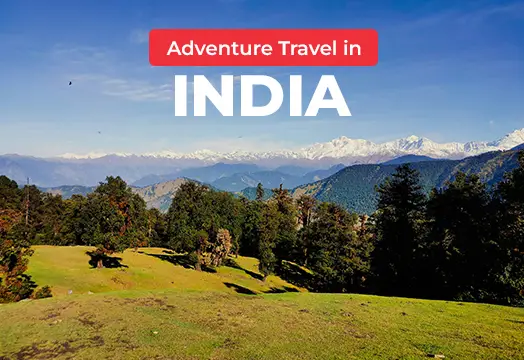
Stargazing on Treks: A Celestial Experience Amidst Majestic Peaks
Trek The Himalayas (TTH) is introducing stargazing experiences on the treks. Every night will be a window to the universe with an unforgettable connection with the cosmos. Imagine lying under a blanket of stars, the night sky stretching infinitely above you, as you drift into dreams of distant galaxies
Stargazing, the timeless art of gazing at the night sky and marvelling at the vast expanse of the universe. It’s more than just gazing; it’s an experience that connects us to the cosmos, inviting us to ponder the mysteries of the universe. When we look up at the stars, we are not just seeing distant celestial bodies but are also engaging in a profound dialogue with the universe, tracing constellations that have guided explorers for millennia and witnessing the beauty of the Milky Way. Through the lens of stargazing, we gain a deeper appreciation for the natural world and our place within it. It invites us to slow down, look up, and lose ourselves in the celestial dance of the stars.
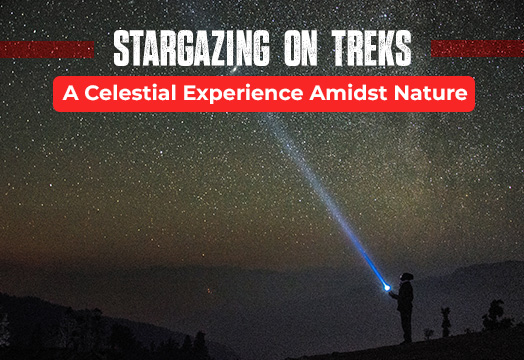
Best Time for Kedarkantha Trek - Trek The Himalayas
Experience the thrill of the Kedarkantha Trek, located in Uttarkashi district, Uttarakhand, India. Rising to 12,500 feet within the Govind Wildlife Sanctuary, this trek offers a spiritual and scenic journey, with legends suggesting Lord Shiva once walked these paths. Best explored in January, February, March, April, November, and December, Kedarkantha is renowned for its stunning snow-covered landscapes. The trek begins in Sankri and spans 20 km over six days, guiding you through dense forests, charming villages, and snowy slopes, culminating in breathtaking summit views. Ideal for beginners, this moderate trek provides a perfect introduction to Himalayan trekking. Prepare with regular exercise and essential gear. Trek The Himalayas ensures a safe and memorable adventure with their comprehensive packages.
.webp)
Best Time for Kedarkantha Trek | Best Winter trek in India
.webp)
40 Best Himalayan Treks in India for 2024
Discover the 40 Best Himalayan Treks in India for 2024 with Trek The Himalayas! The Himalayas, stretching across India’s northern frontier, offer a diverse range of trekking adventures for all skill levels. From the iconic Everest Base Camp to the serene Valley of Flowers, each trek reveals unique landscapes, diverse flora, and vibrant local cultures. Whether you're seeking challenging climbs, scenic hikes, or rich cultural experiences, the Indian Himalayas provide something for every adventurer. Explore these top treks to embrace breathtaking views, traverse ancient trails, and embark on unforgettable journeys in one of the world's most majestic mountain ranges. Prepare for an extraordinary trekking experience that will leave you in awe of the Himalayas’ natural beauty and cultural richness.
.webp)
Kedarkantha Trek Adventure - Trek The Himalayas
The Kedarkantha trek with Trek The Himalayas is a kaleidoscopic adventure that mesmerizes at every turn. As you embark on this journey, you'll find yourself surrounded by vibrant forests, where the colors of nature come alive with each step. The trek leads you through enchanting trails that wind past charming villages and lush meadows, eventually revealing breathtaking views of snow-covered peaks. The highlight of this adventure is reaching the summit, where panoramic vistas of the majestic Himalayas will leave you in awe. At night, the sky transforms into a starlit wonderland, offering a serene backdrop for reflection and camaraderie around the campfire. With expert guidance and a supportive team, every moment spent on this trek becomes a cherished memory. Join us for an unforgettable Himalayan experience that combines stunning landscapes, rich culture, and the thrill of adventure with Trek The Himalayas!
.webp)
Kedarkantha Winter Trek - Best Trek for Beginners in India
Escape the hustle and bustle of city life and immerse yourself in the serene beauty of the Kedarkantha trek with Trek The Himalayas. This unforgettable journey invites you to leave the metro behind and embrace the majestic mountains. As you trek through tranquil landscapes, you’ll be surrounded by snowy peaks, lush pine forests, and breathtaking meadows that offer a perfect backdrop for rejuvenation. The fresh mountain air revitalizes your spirit, while the stunning views provide a feast for the eyes. Ideal for both novice and experienced trekkers, the Kedarkantha trek promises adventure, camaraderie, and a deep connection with nature. Each step takes you closer to tranquility and the pure essence of the wilderness. Join us at Trek The Himalayas for this transformative experience and discover why Kedarkantha is truly your gateway to mountain bliss!
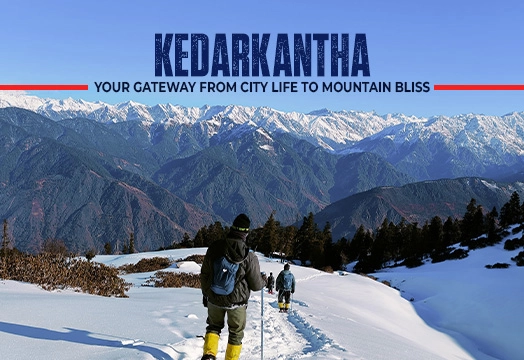
Explore the Kedarkantha Peak Trek: A 7-Day Adventure with Trek the Himalayas
Life is better in hiking boots! Embark on the Kedarkantha Peak trek with Trek The Himalayas for an unforgettable 7-day adventure in the stunning Garhwal Himalayas. Your journey begins on Day 1 in Dehradun, where you'll gather and prepare for the trek. On Day 2, you'll travel from Dehradun Railway Station to the trailhead, setting the stage for your adventure. Day 3 takes you to Juda ka Talab, a serene lake nestled amidst majestic peaks. On Day 4, you’ll reach Kedarkantha Base Camp, where you can acclimate and take in the breathtaking surroundings. The highlight of the trek is Day 5, when you ascend to Kedarkantha Summit, offering panoramic views that will leave you awestruck. Day 6 involves descending to Sankri, and on Day 7, you’ll return to Dehradun, wrapping up a remarkable trekking experience. Join us for a journey that perfectly blends adventure with the stunning beauty of the Himalayas!
 (1).webp)
Kedarkantha: An Enchanting Himalayan Trek with Trek the Himalayas
Kedarkantha: A dream trek awaits you with Trek The Himalayas! Immerse yourself in the enchanting Kedarkantha Trek, set in the Indian Himalayas, where breathtaking snowy landscapes promise to captivate your heart. This unforgettable adventure is a gateway to the pristine beauty of Uttarakhand’s winter wonderland, offering a unique opportunity to explore its serene splendor. Traverse through picturesque trails that weave through snow-covered meadows and charming villages, each step revealing stunning panoramic views of the majestic peaks. Feel the thrill of reaching the snow-clad summit and relish the sense of accomplishment that comes with conquering high-altitude terrain. Whether you’re a seasoned trekker or a novice adventurer, the Kedarkantha Trek ensures a memorable experience filled with natural beauty and exhilarating moments. Join us for an extraordinary journey and turn your Himalayan trekking dreams into reality amidst the tranquil and majestic backdrop of Kedarkantha.
.webp)
Top Winter Treks in India | Best Winter Treks in Himalayas
Discover the top winter treks in the Indian Himalayas with Trek The Himalayas, where snowy landscapes and majestic peaks offer an unforgettable experience for adventurous souls. Explore the iconic Chadar Trek, a frozen river trail that leads through the stunning Zanskar Valley. Experience the thrill of the Kedarkantha Trek, known for its panoramic views and enchanting snow-covered trails. Embark on the breathtaking Brahmatal Trek, offering mesmerizing views of Mt. Trishul and Mt. Nanda Ghunti. The Har Ki Dun trek, with its scenic beauty and rich cultural heritage, is perfect for nature lovers. Each of these treks offers a unique blend of adventure, challenge, and serene beauty, making them ideal for trekkers seeking a winter wonderland. At Trek The Himalayas, we guide you through these awe-inspiring journeys, ensuring safety and an unforgettable experience in the heart of the Himalayas. Get ready to embrace the winter magic and explore the best of the Himalayas with us.
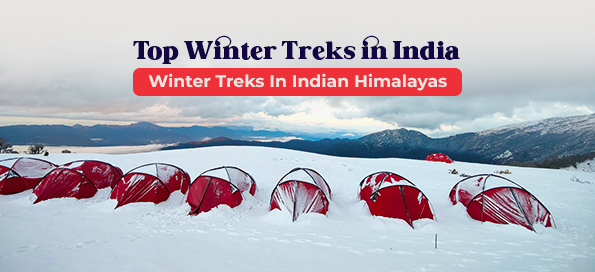
5 Reasons True-blue Himalayan Wanderers Shouldn’t Miss the Mountains in Winter
For thrill-seekers and Himalayan enthusiasts, winter treks from December to March offer unmatched experiences. The Himalayas transform into a snowy paradise with cerulean skies and breathtaking vistas. Treks like Kuari Pass and Chopta-Chandrashila showcase stunning winter landscapes, where celestial hues paint the sky. The serene Gorson Bugyal and Nag Tibba offer picturesque scenes in muted shades, perfect for capturing the beauty of the season. Experience the romance of falling snow on the Brahmatal trek or challenge yourself on snow-covered trails like the Chadar Trek. Embrace the extreme cold, test your limits in subzero temperatures, and learn the art of survival in these harsh yet captivating environments. At Trek The Himalayas, we provide expert guidance and support, ensuring a safe and exhilarating journey. Winter treks offer an adventure that is both thrilling and transformative, making them an ideal choice for those seeking to explore the majestic Himalayas in their winter glory.
.webp)
Why Everyone Loves Winter Kedarkantha Treks in India
Experience the enchanting Kedarkantha Trek in the Indian Himalayas with Trek The Himalayas and discover why it's a favorite among adventurers. This winter trek offers a magical journey through pristine snowy landscapes, where every turn reveals breathtaking views of snow-capped peaks and serene, untouched meadows. The trek's allure lies in its perfect blend of stunning natural beauty and manageable adventure, making it ideal for both seasoned trekkers and beginners. Enjoy the thrill of traversing through snow-covered trails, cozying up in charming campsites, and witnessing the grandeur of the Himalayas in its winter splendor. With well-planned routes and expert guidance, the Kedarkantha Trek promises an unforgettable adventure filled with picturesque moments and exhilarating experiences. Join us to explore the winter wonderland of Kedarkantha and understand why it's beloved by trekkers from all around.
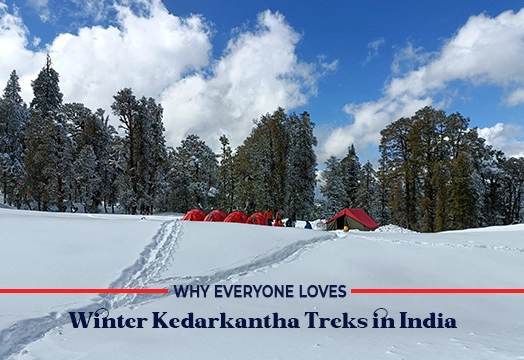
Trekking in Uttarakhand, Uttarakhand Treks
Experience the best of trekking in Uttarakhand with Trek The Himalayas. Our diverse range of treks offers an unparalleled opportunity to explore the scenic trails, breathtaking views, and unforgettable adventures in the heart of the Himalayas. From the lush green valleys and pristine rivers to the towering snow-capped peaks, Uttarakhand provides a perfect backdrop for trekking enthusiasts. Whether you're a seasoned trekker or a beginner, our well-curated treks cater to all levels of experience. Journey through iconic routes like the Kedarkantha Trek, known for its stunning winter landscapes, or the Valley of Flowers, famous for its vibrant flora. Traverse the challenging Roopkund Trek with its mystical lake or the serene Har Ki Dun Trek, rich in culture and history. Start your adventure today and immerse yourself in the majestic beauty of Uttarakhand's mountains. Join us for a memorable trekking experience that will leave you longing for more.
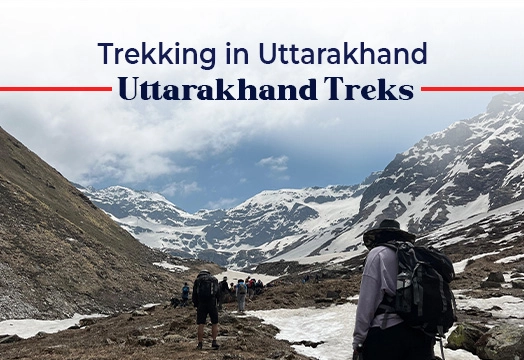
Travel Diaries
Embark on an exhilarating 6-day trek from Dehradun to Kedarkantha Peak with Trek The Himalayas, where nature’s grandeur and unforgettable experiences await. This adventure takes you through a diverse array of landscapes, including lush forests, charming villages, and snow-covered meadows. As you navigate rugged mountain trails, each day presents new vistas and challenges, culminating in the breathtaking views from Kedarkantha Peak. Experience the thrill of high-altitude trekking, the serenity of alpine settings, and the camaraderie of fellow trekkers. The journey offers not only stunning natural beauty but also a chance to create lasting memories and forge a deeper connection with the majestic Himalayas. Join us for this immersive trek and discover the unparalleled excitement and beauty of reaching Kedarkantha Peak.
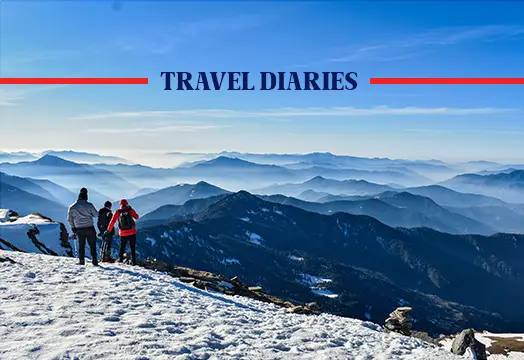
Travelogue with TTH to Kedarkantha
Experience an unforgettable journey with Trek The Himalayas to summit Kedarkantha Peak. This trek offers an extraordinary experience, combining stunning views, exhilarating climbs, and the camaraderie of fellow adventurers. As you ascend to the peak, you'll traverse through diverse landscapes, from dense forests and serene meadows to snow-covered trails and rugged terrains. Each day reveals breathtaking vistas of the surrounding Himalayan peaks and valleys, creating a truly memorable adventure. The journey is not just about reaching the summit, but also about the shared experiences and friendships forged along the way. With expert guidance and support, you'll find yourself immersed in the beauty of the Himalayas and the thrill of high-altitude trekking. Join us to conquer Kedarkantha Peak and create lasting memories on this remarkable adventure.
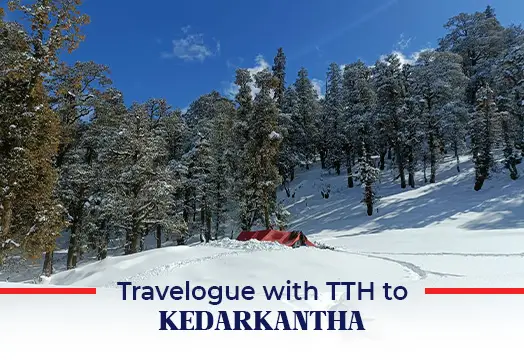
Nature’s Classroom: Doon School Students Explore Kedarkantha
Doon School students recently embraced nature’s classroom on an educational and adventurous trek to Kedarkantha with Trek The Himalayas. This unique journey allowed the students to explore the wonders of the Himalayas, delving into the pristine beauty and challenging terrains of Kedarkantha. The trek offered more than just breathtaking views; it was a hands-on learning experience where students gained valuable insights into the environment, teamwork, and resilience. As they ascended through dense forests, snow-covered trails, and reached the summit, each step became a lesson in perseverance and discovery. This journey of learning and adventure provided unforgettable memories and a deeper connection with nature. Join Trek The Himalayas for similar experiences that blend education with the thrill of exploration.
.webp)
Explore Best Treks in India with Trek The Himalayas
Explore the best treks in India with Trek The Himalayas, your gateway to adventure. Our carefully curated list of the top 10 treks in India is perfect for thrill-seekers and nature lovers alike. Discover post-monsoon marvels like the Everest Base Camp (EBC) trek, Annapurna Base Camp (ABC) trek, and more, each offering a unique blend of breathtaking landscapes and cultural richness. Whether you're drawn to the towering peaks of the Himalayas, the vibrant valleys, or the serene beauty of alpine meadows, these treks promise an unforgettable experience. Trek The Himalayas is committed to providing you with the ultimate trekking adventure, complete with expert guidance, high-quality gear, and a focus on safety and sustainability. Embark on a journey that challenges you physically and enriches you spiritually, as you explore some of India's most stunning natural wonders. Let us help you make memories that will last a lifetime on your next trekking expedition. Trekking as an adventure sport has become quite popular in the last decade. In fact, it is one of the first things that comes to mind when one thinks of an outdoor adventure.
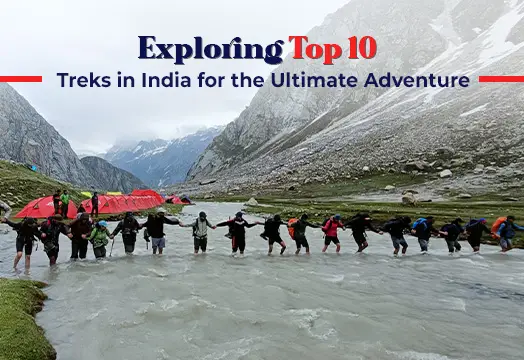
11 Best Himalayan Trek in Autumn 2024 – TTH
Discover the top 11 Himalayan treks with Trek The Himalayas this Autumn 2024, and explore India’s premier trekking destinations. Experience the lush meadows of the Dayara Bugyal Trek, the vibrant forests of the Deoriatal-Chopta-Chandrashila Trek, and the stunning summit views of Kedarkantha. Challenge yourself on the rugged trails of the Bali Pass Trek, immerse in the serene valleys of Har Ki Doon, and enjoy the majestic Kanchenjunga vistas on the Goechala Trek. Traverse the colorful forests of the Sandakphu Trek, walk the spiritual paths of the Gaumukh Tapovan Trek, and marvel at the alpine beauty of the Buran Ghati Pass Trek. The Rupin Pass Trek offers diverse scenery, while the Everest Base Camp Trek provides a legendary journey with breathtaking views of the world's highest peak. Autumn, with its clear skies, mild weather, and stunning landscapes, is the ideal time for these treks. Create unforgettable memories and embark on awe-inspiring adventures in the Himalayas with TTH.
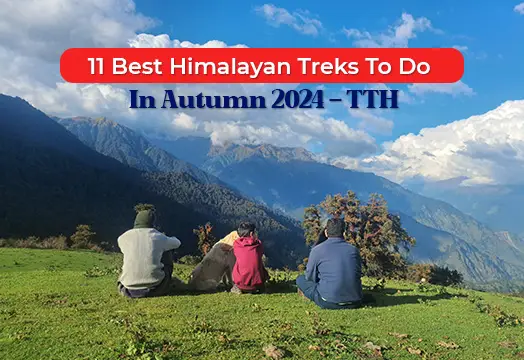
Spring Himalayan Treks in India
Spring in the Himalayas is a captivating season, offering adventurers a vibrant tapestry of natural beauty. As the snow melts, trails like Chopta Chandrashila, Goechala, Sandakphu, and Dayara Bugyal transform into scenic wonderlands. Trekking through rhododendron forests, you'll witness a burst of red, pink, and white blossoms against snow-capped peaks. Pleasant weather, clear skies, and flourishing flora and fauna enhance the experience, providing ideal conditions for photography and stargazing. Spring also attracts fewer crowds, ensuring a more intimate connection with nature. Treks like Nag Tibba, Kedarkantha Peak, Brahmatal, Kuari Pass, Har Ki Doon, Pangarchulla Peak, and Ali Bedni Bugyal offer varied challenges and stunning landscapes. The season invites trekkers to explore pristine meadows, encounter wildlife, and enjoy panoramic views of majestic peaks like Mount Kanchenjunga and Bandarpoonch. Whether you're a seasoned trekker or a beginner, spring in the Himalayas promises an unforgettable journey of natural wonder and serenity.
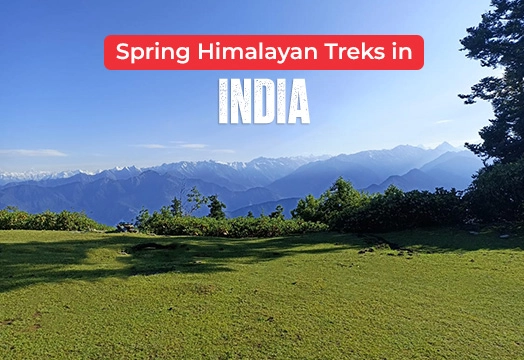
Kedarkantha - A Snowy Himalayan Adventure
Kedarkantha - A Snowy Himalayan Adventure with Trek The Himalayas invites you to embark on an exhilarating journey through the pristine landscapes of the Indian Himalayas. This trek offers an unforgettable experience as you traverse snow-covered meadows, dense forests, and rugged trails, all while conquering the majestic Kedarkantha Peak. As you ascend, you’ll be surrounded by breathtaking snowy vistas and serene winter beauty, creating a truly immersive adventure. The trek provides a perfect blend of challenge and reward, allowing you to feel the thrill of high-altitude trekking while enjoying the tranquility of the Himalayan winter. Whether you're a seasoned trekker or a novice adventurer, the Kedarkantha trek promises a memorable exploration of pristine landscapes and snow-clad peaks. Join us for this extraordinary journey and experience the exhilarating beauty of a snowy Himalayan adventure.
.webp)
- Date and Price

Rent A Gear
Trek Articles
Quick Links
Trekking & Hiking
Mountaineering
Multi Sports
Himalayan Pilgrimage
Website Privacy
Terms & Condition
Contact Info
Address: Trek The Himalayas 7/2/1, Convent road, Near SBI Main Branch Dehradun-248001,Uttarakhand
Phone: 8191004846 (Monday-Saturday 10 AM to 10 PM)
Email: [email protected]
2024 Trek The Himalayas. All rights reserved
- Inspiring Stories
- Facts & Figures
- Entertainment
- Raise Your Voice Here !

Mind of Steel in Uttarakhand: Santosh Singh Negi
Ajit doval – an espionage agent from garhwal, kalyan singh rawat – the founder of maiti andolan, vinod aswal – an artist spreading legacy of folk dance, sudha gunavante the state’s green ambassador, 6 new trekking routes to kedarnath in uttarakhand.

Around 200 trekkers will trek from 6 newly developed Trekking Routes for Kedarnath from October 3 on-wards and will reach to Kedarnath using these different routes where CM Harish Rawat himself will facilitate them.
These new trekking routes are:
- Dehradun- Sitapur-Kedarnath-Vasukital.
- Dehradun-Guttu-Panwali-Trijuginarayan
- Dehradun-Chaumasi-Kham-Baljitiya-Kedarnath.
- Dehradun-Ransi-Manni-Kedarnath
- Dehradun -Shersi-Jhanditop- Kedarnath- Vasukital
- Dehradun-Chopta-Bisudital-Chaumasi-Kedarnath
General manager of Garhwal Mandal Vikas Nigam Mr. D.L. RANA said, “These trekking routes have been discovered and developed in order to provide more alternative routes to the pilgrims and tourists at Kedarnath. When the flash flood struck in Kedarnath, the stranded people did not know any alternative route available in the hills and forest surrounding the temple. They had no option but to tread on the route which was hit by the deluge itself, which resulted in loss of thousands of precious lives.”
The event has been organized by GMVN and funded by Uttarakhand Tourism Development Board. It was free of cost for trekkers who were selected by Mountaineers and Trekkers Association.
“The number of trekkers are now growing further from 200 as locals are also joining. The hardcore mountaineer and porters of these villages, situated in most treacherous places have been selected for the toughest treks. There are other medium treks for other trekkers too. However four physical challenged, researchers and doctors have been put to regular trek of Gaurikund to Kedarnath also.” He said, during these treks villages like Ransi and Gondar in Madmaheshwar which were not much known to people, nor the treks available for Kedarnath also came to limelight.
“People of these villages are well-versed with the trekking routes for Kedarnath. Had they been included during the disaster related operations, many lives could have been saved. He said, “The officials too have been made part of the treks so that they can get conversant with the routes, their topography, challenges and ways how to carry out rescue operations, if needed.” He said, the trekkers stayed in home stays of the local villagers only, as they wanted the local people to be benefited and, also local community to get the exposure of tourism activity. He said, their association is engaged in discovering more routes with the help of villagers.
RELATED ARTICLES MORE FROM AUTHOR
Pranab mukherjee finally reaches kedarnath shrine, 7-ias, 31-pcs & 10-ips transferred in uttarakhand, president to visit uttarakhand on a four-day visit.
[…] Gaurikund to Kedarnath trek Image source […]
Comments are closed.
Follow Us Here :
Latest news, royal enfield flagged off its tour of uttarakhand, passport seva kendras for nainital, haldwani, rs 13 crore for restoring water bodies in nainital, uk govt say no begging around religious places, namami gange projects begin in haridwar, issues that matter, ghee – ghyu sankranti, olgia uttarakhand festival, women helpline – uttarakhand rajya mahila aayog.
- Advertise With Us
- Privacy Policy
- Panch Kedar
- Helicopter Services
Weather in Kedarnath
- Kedarnath Temple
- Badrinath Temple
- Gangotri Temple
- Yamunotri Temple
- Chota Char Dham Yatra
- Kedarnath Yatra
- Travel Guide
- Weather Guide
Kedarnath Yatra 2024: Opening Closing Date, Registration
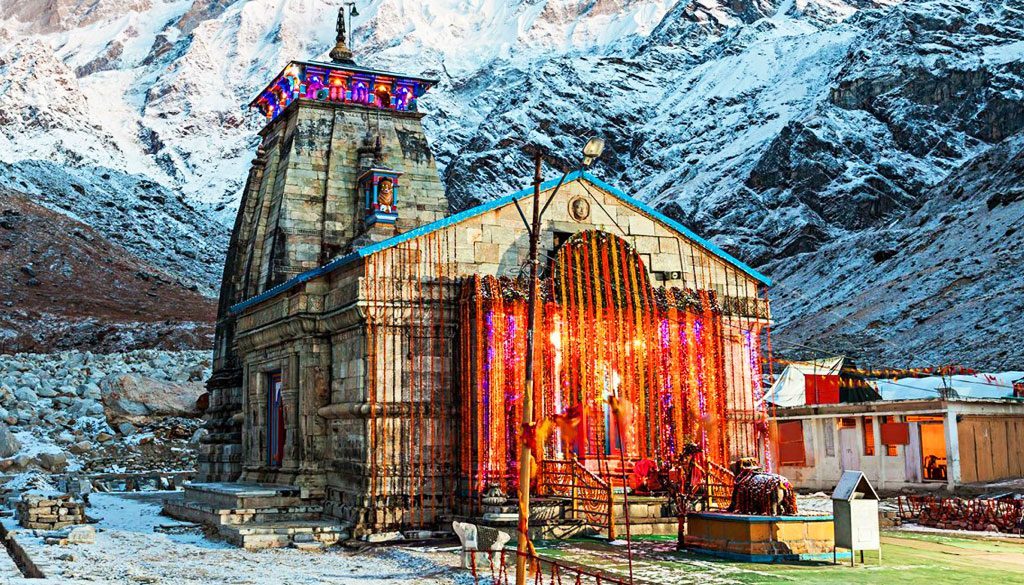
Kedarnath Yatra 2024 is very popular among Hindu pilgrims. Here we have shared the opening date and closing date of Kedarnath Temple in Char Dham Yatra 2024. Along with a Travel Guide for booking hotels, helicopter services, and the registration process.
Kedarnath temple is one of the 12 Jyotirlingas located in the Rudraprayag district of Uttarakhand. It is also the most renowned temple among the Panch Kedar. Panch Kedar is a group of 5 Shiva temples in the Garhwal Himalayas.
These temples’ names are Kedarnath, Tungnath, Madhyamaheswar, Rudranath, and Kalpeswar. The Kedarnath Dham is also part of the Char Dham Yatra 2024.
Kedarnath shrine is situated in a breathtaking location near the milky white Mandakini River. At the astonishing height of 3,583 meters.
We have compiled all the important information about Kedarnath Yatra 2024. And we can say that this is your Online Travel Guide for your Kedarnath Trip.
About Kedarnath Yatra 2024
- Deity: Kedarnath, Lord of Kedar Khand (Shiva)
- District: Rudraprayag
- State: Uttarakhand (India)
- Elevation / Height: 3,583m (11,755 ft)
- Visitors / Year: 15 Lakh visitors in 2022
More than 15 Lakh people visited Kedarnath in just the first 6 months of the Char Dham Yatra in 2022.
Kedarnath is one of the significant temples of the sacred Chota Char Dham Yatra . This Yatra consists of four temples of Uttarakhand. These are Kedarnath, Badrinath, Gangotri, and Yamunotri.
Kedarnath Yatra Opening Date 2024
Kedarnath Temple’s opening date depends on the auspicious day of Akshay Tritya and is declared on the Maha Shivaratri every year.
The date of opening of the Kedarnath shrine is decided by priests of Omkareshwar Temple located in Ukhimath after the calculation of Hindu Panchang.
The closing date of Kedarnath is fixed on the day of Bhai Dooj after the Diwali festival around November.
The opening and closing dates of the Kedarnath Temple in Char Dham Yatra 2024 are as follows:
Check Registration, Pooja Timings Details Here
Kedarnath Temple History
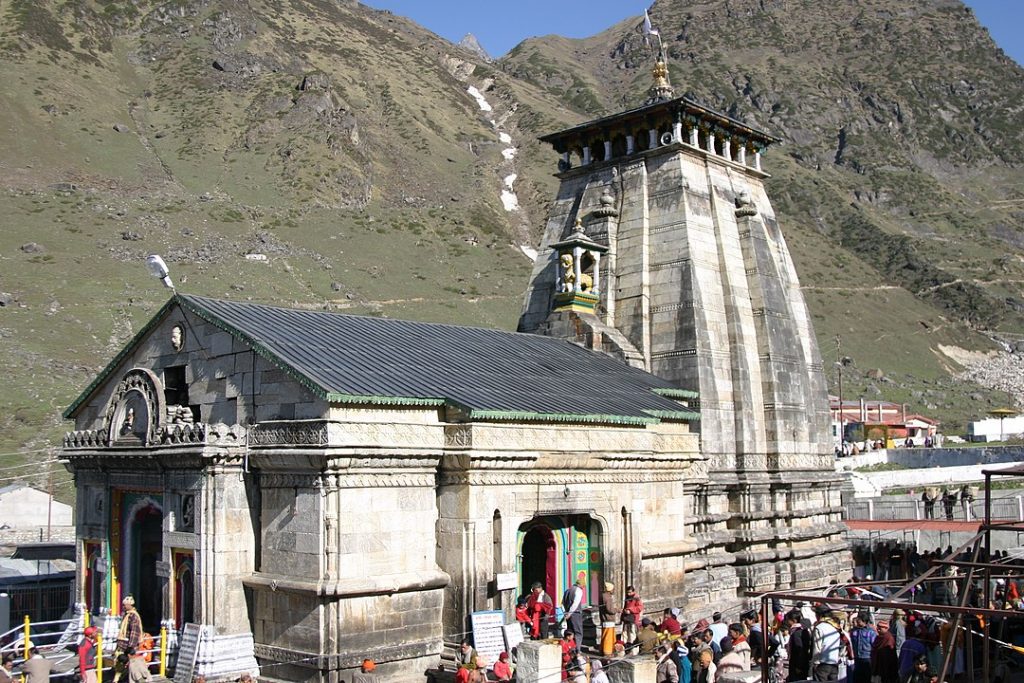
There are so many stories and legends about Kedarnath Temple and it has been a pilgrimage center since ancient times.
Although, it is not confirmed who built the original Kedarnath Mandir and when.
But a mythological story describes the temple’s construction to the legendary brothers Pandavas. But the holy Mahabharata does not mention any place called Kedarnath.
The holy Kedarnath temple is said to have been built in the 8th century AD by Hindu guru Adi Sankaracharya.
Sankaracharya rebuilt the place where the Pandavas of Mahabharat fame is believed to constructed a Shiv temple.
History of Char Dham Temples
- History of Badrinath
- History of Kedarnath
- History of Gangotri
- History of Yamunotri
Kedarnath Flood

Kedarnath town was the most affected area during the 2013 flash floods in North India. Uttarakhand is the most disaster-prone state in India. And The Kedarnath Temple complex, surrounding areas in Rudraprayag, and Kedarnath town suffered vast damage.
But the temple structure did not suffer any “major” damage. Apart from a few cracks on one side of the four walls which were caused by the flowing debris from the higher mountains.
During the disaster, a huge rock among the flood, mud, and debris worked as a barrier. And it protected the temple from extensive damage.
The surroundings of the Kedarnath Temple for example – buildings, hotels, and market areas were vanished away in the flood and damaged heavily.
Also Read: Full Story and Reason Behind Kedarnath Flood 2013
How To Reach Kedarnath Temple?
Here we have compiled all the routes and distance information on how to reach Kedarnath in the best possible way.
Suppose you are planning your trip from any major city like Delhi, Mumbai, Chennai, Kolkata, or Banglore.
Then it’s very important to know the distance and best possible routes for your Kedarnath Trip.
It does not matter whether you are traveling to Kedarnath by train, air, or by road, Haridwar and Rishikesh are the main points from where you have to start your journey to the hilly area.
Kedarnath Yatra 2024 Route Maps & Distance Guide
If you want to reach Kedarnath Temple from any part of India. Then Gaurikund will be your last destination by road.
Your City ➜ Haridwar or Rishikesh ➜ Devprayag ➜ Srinagar ➜ Rudraprayag ➜ Sonprayag ➜ Gaurikund and then finally 16 km Trek to Kedarnath Temple.
Gaurikund is accessible from major destinations of Uttarakhand. After that Kedarnath temple can be reached by a 16 km trek from Gaurikund.
Kedarnath Distance from various Cities of India
Here we are sharing a detailed Route Map & Distance Guide on how to reach Kedarnath from major cities in India.
Click on Any Route below and you will be redirected to a detailed Guide on that Route.
⦿ Delhi To Kedarnath (466 km) ⦿ Rishikesh To Kedarnath (227 km) ⦿ Haridwar To Kedarnath (252 km) ⦿ Dehradun To Kedarnath (266 km) ⦿ Mumbai To Kedarnath (1912 km) ⦿ Chandigarh To Kedarnath (524 km) ⦿ Jaipur To Kedarnath (758 km) ⦿ Lucknow To Kedarnath (730 km) ⦿ Ahmedabad To Kedarnath (1431 km) ⦿ Banglore To Kedarnath (2558 km) ⦿ Chennai To Kedarnath (2609 km) ⦿ Kolkata To Kedarnath (1699 km) ⦿ Pune To Kedarnath (1913 km) ⦿ Hyderabad To Kedarnath (1685 km)
Gaurikund To Kedarnath Temple
There are so many transport options from Dehradun or Haridwar or Rishikesh To Gaurikund. It is also accessible from major destinations of Uttarakhand.
But the roads towards Kedarnath Temple only stretch till Gauri Kund.
After that, you have to take a 16 km trek towards the sacred shrine Kedarnath Mandir.
Paalkies and Ponies are also easily available here. And if you have a good budget, then you can also hire a helicopter service during the peak season of the Kedarnath Yatra.
Also Read: Kedarnath Trek Travel Guide
Best Time To Visit Kedarnath
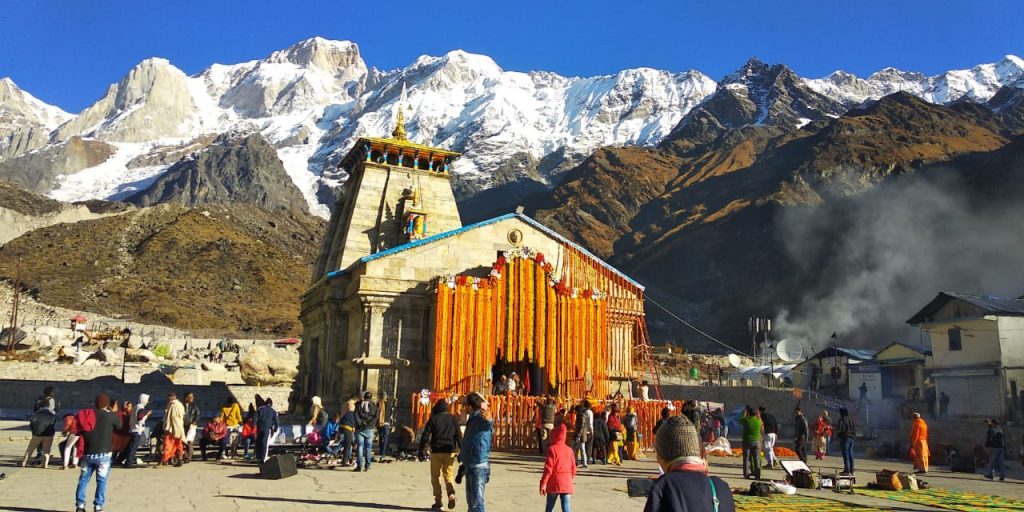
The doors (Kapat) of the Kedarnath Temple (Mandir) open to devotees in the month of April-May every year.
And close around the last week of November on the occasion of Bhai Dooj.
- This period is called the Char Dham Yatra Season.
- This is the best time to visit Kedarnath Yatra.
During the Char Dham Yatra season, you can also visit Badrinath Temple, Gangotri Temple, and Yamunotri Temple.
The weather and climate during the yatra season are very pleasant and the temperature remains below 20 degrees Celcius.
Best Time for Your Char Dham Trip
- Best Time To Visit Badrinath
- Best Time To Visit Gangotri
- Best Time To Visit Yamunotri
All the temples of the Char Dham Yatra are located at high elevations in Uttarakhand. And hence, it is normally very cold weather in Kedarnath in winter. Due to most often sub-zero temperatures which make trekking next to impossible.
Kedarnath Temperature Today
Moreover, the Kapat (doors) of the temples close during the winter season. Thus, the Char Dham yatra is carried out mostly during the summer months. From April to June when the weather is favorable for steep climbing and sightseeing tours.
And also sometimes from late Sep to Nov, when the monsoon decreases and at the start of the winter season (autumn). This is the best time to visit Kedarnath.
But as much as possible the rainy season for this Sacred Yatra (Tour) should be avoided. Because the roads and paths (trek) become slippery and there are circumstances of landslides are high.
- Kedarnath Temperature in January
- Kedarnath Temperature in February
- Kedarnath Temperature in March
- Kedarnath Temperature in April
- Kedarnath Temperature in May
- Kedarnath Temperature in June
- Kedarnath Temperature in July
- Kedarnath Temperature in August
- Kedarnath Temperature in September
- Kedarnath Temperature in October
- Kedarnath Temperature in November
- Kedarnath Temperature in December
Hotels in Kedarnath
Kedarnath Temple is a remote location as compared to other Char Dham Temples in Uttarakhand. That is why there are so many options for accommodation.
From hotels to Govt guest houses like GMVN Tourist Guest Houses and Tent Camps, there are a variety of facilities to make your tour memorable.
One of the Chota Char Dhams of Uttarakhand, Kedarnath is definitely the most difficult way of austerity selected by pilgrims of all age groups.
During the months (April to November) when the Kapat (doors) of the temple is open for pilgrims, the 14 Km trek from Gauri Kund to the shrine of Lord Shiva is as crowded as a crossroads on a busy Monday in a city. For the sacred tour, there is a need for temporary residence or accommodation.
These are some of the best-recommended Hotels/Cottages/Rooms in Kedarnath.
Check Hotels Booking Prices Here
Helicopter Services in Kedarnath
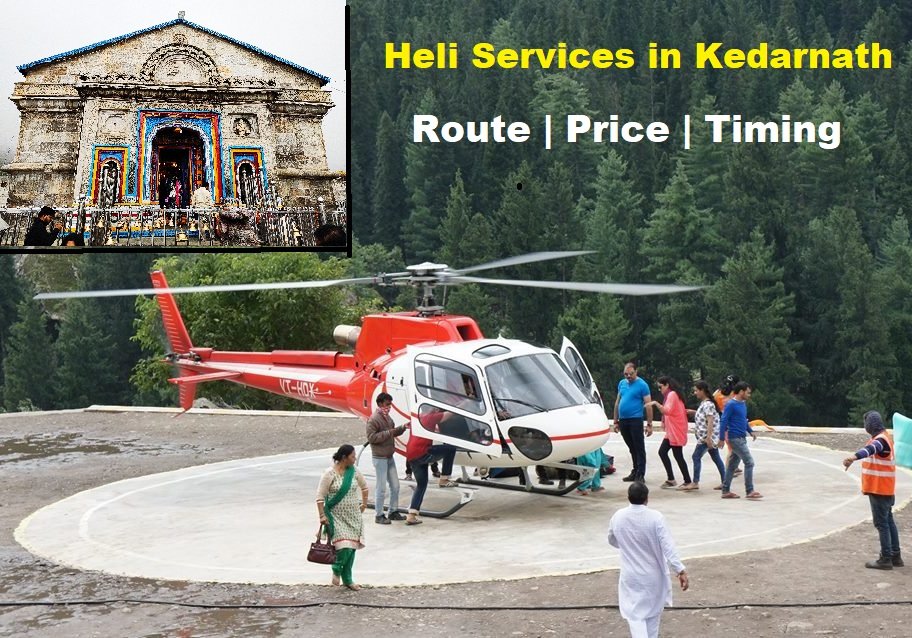
The hard journey becomes much easier because of the daily helicopter service from the helipad in Guptkashi, Phata, and Sersi village in Kedarnath.
Some operators also offer a premium helicopter service from Jollygrant Airport directly during the peak season of Char Dham Yatra 2024.
Check the Helicopter Booking Prices Here
Devotees can visit the Kedarnath shrine and also return the same day as the helicopter service flies at regular intervals from Phata and Agustmuni helipads.
5-seater helicopters are operated by different tour companies like Himalayan Heli , Pawanhansh ..etc.
There are three main routes available for Heli services in Kedarnath.
Guptkashi, Phata, & Sersi.
You can take your helicopter ride from any of these three places.
Meditation Cave in Kedarnath

Another name for Kedarnath Cave is Rudra Meditation Cave. This region is maintained and runs as a “Modern Meditation Cave” by the Garhwal Mandal Vikas Nigam (GMVN). Kedarnath Cave is located one and a half kilometers from the Kedarnath Temple complex.
A stay in the cave can only be booked online from the portal of GMVN and fees INR 990 for a day.
Check Online Booking Here
Rudra Cave can be reached from Kedarnath following a trek of around a kilometer very easily. The holy town of Kedarnath is well-linked to several prominent cities in North India.
Also Read: Kedarnath Cave Travel Guide
What is Panch Kedar?
Panch Kedar is part of Lord Shiva’s body that appeared at five places in Kedarnath Town of Uttarakhand. These temples are considered highly sacred by Hindus and it is said that Pandavas built these 5 temples.
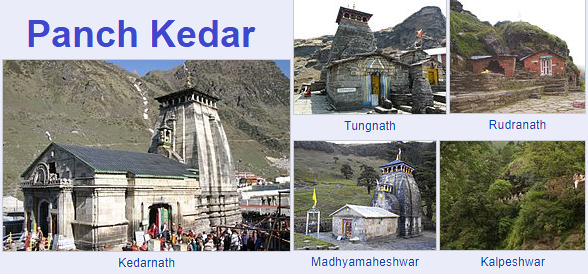
Panch Kedar is an important pilgrimage destination dedicated to Lord Shiva. Panch Kedar Temple’s names are Kedarnath, Tungnath, Rudranath, Madhyamaheswar, and Kalpeswara.
Kedarnath Temple : Located in the Rudraprayag district, Kedarnath Temple is the most famous and important temple among the Panch Kedar. It is situated at an altitude of 3,583 meters and is believed to have been built by the Pandavas.
Tungnath Temple : Tungnath Temple is the highest Shiva temple in the world and is located in the Rudraprayag district. It is situated at an altitude of 3,680 meters and is believed to be more than 1,000 years old.
Rudranath Temple : Located in the Chamoli district, Rudranath Temple is believed to be the place where Lord Shiva’s face appeared after he disappeared from Kedarnath.
Madhyamaheshwar Temple : Madhyamaheshwar Temple is located in the Rudraprayag district and is believed to be the place where Lord Shiva’s navel appeared.
Kalpeshwar Temple : Located in the Chamoli district, Kalpeshwar Temple is believed to be the place where Lord Shiva’s hair appeared. It is situated at an altitude of 2,134 meters.
Panch Kedar Route Map & Distance
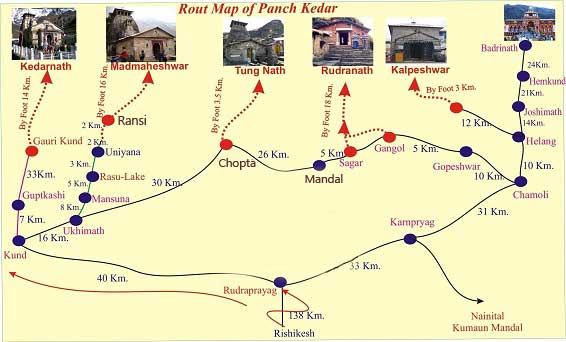
The best way to visit Panch Kedar temples is a bus service that leaves Gaurikund near Kedar Nath. The Timing of this bus is every morning at 5 am and stops at every point for Panch Kedar temples.
Travel Guide for Char Dhams:
- Badrinath Yatra 2024 Guide
- Gangotri Yatra 2024 Guide
- Yamunotri Yatra 2024 Guide
- Panch Kedar Yatra 2024 Guide
FAQs About Kedarnath
Here are some most frequently asked questions about Kedarnath.
Who built the Kedarnath Temple?
According to Hindu mythology, Kedarnath Mandir was constructed by the legendary brothers Pandava. But the modern structure of the Kedarnath Temple is said to have been built in the 8th century AD by Hindu Guru Adi Sankaracharya at the same place where the Pandavas are believed to built a Shiv temple.
Why the Kedarnath Yatra is Famous?
It is believed that Pandavas went to heaven from the path above the Kedarnath, and they built the Shiva Temple in Kedar Valley. And Kedarnath temple is located in the highest place among the 12 Jyotirlingas.
Where is the Kedarnath Located?
Kedarnath is a holy Hindu Temple located in the Rudraprayag district of Uttarakhand.
Kedarnath Yatra Opening Date in 2024?
The date for the opening of Shri Kedarnath Temple’s Kapat is announced by the priests on the auspicious day of Basant Panchmi. This year in 2024, Kedarnath Temple will be open on 26 April 2024.
Kedarnath Temple Closing Date in 2024?
Kedarnath Temple will close on Oct-Nov 2024, the date is not announced yet. (Most probably Nov 2024)
What is Kedarnath Temple Pooja Timing?
The morning pooja starts at 4:00 and lasts till 7:00. thus after the last Aarti, Kedarnath Temple is closed till the next morning. only between April & November.
Why Kedarnath Temple Closes Every Year?
Due to the very cold weather, the doors (Kapat) of the Kedarnath temple are closed, and everyone from the Kedar Valley migrates downwards.
How old Kedarnath Temple is?
The Lord Shiva Temple of Kedarnath is around 3000 years old. As per mythology, the Kedarnath Temple was made by the Pandavas brothers. however, the exact date or year of the temple’s establishment is not mentioned in pristine literature. But if we look at the scientific evidence, a minimum age of Kedardham of about 3,000 years can be considered.
How Kedarnath temple survive the flood?
During the flood in 2013, the temple structure did not suffer any “major” damage, apart from a few cracks on one side of the four walls which were caused by the flowing debris from the higher mountains. During the disaster, a huge rock in the flood worked as a barrier and protected the temple from extensive damage. The boulder saved the Kedarnath Temple although scientists believed that the structure and construction of the Temple were the reason for not being destroyed.
What is the name of the stone which saved Kedarnath Temple?
The stone that saved Kedarnath Mandir is called Bheem Sheela.
How Far is Kedarnath Temple from the Helipad?
The Kedarnath Helipad is situated about 700 meters away from Kedarnath Temple and can be accessed within a few minutes. Daily helicopter services are available from the helipad in Phata village in Kedarnath. Some operators also offer a helicopter service from the town of Agustmuni in Rudraprayag.
Can We Stay Near Kedarnath?
Yes, everyone can stay near Kedarnath Temple. You can find several hotels and Dharamshalas there according to your budget.
Explore Kedarnath
- Ked arnath Jyotirlinga Str oy
- Ked arnath Shivling St ory
- 21 Facts About Ked arnath
- Ked arnath Ji Ki A arti and Bha jan
- Read Kedarnath Blog
- Kedarnath itinerary Plan
- Kedarnath Wallpaper
- Privacy Policy

Kedarnath Opening and Closing Dates
The opening and closing date of kedarnath temple shrine in 2024.
The opening date and time of Kedarnath Temple is depends on auspicious day of Akshay Tritya and declared on the Maha Shiva Ratri. The date of opening of Kedarnath shrine is decided by priests in Ukhimath’s Omkareshwar Temple after calculation of Panchang. The doors of the holy temple is closed for the winter and will opened on 10 May 2024 at 7:00 AM. The date of opening of doors of Kedarnath Dham for the year 2024 has been announced on Mahashivratri.
The closing date of Kedarnath is fixed i.e 2 days after Diwali when Bhai Dooj is celebrated i.e on 03 Nov 2024. Kedarnath temple has been closed for winter after Pooja archana in morning and reopened on 10 May 2024. Kedarnath Temple opening and closing date for 2024 has been updated here.

Kedarnath Temple will be opened on 10 May 2024 at 6:20 AM
Kedarnath temple will be closed on 03 nov 2024.
Kedarnath Temple has a long ceremonial puja at the time of opening of Kedarnath shrine . Main Pujari Rawal of Kedarnath first takes blessing and view of lingam after opening of Kedarnath temple .
Kedarnath Dham Opening & Closing Ceremony
Kedarnath Dham opening ceremony witness thousands of pilgrims. Kedarnath Kapaat opening day is one of the auspicious moment for many pilgrims visiting Kedarnath from all round the country and the world. The gates of Kedarnath Temple open after long hours worship by Rawal and Pujaris of Kedarnath Dham. Pilgrims could take darshan only after first opening Puja at Kedarnath Temple by priests.
Closing ceremony of Kedarnath Dham is also very grand celebration with Garhwal Bands taking Baba Kedar Doli to Winter Abode of Kedarnath i.e Omkareshwar Temple, Ukhimath.
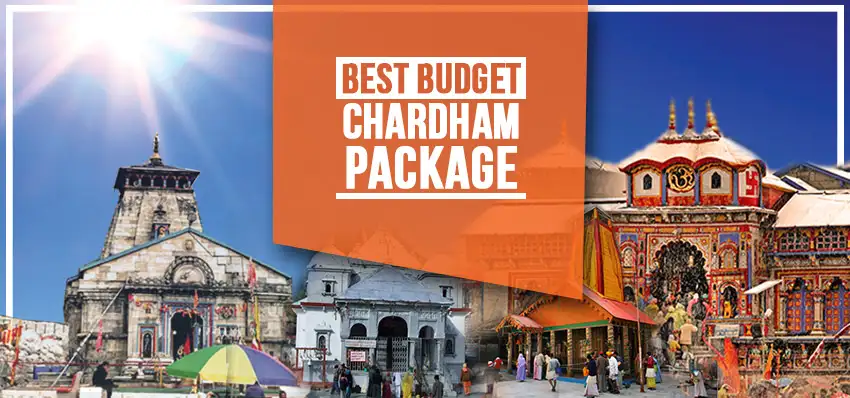
Kedarnath in Winters
During Winters starting from the month of of November, there is heavy snowfall in Kedarnath and all the routes are closed. The shrine is also closed for 6 months. The holy statue of Lord Shiva, is shifted from Garhwal (Kedarkhand) to Ukhimath , and is reinstated at Kedarnath, in the first week of May. It is at this time, that the doors of the temple are thrown open to pilgrims, who gather from all parts of India, for a holy pilgrimage. The shrine closes on the week of Kartik, on the day of Bhai Dooj (October-November) and reopens after Akshay Tritya (April-May) every year. During its closure the shrine is submerged in snow and worship is performed at Ukhimath.

Kedarnath Opening Ceremony
Faqs for kedarnath opening and closing dates, what is the opening date of kedarnath dham.
The opening date of Kedarnath Dham in 2024, scheduled for May 10th, marks the commencement of the pilgrimage season, inviting devotees to embark on a sacred journey. This revered Hindu temple nestled in the Himalayas holds profound significance, symbolizing spiritual devotion and cultural heritage for worshippers worldwide.
What is the closing date of Kedarnath Dham?
The closing date of Kedarnath Dham in 2024, set for November 2nd, signifies the culmination of the annual pilgrimage season, a pivotal moment for devotees and the sacred site alike. As worshippers bid farewell, they reflect on their spiritual journey and seek blessings for the path ahead, while the tranquil Himalayan surroundings reclaim their serene presence until the pilgrimage resumes anew in the following year.
On which day is the opening date of Kedarnath Dham declared?
The opening date of Kedarnath Dham is declared on Maha Shivaratri every year.
On which day is the closing date of Kedarnath Dham declared?
The closing date of Kedarnath Dham is declared on Vijaydashmi every year.
Who decides the opening and closing dates of Kedarnath Dham?
The opening and closing dates of Kedarnath Dham are decided by the priest after the calculation of the Panchang.
Which is the best time to visit Kedarnath Dham?
The best time to visit Kedarnath Dham is during the month of April-May when the temple opens and during September and October when the crowd is lesser.
Where is Kedarnath Dham located?
Kedarnath Dham is located in the Rudraprayag District of Uttarakhand.
For how many months will the doors of Kedarnath Dham remain open?
The doors of Kedarnath Dham remain open for six months during the summer and monsoon seasons.
For how many months will the doors of Kedarnath Dham remain closed?
The doors of Kedarnath Dham remain closed for six months during the winter season, as there is a lot of snowfall and the temple remains covered with snow.
What is the Bus Fare from Delhi to Kedarnath?
The bus fare from Delhi to Kedarnath ranges from Rs 1000 to 1500.
What are the ways to reach Kedarnath Dham?
The different ways to reach Kedarnath Dham are:
By Bus: The first and most used way to reach Kedarnath Dham is by bus, as this is the cheapest way to reach Kedarnath Dham. Buses to Kedarnath Dham are available from Rishikesh, Haridwar, Srinagar, and other locations as well.
By Flight: People from faraway locations coming to Kedarnath Dham can reach Kedarnath Dham by flight. The nearest airport to Kedarnath Dham is Jolly Grant Airport in Dehradun, which is approximately 225 kilometres away. There are Charter Heli Services provided by various companies to Kedarnath from Sahatradhara Helidrome.
By Helicopter: Helicopter services are also available for Kedarnath Dham. Different private and government agencies offer helicopter services to Kedarnath Dham .
By Train: Pilgrims can also reach Kedarnath Dham by train. The nearest railway station to Kedarnath Dham is Rishikesh Railway Station, located approximately 205 km from Kedarnath Dham.
What are the famous nearby destinations to visit from Kedarnath Dham?
The famous destinations to visit near Kedarnath Dham include Vasuki Tal Lake, Guptkashi, Chopta, Tungnath, Chandrashila Trek, Augustmuni, Gaurikund, and others.
Is accommodation facilities available near Kedarnath Dham?
Yes, accommodation facilities are available near Kedarnath Dham. Various hotels, homestays, and resorts are available in Kedarnath Dham for accommodation.
Add Comments and Suggestions or Ask Questions about "Kedarnath Opening and Closing Dates "
We would be glad if you can comment below and provide your valuable suggestions and feedback on Kedarnath Opening and Closing Dates. If this Kedarnath Opening and Closing Dates page have any wrong information/list or out of context content, then you can report us as well.
If you have any questions, you can also ask as in the following comments section. Our team will try to provide you answers/solutions.
mujhe pta krna hai september main path khule milynge kya
Will temple closed in between from 6am to 9 pm
हम्म 5 अप्रैल को केदारनाथ की यात्रा करना चाहता हु हमें शहि राय दे कृपया करके
May 10 taarikh ko mandir khulega toh baraf (ice) hoga ki nehi waha pe ??
HUM BHI GRUOP ME 21 AUGUST KO KEDARNATH DHAM JA RAHE HE KYA AAP BATAYENGE KI US VAKT MANDIR YA MANDIR JANE KA RASTA BAND TO NHI RAHEGANA
Kedarnath mandir mai aarti ka subha or sham dono ka samya
Kya 18 February ko Shri kedarnath dham open rhega
फरवरी महाशिवरात्रि के लिए केदारनाथ मंदिर कितने दिनों के लिए कुलेगी फुरवरी 18-2023 में आना रहा
जय श्री केदार नाथ धाम भोले नाथ जल्दी बुला लो प्रभु 🥲🙏🚩
केदारनाथ मंदिर कब खुलेगा हमारा आने का प्लान बना है 30 मार्च को 2023 7 8 जण है
जनवरी में मंदिर खुला रहेगा या नही
26 April ko kualega mahakal Ji
नहीं अप्रैल या मई में खुलेगा
Hum smapan me shamil ho sakte h ya diwapli pr dershan ho sakte h
जनवरी में बाबा का द्वार कुला है क्या में जाने वाला हूं
Hum 5 to 7 log baba ke Darshan ke liya jana chate hai but kuch log bol rahe hai ki is time waha bhut barish ho rahi hai or thand bhi bhut hai to kya hum 30 sep to 5 Oct ko kedarnath mandir ja sakte hai please reply
Haan ja sakte hain .. kuch Garam kapde saath rakh lena
We 2 friends were planning for a long time to visit Kedarnath with Bikes and now our plan was fixed from 12 Aug to 15 Aug, And everyone is saying that it rains a lot at this time, so please suggest can we visit kedarnath in these days. Please let me know as soon as possible because 12 Aug is not far as its already 9 Aug today
Chardham Roads are prone to landslides now a days due to rains. But nothing is impossible. You can ride to Kedarnath with some precautions.
Kedarnath temple Darshan time and closing time
30 march 2022 in kedarnath ,is kedarnath temple open in march
I want to celebrate mahashivratri I.e 30 march 2022 in kedarnath ,is kedarnath temple open in march
Can we do darshan kedarnath Temple after 31 December 1/1/2022
can we do darshan Kedarnath Temple After 31 July
sir we will plan to go kedarnath & chardham yatra on 27th Aug 2021 , but now temple is open ?
I am planning to go kedarnath with my friends on 4 july 2021 Is it open in this lockdown can we do a darshan of temple? Please help me out
SIR, CAN I VISIT CHAR DHAM AND DO DARSHAN OF KEDARNATH AND BADRINATH DHAM ON 17/6/2021. I’ M FROM GURGAON HARYANA.
IS THERE ANY TERMS AND CONDITION FOR VISITORS WHICH I NEED TO FOLLOW
SIR KYA MANIDR IS TIME OPEN H KYA ME DELHI SE VISIT KRUGAAA TO AP EK BHR BHTAAA DETE
I am from Kolkata Mujhe a jana hai ki Kedarnath Mandir abhi Khula Hai Ki Nahin please help me
I am planing to go kedarnath with my friends on 30 june 2021 Is it open in this lockdown can we do a darshan of temple? Please help me out
we are plaining in 1st week of july, yatra chl rhi hai ya bnd krdi yhi hai due to covid
we are from mumbai can we visit in 1st week of june for kedarnath darshan
Kedarnath k darshan bhar se honge ya andr aabhi hum plan bna rhe the aane ka or kya kya chahie vha aane k liye.?
I’m planning solo trip to kedarnath & explore offbeat towns in uttarakhand
Can we do darshan of lord shiva after may 17th
Yes, sure ..
Is it Kedarnath opens on 17th may no it’s confirm or it may change due to corona
just confirm the date mandir is Open to 10th April
If I want to visit kedarnath just for trekking purposes, will the paths be open during the month of March-April?
I want to celebrate mahashivratri I.e 11 march 2021 in kedarnath ,is kedarnath temple open in march
No, Kedarnath Temple will open in May 2021 …
Sir we are planning to go Kedarnath 06 Nov . Can we worship and darshan there that day. Plz reply to me..
Aacha yadi hm idhr feb – march me gai to kya mandir ka darsan nhi ho paiga
Mandir k darshan bahar se honge, kapat band rehte hain …
Iam planning to visit kedarnath in first week of may 2021 is it open now
Hi Pavan, Kedarnath Temple will open on May 2021
I m planning to visit kedarnath on 21st april is it open on that date
Hi Utsav, Kedarnath Temple will open on May 2021
I m planning to visit kedarnath in last week of Feb 2021 Is it open now??
No, Kedarnath Temple will open on May 2021
No.. shri kedarnath mandir will be open in may mid…
Kedarnath ke kapat 15 may ko open honge
I m planning kedarnath temple. But kedarnath opening date 15 may 2021 confarm
2021 me baba k pat kab khulenge?
is tracking open now days at kedarnath ?
How to book a Ashram / hotel at Kedarnath dham ?? Plz suggest some hotels aur Ashram?
Wha pe pass me ek village wha mil skta h bs 1km ki dori pe
Hotel book karne ki jarurat nahi padti vaha pe GMVN ke tent hai unka rate rs 300 per hade hai, vo 4pm ke pehele book karna padta hai our vaha GMVN ka Aanapurna Restaurant hai rs 200 only
भगवान केदारनाथ मंदिर चालू है अभी या नही
it is open now we will plan to visit in in next month ending
Is it possible to visit kedarnath in month 24 December 2020
1)We are thinking to go kedarnath in the month of September..will the gates remains open during this time please help me..
2) if we go during MAY month will the snow will be there atleast little bit…please help me sir We are confused
Thanks Sachin r s
1. Yes gate remain open in september. Also it is the best time to travel because max. people travel in may and june, so rush is more which minimise facility. 2. In june first week you will get to see snow during trekking to kedarnath at 2 to 3 spot. you will pass in snow also.
Yes it will b closed on 16 Nov post bhaiya dooj
yes little a bits snow fall in may month
Hi, This is Asutos from Bangalore. We are 7-8 peoples planning to visit kedarnath and Badrinath Dham in the month of last week of May 2019. Could you please help me how we can plan like where to do all the registrations, where to stay, what are the price for the tent house, helicopter charges etc?
Thanks Asutos
Hi Nikhil, Kedarnath Temple will open from 09th May, so the trek route will open for pilgrims from then only.
Sir, My wife is mild asthma patient, if we go by ponny in kedarnath and stayed there at night in kedarnath, will it be create any problem in night and in emergency what measures are taken by kedarnath health camp for breathing problem if occured.
Dear Kaushik, as Kedarnath is located in high altitude and there is always lesser oxygen levels. Mild asthama patient will not have serious problem. There are medical camps for providing first aid etc, but take a compact oxygen cylinder with you for precaution. Also in case of emergency, contact nearest medical camp.
Hi Ravibabu, Kedarnath Kapats will be open in April-May month, exact dates will be declared on 4th March on the day of Mahashivratri. You could follow our fb page https://www.facebook.com/sacredyatra for up to date details.
Vishal, l am planning to visit kedarnath temple in May 15th ya 20th please tell me that time temple will be open.
Is it is possible to visit Kedarnadth temple in the month of February…
Planning a Trip? Confirm Your Booking Below
Easy steps to book char dham package.
We will analyze your requirements & find best Char Dham travel agents/operators whose expertise matches your travel request.
2. Get upto 3 quotes in your MAILBOX
Get contacted by upto 3 selected Char Dham travel agents/operators. They will provide you the best Char Dham itinerary option according to your budget.
3. Choose Best Travel PLAN
Choose best option among them & enjoy the trip. Give us your feedback

Destinations
Char dham yatra packages.
- Char Dham Packages
- Chardham Helicopter Packages
- Do Dham Packages
- Teen Dham Tours
- Badrinath Packages
- Kedarnath Packages
- Gangotri Packages
- Yamunotri Packages
- Chardham Leisure Hotels
- Fixed Departure Tours
- Winter Chardham Packages
- Hemkund Tours
Char Dham Hotels
- Chardham Hotels
- Hotels in Badrinath
- Hotels in Kedarnath
- Hotels in Gangotri
- Hotels in Yamunotri
- Hotels in Barkot
- Hotels in Joshimath
- Hotels in Auli
- Hotels in Srinagar
- Hotels in Devprayag
- Hotels in Guptkashi
- Hotels in Harsil
- Hotels in Ukhimath
- Hotels in Uttarkashi
- Hanumanchatti
- Rudraprayag
- Sayanachatti
- Srinagar Garhwal
- Karanprayag
- Jankichatti
Get Tour Details
- Chardham by Helicopter
- Chardham by Road
- Chardham Temples
- About Chardham
- Opening/ Closing Dates
- Chardham Registration
- 4 Dhams Weather
- News/Update

COMMENTS
Kedarnath Trek Distance and Time. The distance of the Kedarnath Trek is around 16 km (one way) from Gaurikund to Kedarnath Temple. The trek can be completed in a minimum of 2 days, with a one-night halt at Kedarnath, or it can be completed in a single day by experienced trekkers. The trek from Gaurikund to Kedarnath takes around 6-7 hours to ...
Short itinerary of Kedarnath Trek. Day 1 Drive from Haridwar via Rishikesh to Guptkashi/ Sonprayag 202 km by taxi (1982 m overnight stay hotel. Day 2 Early Morning 3:00 am Drive from Guptkashi/ Sonprayag to Gaurikund same day trek to Kedarnath temple 15 km (8/9 hours) (3553 m) overnight stay Hotel/Dormantory.
The Ultimate Guide to the Kedarnath Trek. admin February 7, 2024 0. Nestled amidst the majestic peaks of the Garhwal Himalayas, the Kedarnath Trek stands as a testament to spiritual devotion and unparalleled natural beauty. Spanning across rugged terrains and breathtaking landscapes, this trek is not just a physical journey but a soul-stirring ...
The new route, outlined below, serves as your comprehensive travel guide for the Kedarnath trek. 1. Gaurikund: To commence this memorable journey, one must first reach Gaurikund. This preliminary step involves a shared taxi ride of approximately 6 km from Sonprayag.
Travel from Guptkashi (Altitude 1,319 m) to Gaurikund (Altitude 1982 m) and then Trek to Kedarnath (Altitude 3583 m) Altitude: 1,319 m to 1982 m to 3583 m Distance: By Road - 15.3 km & Trek - 14 km Duration: By Road - 1 hr 12 min & Trek - 6 hours Start your morning with a delicious breakfast and feel energized to start the most important day of your trekking tour when you will finally trek to ...
The Kedarnath Trek is a moderate to difficult 18-kilometer trek that necessitates a reasonable level of physical fitness. Ideally, you should be starting the trek at around 4:30 a.m. so you can finish it by 2pm. Since Kedarnath is located within the Kedarnath Wildlife Sanctuary, visitors are not authorised to visit at any time.
The Kedarnath trek route starts from Gaurikund and concludes at Kedarnath covering a distance of 16km. The trekking route had changed and rebuilt after the flash floods of 2013. The old trekking route has now given way to a better and wider trekking trail. Kedarnath Trek Starts. The trek starts at Gaurikund.
Day 1: Departure from Delhi, reaching Gaurikund by evening for an overnight stay. Day 2: Trek from Gaurikund to Kedarnath, visiting the temple and exploring the surroundings before retiring for the night. Day 3: Return trek from Kedarnath to Gaurikund, followed by the journey back to Delhi.
Vasuki Tal - Kedarnath Trek Via Mayali Pass, Masar Tal - Painya Tal and Khatling Glacier. Vasuki Tal, at an altitude of 4800 meters, has been a cynosure of trekkers eyes since the time immemorial. The divine lake even lured the Devtas and celestial nymphs who came here to procure the magical waters. The lake is cocooned amidst the rugged ...
While going on a trek, you should carry essential items like a rucksack bag with a rain cover, a day bag pack, a torch, spare batteries, and UV protection sunglasses. Furthermore, you can keep a pair of slippers and high-ankle trekking shoes. In addition to this, track pants, woollen socks, full sleeves t-shirts are also suggested.
Kedarnath Dham Travel Guide. Kedarnath temple is a part of Char Dhams and Panch Kedar in Uttarakhand and one of the 12 Jyotirlingas of Lord Shiva in India.The historical name of this region is "Kedar Khand".Visit to Kedarnath Dham is considered to be very auspicious and most important in the Char Dham Yatra circuit.. Kedarnath is flanked by breathtaking snow-capped peaks, making it the most ...
Kapat is open now for darshan. ... The Kedarnath trek located within the Kedarnath Wildlife Sanctuary, a 16-km route from Gaurikund to Kedarnath temple, is the most popular here. The trail meanders through forest-covered mountains, glaciers and is criss-crossed by numerous waterfalls. It is a medium to steep trek.
Rudraprayag - Rishikesh - Delhi. In the morning after breakfast drive to Rishikesh and from here catch AC Volvo bus for Delhi at 13:00 hrs. Arrival at Delhi by 19:00 hrs. Kedarnath Trek is one of the most popular religious trekking trails in Garhwal Uttarakhand, Himalayas. Get detailed Kedarnath Trek trekking itinerary, trekking route and best ...
The overall trekking route for Kedarnath Dham pans over a distance of 16 kms and covering this requires the person to be extremely fit and maintain a good physical fitness level. It is advised for the pilgrims to get themselves medically checked at least 1 or 2 months prior to the commencement of the trek. It is important for the Yatris to know ...
DM Rudraprayag has given order to follow the new trek timings to Kedarnath. Now trek route will have fix timing for pilgrims visiting Kedarnath Dham. Administration is making sure that pilgrim will not face any issue with it. Any pilgrims will not be allowed to leave for Kedarnath from Sonprayag after 01:00 pm and Gaurikund after 01:30 pm.
Though Kedarnath trek is known to be very difficult, however, with a well-planned Kedarnath Travel Guide, you can complete it at ease. Shrine Yatra offers you the opportunity to avail a specially curated trek guide to Kedarnath only for you. ... pay securely now. Pay online Pay throught UPI. R-112,East vinod nagar,delhi-110091. 17, Poonam Sagar ...
Kedarnath Trek, Rishikesh - Kedarnath Yatra Package including Stay, Meals, Experienced guide, Support Staff, ... Now, the trek may be slightly more challenging than before, but make a firm resolution not to be defeated in the increased difficulty. Surrounded by the steadfast Kedarnath Dome (6,831 m) ...
Kedarnath trek distance is now 16 kilometers, changed from 20 kilometers due to a route alteration after the 2013 flood disaster. So, gear up for an incredible adventure and spiritual journey to Kedarnath. Enjoy the experience and the beauty as it unfolds. Safe travels and meaningful explorations await you!
Here is an ideal itinerary that you can use as a guideline: Day 1: Arrival in Haridwar or Rishikesh. Day 2: Drive from Haridwar or Rishikesh to Gaurikund (8-9 hours) Day 3: Trek from Gaurikund to Kedarnath (16 km, 6-7 hours) Day 4: Explore Kedarnath and acclimatization. Day 5: Trek from Kedarnath to Gaurikund (16 km, 4-5 hours)
With 15 years of experience, Trek the Himalayas ensures an unforgettable trekking experience in India's most stunning landscapes. Discover the Kedarkantha Peak Trek, a top winter adventure. Enjoy stunning snow-capped peaks and peaceful campsites, perfect for all trekkers. Book now.
Around 200 trekkers will trek from 6 newly developed Trekking Routes for Kedarnath from October 3 and will reach to Kedarnath using these different routes. ... "The number of trekkers are now growing further from 200 as locals are also joining. ... However four physical challenged, researchers and doctors have been put to regular trek of ...
The closing date of Kedarnath is fixed on the day of Bhai Dooj after the Diwali festival around November. The opening and closing dates of the Kedarnath Temple in Char Dham Yatra 2024 are as follows: Opening Date. April 2024 at 6:20 AM (Morning) Closing Date. 03 Nov 2024 (Eve of Bhaiya Dooj)
The date of opening of doors of Kedarnath Dham for the year 2024 has been announced on Mahashivratri. The closing date of Kedarnath is fixed i.e 2 days after Diwali when Bhai Dooj is celebrated i.e on 03 Nov 2024. Kedarnath temple has been closed for winter after Pooja archana in morning and reopened on 10 May 2024.